Planetary scientists have published a detailed follow-up on the debris from their historic 2022 asteroid impact experiment in outer space. What they found challenges their understanding of the asteroid's behavior since the impact. Two tight clusters of boulders have veered off from the main zone of debris at very high velocities.
Those boulders have escaped the asteroid system and are now orbiting the Sun. It's unclear where on the asteroid they came from, why they're moving so differently from the rest of the debris, or what they mean for the long-term course of the asteroid.
A historic asteroid deflection test
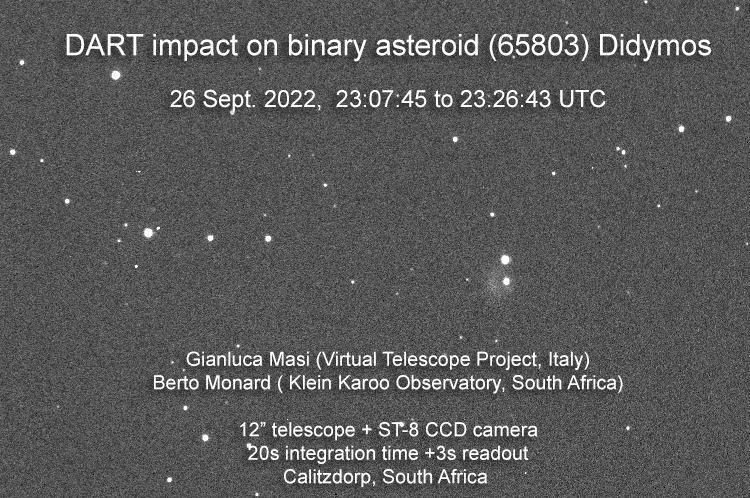
In 2022, NASA live-streamed one of the most daring missions in its history. The Double Asteroid Redirection Test, or DART, sought to change the orbit of an asteroid by slamming into it with a spacecraft. The challenge was enormous. The size of the target asteroid -- named Dimorphos -- in the night sky is akin to a single atom held at arm's length.
The team behind DART knew they might be live-streaming their spacecraft missing the asteroid. But in an era of misinformation, conspiracy theories, and apocalyptic panic, they wanted the public to have transparency every step of the way.
Their gamble paid off. The DART spacecraft knocked smack into Dimorphos. NASA proved that in the event that a killer asteroid is heading towards Earth, we can knock it out of the way.
Strange boulders

DART was proof to the public that planetary scientists can keep them safe, but first and foremost, it was a scientific experiment. Simulating asteroid impacts on a computer doesn't compare to the real thing, especially when there are so many things about asteroids we don't know. They can be as chemically and topologically variable as terrestrial geology, and their tiny size makes observing them challenging.
So, to protect Earth from a hazardous asteroid, planetary scientists have mined every aspect of the DART mission for pieces of the puzzle. The new boulder tracking study, published this month in the Planetary Science Journal, uses images taken by an ESA spacecraft called LICIACube that accompanied DART.
The researchers found that two main groups of boulders veered off from Dimorphos in the minutes after impact. Many of them aren't following the main cloud of debris, and have such high velocities that they can escape the asteroid system.
The team's top theory is that these boulders are the fractured remnants of larger rock formations right next to the impact site. Since they were already loose, the spacecraft easily dislodged them before reducing them to smithereens.
Boulders mean orbital calculations might be off
None of these boulders is anywhere near large enough to threaten life on Earth. If they happened to head towards us, they would vaporize upon atmospheric entry, treating us to a spectacular meteor shower. But they are massive enough that, without accounting for them, planetary scientists may have been miscalculating Dimorphos' new orbit.
The theory of rubble and impacts has to catch up to the observations. How can we predict what kinds of debris will form from striking an asteroid? How much momentum do boulders account for? How do we figure out how boulder-prone an asteroid is before we get there? We need to understand all of this so we don't miscalculate how to strike an asteroid.
DART means that we get to figure this out now, rather than when the Earth is on the line.
The international team of astrophysicists behind the world's three gravitational wave detectors just submitted a paper analyzing a uniquely strong gravitational wave from 2023. Caused by merging black holes, this gravitational wave is unusual for more than just its strength. The team's best models suggest that at least one, if not both, of the black holes shouldn't exist.

The black hole "mass gap"
Most large black holes are created when massive stars jettison their outer layers. The iron core, no longer supported against gravity, collapses in on itself and forms a black hole. But this kind of supernova only works for stars up to about 130 times the mass of the Sun.
Above that, astronomers theorize that a new type of supernova takes over. The light the star generates in its core doesn't manage to exit the star itself. Instead, many of the photons are so energetic that they create extra particles when they hit atoms at the right angle. That means that the pressure of light holding up the star vanishes. With its only defense against gravity gone, the star begins to collapse, triggering a massive thermonuclear explosion that vaporizes it entirely. Nothing remains, not even a black hole.
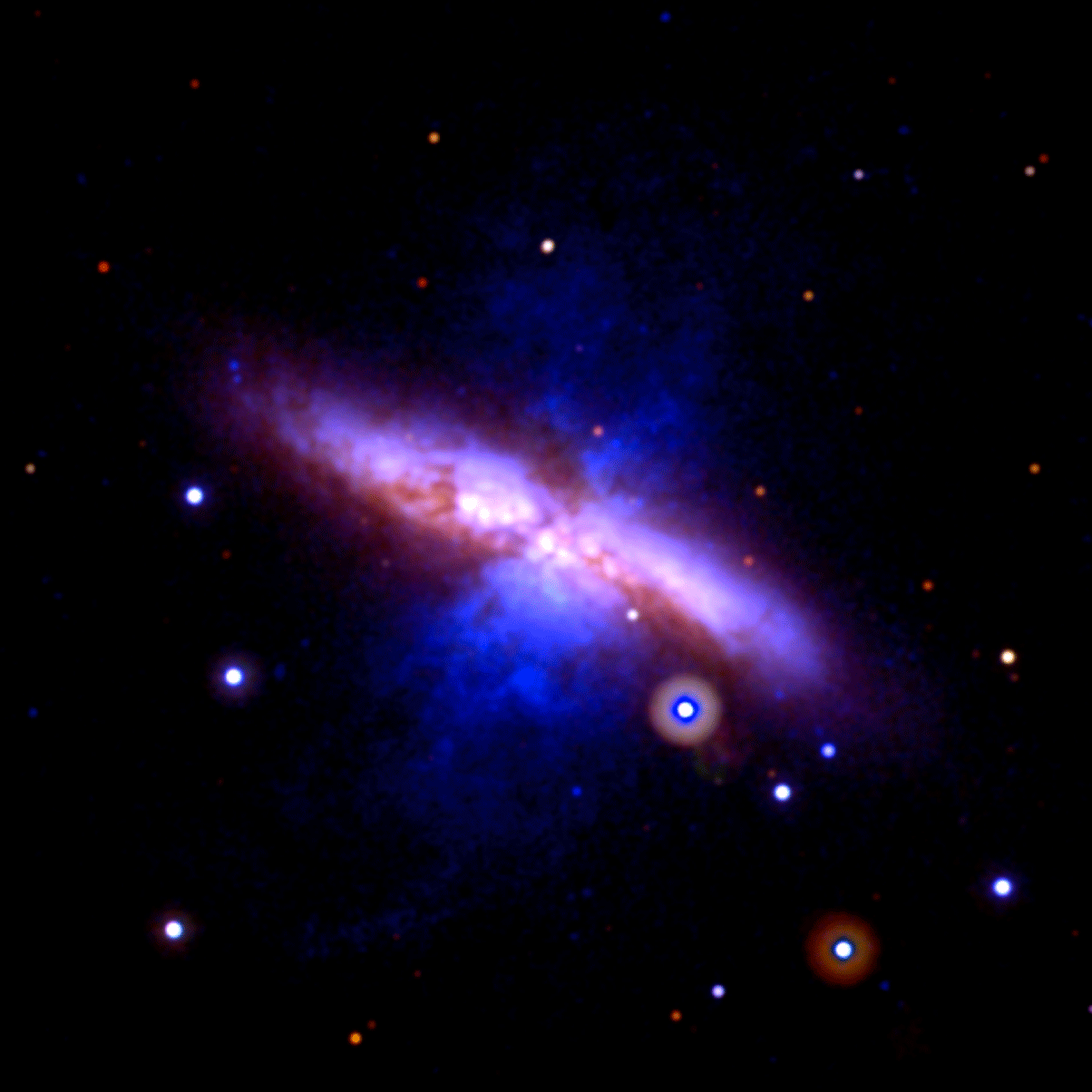
Astronomers have yet to confirm this kind of "pair instability supernova" actually exists, although simulations suggest it does. There are also several candidate pair instability supernovae observations, but further study is needed to confirm them. On balance, though, pair instability supernovae are a well-supported theory of stellar evolution. They imply that stars can't create black holes above 64 times the mass of the Sun and below about 130 times the mass of the Sun. After that, a new kind of supernova takes over and can produce black holes once more.
But the best models of the 2023 gravitational wave predict two black holes of 103 and 137 times the mass of the sun. The error bars on these measurements are sizable, but still place the lighter black hole firmly in the mass gap, while the heavier one is either in or above it.
These are also the heaviest reliable black hole measurements to come out of the LIGO collaboration.
Spinning black holes create gravitational waves
Gravitational waves occur when massive objects accelerate, rippling spacetime in their path. Black holes spinning together in the final moments before their collision create the most powerful gravitational waves.
Earth-bound systems of lasers, able to detect changes in distance of only 1/10,000th the size of a proton, go after this class. The Laser Interferometer Gravitational-Wave Observatory (LIGO) detected its first gravitational wave in 2015, finally confirming their existence.

The many possibilities for formation
The research team found one other clue to the history of this strange black hole system. Each of the black holes is spinning much faster than usual. Any explanation for how this system formed has to explain that as well.
It's possible that there are toggles on stellar evolution, such as exact nuclear reaction rates at high densities, that change the range of the mass gap. But that doesn't explain the high spin rates. The theory of two stars combining to create each black hole has the same issue.
One explanation that accounts for the spin rates is that one or both of the black holes are the remnants of previous black hole mergers, rather than a collapsing star. Although this requires exotic star cluster conditions, the universe is filled with those. (The research team favors this explanation.)
The colliding objects could also be primordial black holes, a predicted population of black holes formed during the dense stages of the early universe. Primordial black holes don't have any mass gaps, but they are also far more theoretical than pair instability supernovae.
In 2035, the European Space Agency plans to launch the Laser Interferometer Space Antenna, or LISA. LISA will probe a different regime of gravitational waves from the Earth-based detectors like LIGO. In doing so, it will add a host of strange new black holes to the canon.

A team of genetics researchers has sequenced the genomes of Greenland sled dogs, or qimmeq (plural qimmit), both living and dead. Their results shed light on both the development of this breed and Greenland's murky human history.
Qimmit are the oldest dog breed, and the Greenland government takes their genetic conservation seriously: no other dogs are allowed above the Arctic Circle. But interbreeding is not the only threat to their survival.
Qimmit are tough, working dogs, and they regularly injure or even kill humans, particularly children. For a long time, their usefulness outweighed any danger; they were a vital part of Arctic travel, and their intense pack-bonding and high drive were a feature, not a bug. But snowmobiles have changed everything. In 2002, there were around 25,000 qimmit in Greenland. In 2020, there were only 13,000.
New research, published in the journal Science, began as a quest to preserve the genetic information of the qimmeq before it's too late.
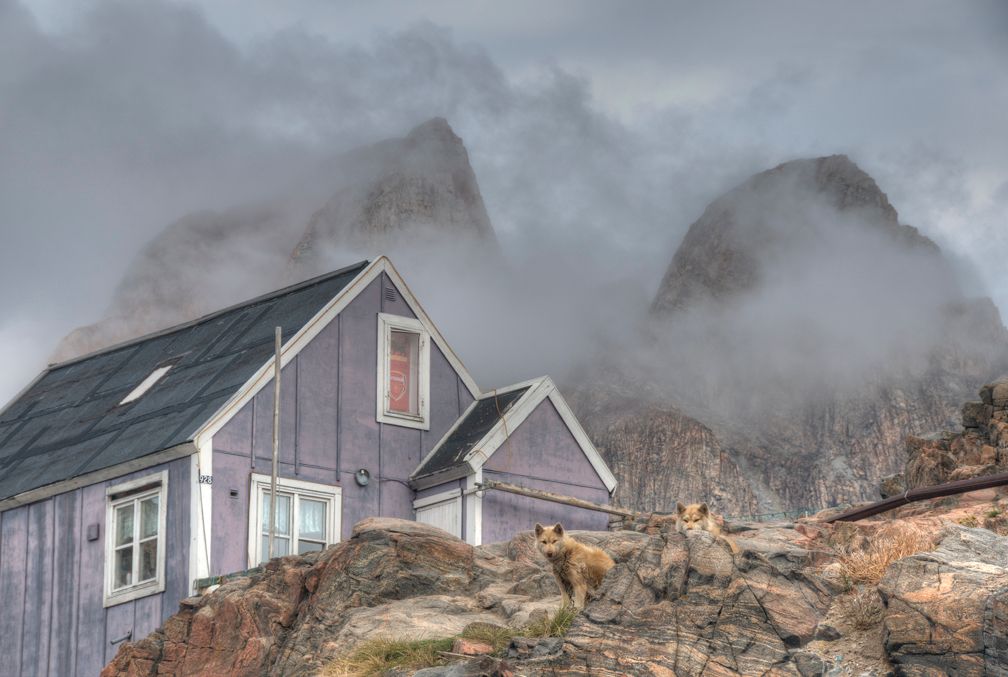
Qimmeq DNA challenges timeline of Greenlandic settlement
Traditional scholarship places the Inuit settlement of Greenland at about 1200 CE. They would have joined the preexisting Dorset culture, which dropped out of the archaeological record several centuries later, as well as the Norse.
The Norse first ventured to Greenland in 985, when Erik the Red made contact with the "Skraelings" of the southeastern coast. They maintained a presence on the island until sometime in the 15th century. In the 18th century, Denmark embarked on a mission to recolonize Greenland, although first they had to find it again. Greenland has remained a Danish colony since.
By analyzing the remains of qimmit before Danish colonization, the team of geneticists challenged this narrative. Their models suggest that qimmit diverged from earlier species of sled dog 1,164 years ago -- over a hundred years before Erik the Red's arrival. In the centuries afterward, different regional variations diverged from one another within Greenland.
Either the qimmit were migrating on their own, or the Inuit arrived in Greenland much earlier than previously thought.
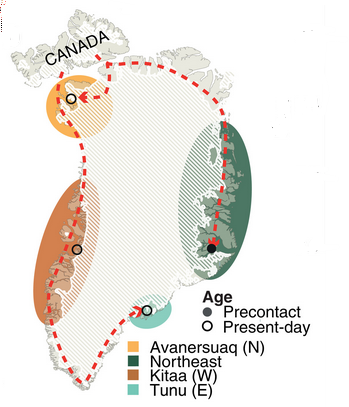
Where did the first Greenlandic Inuit come from?
Another interesting facet of the new research is the qimmeq's closest genetic relative. Rather than a modern husky or samoyed, qimmit shares the most DNA with the remnants of a dog from Alaska. Found near Teshekpuk Lake, this dog was alive about 3,700 years ago.
Finding the most similar genetics in Alaska rather than in Canada indicates that the ancestors of the Inuit moved rapidly from Alaska toward the eastern coast of Canada. The next closest relative of the qimmeq is a 4,000-year-old dog from Port-au-Choix in Newfoundland and Labrador.

The shadowy history of northeastern Greenland
The dogs' DNA also adds to the scant archaeological record of northeastern Greenland.
In 1823, an up-and-coming captain in the British Navy named Douglas Clavering received an assignment: to escort his friend, astronomer Edward Sabine, to the Arctic Circle. Sabine, a veteran of both the Ross and Parry Arctic expeditions, was engaged in a quest to measure the shape of the Earth using a pendulum. The period of a pendulum depends on gravity. Therefore, if the Earth bulges at the equator, the pendulum will have different periods at different latitudes.
But while engaged in his scientific ventures, Clavering twice encountered the same group of 12 Inuit. This was the last time any Inuit were confirmed to live in the northeast of Greenland before resettlement in the 19th century.
Oral history preserves stories of Inuit migration toward the southeastern coast of Greenland from the north over multiple centuries before Clavering's encounter. But the motives of this migration, along with when exactly the Inuit finally vacated the northeast, are unclear.
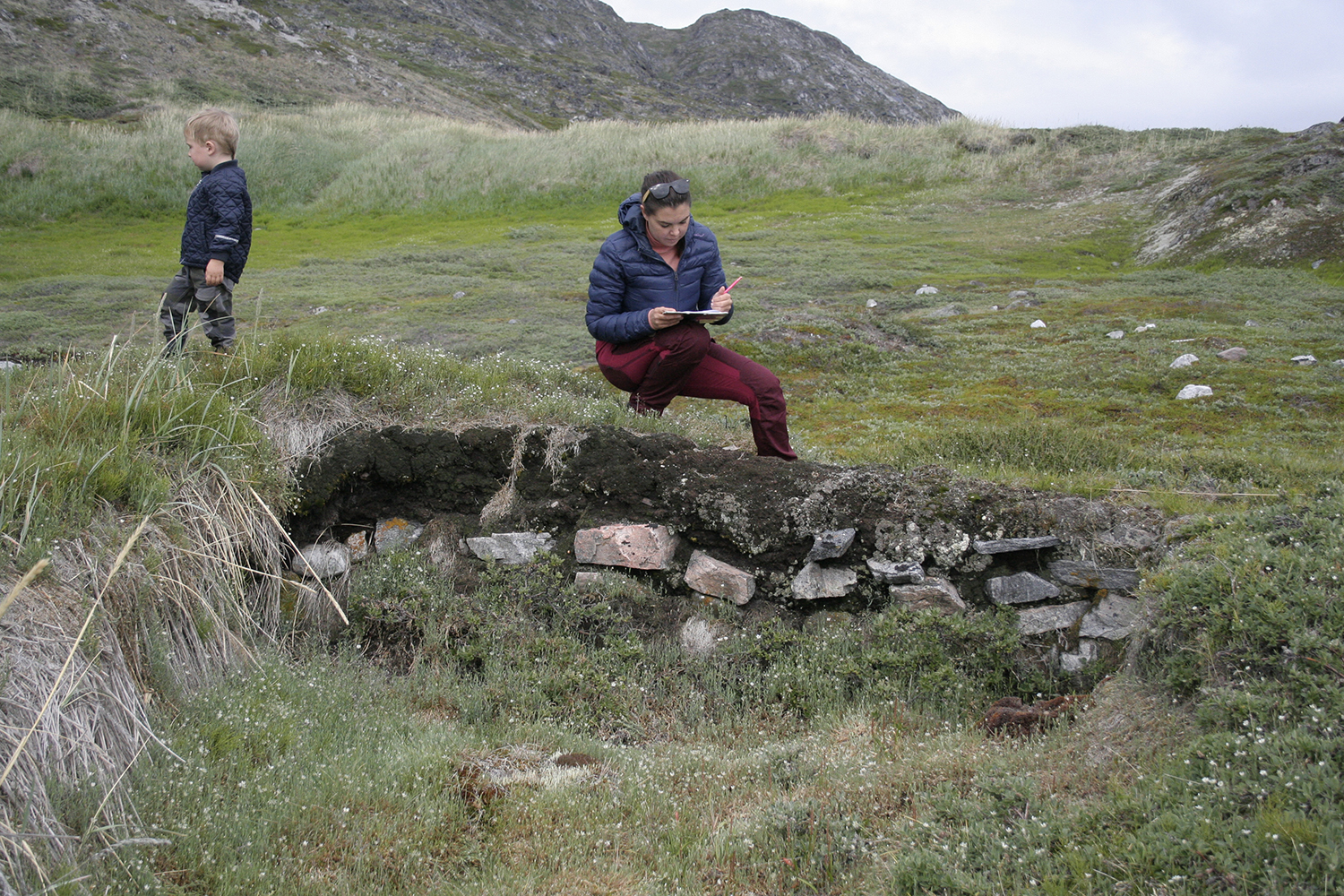
Clues from Qimmeq DNA
The new research places the first concrete estimate on the settlement of northeast Greenland: 1,146 years ago. This suggests that the Inuit settlers of Greenland moved from the northwest to the northeast within only a generation or two.
The pre-Danish northeastern qimmit is the most distinct regional population by far. Despite the rapid settlement of the northeast, once they were there, the northeastern Inuit didn't seem to intermingle with other communities in Greenland. Trade networks connected the whole west coast, but qimmit DNA suggests they did not venture east.
This supports one particular theory of the abandonment of the northeast: isolation. Archaeologists have suggested that among the many challenges faced by inhabitants of the northeast, the death knell may have been the nigh-insurmountable distance between their villages and any other communities. When the Little Ice Age struck in the early modern era, they would have had no allies. Migration may have been their only chance of survival.
A new tool for human history
In the absence of a historical record, the genetic analysis of companion animals can trace human migrations. Qimmit present a unique case because of their genetic preservation to the modern day.
Outside of Greenland, many dog breeds face serious genetic ailments because of inbreeding. Several breeds are now unable to give live birth. Meanwhile, the qimmeq has stayed healthy despite modern, artificial isolation and over a thousand years of natural isolation. This is a testament to the care with which its human companions have treated it for over a millennium.
A new competition dedicated to aerial photography has just released its winners. With a $5,000 cash prize for first place and publication of the top 101 images in a hardcover book, the International Aerial Photographer of the Year award attracted strong submissions from around the world.
The directors, who previously ran the International Landscape Photographer of the Year award, kept eligibility loose. Aerial photography can be taken from a drone, a mountaintop, or anything else (other than via AI).
Overall winner
Joanna Steidle, a New York-based drone photographer, took the inaugural first-place prize. Her work focuses on dramatic aerial seascapes and fauna interactions. With their recurring teals and silvers, the photographs she submitted to Aerial Photographer of the Year all feel like different pieces from the same overall work of art.
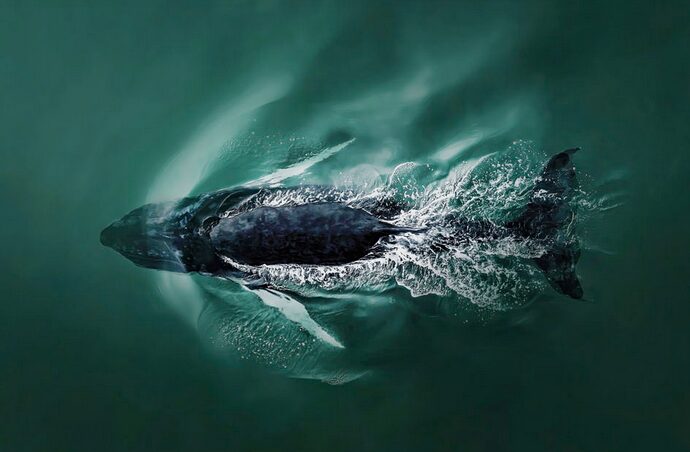

Icelandic volcanoes take second place
Daniel Vine Garcia of Spain brought home second place with his photographs of Icelandic volcanism. The color scheme of his work stands in stark contrast to Steidle's. Where in her photos, water smooths out the frame, Garcia's images feature stark contrasts between rock and magma.

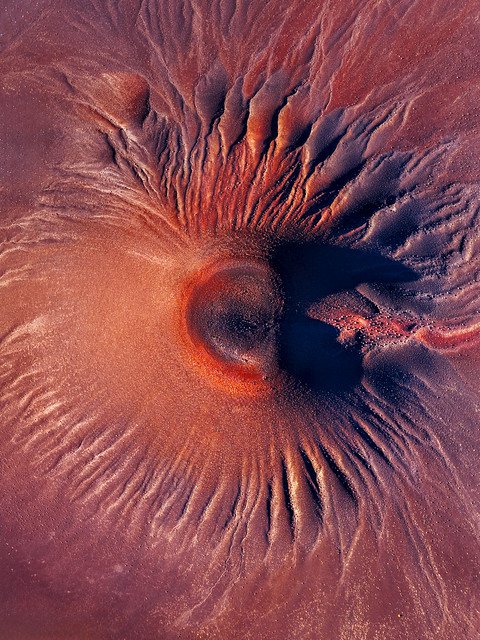
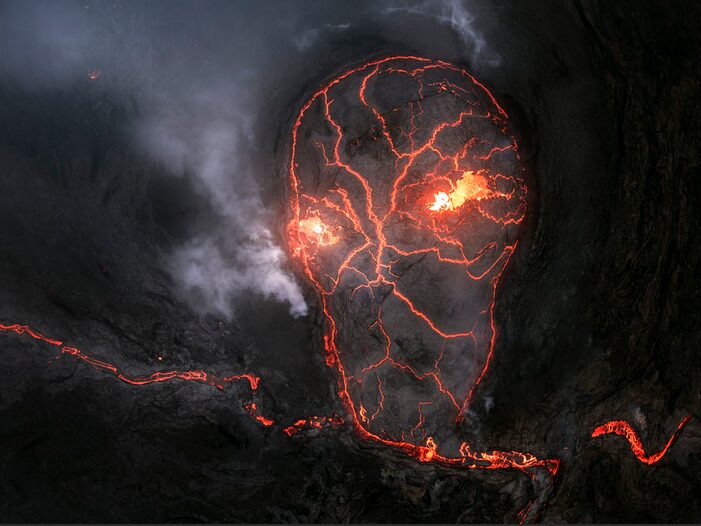
Third place
While Steidle and Garcia both won for bodies of work focusing on the same landscape features, the third-place winner submitted more varied landscapes. American David Swindler's work ranges from ice encrusting a fractal plateau to...
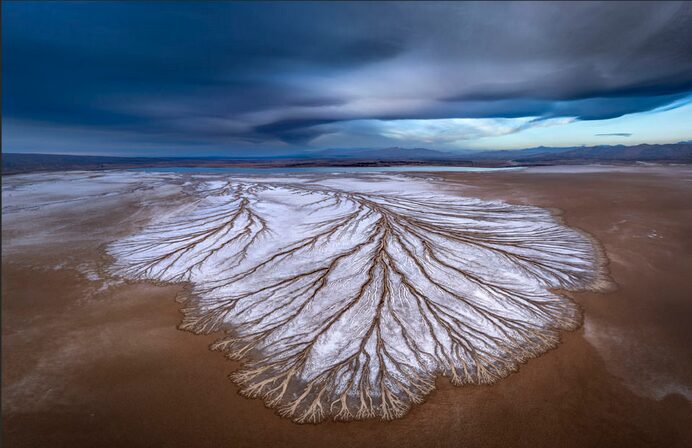
...to wading birds in the shallows...

...to the swirl of algae and clouded water on a lake as flamingos fly by...

Individual aerials
Alongside the photographer winners, three individual photographs also won prizes. First place went to Igancio Palacios' image of a miraculously conical mountain in Argentina at dusk, below.

In second place, Talor Stone photographed a glacier splintering into a lake in Greenland. The streaks of melting ice mimic the branching of a tree.

Finally, Thomas Vijayan took home third place for his photograph of a glacier in Svalbard melting.

To see more, head on over to the competition website.
Yesterday, the ATLAS telescope identified a potential interstellar interloper. The memorably named A11pl3Z (kidding) is currently zooming toward the Sun. Right now, it's about the same distance from the Sun as Jupiter is. But the strange angle of its approach suggests it may be coming from interstellar space.
If confirmed, it would be only the third identified interstellar small body.
Small bodies encompass everything from dwarf planets like Eris to comets and asteroids. Only in the last decade have astronomers gotten good enough at tracking small bodies to find interstellar ones. Each new visitor tells us something about other solar systems, from the chemistry of their small bodies to their orbital conditions.
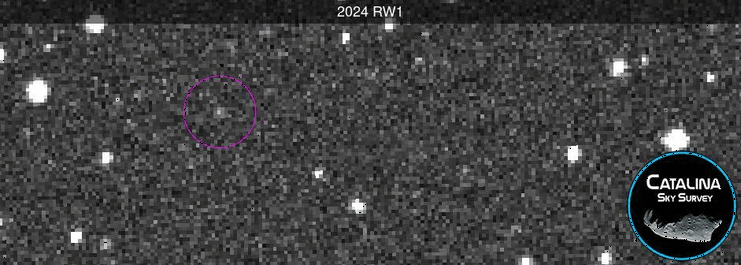
The first two interstellar visitors
In 2017, astronomers at the University of Hawaii found an asteroid that behaved oddly. It didn't come from any of the normal directions for asteroids or comets passing by the Sun. Moreover, it wasn't on a bound orbit at all. It was traveling so quickly that after half a loop around the Sun, it zoomed back off into interstellar space.
They called it 'Oumuamua, meaning "scout." It was the first known visitor from beyond our solar system. Planetary scientists jumped at the chance to study an asteroid from the great beyond. More excitable astronomers theorized it was actually a spaceship. 'Oumuamua entranced the world for a few months, stirred up controversy, and then disappeared into the blackness of space, beyond the reach of our telescopes.
Then, in 2019, an amateur astronomer and telescope-maker in the Crimea found a comet (a rocky body that contains large amounts of ice, unlike asteroids) on a similarly unusual trajectory. Like 'Oumuamua, Comet Borisov darted through our neighborhood only long enough to vaporize some of its ice in the heat of our Sun. Then it, too, was gone.

What we know about A11pl3Z
Astronomers have only just discovered A11pl3Z, and it's very faint. Since it doesn't generate its own light, we can only see it via reflected sunlight. At its current distance, that only gives it a brightness equivalent to that of galaxies about one billion light-years away.
This obfuscates exactly how fast A11pl3Z is traveling, and in what direction. While it's still possible that A11pl3Z is just a very odd object from our solar system, it looks very interstellar. Not only is it entering the solar system from a strange angle, it's also orbiting in the opposite direction from solar system bodies.
Right now, it seems less perturbed by the Sun's gravity than Oumuamua or Borisov. That means it came from outer space with a much higher velocity.
The study of small bodies moves very quickly. Every night, planetary scientists get a plethora of new information on interesting objects. Soon, we should know whether A11pl3Z is an unusual member of our own solar system or something from much further abroad.
About 30,000 years ago, humans arrived in Japan's southern Ryukyu Islands, 110km from Taiwan.
The archaeological record hasn't preserved any clues as to how these Paleolithic people made the crossing to this new land. But the obstacles to doing so seem, at first glance, insurmountable without modern technology and knowledge. So in 2013, a group of Japanese archaeologists set out to recreate the trip using only Paleolithic tools.
This week, they published the results of their experiments in the journal Science.
A challenging crossing
Archaeologists find evidence of humans in the Japanese archipelago as early as 35,000 BCE. Judging from the dates at different archaeological sites, the earliest inhabitants of Japan seem to have migrated both northward from Taiwan and southward from Korea.
But from the Taiwanese coast, the low-lying islands of Ryukyu sit below the horizon. One of the strongest currents in the world, called Kuroshio ("Black Tide"), runs northward from Taiwan. It carries any lackadaisical drifters west of the Ryukyu Islands at a velocity of one meter per second. And a distance of 110km from Taiwan to the nearest Ryukyu island, Yonaguni, was no joke for people without metalworking or sails.
Yet they made it.
When the Japanese archaeologists set out to recreate this trip, they didn't have an easy time. They tried reed-bundle rafts and bamboo rafts, both of which floundered in the strong current. The bamboo also began to crack and fill with seawater, further weighing it down.

The beginning of the voyage
In July of 2019, the team attempted one final trip. They launched Sugime, a hand-made dugout canoe, from the coast of Taiwan in typical calm summer weather.
Construction of the dugout started in 2017. The team used replicas of stone axes found in Japanese Paleolithic sites to fell a one-meter-thick Japanese cedar tree. They peeled off the bark and carved a seating area in the center of the trunk. While dugout canoes from the Paleolithic haven't survived in Japanese archaeological sites, dugouts from the later Jōmon period (starting around 14,000 BCE) boast burn marks on the inside. In turn, the team polished the inside of their craft with fire.
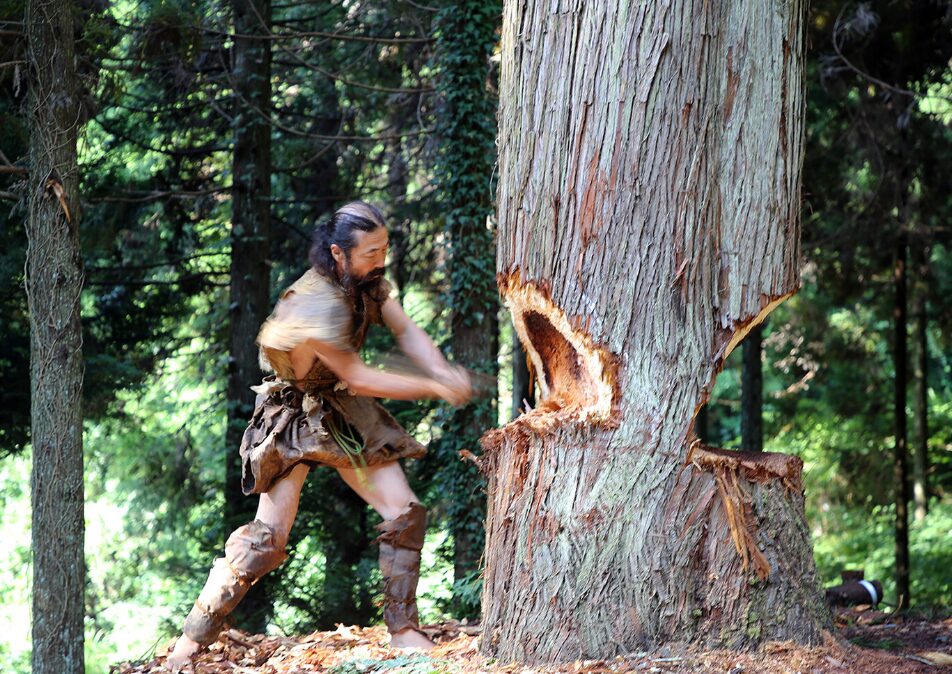
The plan was simple: to row from Wushibi, on the eastern coast of Taiwan, across the strait to the small Ryukyu island of Yonaguni. A motorized ship with safety supplies would escort the Paleolithic reenactors.
Sugime's crew consisted of five paddlers, four men and one woman. For the first hour and a half of their journey, they skidded over a calm sea, with only wispy clouds on the horizon. Then the water depth dropped, and they hit the edge of the Kuroshio. The wind slammed into the current, giving rise to choppy water and an ever-present swell as high as the side of their boat. One of the crew had to pause paddling to bail out the dugout over and over again.
They kept rowing into the night. The wind dropped slightly, but the dugout kept threatening to capsize in the strong swell. There was no rest that night, and it was a constant fight to keep the nose of the dugout pointing northeastward. As the water approached a flow of 1 m/s, the dugout pivoted northward along with the current.

Just as steering the boat was a challenge, so too was figuring out where to steer it. Clouds obscured the stars, and GPS wasn't an option in the Paleolithic. Only the direction of the swell indicated which way was north.
As midnight approached, the wind dropped and stars appeared. The paddlers took turns resting. But in the early hours of the morning, clouds once again obstructed the stars. At 3:40 am, while the captain was taking his rest, one crew member thought she saw dawn on the horizon. The crew pointed the dugout accordingly.
Then the captain woke up. The dugout was traveling due north, dragging them off course from their destination. He realized that far from being dawn, the light on the horizon was from the northern cities of Japan and was reflecting off the clouds. Sugime turned eastward once more.
Exhaustion and triumph
The next day dawned bright. Still unable to see their destination, Yonaguni Island, the crew kept paddling east-southeast to combat the current of the Kuroshio. Unbeknownst to them, however, they had left the Kuroshio behind them. They were now heading due east, away from Yonaguni.
They had already exhausted all the water they had packed for the voyage. Tired and thirsty, they called in a resupply. At noon, finding themselves in calmer waters and realizing they had left the Kuroshio, the whole crew slept for half an hour.
As they paddled into the afternoon, Yonaguni still failed to appear. They steered the dugout this way and that, hoping it would peek above the horizon. It didn't. Moreover, the crew was exhausted. Some of them jumped into the ocean to rest in the cool water. But nothing prevented the onset of excruciating muscle cramps and, as evening drew close, hallucinations.

Then, just before the sun set, a bird flew overhead. Before this, the sea had been lifeless and isolated. Now, land was near, even if they couldn't see it.
The sun was so intense that the food they had brought with them began to rot. They obtained replacements from the escort ship and ate a dinner of rice balls and noodles. As night slid in, the crew rested while the boat drifted loose on the water.
The captain kept watch. He thought he saw the glint of a lighthouse on the horizon that he hoped was from Yonaguni. As it turned out, it was an optical illusion, but the swell carried the dugout gently northeastward. In the early hours of the morning, the actual light from Yonaguni's lighthouse appeared on the horizon.
When the crew awoke in the dark hours before dawn, they began the final stretch of their journey toward it.
It was not until just after dawn on the third day that the crew finally saw Yonaguni Island. They were 20km from shore and had been rowing for over 40 hours.
Five hours later, they reached land. Since their crew included Taiwanese paddlers, they had to follow immigration protocol and land Sugime at a predetermined beach. Paleolithic explorers, presumably, did not have this restriction.

Piecing together a Paleolithic voyage
The crew had made it. Dugout canoes, unlike reed and bamboo rafts, can cross the Kuroshio. But at various points during the trip, the crew's mistakes had worked in their favor. When they rested, the swell naturally carried them in the right direction. And the first hint they saw of Yonaguni was from a lighthouse, which does not feature in Stone Age archaeological sites. Was their success a fluke?
To test this, the team used the data from their paddling to simulate hundreds of dugout voyages starting from different points in Taiwan. They used both modern and Paleolithic oceanographic models to approximate the flow of the Kuroshio, varying the strength of the current between ebbs and peaks. As long as the virtual boats paddled in the right direction, they made the crossing, even when the Kuroshio was at its strongest.
But the voyage could not be completed by accident. The Kuroshio does not carry mariners from Taiwan comfortably to the shores of Yonaguni. Paleolithic humans had to identify the direction and strength of the Kuroshio and plan their voyage accordingly.
They also had to know Yonaguni was there. From the coast of Taiwan, it is not visible. Only when one climbs the mountains in the north does the little speck of island appear over the horizon. The summit of the highest of these mountains sits at nearly 4,000m.
This research in experimental archaeology shows that inhabitants of Taiwan 30,000 years ago did not drift aimlessly towards the Ryukyu Islands. They climbed mountains, they built sturdy boats, and they knew how to chart a course against one of the strongest currents in the world.
A team of astronomers in Australia searching for radio flashes from distant galaxies has found something a lot closer to home. The defunct communications satellite Relay 2, out of commission since 1965, is chirping at the Earth in radio frequencies.
A mysterious burst from nearby
The Australian Square Kilometer Array Pathfinder (ASKAP) searches the radio sky for sudden, unexpected flashes. These can come from supernovae or more exotic sources like rotating white dwarfs. But ASKAP is particularly talented at finding Fast Radio Bursts, brief outbursts of radio waves coming from galaxies millions or even billions of light years away.
In a preprint paper released this month, a team at ASKAP reported a signal that looked like a startlingly bright Fast Radio Burst. It lasted the same general amount of time (only 30 billionths of a second) and emitted a broad range of radio frequencies. But unlike Fast Radio Bursts, it seemed to come from right outside the Earth's ionosphere.
When radio waves travel from faraway galaxies, they interact with electrons floating around in interstellar space. Those electrons slow down low-frequency waves more than the high-frequency waves, causing them to arrive at the telescope after the high-frequency ones. Astronomers call this effect "dispersion," and it works as a rough proxy for distance. Since we know about how many free electrons there are in every direction, we can calculate how far radio waves must have traveled through those electrons to be delayed a certain amount.

But for the recent ASKAP burst, there was barely any delay between the high- and low-frequency parts of the wave. The burst came from our own neighborhood.
Radio astronomers have a touchy history with things that look like Fast Radio Bursts but come from nearby. For a long time, mysterious signals called perytons showed up all over the place, until a group realized it was actually the microwave oven in the observatory break room.
Needless to say, microwaves are now kept under strict control at radio telescopes. So what was this new signal?
Tracking down an undead satellite
Reasoning that the only things floating around in nearby space that might release radio waves are satellites, the ASKAP team started searching. They compared the point of origin of the burst to maps of satellites. But the only matching satellite, Relay 2, hasn't been in operation since 1965.
Relay 2 was a NASA telecommunications satellite with a handful of physics experiments onboard, all long since defunct. According to NASA reports, it's been more than 50 years since anyone has purposefully used Relay 2.
While it's possible NASA is using Relay 2 secretly, the ASKAP team doesn't think this is likely. The plans for the satellite are publicly available, and nothing onboard is capable of producing such a short, bright burst.
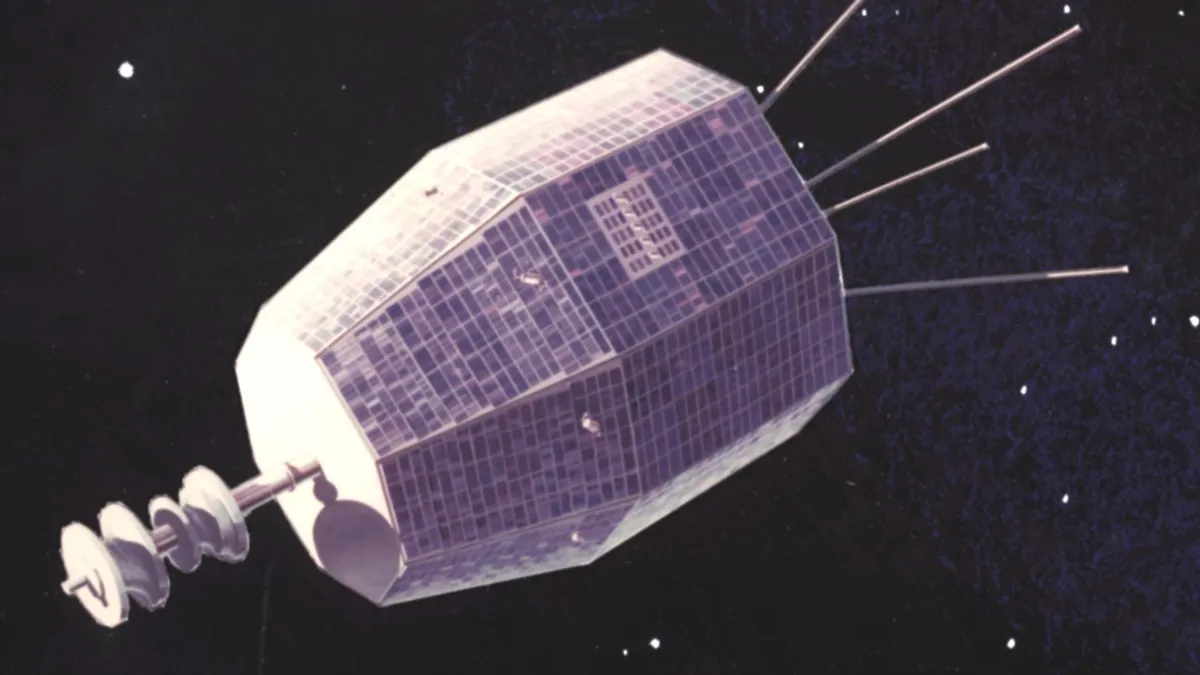
The explanation
The team proposes two possible explanations for this strange emission. In the first, solar winds slam into Relay 2, building up charge against one plate of the satellite like rocks by the ocean build up salt. When the charge becomes so strong that the scant gas molecules between one plate and another can't take it anymore, the gas ionizes, releasing a sudden burst of visible light and radio waves. This is called electrostatic discharge. It's like lightning for satellites.
The other option is that micrometeoroids are slamming into the satellite, creating a cloud of dust and plasma right around the satellite. Then electrostatic discharge can happen even more easily.
It will be hard to tell which of these options is at play without observing Relay 2 over a long period of time. If the radio bursts happen at regular intervals, then they likely come from electrostatic discharge after a buildup. Micrometeoroids, on the other hand, wouldn't stick to a schedule.
Either way, observing short radio bursts from satellites may be a new way to probe the electric composition of space right outside the ionosphere.
In Chile, a monumental telescope has opened its eyes. The telescope at Vera C. Rubin Observatory is the largest digital camera ever built, with a resolution of 3200 megapixels. It will photograph the entire southern sky every three nights.
Today, the team behind this ambitious project released the telescope's first images of the sky, which astronomers call "first light."
Over 10 years, the Vera C. Rubin Observatory (VRO) will create a time-lapse movie of the changing universe. Explosions from massive stars in other galaxies, pulsating stars, and asteroids make up most of the VRO's targets. Objects like these, called transients, change on timescales observable to humans. By contrast, most things in space look the same today as they would a thousand years from now.
Unprecedented scale
The VRO will acquire astronomical data at an unprecedented scale. It will rapidly outpace the combined data of every single other telescope in history, both on Earth and in orbit. As a consequence, it will blow open the door on transient astronomy. Before the VRO, astronomers discovered thousands of supernovae every year. With it, they will discover thousands every night.
But the VRO won't just focus on the distant universe. The camera also picks up nearby objects like asteroids and comets darting across the field of view. Today, we know of about one million of these rocky bodies in our solar system. The VRO will find five million more, dramatically improving our understanding of the danger Earth faces from medium-sized asteroids.
More than 40 international organizations contributed to the telescope, which sits on the 2,682m summit of Cerro Pachón in Chile. The telescope's main mirror, which is the size of a small car, journeyed to Chile from the Mirror Lab at the University of Arizona.
At the press conference announcing the first light images, Chilean ambassador Juan Gabriel Valdes discussed the key role Chile plays in astronomy.
"Astronomy is part of our identity and our heritage," he said, noting that protecting their dark skies is crucial for the world's space science. "Today, more than 40% of the world's astronomical observations take place in Chile."

The mother of dark matter
Vera C. Rubin -- the woman, not the observatory -- made a name for herself in the mid-20th century as a determined scientist in the face of entrenched sexism. Rubin found the first evidence for dark matter when she observed that galaxies rotate faster than their visible matter explains. There must be, she reasoned, additional invisible matter holding them together.
Nowadays, dark matter is a household term, even if no one (including astronomers) knows what it is. But Rubin, like many other female scientists responsible for key discoveries, never received the Nobel Prize.
Although the bread and butter of the VRO is transients, it can also probe how light bends around distant galaxies. The amount it bends depends on how massive galaxies are -- another clue to how much dark matter exists in the universe.
Harriet Kung, director of science at the Department of Energy, summarized the questions on dark matter and dark energy that the VRO will help answer.
"How can we better understand the matter and energy that make up 95% of our universe? Why is our universe expanding quickly, and how does that change over time? What role does dark matter play in how our universe evolved?"
First light
"The movie is starting," announced Kenneth Wright, director of development for the Office of Science and Technology Policy. "The camera is running. And we're gonna see our universe unfold before us."
The first image revealed in today's press conference showed two Milky Way-like spirals whirling against a background of more distant, yellower galaxies. This image comprises only 2% of the telescope's full field of view.
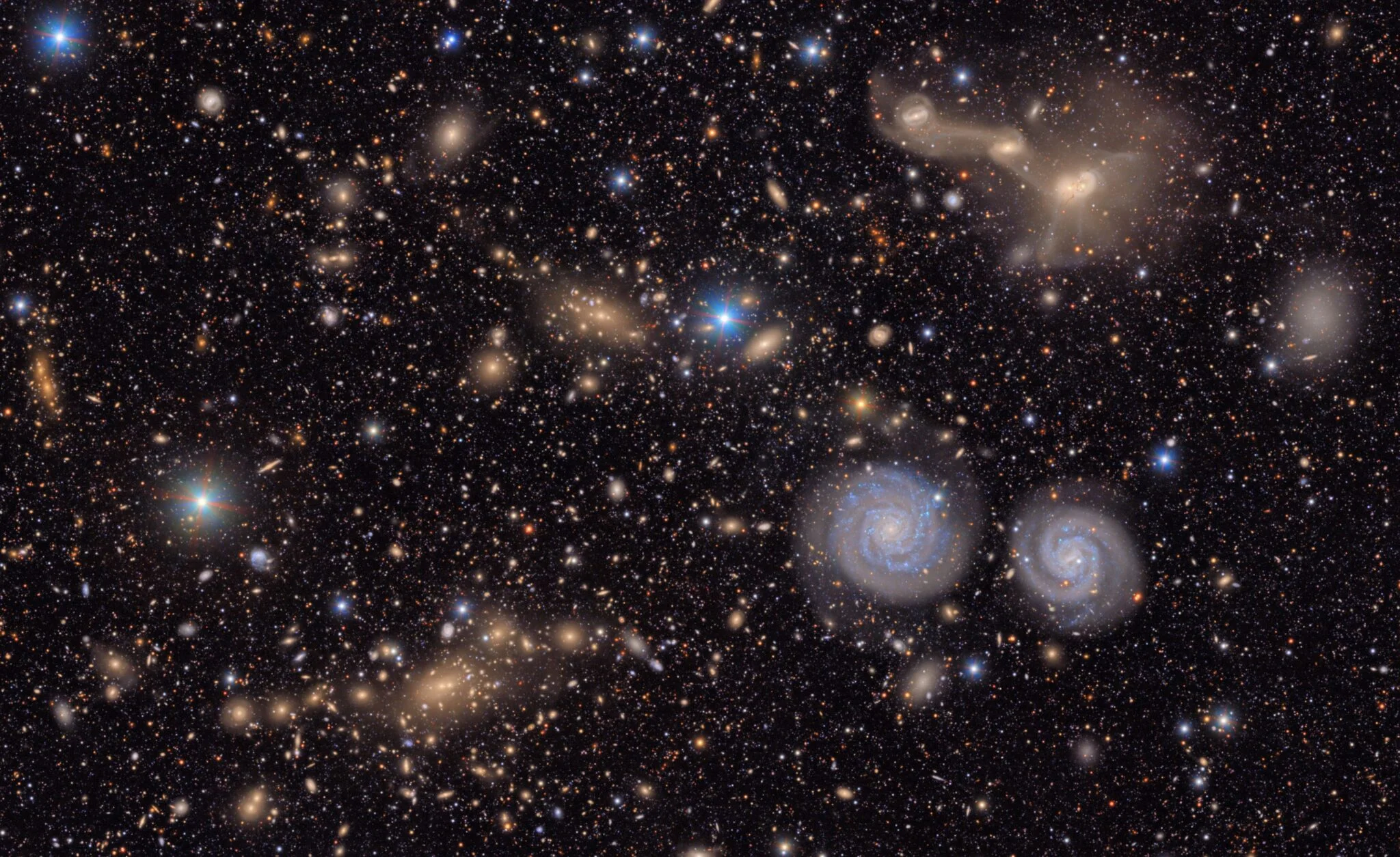
Since the camera can photograph light from the near-ultraviolet to the near-infrared, the colors in this photograph are more dramatic than what the naked eye would see. Galaxies that look blue emit strongly in the ultraviolet, while reddish-yellow galaxies shine in the infrared.
Red galaxies tend to be older, made up of aging stars that don't spit out the violet ultraviolet radiation of young blue ones. They also lose their defined spiral arms, as in the large elliptical galaxy in the first light image below. Many of the galaxies here comprise the Virgo Supercluster, a massive family of galaxies about 65 million light years away.

Moving asteroids
In a sneak peek of the VRO's time-lapse power, the observatory's director released a video of asteroids moving against the static background of stars. Every asteroid in this video, shown with a turquoise dot, was previously unknown. None of them are on an interception course with Earth.
In just one week, the VRO found 2,100 previously unknown asteroids.
Unparalleled resolution
The final first light image released shows the nearby Trifid and Lagoon Nebulae, yet another strength of this versatile telescope. Dark streaks against clouds of glowing dust and gas show regions of high density where baby stars are forming. Because the telescope was designed to see things very far away, turning it on such close objects allows it to zoom in with the resolution of 400 ultra-high definition TVs stacked next to each other.
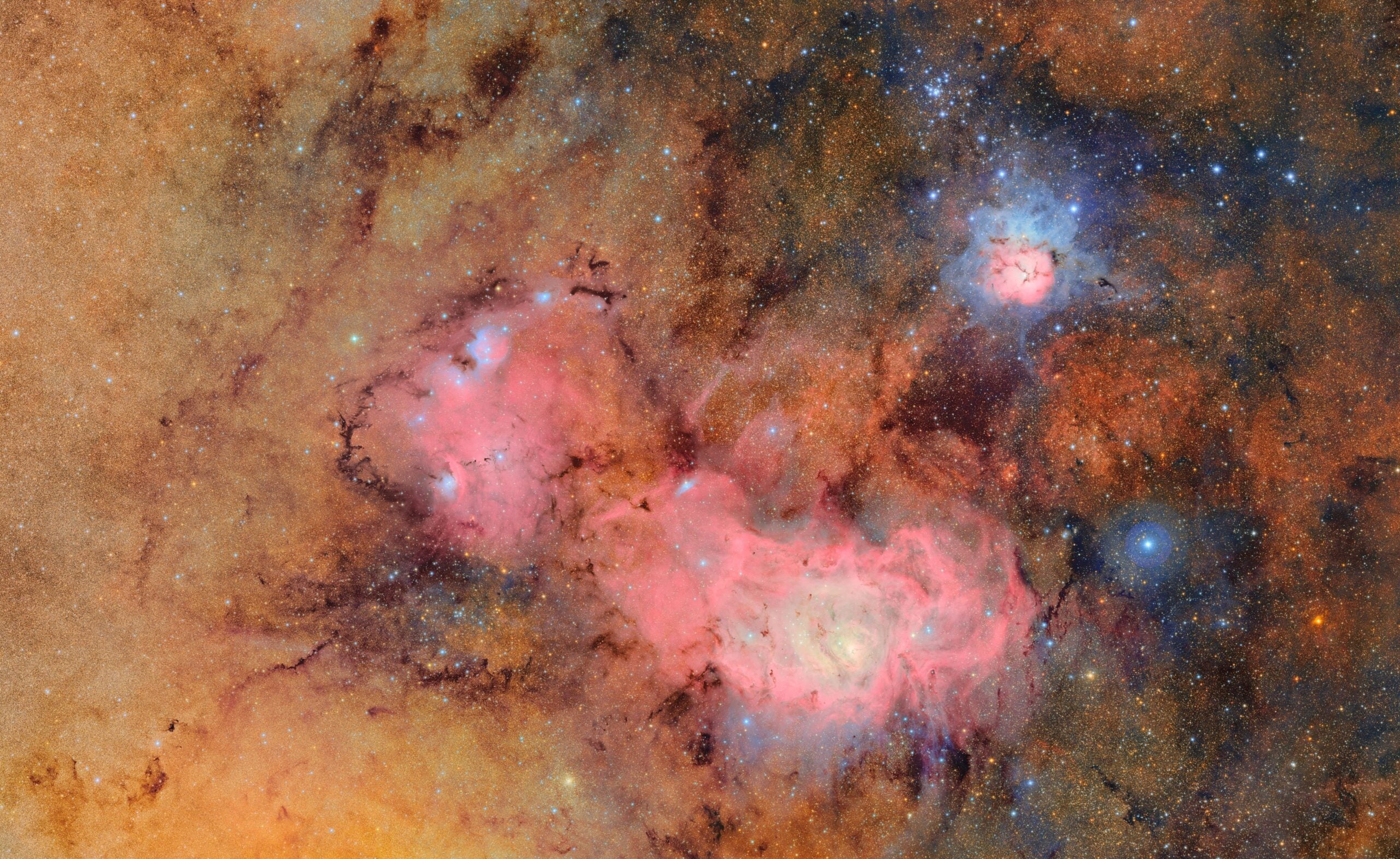
A new view on the universe
Maryam Modjaz, a professor of astronomy at the University of Virginia and a member of the VRO science collaboration, explains that the VRO will transform how she does research.
"I’m particularly interested in very young supernovae, right after the explosion," she says.
Right now, astronomers have to be lucky to find these objects. More often, they don't catch them until days after they've exploded, missing crucial early information. That won't be an issue with the VRO, says Modjaz. "We can study the stars that gave rise to those explosions in what I call a 'stellar forensics' investigation."
The VRO is open to more than just astronomers. The observatory has just released its Skyviewer app, where anyone around the world can explore this project, which it calls the Legacy Survey of Space and Time.
In recent years, we have shown many spectacular images from the James Webb Space Telescope. The difference between them is that the JWST looks at very fine detail, while the Vera Rubin Observatory focuses on the big picture. After the VRO finds something new, the JWST can follow up for a more precise study.
The California Academy of Sciences has announced the winners of its annual Big Picture photography competition. This year, the $5,000 Grand Prize went to a golden hour shot of a brown lemur jumping between limestone spires. The lemur leading the group makes the giant vault with her baby clinging to her back.
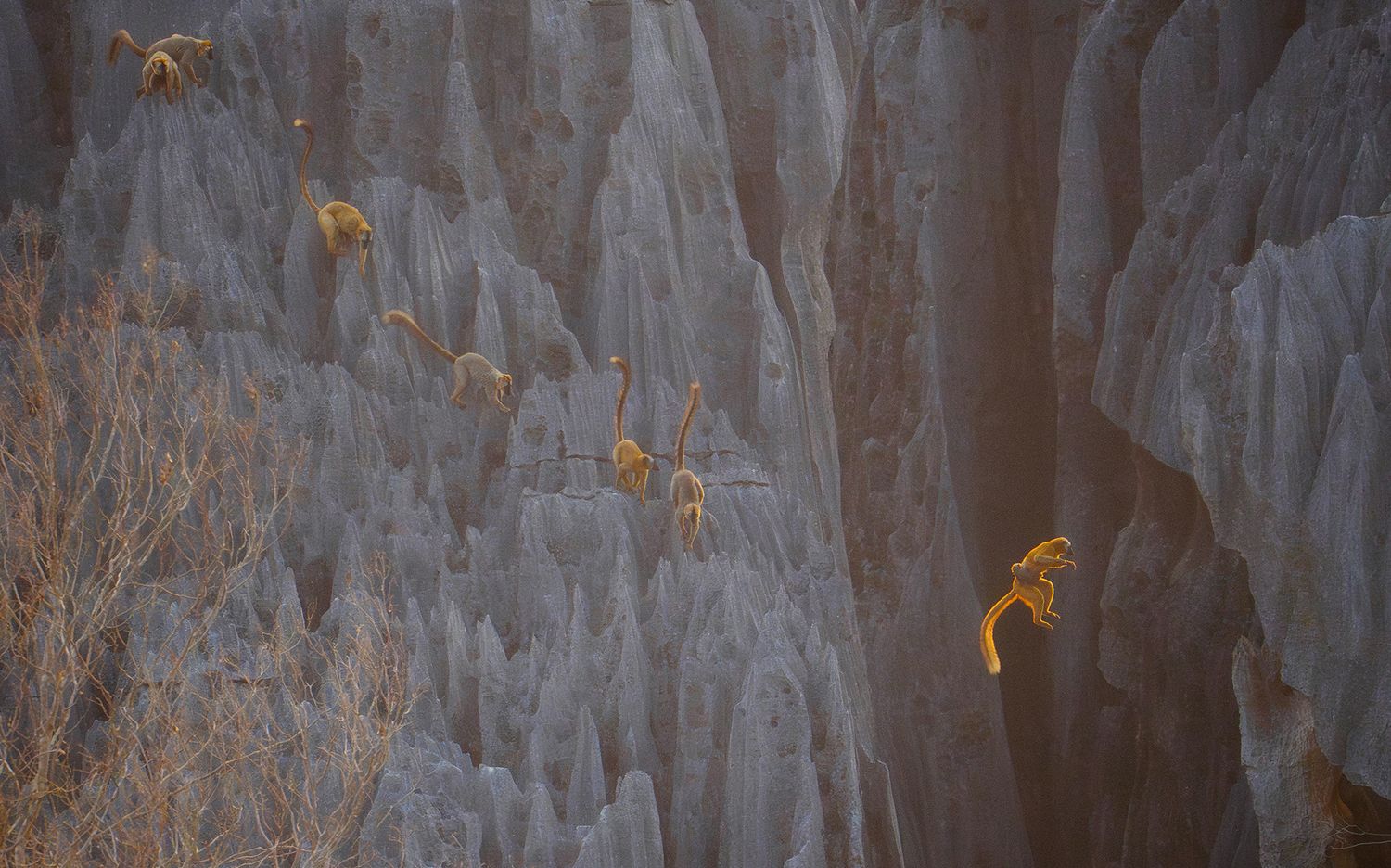
Aquatic Life winners
The judges also awarded prizes in different categories. In Aquatic Life, another mother and her young took home the gold. A Caribbean reef octopus curls around her children, her tentacles protecting the eggs. Inside each egg, a tiny octopus floats.

The Big Picture also released the finalists in each category, which you can peruse here. In the Aquatic Life category, this wide shot of a green sea turtle is particularly striking.

Terrestrial Life winners
The finalists in this category span the Arctic tundra to deserts and savannas. Highlights among the finalists include this shot in the Chilean mountains of a puma stalking similarly colored guanacos...
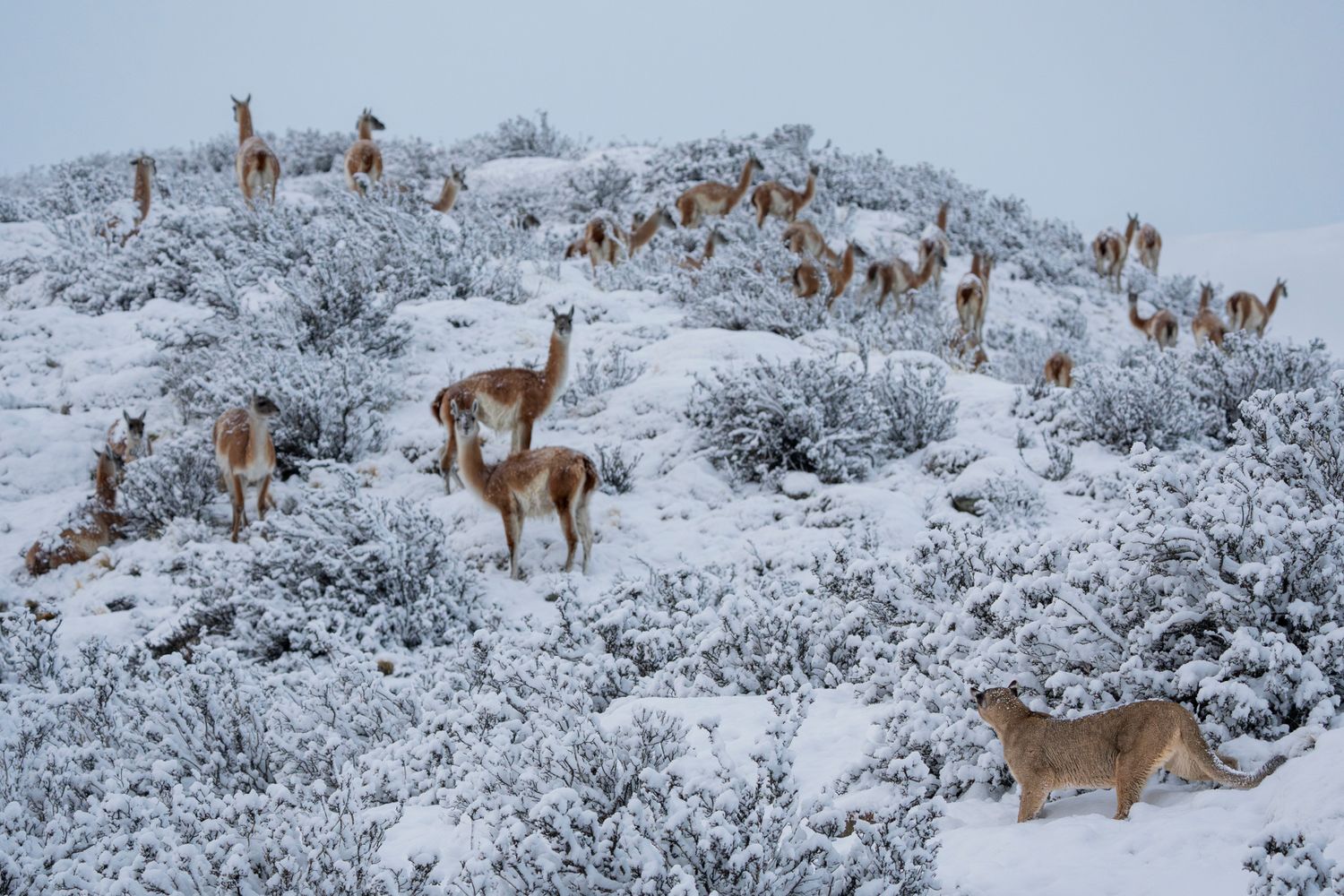
...and this dramatic photograph of an elephant and an eland herd in Zimbabwe during the dry season. Dust in the air creates those blood-red African sunsets.

But a pack of Arctic wolves on Ellesmere Island took the prize after curiously thronging the photographer. They were close enough that he could smell their breath.
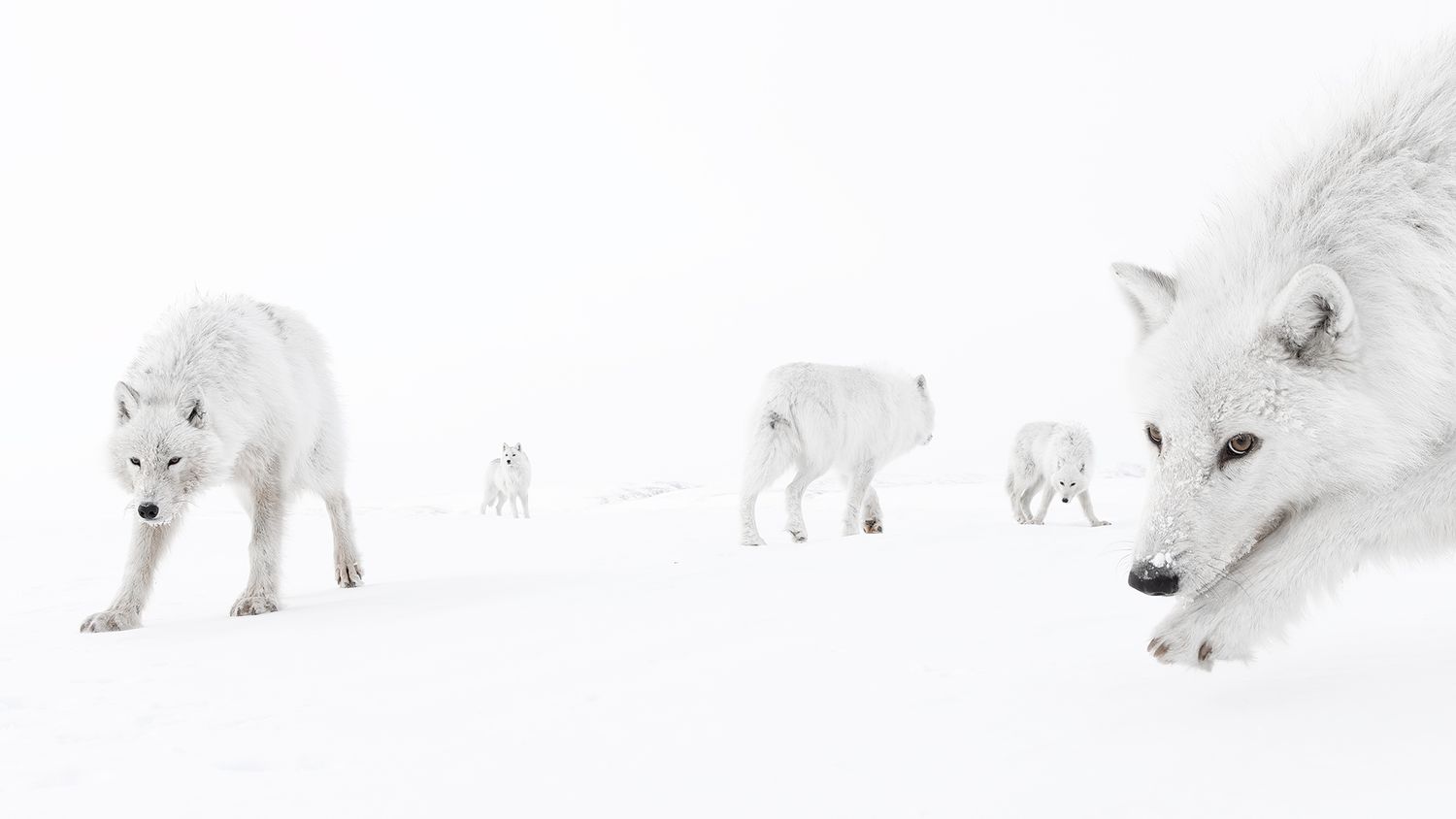
Winged Life winners
Bats, birds, and bugs galore! But this category doesn't focus only on photos of winged creatures in flight. Finalists include this moth pupa...

...alongside this grey-headed flying fox soaring through the air with its pup.

The Honduran white bat took the prize in the Winged Life category. This mother plunges off a leaf to look for food, leaving behind her five pups clustered together like a bunch of berries.

Landscapes, Waterscapes, and Flora winners
This non-wildlife category rewards less dynamic shots than the typical wildlife show stopper. The winning photograph this year documents what looks like an eye but is actually the unfrozen center of a lake in Poland, crisscrossed by animal tracks.

A particularly striking finalist image documents a 2024 cyclone that flooded southeastern Morocco. Once-dry lake beds suddenly revitalized, destabilizing local ecosystems.

Art of Nature winners
This category rewards photographs for which the medium is the message. Unusual shutter speeds, instruments, and sensitivities all have their home here. The winner is this Turner-esque photo of waves off the coast of Germany. A slow shutter speed captured the motion of the water.

One of the finalists in this category also used a slow shutter speed and moving water to create an artistic image. The streaks that grant this starfish a sense of flight arise from the water flowing against the sand.

Human/Nature winners
Many of the finalists in this category emphasize species' vulnerability or suffering. But the winner shows humans risking their own safety to help an animal. The Kenyan Wildlife Service veterinary team, shown here, attempts to administer anesthesia to an endangered black rhino, an animal more than capable of killing a human even when sedated.
Work by the Kenyan Wildlife Service has gone a long way to protecting this creature, once hunted nearly to extinction.

Specialists at Australia's Square Kilometer Array (SKA) released a report this week showing Starlink's unexpected impact on radio astronomy. Despite national and international protections against radio emissions in certain bands, Starlink is clogging the skies with electromagnetic pollution.
A crowded spectrum

Light pollution stretches far beyond the hazy glow of a city on the horizon. Down in the radio portion of the electromagnetic spectrum, governments barter sections of light. Large portions of bandwidth stay reserved for the military, while others get auctioned off (sometimes literally) to communications companies. Squeezed in between these chunks of spectrum lie bands for public broadcasting, HAM radio, and science.
Governments, corporations, and private citizens are supposed to stay away from protected bands so that radio telescopes can observe in peace. When the Starlink satellites launched, SpaceX collaborated with key radio astronomy observatories to avoid broadcasting while transiting above telescopes. Strategies include turning off Starlink WiFi services completely in certain regions of the sky.
The resulting disruptions to Starlink operations are not insignificant. Spectrum management, especially in the United States, involves give-and-take on both sides. But American observatories have the benefit of observing at mid- to high-frequencies, at least by radio standards. Those frequency bands are less polluted than low frequencies, because emitting at low frequencies takes less energy and so costs less.
'Unintended electromagnetic radiation'
If corporations and the military ignored protected bands, it would cause serious problems for radio astronomy. But a new study by engineers at the SKA suggests unintended electromagnetic radiation, or UEMR, may be a bigger issue than intended radiation.
The SKA is still under construction. When completed, it will be the most powerful radio telescope in the world. The low-frequency part of the telescope (SKA-Low) is designed to go after trace echoes from when matter began to coalesce 13 billion years ago. SKA-Low looks odd even by the standards of radio telescopes. A thick forest of metallic Christmas trees in the Australian desert maximizes sensitivity to faint signals.
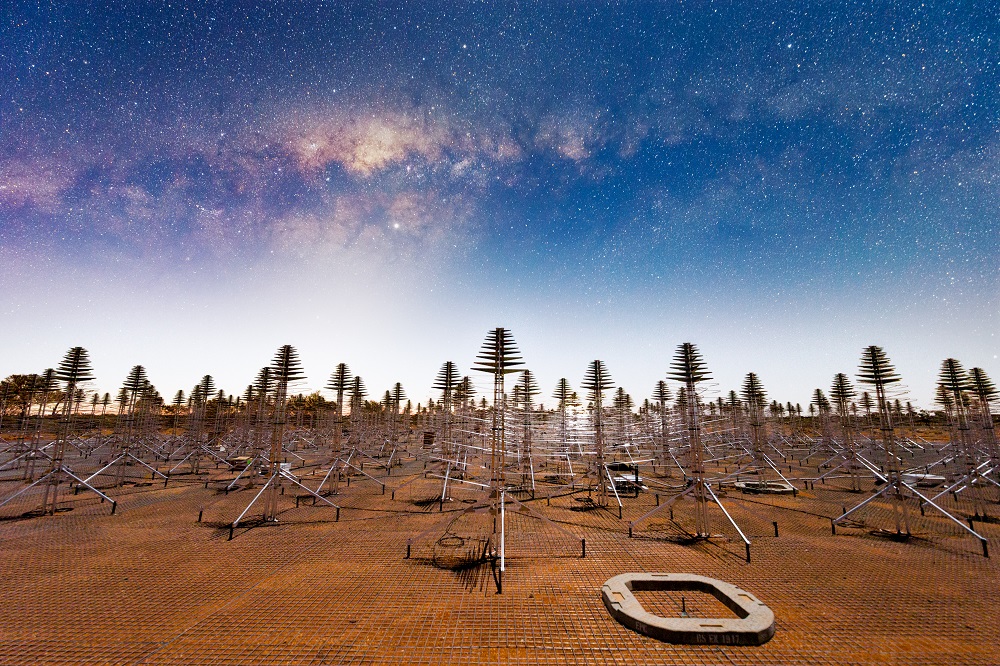
But the new era of radio telescopes is butting up against a new era of satellites. There are more satellites in orbit than ever before, including massive networks of related satellites called constellations. With 7,000 satellites in Low Earth Orbit, Starlink is the biggest constellation.
As they transit above SKA-Low, Starlink satellites release radio emissions through multiple protected bands. In a pre-print of their study, the SKA-Low team reports 112,534 intrusions of Starlink satellites in their radio images. Their month-long study showed that 30% of all Starlink satellites in the sky at the time appear in their data.
Most of this emission seems to be accidental. UEMR from Starlink interfering with radio astronomy isn't unprecedented. During the initial launch phase, radio astronomers found that the propulsion system on the satellites emitted at unexpectedly low frequencies, decreasing the quality of astronomical data in an already polluted band. But the satellites had all been launched at the time of this new study. So where is all this radio pollution coming from?
No answers, and no regulation
We don't know the various origins of the UEMR the SKA-Low team observed, except for one feature at 99.7 MHz. If that sounds like an FM radio band, it's no coincidence. Starlink satellites bounce FM radio shows back down to the Earth. For telescopes carefully located in radio-quiet zones, that's not ideal.
Fixing this issue is particularly crucial to the success of SKA-Low, which seeks to look further back in time than any telescopes in a similar radio band. Signals from the early universe are very faint, and Starlink satellites are not.
Unfortunately, the codes governing spectrum use only ban intended radio emission in protected bands. Consider a hyperbolic analogy: Imagine if murder were illegal, but manslaughter wasn't. Spectrum experts and regulators are currently discussing how to address this issue. For now, though, as long as Starlink is here, so are the unintended radio emissions.
Last week, the Trump administration released a presidential budget request that would cancel almost all NASA science missions in order to focus on putting humans on Mars. It's mainly a showy, we-can-do-it project.
Mere weeks before, the CEO of a small San Francisco non-profit argued in a new paper that we need to start seriously considering terraforming Mars. The priorities of the two groups could not be more different.
The lead author of the paper, Erika DeBenedictis, received the prestigious Astera Fellowship to found Pioneer Labs, a small startup dedicated to designing microbes for terraforming. In The Case for Mars Terraforming Research, published last month in Nature Astronomy, she and her co-authors explain why terraforming studies are important. They also address how little we still know about potentially terraforming Mars. The main takeaway: Mars is not ready for humans, and humans are not ready for Mars.
Why bother with all this, anyway?
For some readers, the question of colonizing Mars isn't why, but how. If that's you, feel free to skip ahead. But others might approach the matter with more skepticism.
Space colonization has become a political byword, but opposition is far from new. Perhaps most famously (at least among us science geeks), Gil Scott-Heron's 1970 poem Whitey on the Moon contrasted the poverty conditions of many Black Americans with the perceived excess of the Apollo missions.
"I can't pay no doctor bill (but Whitey's on the Moon)," he wrote. "Ten years from now, I'll be paying still (while Whitey's on the Moon)."
From this vantage point, is spending billions on terraforming research anything more than a nationalist vanity project? DeBenedictis and her team argue that it is important.
"Technologies developed for Mars habitation, such as desiccation-resistant crops...will probably benefit Earth," they write.
In an older interview with the Astera Institute, DeBenedictis summed up this aspect of the paper's argument.
"Researching the possibility of a green Mars involves an infinite number of steps, all of which are in the right direction. How do we make human presence net-positive for the surrounding environment, rather than net-negative?"
Unlike the Trump administration, the study doesn't advocate for current human spaceflight to Mars. Instead, it proposes taking the questions of colonization seriously, starting from first principles. Should we? How would we? What would the future of Mars look like?
Not just science fiction
You'd be forgiven for assuming terraforming is just science fiction. But unlike faster-than-light travel, this staple of space adventure has a real scientific basis behind it.
The new study lays out a timeline for terraforming Mars, and it's a lot more rapid than you might expect. They propose that careful bioengineering can accelerate the formation of an ecosystem. Instead of the billions of years it took Earth to turn green, Mars could achieve it in a few decades.
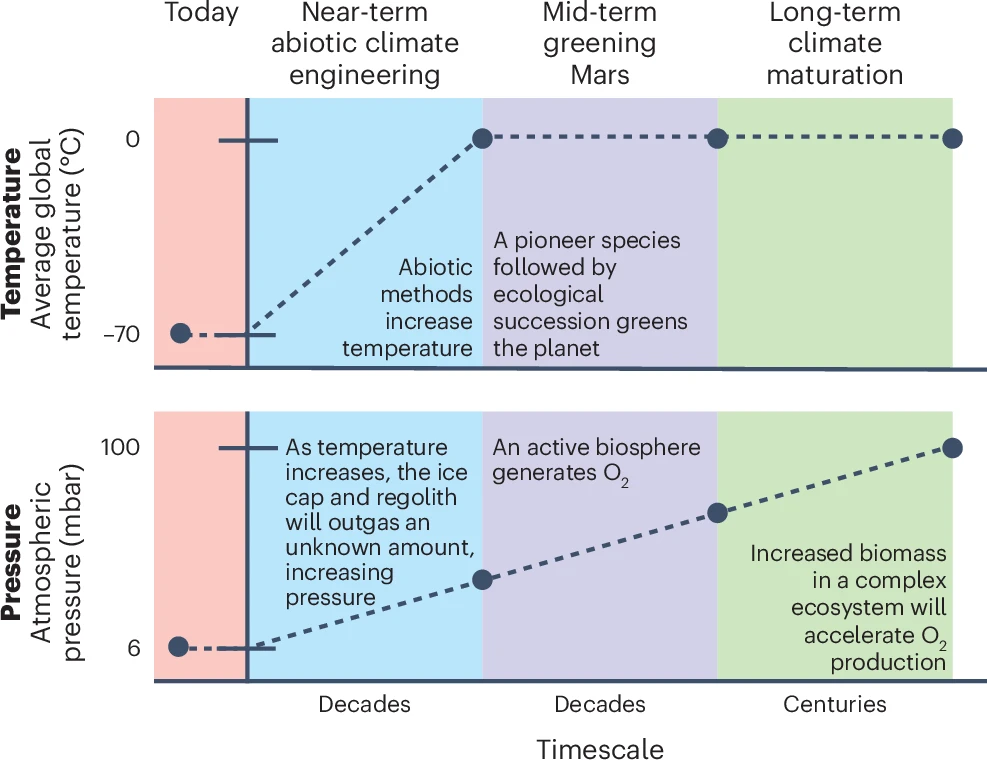
The key to this rapid progression would be the development of microbes that thrive on Mars. Bypassing the labyrinth of evolution, humans could combine traits of Earth-based microbes such as temperature tolerance (surface temperature on Mars swings from -150°C to +20°C), invulnerability to fierce radiation and toxic gas, and no preference for atmospheric pressure. Such species could lead to an algae-covered Mars within decades.
How scientists would prevent such hardy microbes from disrupting ecosystems on Earth, the team doesn't address.
The natural advantages of Mars
According to their estimates, if all the water ice on Mars melted, it could form 10,000,000 km2 of ocean at a depth of 300m. That's far less than the amount of liquid water on Earth, but it's enough to support long-term life on Mars.
In turn, the melting of Martian ice caps, which include both water and carbon dioxide ice, would increase atmospheric pressure. A thicker atmosphere would lessen the dramatic temperature swings between Martian night and day, in turn allowing the proliferation of life.
Martian soil also includes the necessary components for agriculture. Science fiction author Andy Weir exploited this so his marooned protagonist could grow potatoes in the hit 2017 science-fiction novel The Martian.
Such calculations have led planetary scientists to scour Mars for evidence of past life, mostly through remote sensing. (Soil samples are notoriously difficult to return to Earth for testing.) So far, they haven't found any evidence of life, only evidence of conditions necessary for life at some point in the distant past.
So, are we missing something?

The big unknowns
This is where DeBenedictis and Pioneer Labs' vision of Mars colonization research differs most dramatically from that of Elon Musk and SpaceX. The gist of the new paper is not that terraforming should happen now, but that scientists from different disciplines need to consider terraforming when designing future projects.
In planetary science, for example, the paper argues for continued research on everything we don't know about Mars. For instance, ice covers one-third of the planet. What's under it? More ice? Networks of caves? Liquid water? The answer could portend wildly different visions of a bioactive Mars.
They also call for extensive simulations of dust storms, a notable feature of Martian weather. Right now, planetary scientists understand dust storms on Mars fairly well. But how would dust change the atmosphere in a warmer, wetter Mars? How would the new climate alter the strength of the dust storms?
But perhaps the biggest open question for terraforming is whether Mars has enough electron acceptors to support life. Electron acceptors are molecules capable of transferring electrons -- and thereby energy -- down a chemical chain. They include carbon dioxide and nitrates, and are vital not only for photosynthesis, but also for human respiration.

Where to go from here
Despite their affiliation with Pioneer Labs, which focuses on microbe engineering, the authors don't call for the scientific community to jump on the terraforming bandwagon.
"While the possibilities are exciting, anything as big as modification of a planetary climate has major consequences and would require careful thought," they write. "But until we do more research, we do not even know what is physically or biologically possible."
In other words: research now, decide later.
"Priorities include quantifying H2O, N2, and CO2 reserves...soil sample return, test missions for proof of concept of warming methods, and climate feedback studies," they explain, linking various NASA science directives with terraforming questions.
Current NASA goals for Mars already support human exploration, they add. "No abrupt change of course is needed."
But an abrupt change of course is in store for NASA. The presidential budget request cancels all Mars research missions except for the Martian Moons eXploration, which is mostly funded by the Japan Aerospace Exploration Agency. It still wants to put colonists on Mars, but without laying the scientific groundwork first. If science takes up Mars terraforming research, it will be without the United States.
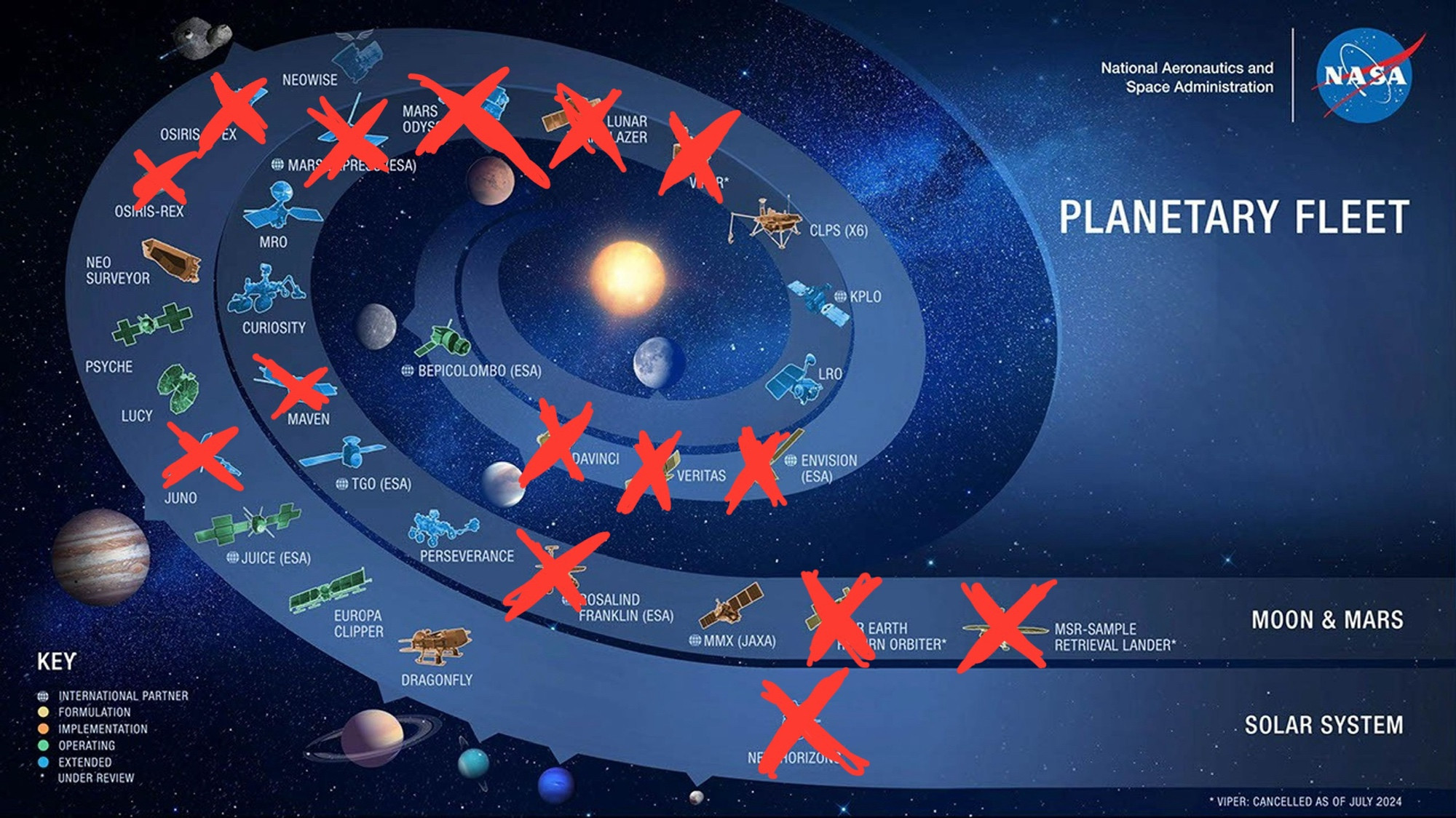
This week, a team of maritime archaeologists completed a detailed underwater study of the wreck of the SS Terra Nova. Their findings paint a vivid portrait of the famous ship's final hours, and of its fate in the 80 years since.
Launched in 1884, the Terra Nova lived a peaceful life as a whaler until she joined Robert Falcon Scott's ill-fated Antarctic expedition in 1910. Unlike Scott and the other members of the South Pole party, she survived the expedition but fell victim to pack ice during World War II and sank off the coast of Greenland.
There she rested until 2012, when marine survey technician Leighton Rolley proposed the general location of her sinking as a test project for new sonar equipment. The sonar scans detected various wreck-like features on the sea floor. One of them exactly matched the recorded length of the SS Terra Nova, 57m. After 70 long years, they had found the ship.
The survey team then lowered what was officially called the Simple High Resolution Imaging Package (SHRIMP), which was, in practice, simply an underwater camera and four flashlights attached to a cable. SHRIMP revealed the wooden skeleton of a wreck.
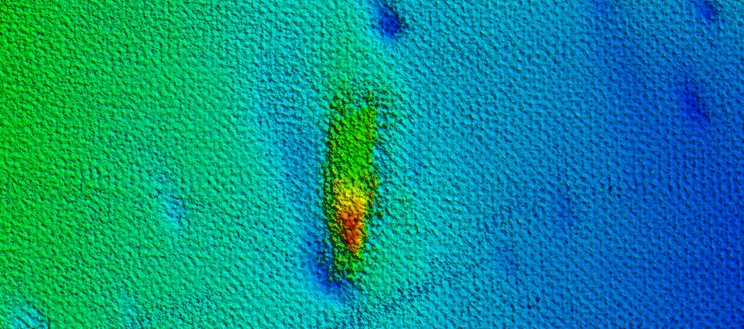
Terra Nova in detail
Now Leighton Rolley is back at the site of the wreck, this time with the equipment necessary for a full visual survey. The expedition vessel, MY Legend, is a high-tech yacht accustomed to polar cruises. Expert divers and a submarine have replaced SHRIMP, exposing details of the wreck.
Their survey confirmed the SS Terra Nova's identity. They also found that the bow had violently split in half. Remnants of gear still on the deck testified to the rapid evacuation of the ship in 1943.
"One of the most powerful moments was discovering the helm station near the stern — a symbolic and moving find," wrote submarine officer Aldo Kuhn. Photographs from the survey also show the ship's wheel, still intact after 80 years in the frigid water.
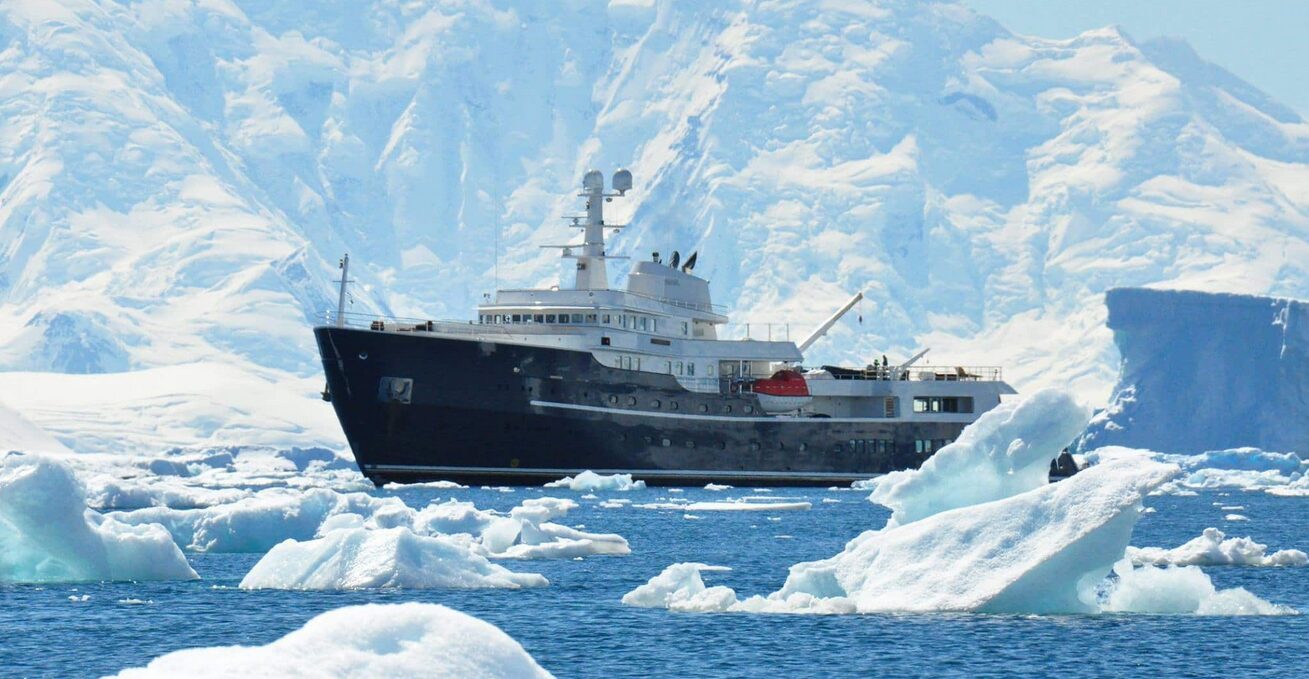
Still supporting life
But the team didn't only find the remnants of life. They found life is still there.
According to Kuhn, "a beautiful marine ecosystem is now thriving on the wreck, bringing new life to this historic site." Rolley wrote that the team saw corals, anemones, and fish living on the old oak whaler.
Shipwrecks often act as havens for marine life. Plants and corals grow well on wood in underwater environments, and small fish use the structures as shelter. Many oceanic organizations worldwide take special care to preserve the ecological role of shipwrecks.
Every year, elegant shots of gliding whales and prowling tigers wow the world. But one competition is brave enough to take a stand against the tyranny of animals looking impressive. The Comedy Wildlife Photography Awards platforms animals making stupid expressions, sitting in weird ways, and having bad hair days.
Entry into the 2025 competition is free, and open until June 30. But select entries were shared with Popular Science -- and with over 1,000 more already submitted, it's clear 2025 will be a great year for animals being silly.
You don't look as suave as you think
One subset of these photos features animals engaged in normal behavior, such as running and diving. But the timing of the photographs highlights the dorky positions in which we all find ourselves during routine moments. Especially when we're penguins.
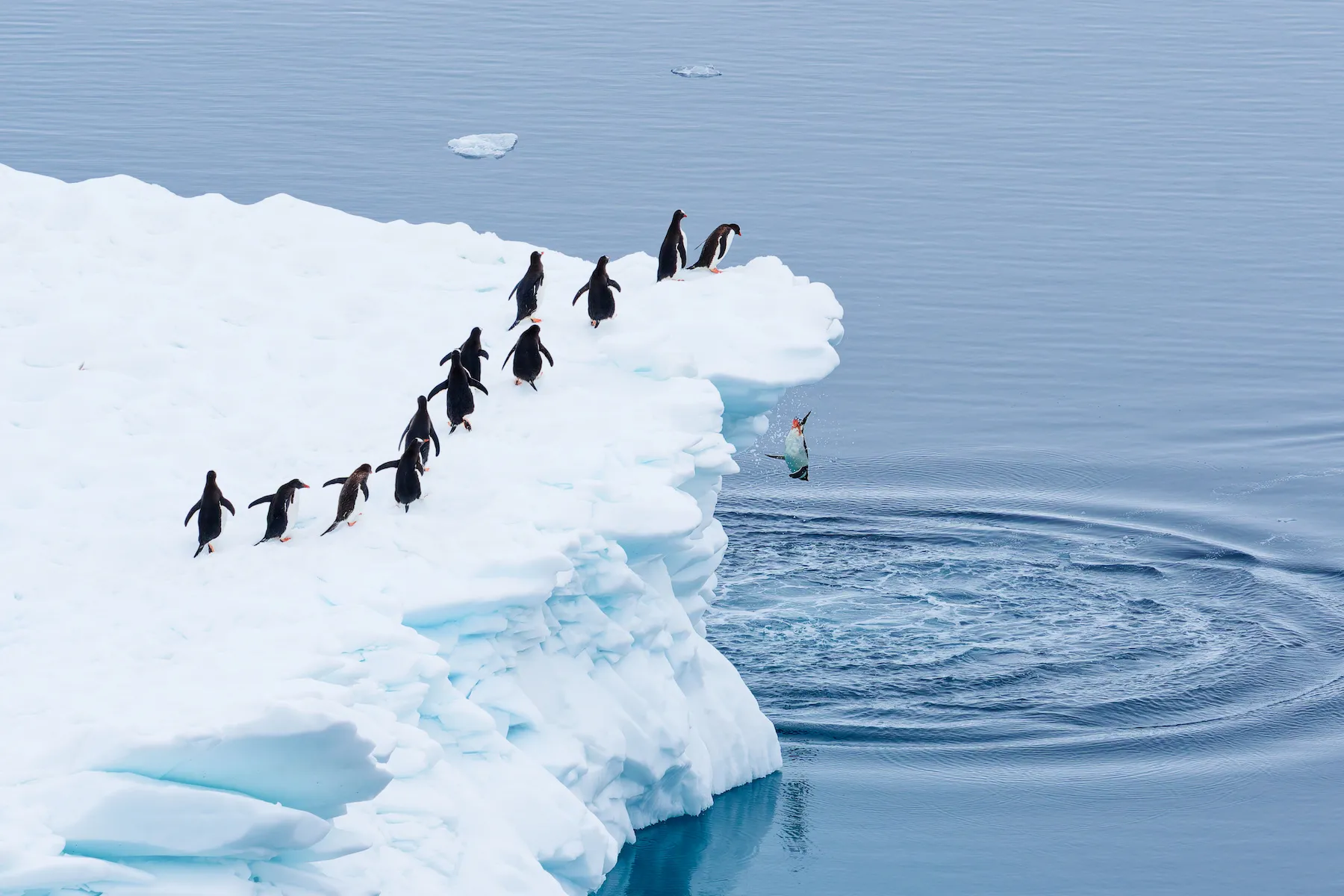

What's that on your head?
Another staple of the Wildlife Comedy Awards is animals with things on their heads that definitely shouldn't be on their heads. From other animals hitching a ride to make-shift hats and hairdos, the new photos have got you covered.


Hey, leave that to humans...
Douglas Adams, author of Hitchhiker's Guide to the Galaxy, posited that there were at least two species on Earth more intelligent than humans (dolphins and -- well, the other is a spoiler). But some of the 2025 Wildlife Comedy photos suggest other species are working their way up the ladder as well...


That was my bad angle, can you retake it?
No collection of funny animal photos would be complete without this old classic. Sometimes animals look majestic right until you see the expression they were making when you snapped the photo.
Admittedly, mudskippers were probably never majestic in the first place.


For words from the competition's founder and the original photo captions, head on over to Popular Science.
After escaping the Nazis by minutes and then getting smuggled through spy-infested Stockholm, the bomb bay of a British fighter jet might have been a relief to physicist Niels Bohr. His approach to quantum mechanics held unsettling implications about the meaning of death, and now he had nearly escaped its shadow.
The Nazis had invaded his native Copenhagen in 1940. That was three years before the father of quantum mechanics found himself strapped to the felt-lined insides of a de Havilland Mosquito with only an ill-fitting helmet, a reading light, an oxygen mask, and a thin blanket for comfort. Bohr abhorred the Nazis, but had resisted every previous attempt by the British government to evacuate him. He had work to do in Copenhagen. He was busy shuffling Jewish scholars through his Institute of Theoretical Physics. During their visits, they were all offered very prestigious, very convenient fellowships to leave the Axis territories immediately.
Bohr did not worry as much about himself as he did about others. His mother might have been Jewish, but he didn't practice Judaism. Surely if he didn't consider himself Jewish, neither would the Nazis.
Then, in 1943, a tip-off from a Gestapo worker led to Bohr's narrow escape on a boat to Stockholm. And now the fighter jet, and a helmet that didn't fit right. The rip would last only two-and-a-half hours as they flew over the contested airways to England, where Bohr would finally be safe. Perhaps he felt as though the danger of his last week was finally over.
Blackout
Over the helmet's intercom, the pilot advised him to put on his oxygen mask, as the Mosquito was nearing 7,000m. But Bohr didn't hear the announcement through his badly fitting helmet. As the Mosquito climbed, Niels Bohr, whose discoveries in physics would lead to both quantum computing and the atom bomb, lost consciousness and drifted toward death.

Nearly a decade before, Niels Bohr's colleague Albert Einstein had co-authored a paper contending that the emerging theory of quantum mechanics was incomplete.
Einstein and Bohr had been tossing the matter back and forth for years. While Bohr was far from the only contributor to quantum theory, he was its earliest and most prominent advocate. Einstein agreed that quantum mechanics appeared to work, but he thought Bohr's interpretation of it made no sense at all.
The Copenhagen interpretation
It was called the Copenhagen interpretation, after Bohr's beloved city. If you have taken a physics class that covers quantum mechanics, this is almost certainly how you learned the subject. Bohr developed the Copenhagen interpretation in conjunction with Werner Heisenberg (who would go on to lead the Nazi effort to build an atom bomb) and Max Born (who would be among the first wave of Jewish academics to flee Germany in 1933).

Copenhagen posits that at the very small scale, such as individual atoms or electrons, the universe exists in a permanent juxtaposition of different possibilities. The exact position of a particle in a box, for instance, is not defined by default. It is not merely that we don't know where a particle is. Instead, the particle has no actual location, merely probabilities of being in different locations, until we try to observe where it actually is. Then all those probabilities coalesce into an actuality: The particle is here, not there, and moreover, it will stay there even when we stop observing. We can go make a cup of tea, do some dishes, and when we come back, it will be exactly where we left it. If we shake the box around, though, the position of the particle goes back to a fluffy cloud of probabilities.
For obvious reasons, this upset a lot of people. It agreed with experiments, and the math made sense, but nothing else did. It had some pretty bizarre implications regarding how events exist in space, too, which Einstein derided with the ever-quotable line, "spooky action at a distance."
Schrodinger's cat
When Einstein and two co-authors published their famous rebuttal of the Copenhagen interpretation in 1935, fellow Copenhagen critic Erwin Schrodinger wrote to him in support. To illustrate how ridiculous the Copenhagen interpretation was, Schrodinger described a hypothetical scenario in which the fate of a cat in a box depended on whether or not a particular quantum process (in this case, the nuclear decay of an atom) had occurred. If the atom decays, a mechanism in the box releases poison, killing the cat. If the atom doesn't decay, the cat is fine. Schrodinger wrote how in this quantum system, the cat is alive and dead at the same time, "mixed or spread out in equal parts."
Ridiculous though it was, the Copenhagen interpretation agreed. If there exists some quantum process in the brain that makes the difference between life and death during oxygen deprivation, then for two-and-a-half hours, the bomb bay of the de Havilland Mosquito contained both the living (but unconscious) and the dead bodies of Niels Bohr, father of quantum mechanics.
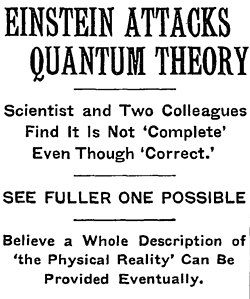
The many-worlds theory
For such an odd theory of the universe, the Copenhagen interpretation has surprising tenacity. It has vanquished every other approach to quantum mechanics in popularity if not in evidence. Why?
Part of it is that, as the first explanation, it has priority. Part of it has to do with the fact that its rivals are even more mathematically complicated (pilot wave theory), spiritually troubling (conscious measurement theory), or far out there (many-worlds).
In the pilot wave theory, the mathematics that predict probabilities in the Copenhagen interpretation instead describe a background field along which particles travel, much like an electric field. Particles have a real position, the cat is either alive or dead, but if we try to find out specifics, then we disturb the system. We will never know if the cat was alive just before we opened the box.
Conscious measurement theory runs far in the opposite direction. Possibility only collapses into reality when it interacts with a conscious observer. It is not enough to be seen on camera, someone has to be controlling the camera and attempting to process its information. The nature of death is about the only thing that isn't unsettling about this theory: A conscious observer collapses the probabilities, so the cat (or Niels Bohr) is either alive or dead, not both.
When everywhere becomes somewhere
But as bizarre as the Copenhagen interpretation of death might be, the many-worlds theory of quantum mechanics rivals it. It began with Hugh Everett III, a PhD student studying under John Wheeler, one of Niels Bohr's former students. Everett grew troubled by the Copenhagen interpretation, which seemed unnecessarily complicated. Why mess around with this business of something that was everywhere suddenly being somewhere when observed? After all, that implies the universe rearranges itself instantaneously. If nothing moves faster than the speed of light, how is that possible?
Easy, said Everett. It isn't. Nothing rearranges itself. Instead, the different probabilities predicted by quantum mechanics don't relate to whether the particle is actually at point A rather than B. Rather, they describe the chance that we are in a particular universe where the particle is at A instead of B. When we open the box, all we do is check which universe we are in.

This all sounds rather abstract. Nonetheless, Everett's PhD advisor, John Wheeler, recognized that in many ways, it's the simplest interpretation of the probability-based math required by quantum experiments. Wheeler encouraged Everett to publish it as his thesis, including a mathematical formulation for branching universes.
In 1959, Wheeler made the mistake of sending his protégé off to Copenhagen to meet the grandmasters of quantum mechanics. The meeting did not go well. Everett later described it as "hell" and "doomed from the start." One of the physicists he met, Leon Rosenfeld, detailed his impression of Everett in a letter: "He was indescribably stupid and could not understand the simplest things in quantum mechanics."
Everett promptly left academia for defense work.
Quantum immortality
Many-worlds lay dormant for a decade. Then, in 1970, a small circle of physicists rediscovered it and coaxed Everett into elucidating his ideas. Everett never returned fully to physics, but he stayed engaged with the small community of many-worlds enthusiasts.
One of the oddest features of many-worlds is the nature of death. In the Copenhagen interpretation, the probability of Schrodinger's cat being alive when we open the box is vanishingly small, the longer the experiment goes on. So small, in fact, that it approaches zero very quickly. In many-worlds, however, there is always a universe where one version of the cat survives.
This is very nice for the surviving cat in that just-right universe and not at all nice for the different versions of it that died. Hugh Everett had a solution to this, although even he did not dare publish it. Privately, he believed that his consciousness would always stay in the universe in which it continued to exist.
Everett died of a heart attack in 1982. He was 51 years old. His daughter committed suicide fourteen years later and wrote in her last letter that she was going to join her father in a parallel universe.

The fate of Niels Bohr
When the British army opened the bomb bay of the Mosquito, they found Niels Bohr unconscious but alive. Death by oxygen deprivation is not truly a quantum mechanical process, so our analogy notwithstanding, his survival says nothing about quantum mechanics.
Bohr went on to participate in the British arm of the Manhattan Project until his morals got in the way. He believed that the atom bomb would alter the world forever, and to develop it in secret was unforgivable. Hinting at the project in letters to Russian colleagues, he found an ally in Robert Oppenheimer. With Oppenheimer's help, Bohr met with Franklin D. Roosevelt, whom he tried to convince to make the project public. Roosevelt declined. By all accounts, though, he was more sympathetic to Bohr than Winston Churchill, who wrote, "It seems to me Bohr ought to be confined or at any rate made to see that he is very near the edge of mortal crimes."
Churchill kept Bohr under close watch in England. Not until the United States bombed Hiroshima and Nagasaki was Bohr finally permitted to return to his native Copenhagen, where he dedicated much of the rest of his career to nuclear non-proliferation. He passed away in 1962, three years after meeting with a hot-headed young physicist named Hugh Everett III, who believed neither would ever truly die.
A three-penguin race on Galindez Island, site of the Ukrainian Antarctic Expedition, concluded on Tuesday. The victory went to a newcomer to the racing scene, Unidentified Penguin #2. Unfortunately, no penguin equivalent of FastestKnownTime.com exists, but we encourage the penguin-loving community to create one.
Not professional racers
Penguin racing often flies under the radar. Averse to social media, many champion FPT-setters also have day jobs as penguins, doing penguin things like diving for fish. Fortunately, the Ukrainian Antarctic Expedition (UAE) filmed the first half of the Galindez Island race.
"This video is for those who still doubt that penguins are surprisingly fast creatures," wrote the UAE on Facebook.
In the video, the eventual winner races neck and neck with two other penguins. The three-penguin lead pack jostles for space. A large part of penguin racing appears to be strategy: when to waddle like a weird little windup toy versus coast on one's belly like a sled? Penguins can accelerate to 6kph on their bellies, but navigating difficult ground requires a combination of the two modes of transport.
Penguins are even faster in water, reaching speeds of 36kph.
The purpose of the race remains unclear
While setting the FPT on Galindez Island is a worthy goal, the exact nature of this race has not been confirmed.
"This trio must have had extremely important things to do," the UAE suggested. "Was it krill again at a discount, or did they bring a truckload of pebbles from a neighboring island?"
Penguins are very social birds, nesting in large groups and often mating for life. A penguin in veterinary care at the Perth Zoo made headlines in 2021 for its investment in watching episodes of Pingu on an iPad. And in Japan's Tobu Zoo, a penguin captured the internet's heart by apparently falling in love with a cardboard cutout of an anime character.
Still, documented evidence of racing on land is a rare treat.

Last week, my friend Dana finished law school. To celebrate, I proposed a two-day trip to the Monongahela National Forest in West Virginia, two hours from our home of Charlottesville and less than four hours from Washington, DC, where Dana spent a sizable chunk of her time as a lawyer-in-training.
Dana agreed, and the plan was made. The day after she finished finals, I would drive her around and show her the radio astronomy observatory, the old railway station, and the countryside. It would be a nice getaway between three years of law school and a summer of studying for the Nevada bar.
Right before we were set to leave, Dana told me she'd mentioned the trip to a friend. "They say there's no cell reception at all out there."
I could not believe I had neglected this detail. After all, the no cell service, no Wi-Fi shtick was the appeal of the thing. And in the modern United States, it's a crucial piece of information for any travel plans. "I promise I'm not trying to lure you into the woods out of cell service to axe murder you," I told her.
But Dana was thrilled. She sent off a flurry of emails to everyone who might want to contact her, and on Thursday, the two of us set off in my battered 2007 Toyota Corolla toward the offline, disconnected world of the National Radio Quiet Zone.
Here's my guide to doing the same.
The road to the Quiet Zone

Part of the appeal of any backcountry is that it's off the grid. But for anyone who wants to check out some museums, see a little bit of history, and eat local cuisine, tourism in the United States comes with connectivity. The exception is the National Radio Quiet Zone, a massive square of land in the Appalachian Mountains blanketing over 30,000 square kilometers of rolling woodland. At the heart of the Quiet Zone sits the Monongahela National Forest of West Virginia.
Historically, the United States government has made a sport of neglecting key infrastructure in Appalachia. But the Quiet Zone, established in 1958, was not the child of that neglect. Rather, the trappings of contemporary life, even in the 1950s, were causing an uptick in Radio Frequency Interference, or RFI. That didn't bode well for the nascent Green Bank Observatory, set to become a behemoth of American astronomy, or for the military radar experiments in nearby Sugar Grove, West Virginia.
Flash forward to the present day, and the Quiet Zone defends against a lot more than home radios and satellite TV. As you pass westward from the frantic world of Central and Northern Virginia, cell service flickers out.
A curious name
But this isn't the backcountry. Historical monuments line the one-lane highway to Green Bank, including the bafflingly named Confederate Breast Works. Nestled at the top of a mountain, this scenic overlook and conversation starter features a pleasant one-mile loop hike, perfectly situated for stretching one's legs on the way to the heartland of the Quiet Zone.
Of course, there's no cell reception to Google any key definitions. Dana and I faithfully read every sign at the place, none of which specify exactly what Confederate Breast Works are, or why they needed to happen right here.

After about an hour of driving without reception, VA-250 spits you out in the bustling city of Monterey, Virginia (pop. 172). This is the last time you will have reception on the road to the Monongahela National Forest.

Last chance Wi-Fi
While there are multiple places to eat in Monterey, I beg you to try the Curly Maple. Doubling as a brunch spot and a store for local goods, it boasts an impressive selection of maple syrup and cider (tested and approved by yours truly).
If you're looking for something fresh, wander down the street to the Highland Roots Market. With produce sourced exclusively from local farmers, the shelves change with the seasons. If you catch them in the fall, the fresh apple cider is to die for.
But the shining gem of Monterey is an unobtrusive building labelled the Charles Pinckney Jones Museum. This beautifully restored, 19th-century townhouse is free to enter. It boasts two floors of old furniture, photographs, and fashion. While named for Charles Pinckney Jones, a Confederate soldier and later Rector of the University of Virginia, the museum focuses mostly on the material history of upper-class rural Virginia. We left knowing a lot more about early indoor plumbing than Jones or his family.
Dana and I spent a long time hovering over one wall in particular, where the restoration had uncovered pencil markings under the flaking wallpaper. Union soldiers boarded there during the war. Although their handwriting is a bit too nice to be modern, their signatures look like they could have been written yesterday.

The joy of the Quiet Zone
As soon as you exit Monterey, you head up and away from the thick maple groves of Virginia and up into more rarefied air. Pine trees begin to appear among the maple and beech.
I was thankful to head out of the cell service zone once more. As soon as I had arrived in Monterey, my phone began buzzing with an hour and a half's worth of missed messages. Someone needed me to urgently sign a form, and someone else wanted to know whether I had tested a new algorithm yet. The world, in short, was falling apart without me.

I spent a frantic 15 minutes on the phone in Monterey, feeling wretched and guilty. The online world seemed to have its claws more firmly stuck in me than in Dana, whose job it was to be up-to-date, tapped in, connected. I had planned this trip for her, but after two intense years of work for my Master's degree, perhaps I needed it just as much as she did.
So I asked someone else to handle the form, since I couldn't do anything about it from Monterey, and turned off my phone.
The pine trees engulfed us. The rest of the world dropped away.
And there, ensconced in the heart of the National Radio Quiet Zone, waited Green Bank Observatory.
A trip to the telescopes
When I talk to astronomers from other countries, they're always surprised at how open our telescopes are. Visiting most foreign sites requires background checks and waivers. At Green Bank Observatory, the site of the largest steerable telescope in the world, anyone can just wander up.
Schools around West Virginia send field trips to the Green Bank Science Center, a charming astronomy museum guarded by a large statue of a fish (the Bicentennial Trout). For the adults, outside stands the first ever purpose-built radio telescope, the Reber Dish.
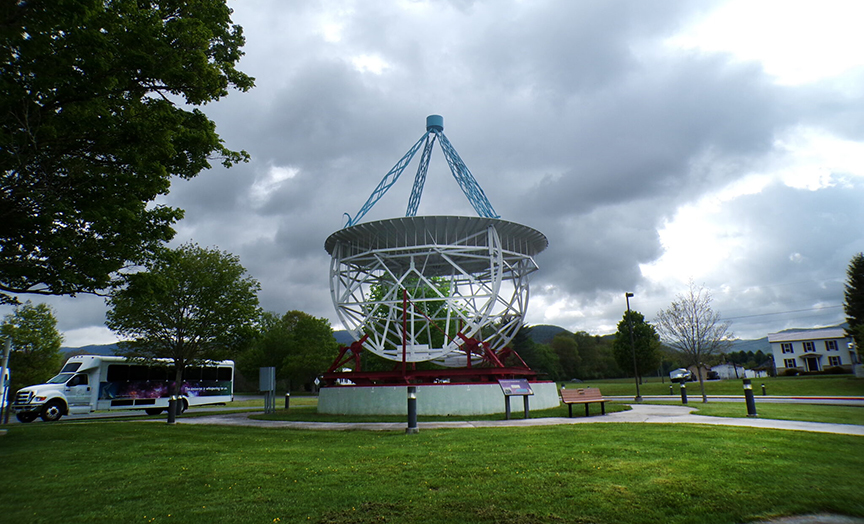
Only film photography allowed
Only diesel vehicles are permitted within the zone around the crown jewel telescope, a 300-foot behemoth with a support structure like an industrial crane. Digital cameras are banned; you must use old-fashioned film cameras.
You can take a bus tour from the science center, but I recommend the walk. It's a neat three-mile loop that takes you past a purgatory of radio telescopes. Most haven't been operational in years, and one has a nuclear bunker under it.
Radio telescopes are undemanding of their audience. They tap into something in the hind brain, some human impulse that appreciates gothic cathedrals and pyramids. The brain says: That's big. Wow. It doesn't matter how many times I go to Green Bank, my first thought is always: Oh, I forgot how big these things are. Wow.
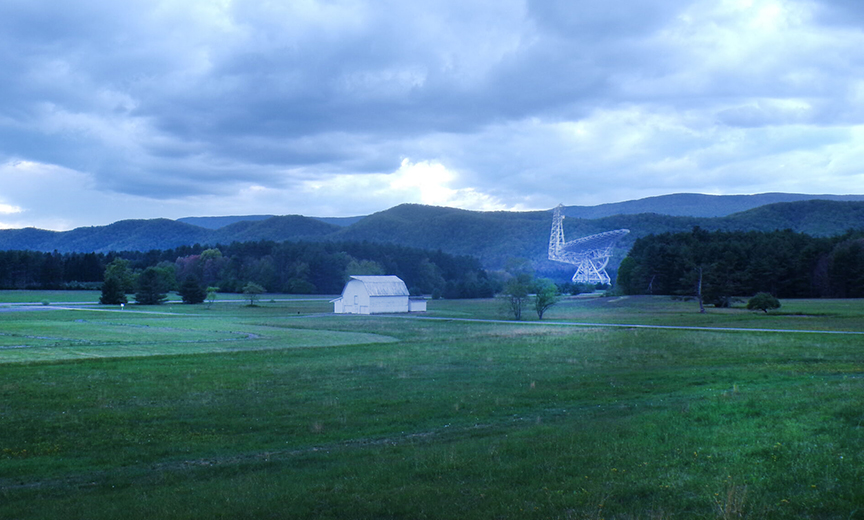
Where to eat and sleep in Pocahontas County
It's good form to take Trader Joe's orders before heading out to the food deserts of West Virginia, where Dollar General is often the only place to buy food. Dana and I bought one night's lodging at a friend's house with tofu, coconut milk, and onions. But for anyone checking out the Monongahela for the first time, there are a variety of campsites and Airbnbs. I recommend avoiding anything in Snowshoe -- the upscale ski resort might as well be another planet from everything else in Pocahontas County. If you're looking for something on the swankier side, the town of Marlinton features several local inns.
As for food, I had been hyping up Dean's Den in Frost, about 20 minutes from Green Bank, for the last week. Dana was starting to get a bit sick of it. "Can I check the menu online?" she kept asking me. "No," I said, since nothing in the Monongahela has an online menu. "You'll like it."
She liked it. Everyone likes Dean's Den. It's a shack by the side of the road, valiantly restored from the time a semitruck plowed into it last year, that serves West Virginia's customary mix of country barbecue and Italian, plus a smattering of whatever else the chef feels like cooking that week. My last time in the Monongahela, I had a surprisingly good plate of General Tso's Chicken. I've joked about Dean's Den being the best restaurant in America, or at least I claim it's a joke. My partner, meanwhile, has actually dreamed about their cheese fries.
Power outages
If the power is out, as it often is in the Monongahela, then Dean's Den will be tragically closed. While it will be hard, I recommend you don't commit yourself straightaway to suicide. In Marlinton, Mim's Kitchen offers casual, fresh food (and very good cheesecake). If you're in the mood for some live music with your dinner, especially roots and bluegrass, check out Old Mountain Tavern.
Oh, and be sure to stop by Mountain State Cakes Bakery in Dunmore for freshly made pepperoni rolls, a West Virginia classic. No, they're not pizza rolls. Watch it.
The steamy history of Cass
By the next morning, I had been out of cell service and Wi Fi for maybe 18 hours. Everything felt slower. Without the ability to check our phones, Dana and I had both started new books and sunk deeper into conversation than usual. I had wished my partner goodnight on the landline like it was 1985 (apologies to anyone to whom 1985 doesn't feel that long ago).
We bade goodbye to my friend and their cats and headed out the door for a hike behind the observatory.
Then we set off to Cass for lunch. There's something deeply eerie about Cass, and it's not the hulking specter of a derelict mill by the river. You don't spend long in West Virginia without becoming desensitized to the signs of a region that the country has failed. Rather, the unsettling thing about Cass is exactly what it prides itself on: rows and rows of white pillbox houses from its days as a logging company town.
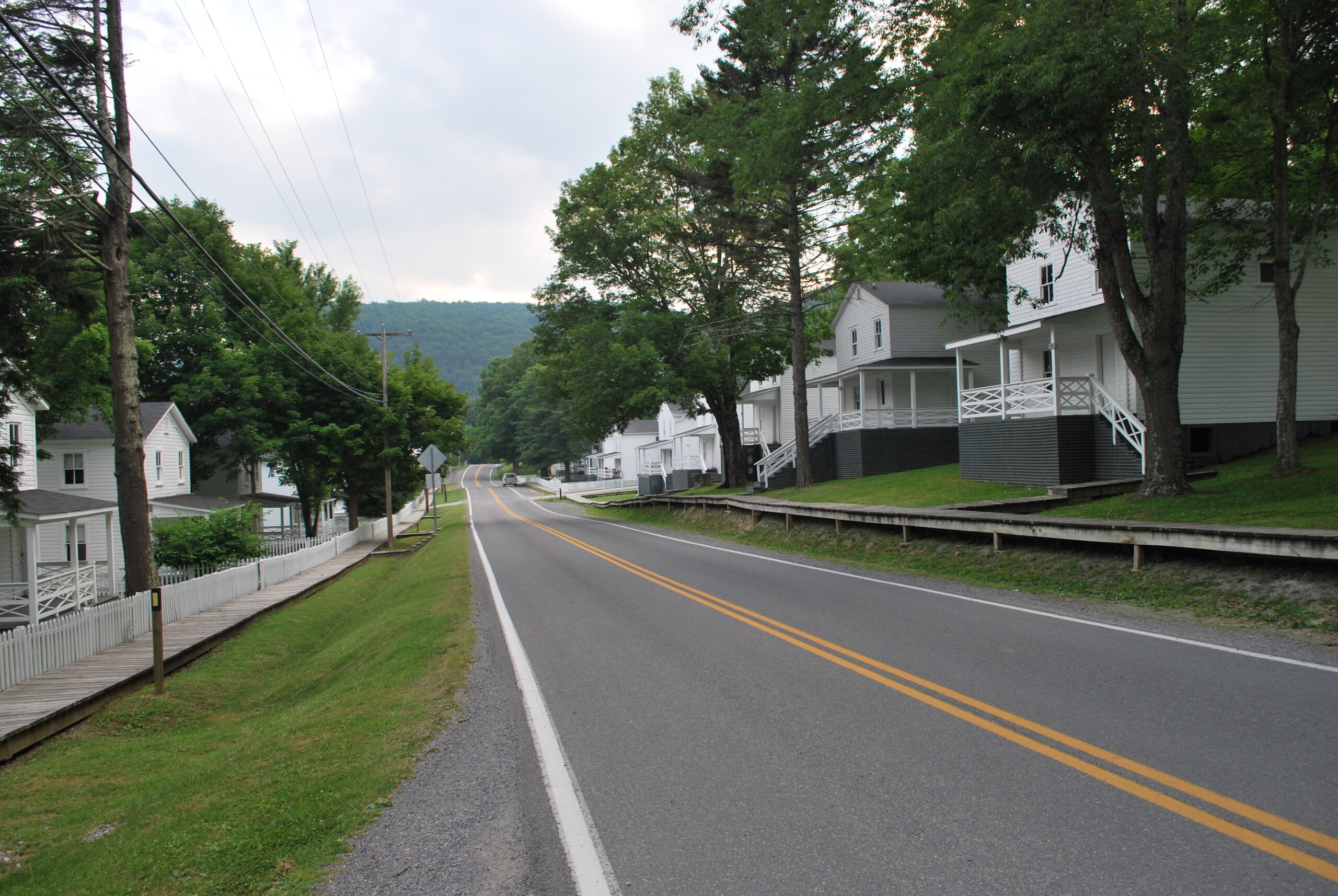
The houses remain cheerfully inhabited and beautifully maintained. A tiny City Hall building lurks over a black iron door labelled JAIL that looks as though it should be restraining a train robber.
And speaking of trains, there's the station. The Cass Scenic Railroad State Park offers hours-long tours through the surrounding landscape. You can even take it up to the ghost logging town of Spruce. Your vehicle: a genuine, century-old steam train running on the old Chesapeake & Ohio line.

Inside the old company store, you can grab a bite to eat at Shay's Restaurant and poke your head into the railroad and logging museum. Alongside copious local foods and keepsakes, there's also a recreation of the old Cass pharmacy, operational during its logging years.

Back into the world
I resurfaced in Monterey 24 hours after I had left it, feeling refreshed. I had missed 80 messages, most of them about some guy called Robert Prevost, and a host of emails. It had only been a day. How was it moral for anyone to receive that many emails in a day?
Living within a nice weekend trip's distance of the Quiet Zone is a privilege. But being able to exit it is more so. When I brought my mother out for her birthday last year, a violent storm swept across the Monongahela. One of my mother's three pedigree Australian Shepherds decided that it was the night that her body was going to shut down. With a pet's unerring eye for inconvenience, she crawled under the bed, whimpering, and wouldn't stop, no matter what my mother tried.
There were no emergency vets in Pocahontas County. There were no emergency vets in nearby Highland County, where Monterey is, or in the county beyond that. In fact, the nearest emergency vet was in Staunton, a full two hours away in the best of weather.
Not to be deterred, my mother woke me at 2 in the morning to let me know she was setting off with her shivery dog into the storm. Once she left, I had no way to contact her.
A fallen tree
She came back three hours later, having made it just past Monterey, where a tree had fallen across the one-lane highway connecting the Quiet Zone with the rest of the world. In the dead of night, with a sick dog and no way of calling for help, she stared at it and wondered if she could move it herself. But she was utterly alone, and there was nothing she could do. She turned around.
As it happened, her dog had -- has -- a nasty form of cancer. As soon as we returned to Charlottesville, she got surgery. They took a lump out of her intestine the size of a fist. (Miraculously, she's still happily chugging along a year later.)
Nothing like that happened on my trip with Dana. But with the lack of veterinary and medical services, fresh food, and infrastructure, it's not hard for people outside the Quiet Zone to question why anyone lives there.
Head out for a weekend, if you're in the DC area. You'll see.
Eighteen bold letters, preserved in a clearing, sight a dark room's view of brave surfers reeling.
From dry ruin's gate to solar's tall mast, chart a historic cross -- the start of one's path.
These are the first lines of a rhyming riddle, posted two days ago on r/sanfrancisco, that kicked off a city-wide treasure hunt.
"We always figured treasure hunting would feature more heavily in life," the anonymous authors announced. "Right alongside quicksand and tattered rope brides."
So they made it happen themselves. To their astonishment, though, San Francisco harbors extremely efficient treasure hunters. Within 12 hours, the treasure had been found.
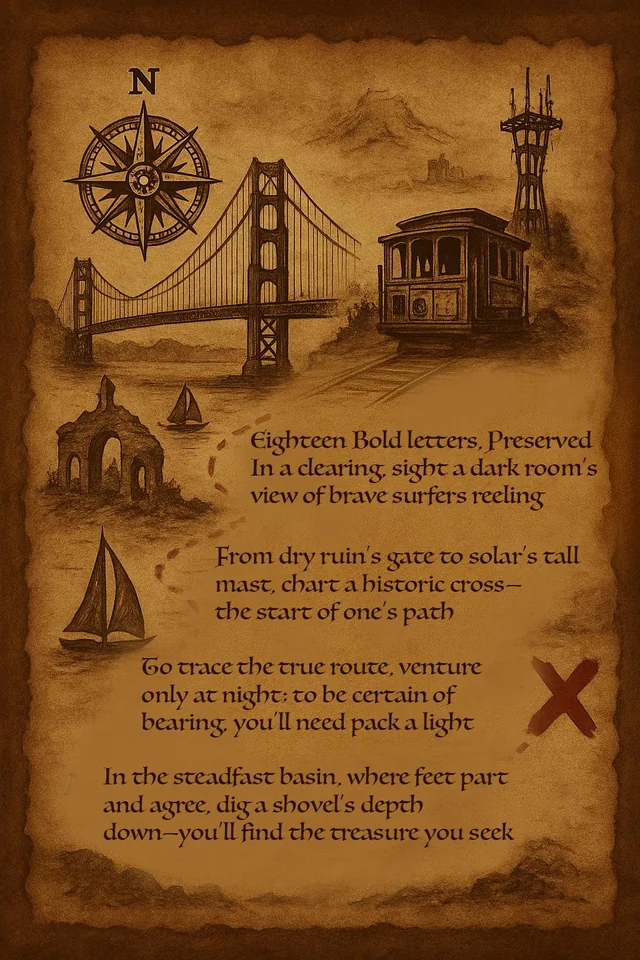
An ominous riddle led treasure hunters to Sutro Baths
"Omg I totally could have gotten the clues to Sutro Baths if I had seen this!" I texted my editor after skimming the riddle for the first time. As a San Francisco native who grew up with a copy of the famous Sutro Baths painting on my father's wall, I put high stock in my ability to parse clues leading towards it.
To trace the true route, venture only at night: to be certain of bearing, you'll need pack a light.
In the steadfast basin, where feet part and agree, dig a shovel's depth down-- you'll find the treasure you seek.
A basin, swimmers, the idea of dry ruins: All of it seemed to lead to the abandoned wreckage of Sutro Baths, which burned down in 1966.
The post on r/sanfrancisco went viral hours after its premiere. Other San Franciscans came to the same conclusion I did and swarmed the ruins of Sutro Baths.

Meanwhile, 9km away...
Three friends and their dog thought differently. The men, who all work in tech, and the dog, who presumably doesn't, decided to work carefully through the whole riddle.
" We figured that the reference to Sutro Baths was probably a red herring, both because it's too difficult to conceal digging and it's also too highly trafficked," said TJ Lee, one of the three men, in an interview with NPR.
Other treasure hunters had ignored the opening line eighteen bold letters, preserved in a clearing. Instead, this group made the connection to the India Park Basin. There, the remnants of a large concrete sign lie disused. Eighteen concrete letters in a bold face.

As it happens, near the letters sits a strange San Francisco landmark. A vintage-colored building overlooks the surf, and its brave surfers reeling: the Camera Obscura, or dark room.
Underneath the Camera Obscura sits the ruin of another historical saltwater pool. Like Sutro Baths, years of neglect doomed Fleishhacker Pool long before its official demise, in this case due to a storm.
So the crumbling entrance to Fleishhacker gave dry ruin's gate. "For those looking at Sutro Baths, we'd note that those ruins are still quite wet," wrote the treasure hunt authors in their solution manual.
Onward to the treasure
The Point of Infinity sundial sculpture on Treasure Island, visible from the coast, slotted neatly into place as solar's tall mast. Then the riddle instructed the hunters to chart a historic cross -- the start of one's path.
The four locations above formed the points of this historic cross. And at their center, X marked the spot. The three friends and their dog dug a shovel's depth down on the coastal West Ridge Trail before hitting something hard.
Only 12 hours had passed since the start of the hunt, and the treasure had been found. Within it: $10,000 worth of historical San Francisco artifacts, gold ingots, and historical currency.

"It's validating to be like, 'I know San Francisco well enough' that we were able to find this in the first spot we checked," team member Austin Theriault told NPR.
As for the hunt's organizers? They're staying anonymous, since they aren't sure if what they did was entirely legal. But according to NPR, they aren't the kind of rich tech bros for whom the city is infamous.
"It was a non-insignificant amount of savings," they admitted.
The city loved them for it.
Back in the prehistoric days of theoretical astrophysics (1985), in a mystical and exotic corner of planet Earth (Fresno, California), a man sat in the back of a car and tried to break the spacetime continuum. His name was Kip Thorne: future scientific consultant on the movie Interstellar, future Nobel Prize winner, and all-around geek.
While he was a respected and innovative theoretical physicist, Thorne had not yet garnered a reputation as the mathematical mind behind some of science fiction's trickiest plot points. He was, instead, known for his deft familiarity with Einstein's equations of general relativity, a flexible set of conditions for how space and time interact. His friend Carl Sagan had called him up for help in solving a problem in his in-progress novel Contact, about radio astronomers who connect with interstellar beings.
Sagan, a science communicator by trade but an astrobiologist by training, needed Thorne's expert eye for the finer points of general relativity. He needed his heroine to get from the Earth to Vega, a journey of 26 light-years. And he needed her to get there fast.

Hyperspace
His initial treatment featured her plunging into a black hole, which carried her on a shortcut through hyperspace to Vega. Hyperspace isn't just a convenient term for hand-wavy science fiction authors. It's a real geometric concept describing space that occupies more than three dimensions. In short, Sagan's protagonist might travel through a fourth dimension, along a route where the distance from Earth to Vega is much less than 26 light-years.
Thorne wasn't having it. After all, all the matter and light that crossed the event horizon of the black hole would congregate at the singularity, accelerated to ultrarelativistic speeds.

"The calculations were unequivocal," Thorne wrote in Black Holes and Time Warps. "Any vehicle for hyperspace travel gets destroyed by the explosive 'rain' before the trip can be launched. Carl's novel had to be changed."
He proposed something even spacier than black holes: wormholes.
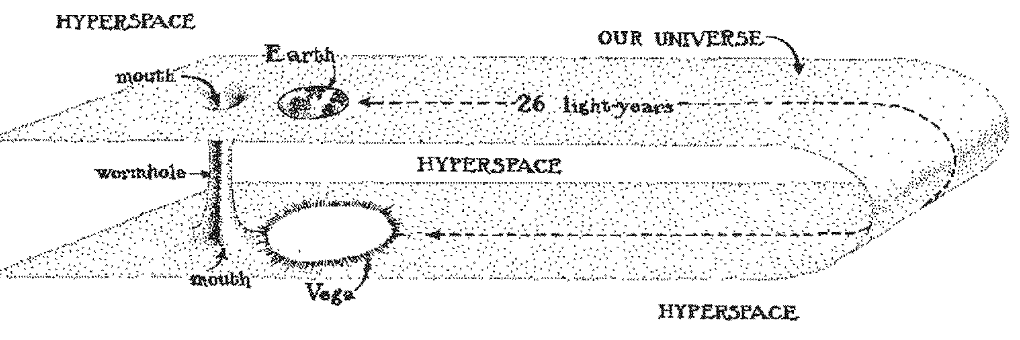
The temptation of wormholes
"If this FTL drive isn't fixed soon, we're dead!"
That's Captain Lee Adama on Battlestar Galactica, and as much as they reference it, the show never explained exactly how their faster-than-lightspeed (FTL) drive actually worked. They're not the only ones. Most science fiction properties lean on an implication of hyperspace tunnels, or wormholes.
In Hitchhiker's Guide to the Galaxy, most ships travel via hyperspace expressways. In Martha Wells' Murderbot series, the sardonic main character hitches rides through wormholes, although how these wormholes form or operate is left up to the imagination. Other authors, like CJ Cherryh, try to throw in a bit more of a theoretical physics vibe, with phrases like "Einstein-Rosen bridge." That's just a fancy name for a wormhole.

The truth is that although FTL travel is the backbone of science fiction, no one has figured out how it might actually work. Kip Thorne's proposition of wormholes, though, shaped the genre for decades.
The tempting thing about wormholes is that they are, in fact, a mathematically sound solution to Einstein's equations. It is absolutely possible for a tunnel to exist between two points in space such that the distance inside the tunnel is shorter than outside. What's not so clear is how such an object could form, or how it could stay open if it did.
The problem with wormholes, Part I
What Thorne struggled with in the backseat of a car in 1985, trying to fix Carl Sagan's plot, is that wormholes don't want to be used for interstellar travel. Previous physicists found that they have a fatal flaw. All the matter that passes through a wormhole causes it to gravitationally contract. Right after forming, it closes. Nothing gets all the way through.
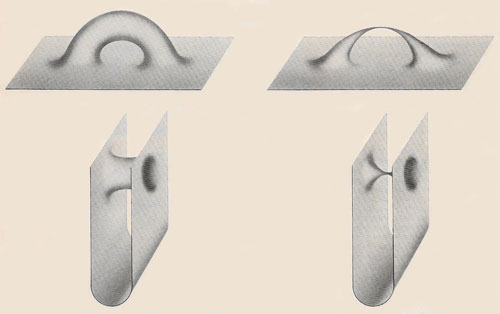
This is called pinching, and Thorne needed to avoid it for Carl Sagan's sake. He calculated that the only way around pinching is to coat the inside of the wormhole with "exotic matter." Exotic matter has a negative energy density from the perspective of light passing through the wormhole.
When traveling at light speed, Einstein's equations result in strange effects, and one of those is that negative energy density isn't technically forbidden.
Thorne's conjectures inspired a flurry of papers on exotic matter and whether it could coat a wormhole. The results, to this day, are inconclusive. We do know that exotic matter actually exists, at least near black holes, where the event horizon disrupts energy fluctuations in a way that favors negative energy density. The same occurs when two uncharged plates approach one another. But we don't know whether such matter would stay exotic on the inside of a wormhole.
For Contact, Thorne was content to skip over the finer details of how the Vega aliens coat their wormhole with exotic matter. But academically, he and his collaborators were only getting started.
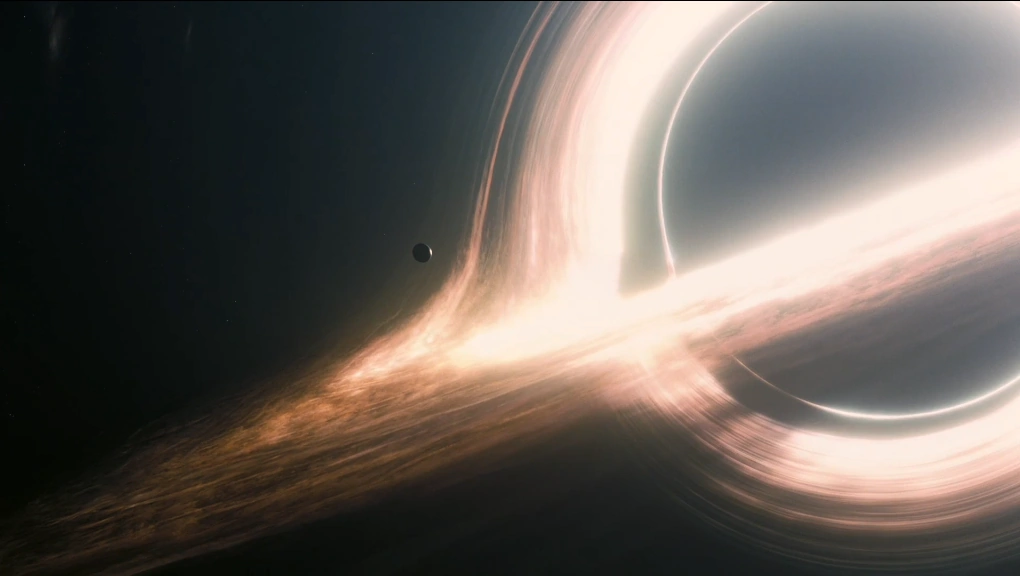
The problem with wormholes, Part II
Say we have exotic matter. Say we can use it to coat the insides of a wormhole so that the sides repel each other and stay open. How do we go about finding a wormhole?
As bizarre as black holes seem, they have a perfectly reasonable origin story. When massive stars get very heavy and can no longer hold themselves up against their own gravity, they collapse into an infinitesimally small point. That's a black hole.
But there's no similar mechanism for the formation of wormholes. At least, not for those large enough to allow travel. At the quantum level, Kip Thorne's graduate advisor, John Wheeler, laid the groundwork for wormhole formation back in the 1960s. He predicted that at very, very small scales, all spacetime should froth and bubble. Based on a fundamental theorem of quantum physics called the Heisenberg Uncertainty Principle, this "quantum foam" might form very small wormholes every second and annihilate them the next.

So can one forcibly enlarge a wormhole from the quantum to the classical regime? The answer lies in the realm of quantum gravity -- an enduring and unobtained Holy Grail in theoretical physics.
That's a no-go.
How wormholes imply time travel
Let us create a wormhole through unspecified quantum mechanical processes. Despite its immaculate conception, free of the bizarre time effects plaguing other proposed creation mechanisms, it will still succumb to the temptation of time travel.
The classic example, first conceptualized by Kip Thorne shortly after his contact with Contact, banks on an effect called time dilation. When objects move very close to the speed of light, the time that the object experiences flows more slowly than the time of a stationary observer. Think of Ender's Game, in which the protagonist skips forward 2000 years between the first two books because of how much time he's spent on very fast spaceships.
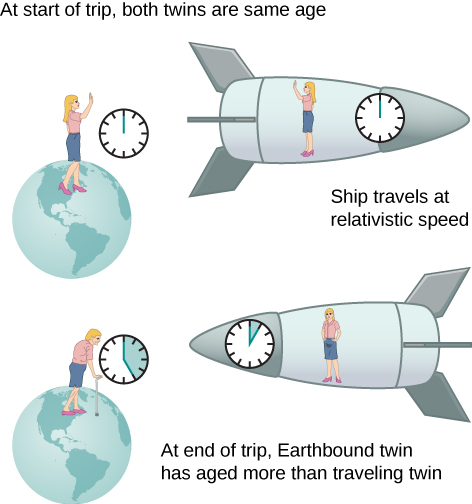
If Ender takes one end of a wormhole with him on his spaceship and leaves the other end on Earth with his sister Valentine, the wormhole will connect his sister to his time frame. Say he spends 10 months on a round-trip voyage and winds up back on Earth where he started. Then 10 months after his departure, Valentine can look through the wormhole and see him back on Earth.
But say that thanks to time dilation, from Valentine's perspective on Earth, Ender's trip takes 10 years. When he finally returns to Earth, entering his side of the wormhole will return her to her side, 9 years and 2 months before.
More paradoxes
This is where all sorts of paradoxes come into play. What if, for instance, Ender uses this setup to journey 50 years into the past and kill his own grandfather? The world misses out on one very enjoyable novel and quite a number of mediocre ones (sorry, Speaker for the Dead fans). Then no Ender would exist to go kill his grandfather, so his grandfather would live, and Ender would be born once more.
Bizarrely, that scenario actually makes perfect sense in a quantum mechanical world. The laws of quantum mechanics don't predict outcomes, just the probability of different outcomes. Attempting to understand what that actually means is an entire branch of physics called quantum foundations. It leads to elegant but unsettling theories such as Hugh Everett's "many-worlds" theory of splitting timelines. Each time a quantum mechanical system is tested, Everett proposes, the universe settles into one of many possible timelines, branching constantly.

This fits in nicely with the grandfather paradox. There is some probability that a man arrives out of nowhere and murders Grandfather Wiggin in his youth. There exists some other probability that Grandfather Wiggin carries on happily, eventually allowing Ender to be born and travel backward in time. When the moment comes for him to die, the universe makes a choice. We lift the lid and peer in on Schrodinger's grandfather: either he's alive or dead, but a second ago, he was both.
Why time travel (probably) can't exist
So, as far as we can tell, under the basic principles of quantum mechanics, time travel isn't as obviously a no-go as one might assume.
Yet we know of at least one mechanism by which any wormhole acting as a time machine might destroy itself. Kip Thorne, his graduate student Sung-Won Kim, and Stephen Hawking calculated that the same kind of quantum foam present in all space might build up inside a wormhole, destroying everything inside it and causing it to pinch shut.
The keyword here is might. We don't know enough about quantum gravity to say whether it would.
Hawking hypothesized that the universe would protect itself from time travel to avoid the manifestation of quantum phenomena on a human scale. More importantly, he wrote, this would "make the universe safe for historians."
He tested his theory in 2008 by hosting a party for time travelers. The day after the party, he sent out the invitations. No one showed up.
A majority of physicists agree with his conjecture. But to this day, no one can conclusively resolve it. That would require a working theory of quantum gravity. We're a long way away from that -- unless anyone from the future wants to help us out.

How do you speed up something that only interacts regularly with itself?
That's the question gripping astrophysicists at the Cubic Kilometer Neutrino Telescope (KM3NeT). In 2023, before the telescope was even completed, a high-energy neutrino shot through the Earth's atmosphere and into the detection zone of KM3NeT. Since KM3NeT looks for neutrinos, finding one wasn't a huge surprise. But this was the most energetic neutrino ever detected. So energetic, in fact, that it crashed their computer.
Where did it come from?
A telescope at the bottom of the ocean
KM3NeT looks about as much like a traditional telescope as, say, a rhinoceros does. It consists of indented spheres of metal standing guard over smaller glass spheres hanging from strings. The whole contraption sits 3,500m underwater at the bottom of the Mediterranean Sea.
Its strange design comes from its purpose: to hunt some of the most elusive particles in the universe. Neutrinos are omnipresent, with over a billion of them flowing through each square centimeter of space every second. But they barely interact with matter, and not at all with light or magnetic fields.
Still, some dramatic events create ultrarelativistic neutrinos that move at almost the speed of light. Both cosmic rays hitting the upper atmosphere and supernovae create neutrinos observable from Earth. Astrophysicists try to detect these energetic neutrinos.
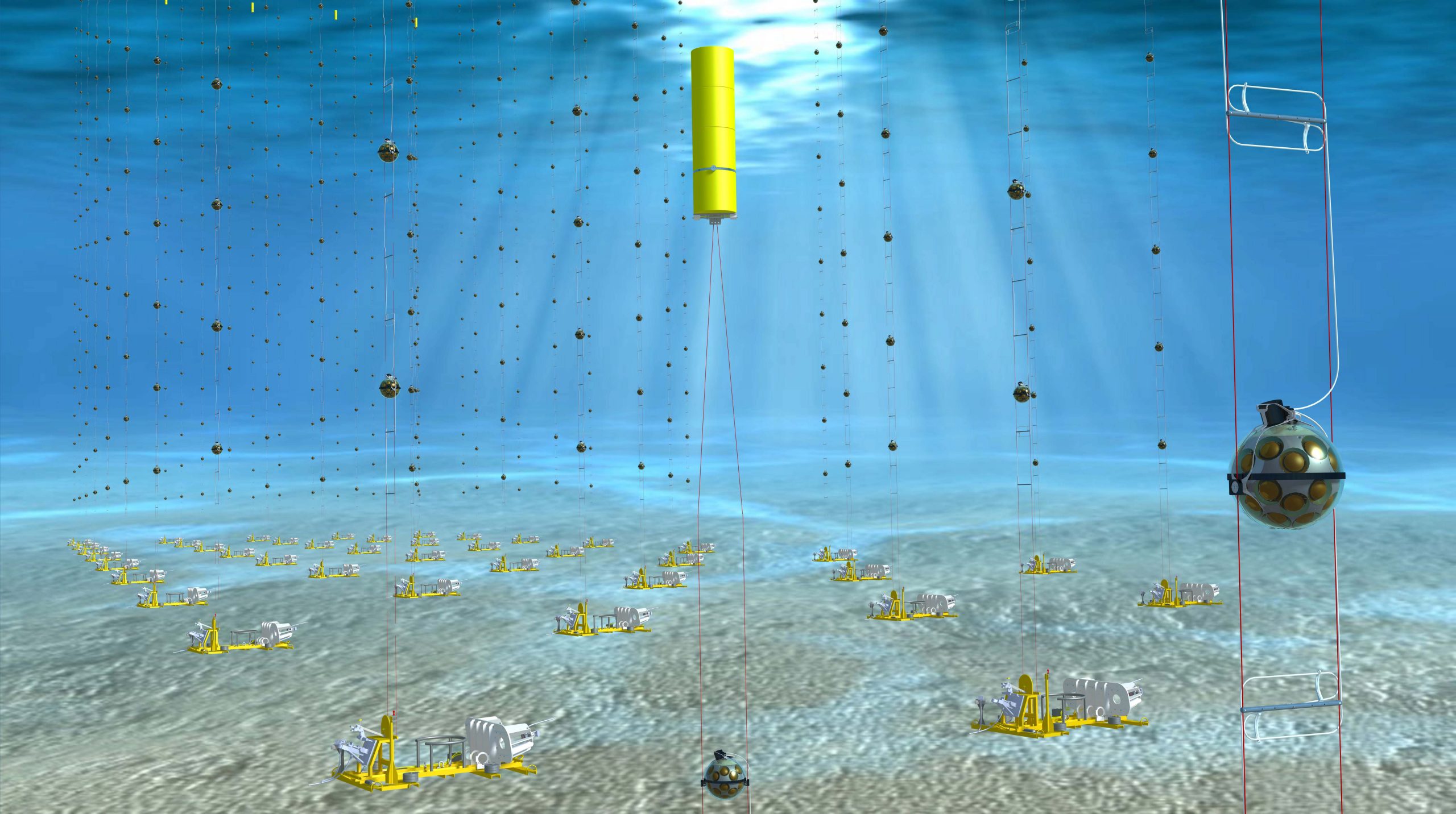
But detecting something that doesn't interact with light, magnetism, or most matter is mildly challenging, to say the least. The most famous neutrino detector in the world, IceCube, uses the Antarctic ice sheet to do so. KM3NeT opts for the salty waters of the Mediterranean Sea.
In water, light travels at only 75% of its speed in air, but neutrinos keep speeding along at the same velocity they always have. But even for a weakly interacting particle, 3,500m of water is a lot of water. Very occasionally, neutrinos collide with a proton or electron in the water with exactly the right angle and momentum to interact via the weak nuclear force.
These interactions can produce charged particles, including muons, which are more susceptible to interactions with matter. When the muons hit water molecules at velocities higher than the speed of light in water, they create a shock wave akin to a sonic boom. That, in turn, releases blue light called Cherenkov radiation.
The suspended spheres of glass and metal in KM3NeT are optical detectors searching for this Cherenkov glow. When they detect it, they use its strength and direction to trace back where the muon-molecule collision happened and what the muon's energy was. From there, they can work out the energy of its parent neutrino.
The neutrino that crashed the computer
Lowering precious optical devices to the sea floor takes a lot of time. By February 13, 2023, only 6% of KM3NeT detectors were in place. They had been detecting a few neutrinos here and there, but that day, something strange came in.
"When I first tried looking at this event, my program crashed,” KM3NeT physicist Paschal Coyle told New Scientist.
It was a neutrino unlike anything seen before. Hundreds of times more energetic than the previous record-holder, it defied traditional astrophysical origins like supernovae, gamma ray bursts, or black hole accretion.

When they looked in the region of the sky from which the neutrino came, they found nothing. No signs of supernovae, energetic distant galaxies, or stellar collisions. Just empty space.
Empty space does have its own background field of neutrinos, but high-energy neutrinos are exceedingly rare.
The team's paper on the event came out earlier this year in Nature. In it, they calculate the rate at which we should be observing such neutrinos and find that about one should show up every 70 years. The chances that such a neutrino would show up one year into the run of a telescope that was only 6% completed are stunningly low.
The KM3NeT team has another hypothesis. Particle physicists have long theorized that high-energy cosmic rays (protons and electrons traveling near the speed of light) could interact with the background light of the universe and produce massively energetic neutrinos. This event would be exceedingly rare and has never previously been observed.
At least, as far as we know. It's possible that KM3NeT observed it in 2023. But astrophysicists have a lot of work to do before the identity of the mysterious neutrino is anywhere close to resolved.
At 23, Kyle Parker paddled all 682km of the Wisconsin River in a blur of muscle fatigue and no sleep. Coming in at 5 days, 19 hours, and 22 minutes, he set the fastest known time for the route in a solo canoe.
Parker wants to take his time for his new project, which will begin in just under a month.
"Today, we travel by all sorts of modes, often opting for the easiest and fastest we can find," he writes on his blog. "I am looking forward to slowing down to just a few miles an hour and really getting under the skin of the country."

The U.S. from 'tip to tip'
Parker's big dream is to traverse the country from northwestern Washington to southeastern Florida. He expects the trip to take six to eight months.
The route encompasses the frigid, deep waters of Puget Sound, hundreds of kilometers of rivers across the continental United States, the warm waves of the Gulf of Mexico, and even a few days on the western seaboard of the Atlantic Ocean.
He will have to contend with more than just choppy water and fierce currents. Usual canoe routes feature regular portages over dams when the interruption of the river requires carrying the canoe. But Parker will have to portage hundreds of miles over highways and, on one occasion, the continental divide.
"But it’s not just about the scenery or the wildlife, or even the excitement of being absolutely miserable," Parker writes. "It’s also about the people I’ll meet and the stories I’ll uncover. I want to connect with locals...and experience the culture of each place I visit."
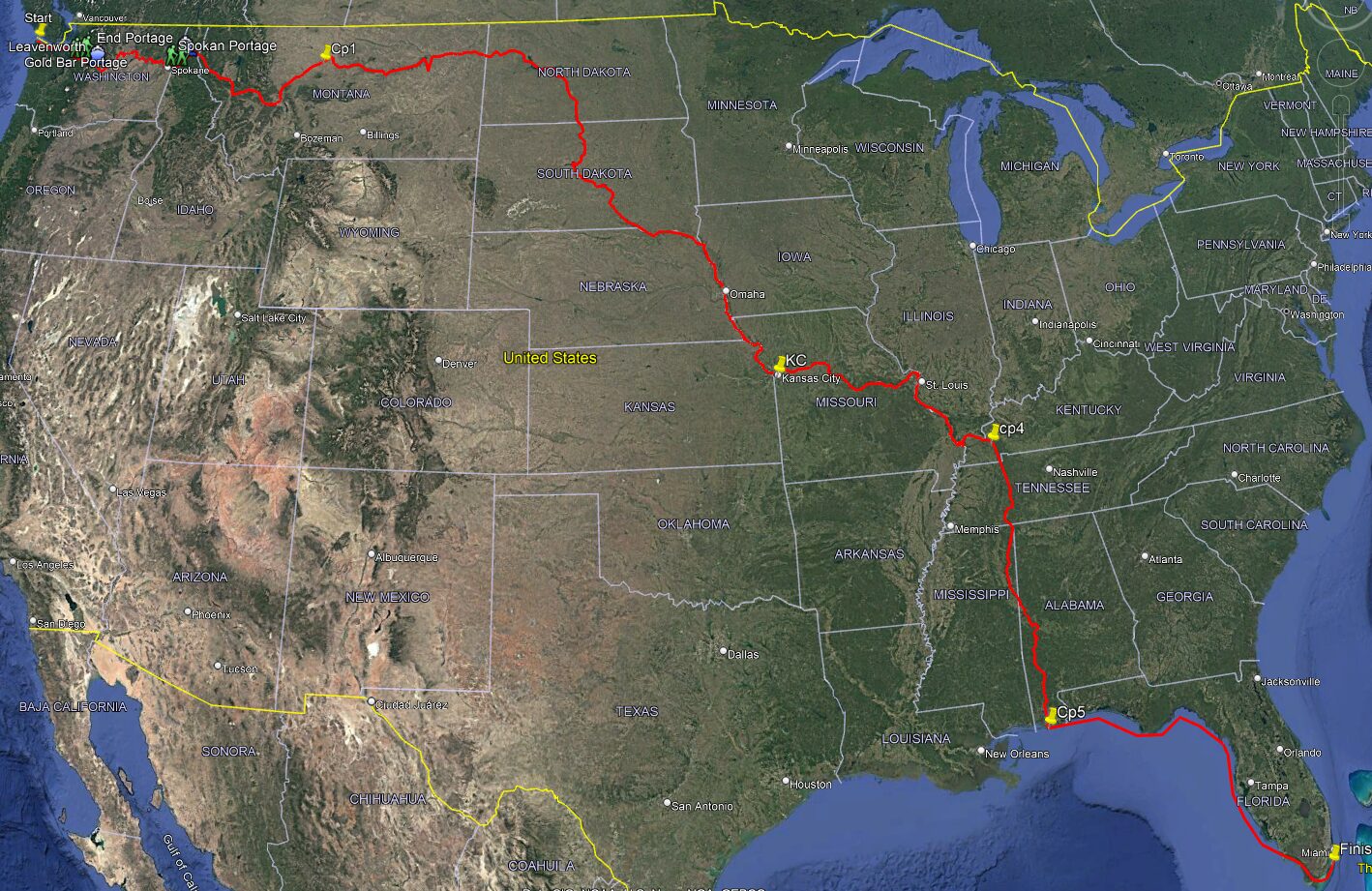
Carrying on Stachovak's legacy
This kind of expedition is unusual but not unheard of. In 2009, Parker's fellow Great Lakes native Jake Stachovak completed the 9,237km Great Loop by kayak. The Great Loop starts in Portage, Wisconsin, and ends in Portage, Wisconsin, with a brief detour to the Gulf of Mexico. In 2022, Stachovak passed away to cancer at the age of 46.
Now his widow has supplied 24-year-old Kyle Parker with a portage cart, water bag, radio, and a pink cup holder that all belonged to Stachovak.

Parker has support from local paddling stores, too. Ethan Scheiwe, the manager of Madison's Rutabaga Paddlesports and one of Parker's sponsors, told the Wisconsin State Journal, "It’s a very daunting trip, but Kyle is the right person for it. If he does this, it will be the National Geographic adventure of the year. It’s that kind of trip.”
Parker sets out on May 1. You can follow the adventure on his blog.
The year is 2021. On Earth, COVID-19 rages. NASA is finally about to launch the James Webb Space Telescope (JWST), prophesied to usher in a new era of astrophysics. And a Cambridge professor named Nikku Madhusudhan writes the unobtrusive first entry in his to-be trilogy of papers on nearby exoplanet K2-18b.
Madhusudhan and his two collaborators propose a new category of planet, which they dub a "Hycean" world. Much larger than Earth but smaller than Neptune, Hycean worlds would boast water oceans under a hydrogen-rich atmosphere. In terms of habitability, they would be more flexible than rocky worlds like Earth. Their atmospheres would keep their temperatures stable. They might even have plentiful aquatic life.
Flash forward to 2025, and astronomers have yet to confirm the existence of Hycean planets. But last week, Madhusudhan's team at Cambridge claimed the discovery of potential biosignatures on K2-18b, one of their candidate Hycean worlds. The biosignature in question is the molecule dimethyl sulfide, largely produced on Earth by phytoplankton.
Headlines around the world have run rampant with this sign that we might not be alone. However, what many outlets leave out is the history of the claims in question and the concerns raised by a host of astronomers, many of whom are deeply enthusiastic about the search for extraterrestrial life. The first "hints" of possible life, reported by the Cambridge team in 2023, met with widespread derision among the astronomical community. The same is true for this new evidence in 2025.
That's not to say that the new results are obviously false, or even that aliens are definitively not involved. But the story of dimethyl sulfide on K2-18b isn't a simple one.
JWST is the best in the game, but the game is a hard one
Sitting at 1.5 million kilometers from Earth, JWST is the premier instrument in the solar system for observing exoplanetary atmospheres.
Under irradiation from their host star, atoms and molecules tense up, absorbing light at specific wavelengths. When they relax again, they emit that light. Observing patterns of missing or surplus light allows astronomers to identify the chemistry of the universe.
Much of the field of astrochemistry focuses on either the diffuse gas in interstellar space or the dusty rings around protostars. While not simple, these systems don't hold a candle to the complexity of exoplanet atmospheres. Planets have so much gas, such turbulent atmospheres, and are so irradiated by their host star that their light signatures are a blurry mess. Different atoms and molecules all jockey with one another for space. If astrochemists typically deal with barcodes, exoplanet atmospheres are like identifiers from the 17th century, stored in a damp warehouse, half-eaten by moths.
Oh, and if you want to take a photo of it, you have to do it while it's on the hood of a car with its brights on. The light from stars overwhelms anything from the planet. Astronomers use JWST to analyze the light coming from the star while the planet is in front of it, and compare that to the light coming from the star while the planet is behind it. This technique, called transit spectroscopy, separates the light from the star and the light from the planet. It's also very, very difficult.

'Possible' biological activity
In October of 2023, Nikku Madhusudhan and his team published the results of their JWST observations of K2-18b. Their paper, entitled Carbon-bearing Molecules in a Possible Hycean Atmosphere, drew less attention for its carbon-bearing molecules and more for its discussion of dimethyl sulfide.
Unlike many other kinds of spectra, astronomers can only parse exoplanet spectra using complex models. These models run through different options -- more methane, less methane, more ammonia, less ammonia but at a higher temperature, etc. -- to find the best fit. But the models require educated guesses on what molecules might be in the atmosphere. The chosen molecules can greatly affect the model's conclusions.
So when the Cambridge team ran their models on their JWST spectra of K2-18b, they limited the options to typical molecules found in exoplanet atmospheres: water, methane, carbon dioxide, and so on. And then, building off their 2021 work on Hycean worlds, they added five molecules they identified as biosignatures. These included dimethyl sulfide.
The best-fit model incorporated dimethyl sulfide at low confidence. According to their model, there was a 66% chance they had detected dimethyl sulfide, and a 33% chance it was random noise. Further muddying the issue was the fact that the JWST instrument used has a gap in the region where dimethyl sulfide is strongest.
The authors theorized that the dimethyl sulfide might originate from an ocean filled with algae-like life, despite the lack of other chemical byproducts associated with phytoplankton. They admitted, however, that future observations were required.
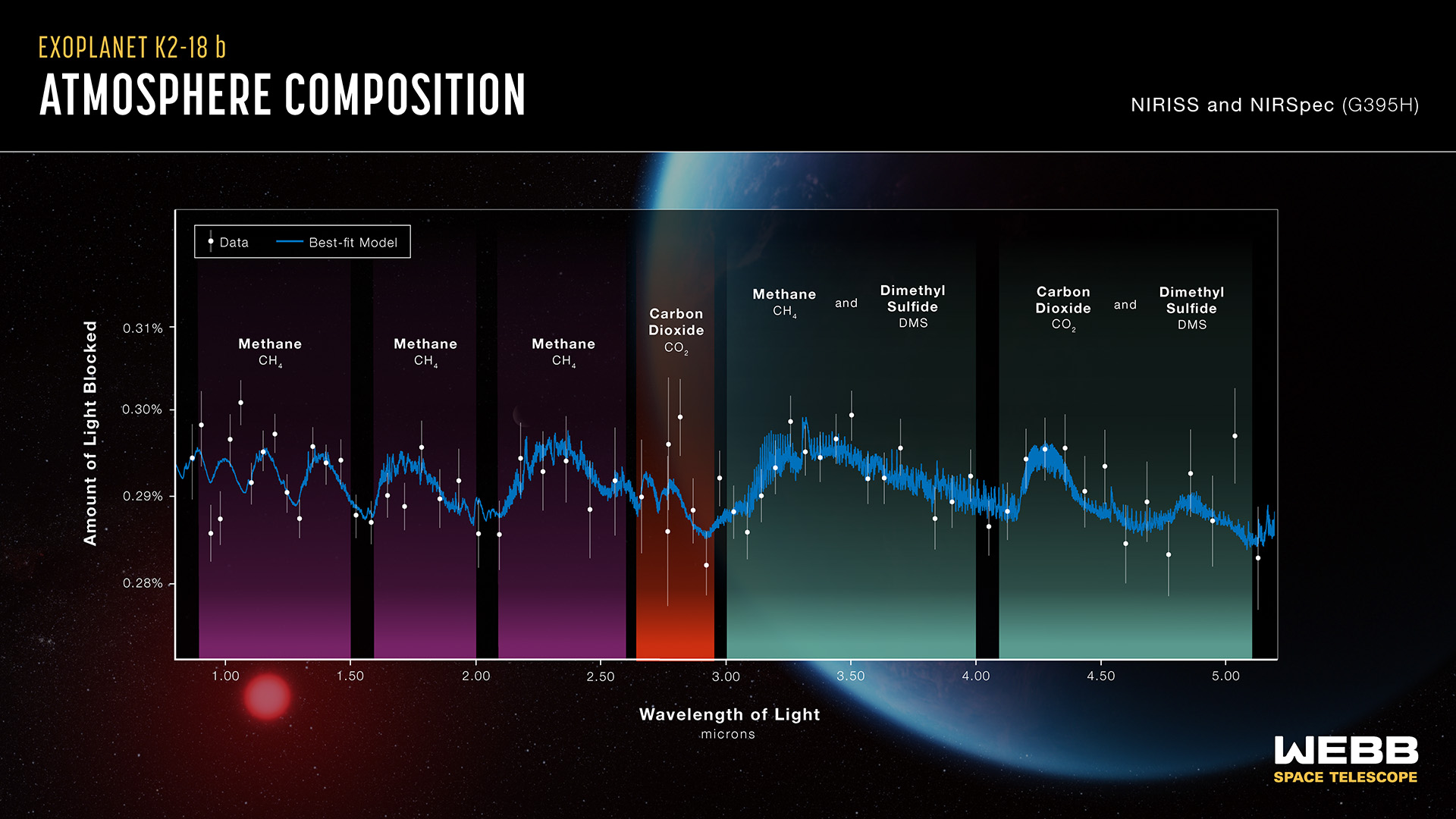
Follow-up observations on dimethyl sulfide
“This is a revolutionary moment,” Nikku Madhusudhan told The New York Times in an article published last Thursday. His new results were soon to be published in The Astrophysical Journal Letters. A deluge of comments on the NYT piece asked to read the actual paper, to no avail until the following day, when the press embargo lifted before the actual paper came out. “It’s the first time humanity has seen potential biosignatures on a habitable planet,” the author enthused.
The Cambridge team's new paper reports on follow-up observations using a different instrument on JWST, this time without a gap in the region of interest. Their models came back with higher confidence this time. They also returned a hit for dimethyl disulfide, a relative of dimethyl sulfide and another potential biosignature.
Many astronomers noted the results were tentative, including Madhusudhan himself. "It is in no one’s interest to claim prematurely that we have detected life," he told The New York Times. But that didn't temper his enthusiasm. “Given everything we know about this planet, a Hycean world with an ocean that is teeming with life is the scenario that best fits the data we have."

The pushback
Not everyone is as thrilled as Madusudhan.
ExplorersWeb spoke with Anthony Remijan, an astrochemist and interim director of Green Bank Observatory.
"There are probably dozens of molecules that can fit the extremely low resolution, low sensitivity of the 'features' seen in the JWST spectrum," said Remijan. "To claim they can be attributed to a singular, unique molecule such as DMS [dimethyl sulfide] is an extraordinary claim. As such, it should be reinforced by extraordinary data, which is not what we have here."
In fact, the new paper doesn't address a recent reanalysis of the 2023 data by a separate team that didn't find any evidence of DMS or even that K2-18b actually has an ocean. Some work has suggested K2-18b might be covered in magma rather than water, and therefore not a prime candidate for phytoplankton. Perhaps most crushingly, several recent papers show that dimethyl sulfide doesn't even need life to exist. It's also found on comets, which are not notable hotbeds of algae.
Remijan is particularly concerned about the validity of dimethyl sulfide as a biomarker.
"Over the past decade, interstellar urea was confirmed in the [interstellar medium] where at one point, urea was thought only to be formed by biological processes," he pointed out. Urea is the main component of urine. "Obviously, this is not the case in the [interstellar medium]."
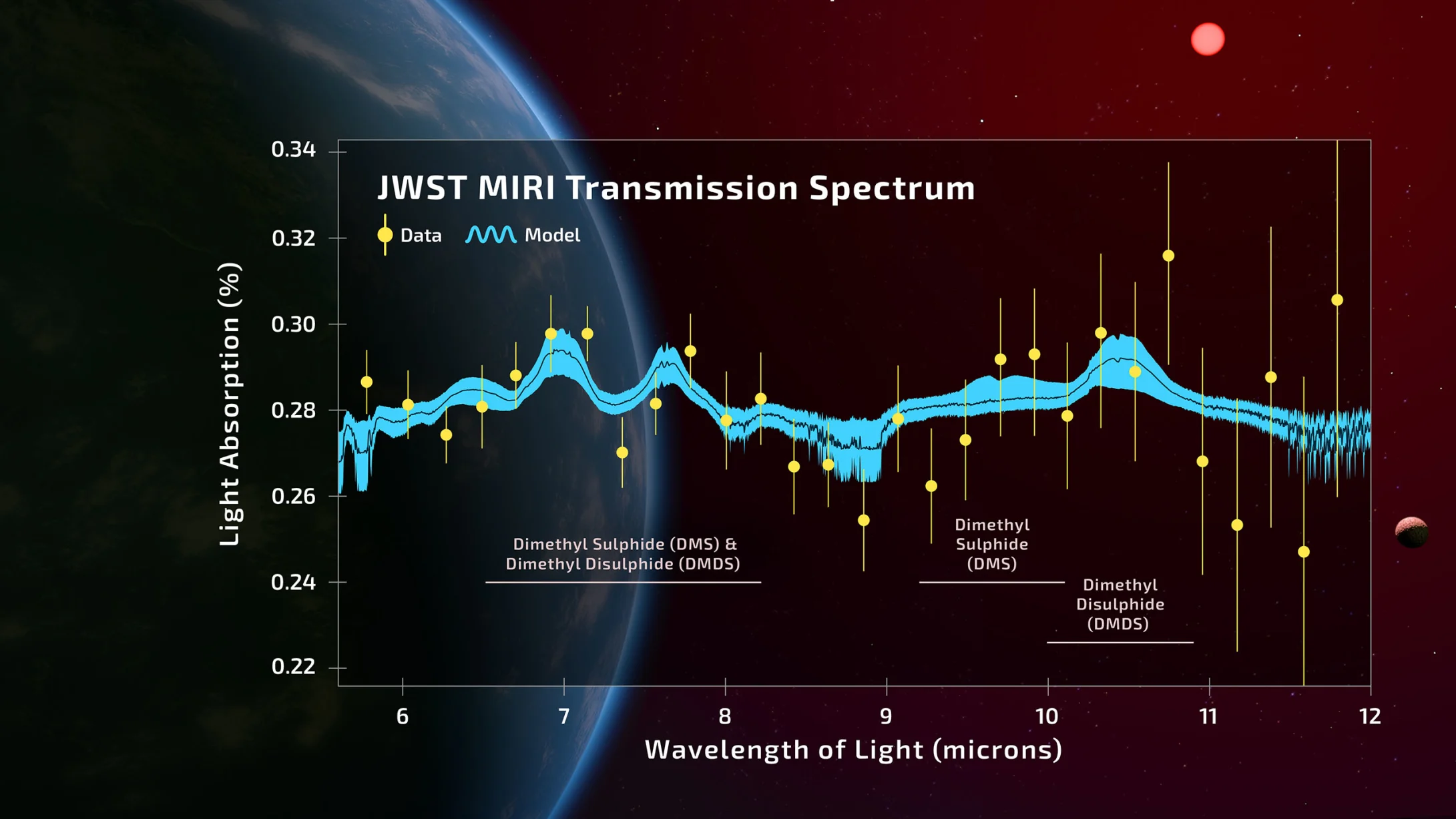
'Practitioner vs commentator'
The Cambridge team acknowledges the uncertainties, but stand by their conclusions. When an interviewer brought up the biosignature issue on BBC Radio 4, Madhusudhan said, "This is the difference between a practitioner and a commentator. From a practitioner's point of view, this is as good as it gets in science, and you just have to recognize it. But for that, you have to be in the field, not outside."
As it happened, the interviewer questioning him was Chris Lintott, a published exoplanet astronomer.
In the press, too, some skeptical voices have tempered the hope for aliens. A scathing article in The Atlantic noted that "the word possible is doing load-bearing — if not Atlas-like work -- in these headlines."
Scientific American, meanwhile, interviewed Chris Lintott before his conversation with Madhusudhan on BBC Radio 4. "Dimethyl sulfide should exist in a chemical network," he told them. "If it’s produced by biology, it should break down, and the raw materials such as H2S [hydrogen sulfide] used to make it should be visible in the spectrum, too. They aren’t."
A blind search for life
The day after the Cambridge team's press release, Nikku Madhusudhan's former graduate advisor, MIT astrophysicist Sara Seager, published a paper of her own. Along with her collaborators, she analyzed the sensitivity and precision of JWST's instruments in relation to exoplanet atmospheres. What she found wasn't hopeful.
In a world racked by insecurity, political strife, and environmental degradation, it's no surprise that so many of us want to believe in life on another planet. But according to Seager, we'll have to wait.
She writes, "With JWST, we may never be able to definitively claim the discovery of a biosignature gas in an exoplanet atmosphere."
And Anthony Remijan adds:
"To invoke a biological origin suggests there is no abiologic way to form these molecules, which is simply not the case. We are just beginning to scratch the surface on how molecules can form in these extreme environments, where [it was] once believed that no molecule should ever exist in space, except for hydrogen. So even if DMS was found in space, there is likely an abiogenic process we haven't thought of yet that formed it."
Everything that falls into a black hole falls in at the same time. Perhaps in the distant past, some unfortunate alien astronaut was sent past the event horizon to explore what lies beyond. From our perspective, he is still falling across the threshold. He has been since he first fell in, back before his civilization crumbled, before his home planet tumbled into its sun, and that sun collapsed into a white dwarf.
From his perspective, he only just crossed it. What will he find on the other side? As of right now, physics only has guesses. In this week's Great Mystery of Outer Space, we cover the uncertain insides of black holes.

Black holes might be mysterious, but they're real
Albert Einstein believed black holes to be a grand mistake. They were a natural extension of his theory of general relativity, a set of otherwise airtight formulations of how gravity and light behave, but they could not possibly be real. After all, how could anything have mass if it was infinitely small? How could it trap light within it, thereby removing information from the universe?
He set out to disprove their existence in a 1939 paper, and while his conclusions were correct, he started from a set of assumptions that were not.
Unfortunately for Einstein, the existence of black holes has now been proven over and over again. First, by strange X-rays from a star being shredded apart by something massive. Then came the ultra-bright radio emission in the center of galaxies from disks of matter orbiting an invisible center. Strange orbits, things lurking at the heart of supernovae remnants, and huge jets of plasma in distant galaxies all added evidence.
In 2015, the Laser Interferometer Gravitational-Wave Observatory (LIGO) detected gravitational waves from a pair of distant black holes colliding. And finally, in 2019, the Event Horizon Telescope (EHT) succeeded in directly imaging the center of nearby galaxy M87. Black holes don't emit light, and the shadow they leave is visible against the bright plasma around them. The EHT images of M87's black hole shadow are the closest we can get to photos of a black hole itself.
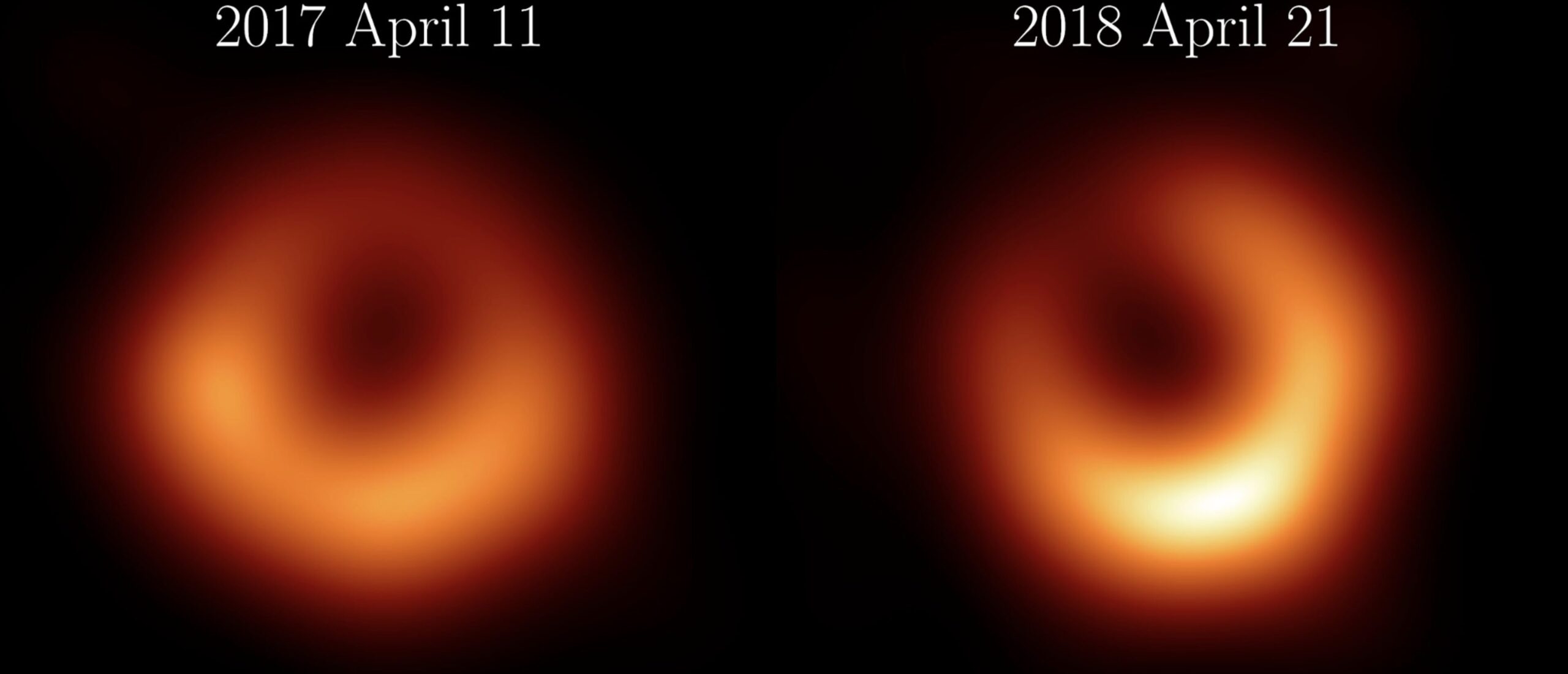
The anatomy of a black hole
Hear me out: black holes are the simplest objects in the universe. No, really, I promise. They only have two features of note.
The first is the event horizon, which isn't technically part of the black hole itself. Instead, it's the distance from the black hole where gravity becomes so strong that nothing, not even light, can escape the inexorable pull toward the center. Material caught in the black hole's orbit circles around the event horizon, disrupted by the strong gravity and by colliding with other matter. This is what causes the bright rings known as accretion disks and the flares called, in various different circumstances, quasars or active galactic nuclei.
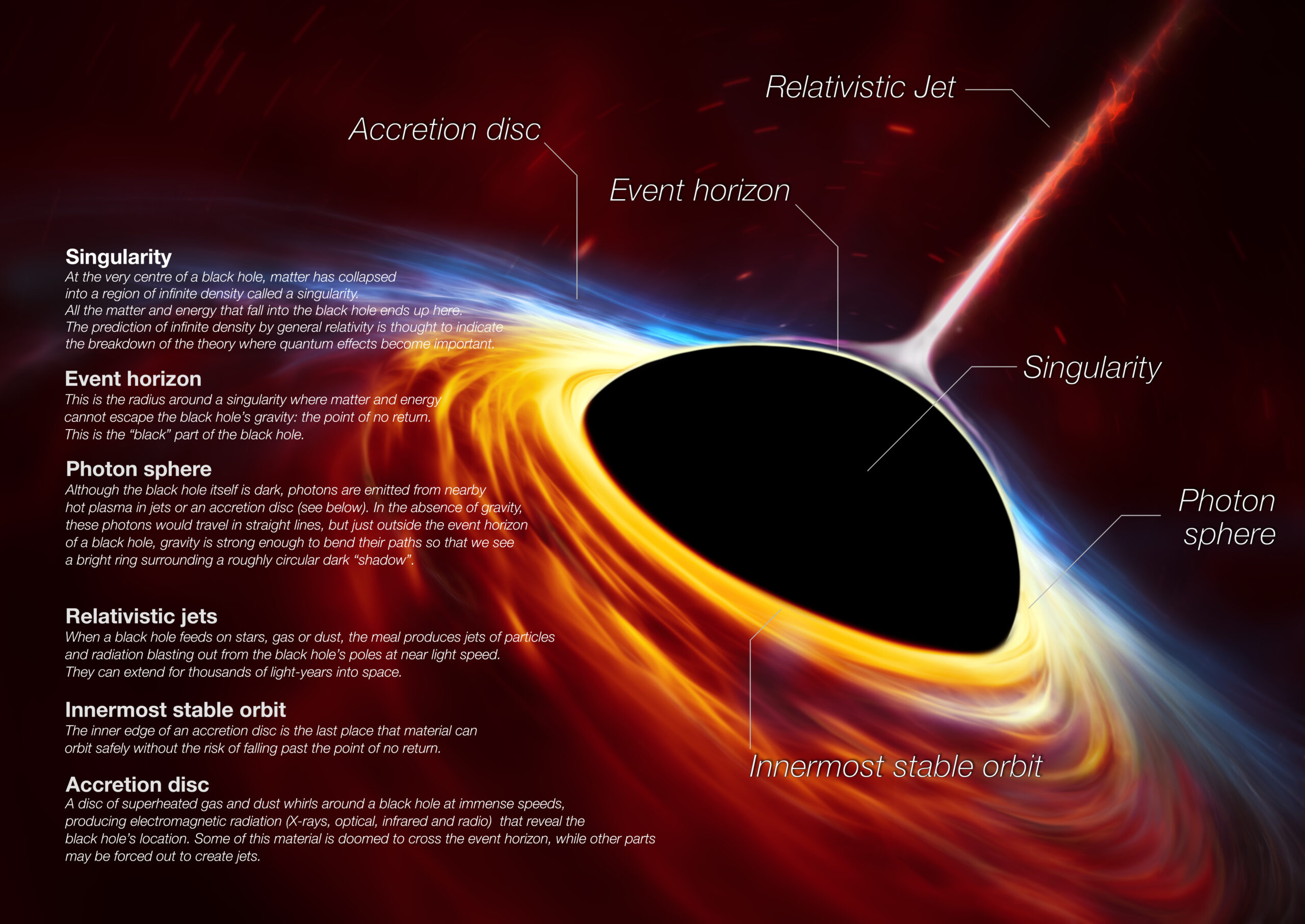
Right at the event horizon is where things get very, very strange, but it's a known kind of strange. The laws of general relativity predict that everything that crosses the event horizon crosses it at the same time, and to an outside observer, things crossing it freeze. In fact, before physicist John Wheeler coined the term "black holes," most physicists referred to them as "frozen stars." (Personally, I find the original name much more evocative.)
Far below, at the center, lurks the singularity. It is an infinitely small point or, in certain peculiar cases, an infinitely thin ring. It can weigh up to 1011 times the mass of the Sun. It has no dimensions, no volume, no time. But it has a lot of mass.
Just what is a singularity?
In the clumsiest terms, a singularity is a place that's very weird compared to everything else around it. The usual laws don't seem to behave so well around singularities; that's what makes them so singular. The idea of a point with infinite density makes sense on paper. It falls right out of Einstein's equations, much to the consternation of Einstein himself. But elsewhere in physics, the presence of singularities tends to indicate the theoretical models are missing a few components.
That's what many physicists believe is happening with the black hole singularity. The infinitely small point might not physically exist, but general relativity can't quite grapple with the true nature of black holes.
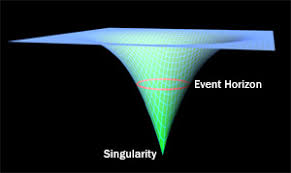
If the singularity is quite small but not infinitely so, then it's the purview of the theory known as quantum gravity. Unfortunately, quantum gravity barely exists.
The world of physics needs a mathematical formulation of how gravity behaves at small scales. It needs something revelatory and revolutionary, the quantum gravity equivalent of general relativity. That's a hard ask. The only widely popular framework to attempt it is string theory, an astoundingly beautiful theory of nature that, after more than 60 years of development, has yet to predict anything testable.
So the nature of the singularity remains, for now, a mystery.
Okay, but what would the 'singularity' actually do?
We don't know what a singularity is. Do we know what it does?
The answer is maybe. General relativity is a set of laws, not a recipe. Mathematically, there are many recipes for how space works that obey the laws of general relativity. Among these recipes (obscurely called "metrics" in physics lingo), several are more pertinent to our lived reality than the others.
The Schwarzschild metric, for instance, describes spacetime around spherically symmetric points, black holes included, as long as those points aren't spinning. The Kerr metric takes it a step further and describes spacetime around points that are spinning, which adds in a slew of bizarre effects with intimidating names like "frame dragging."
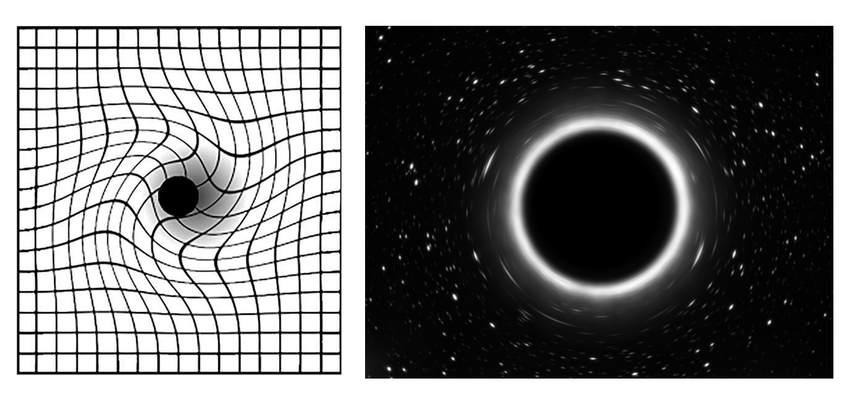
Buried in some of these distinct metrics are places where Einstein's equations give out. With well-understood metrics there as guide rails, physicists can fill in some of the blanks.
Currently, common thought is that the unknowable singularity at the center of a black hole probably devolves into three marginally more knowable ones as the black hole ages.
Singularities to watch out for
Three singularities in particular might haunt the insides of an aging black hole. We'll start with the worst news first: the BKL singularity. Formally named the Belinski–Khalatnikov–Lifshitz singularity after its discoverers, the BKL singularity is also known as the chaotic or oscillatory singularity. That's because as an observer approaches it, their body is subject to increasingly violent tidal forces that alternately stretch and compress them. If anything in a black hole is most out to get humans, it's the BKL singularity.
Then there's the ingoing singularity. All of the matter and light that falls into the black hole gathers together, falling for infinity. The gravity of this region can be so strong that it forms its own singularity. Good news, though: the region where matter congregates might be so thin that other objects can actually pass through it undeterred.
Similarly, the outgoing singularity arises from the light that bounces off things inside the event horizon and then travels backward, colliding with the ingoing singularity. What happens then is unclear, but once again, it might be avoidable.
The predictions above have serious mathematical credentials, but at the end of the day, the nature of the singularities are still unknown. So, too, is the state of matter inside a black hole. Can matter survive the event horizon? Where is it located? Is it converted to light or even gravitational waves?
We can only hope that a new theory of quantum gravity will illuminate the insides of a black hole.
In the summer of 1950, four men sat down for lunch together at Los Alamos. It was, at the time, the center of American physics, and these men were respected contributors to their field. Among them was Enrico Fermi, a giant in the fields of quantum mechanics and thermodynamics.
But the men were relaxing over lunch, and the conversation was not erudite. Nuclear physicist Emil Konopinski brought up a cartoon he had recently seen in The New Yorker, explaining why public trash cans were disappearing from the streets of New York City. The cartoon showed what was evidently a flying saucer with little green men filing toward it with the spirited-away trash cans.
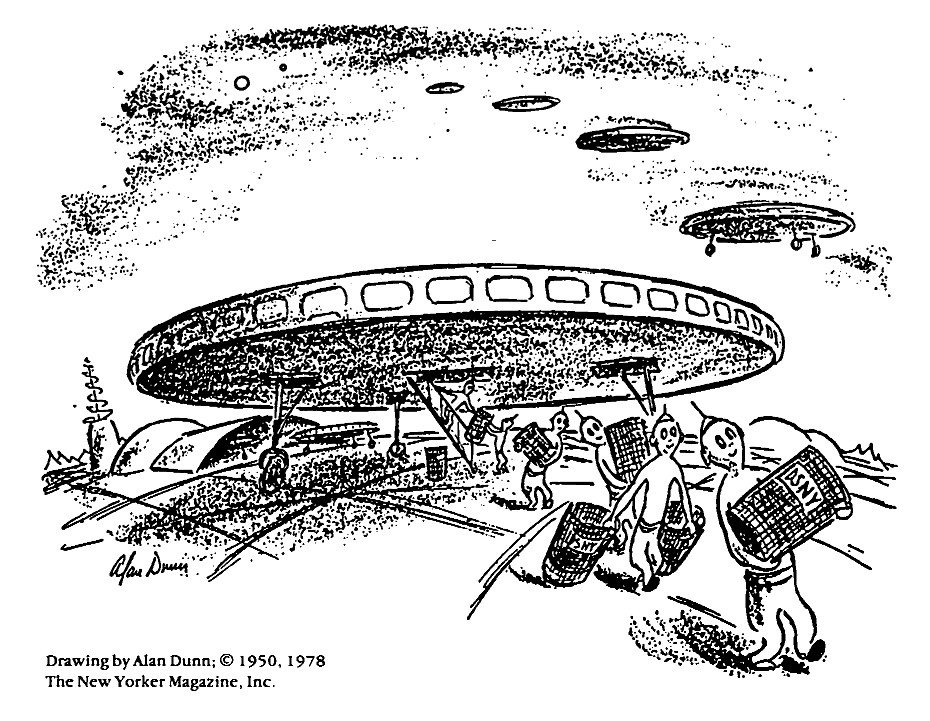
Well, Fermi pointed out, this was a very logical hypothesis. It explained both the regularity of UFO sightings and the strange disappearance of New York trash cans.
The group laughed and moved on. They finished lunch. Then, out of nowhere, Fermi exclaimed, "But where is everybody?"
He was talking about extraterrestrial life, and everyone at the table knew it. They tossed about some ideas but largely treated the matter as a joke.
"As far as our galaxy is concerned, we are living somewhere in the sticks, far removed from the metropolitan area of the galactic center," said physicist Edward Teller.
But the question stuck. It became known as Fermi's Paradox: if the Earth isn't special, and the Universe is so very big with so many stars, where is everybody?

The search for alien life begins
A decade passed. The Cold War kicked into high gear, driving scientific competition. Radio astronomy historian Rebecca Charbonneau told ExplorersWeb that the Cold War's technological advances spurred the search for extraterrestrial life.
"The launch of Sputnik in 1957 and the subsequent proliferation of artificial satellites — including early signals-intelligence platforms — made detecting non-human technosignatures suddenly plausible," she explained.
The thought of aliens began to captivate a fringe group of astronomers, notably Frank Drake. He convened a meeting on the subject at the National Radio Astronomy Observatory site in Green Bank, West Virginia.
"Drake had invited everyone he could think of with an interest in the scientific search for E.T. — all 12 of them — to the meeting," wrote Nadia Drake, his daughter.
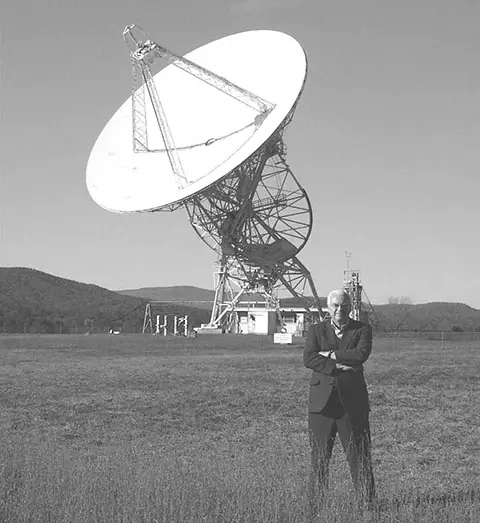
The Drake Equation
In order to guide the discussion, Frank Drake sat down and estimated the number of civilizations in the galaxy with whom Earth could communicate. It was a very simple estimation. The number of civilizations would be equal to the rate of star formation, times the fraction of stars with planets, times the number of habitable planets per solar system, times the fraction of habitable planets that actually lead to life, times the fraction of life-bearing planets with intelligent life, times the fraction of intelligent civilizations that develop a means to communicate in outer space, times how long those civilizations actually release signals.
At the time, astronomers had begun to understand the rate of star formation in the Milky Way. Everything else in the equation was a complete mystery.

When Drake formulated his estimate, astronomers had no confirmation that planets even existed around other stars. All logic suggested they would, but they were far too faint to detect with contemporary telescopes. So the field theorized, argued, and waited.
Astronomers took another two decades to confirm that extrasolar planets, or exoplanets, existed. That confirmation didn't come from any of the famous modern methods of exoplanet detection, such as light fluctuations or watching a star wobble back and forth. Instead, it came from a previous candidate for extraterrestrial communication: the strange dead stars known as pulsars.
Little Green Man 1
The discovery of pulsars dates back to 1967 when graduate student Jocelyn Bell Burnell noticed a strange repeating radio signal in her telescope data. She had no idea what to make of it and dubbed it "Little Green Man 1."

Unfortunately for the little green men, it eventually became clear that the signal came from a rapidly rotating object known as a neutron star. Neutron stars are incredibly dense and incredibly small, with a mass greater than that of the Sun but a radius the size of San Francisco. Every time they spin around, their off-kilter magnetic fields fling out regular radio emissions.
Jocelyn Bell Burnell had discovered the first example of one of the most exotic objects in the known Universe. (The Nobel Prize, of course, went to her advisor.)
The study of pulsars blossomed into a flourishing subfield. In general, pulsars are near-perfect clocks. While different pulsars have different periods, every radio pulse arrives at the Earth perfectly on time.
Not so for the pulsar that Aleksander Wolszczan and Dale Frail observed in 1992. The arrival time of each pulse wobbled up and down: now just before expected, now just after.

First step: finding exoplanets
Wolszczan and Frail tried modeling the noise as a companion star to the pulsar. It didn't work. Every time they succeeded in getting rid of one part of the wobble, another part stepped forward to dominate.
They began thinking outside the box. The best solution was for not one but two companions to the pulsar: planets just a little bit more massive than the Earth. The varying pulse time of arrival came from the pulsar moving back and forth very slightly in its orbit such that each pulse had to travel a subtly different distance to reach the Earth.
Exoplanets existed. Grappling with the first two terms in the Drake Equation was suddenly far more tractable. Onto the next step: How many of the planetary systems out there had habitable planets?
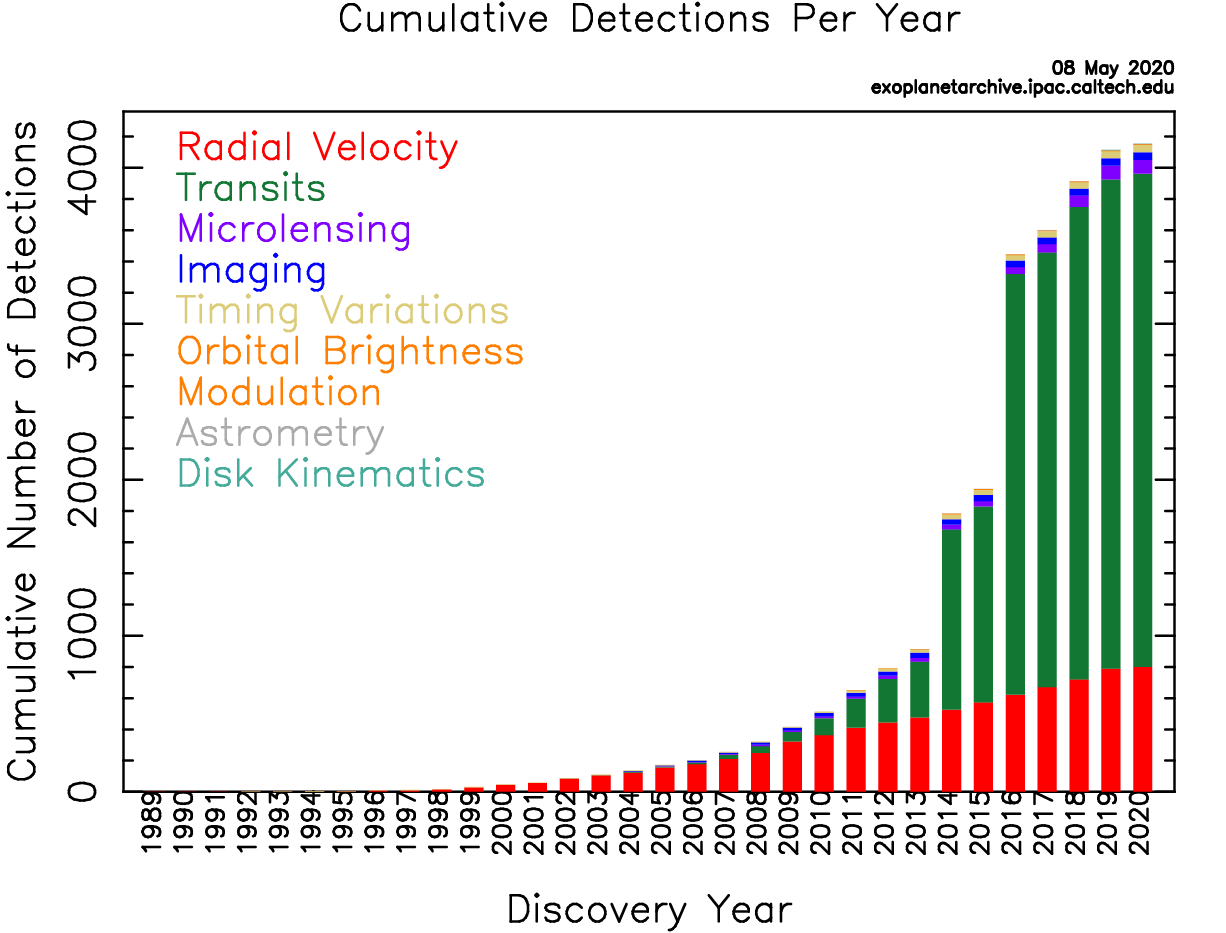
Exoplanets were no longer the domain of the theorists. As the 21st century rolled ahead, new high-sensitivity telescopes allowed the detection of exoplanets around all kinds of stars. Today, we know of almost 6,000.
It took until 2014 for the Kepler satellite telescope to detect anything that looked like Earth. The first such exoplanet is the memorably named Kepler-186f, an Earth-sized planet orbiting at a habitable distance from a red dwarf star. The atmosphere and climate of Kepler-186f differs dramatically from that of Earth, but it's not a stretch to imagine other lifeforms might thrive there.
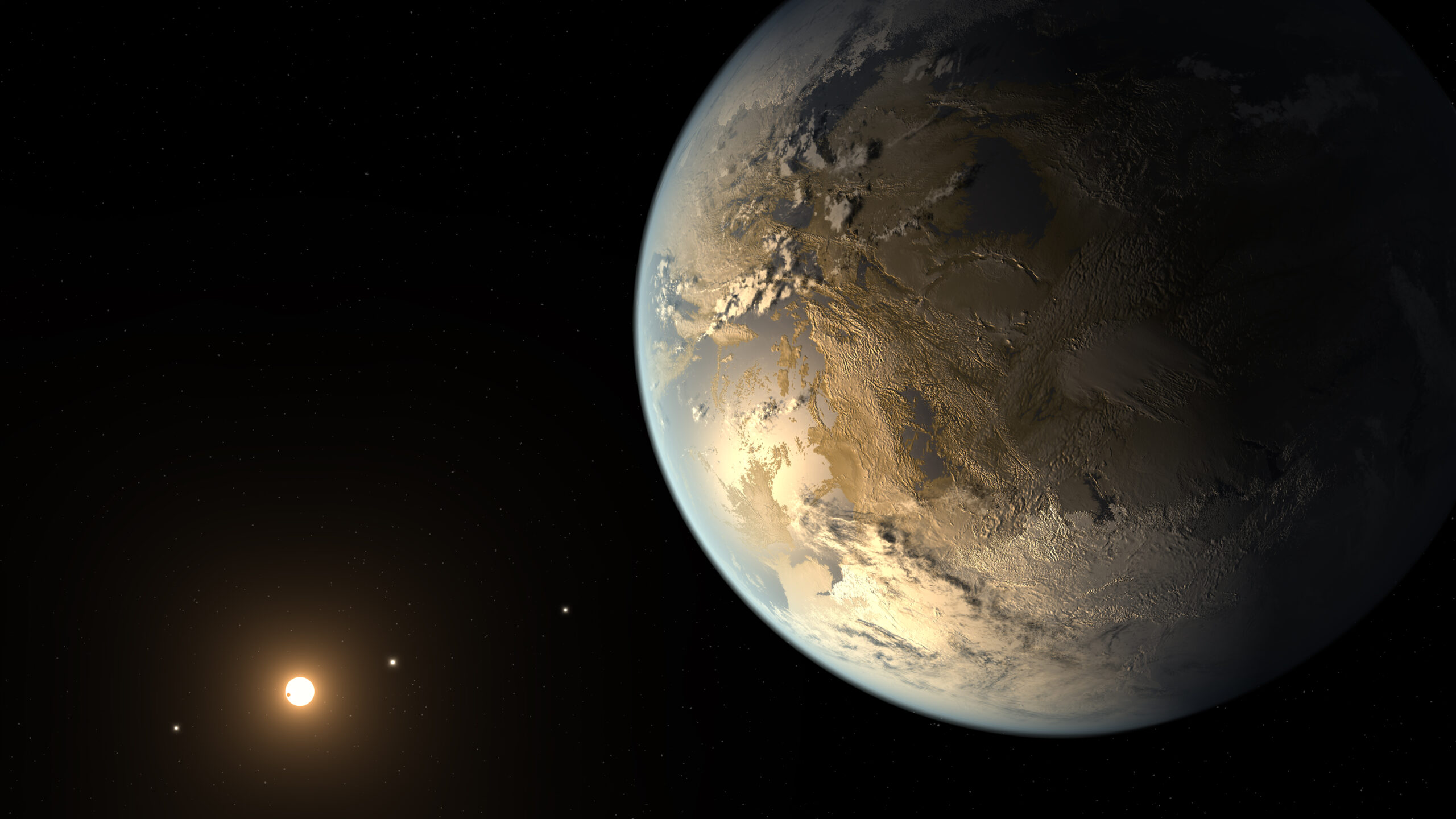
Nowadays, terrestrial-style exoplanets are so numerous that they comprise an entire subfield. The NASA Exoplanet Encyclopedia tracks all of them, including their mass and how habitable they seem. Statistics of exoplanet habitability are no longer a mystery.
So where's the life?
When Drake formulated his equation in 1961, astronomers had only pinned a value on the first term. Now, the first three are well-understood and understood to be high. In short, there are a lot of stars out there, a lot of those stars have planets, and a lot of those planets are habitable. So where's the life?
For the fourth term (the regularity with which life emerges on habitable planets), astronomers must turn to theoretical estimates by paleobiologists and geochemists. For the fifth (the fraction of intelligent life), evolutionary biologists. The sixth and seventh terms are the realm of theorists doing work that is important but so fringe that they don't have a field to call their own.
The fact remains that, as far as we know, we have never been contacted by any extraterrestrial species. So one of those terms must be exceedingly low, or else something stranger is going on.
Possible answers
Perhaps the simplest way to answer the Fermi Paradox is that life rarely forms in the universe. With the fourth term in the Drake Equation close to zero, humans could expect never to get a call from any nearby neighbors. The nearest extraterrestrial life might be across the Milky Way or in another galaxy entirely. This was the interpretation favored by paleobiologist Stephen J. Gould.
Other biologists posit that the fifth term is the blockade. In this scenario, life abounds nearby, but we're the smartest kids on the block. Astrobiologist Charles Lineweaver points out, "Dolphins have had about 20 million years to build a radio telescope and have not done so."
It's also possible that the sixth term is practically zero. Other intelligent life might exist, but can't communicate with us. Still on about dolphins, Lineweaver adds, "If you live underwater and have no hands, no matter how high your E.Q., you may not be able to build, or be interested in building, a radio telescope."
Those three solutions posit a universe where humans are special. They are also the happiest possibilities. Another common hypothesis is that the seventh term in the Drake Equation -- the length of time for which civilizations communicate -- is very short because natural catastrophes regularly cause the extinction of intelligent life. Asteroids, gamma-ray bursts, and volcanoes are all potential culprits.
A darker theory
The darker version of that theory is that intelligent life inevitably eradicates itself through nuclear war, climate change, or other disasters. Carl Sagan argued that self-destruction was common, but civilizations that avoided it would endure for eons.
"Perhaps there is a waiting time before contact is considered appropriate," he wrote, "so as to give us a fair opportunity to destroy ourselves first, if we are so inclined."
The Dark Forest Theory, named after the book by science fiction writer Cixin Liu, posits that intelligent life wouldn't destroy itself but others. Other science fiction writers such as Dennis Taylor have also flirted with this idea, painting a galaxy in which one species of alien has eradicated most other intelligent life. Stephen Webb suggested that since humans are superpredators, successful alien life would be as well.
It's also possible intelligent alien life exists, but we can't begin to comprehend it. It might not appear as life to us, or as intelligent. It might choose not to communicate for reasons that would baffle us. It might not want to leave its homeworld.
It might, in other words, be alien.
A 22-year-old climber died on Saturday in a fall from Scotland's highest mountain. His climbing partner, 30, is in the hospital with significant but not life-threatening injuries. Both men are believed to hail from England.
A rescue and a tragedy
Around 5 pm on Saturday evening, Police Scotland received reports of two injured climbers below the Moonlight Gully, a popular beginner's ski route.
Late Saturday night, the Lochaber Mountain Rescue Team (LMRT) located one injured but alive climber who had managed to move downhill. They evacuated him to Raigmore Hospital in Inverness. Strong winds and snow then forced them to pause the search.
The next morning, they found the body of the second climber, who was deceased. Scottish police have not disclosed the cause of death nor released the names of either climber. The families, however, have been notified.
Both men fell about 60 meters during the accident.
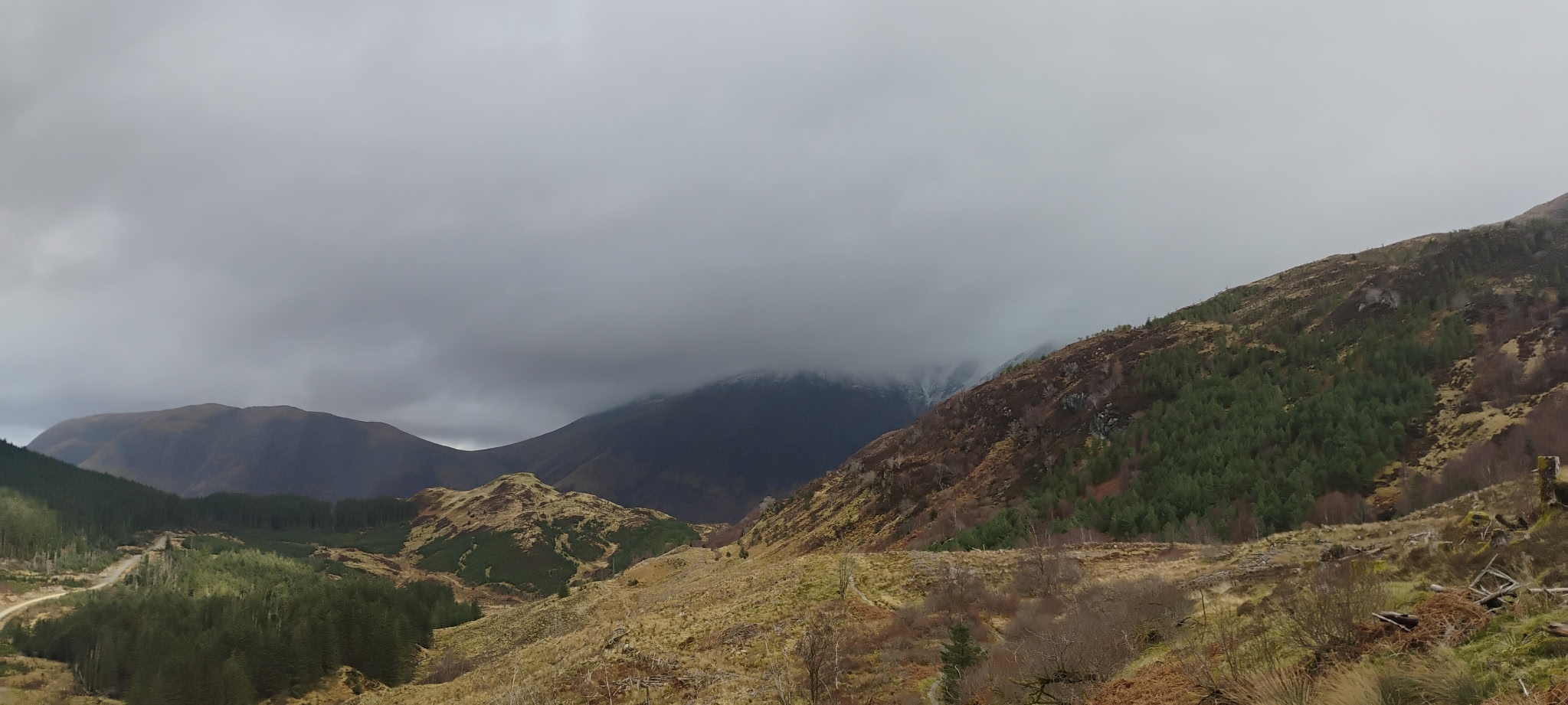
Fickle weather
At 1,345m, Ben Nevis is the tallest mountain in the UK and draws more than 125,000 visitors per year, according to Scotland's tourist board. The weather around Ben Nevis last week alternated between sun and rain. On Saturday, heavy storms caused the closure of surrounding trails due to flooding. Snow was also falling.
This kind of weather is typical in the Highlands. It impedes rescue efforts and has led to deaths before. More than 100 people have died on the mountain since records started in 1849.
The UK's busiest mountain rescue team
This was the fourth rescue for the LMRT this week. The number of rescues rises every year as more tourists flock to the Highlands and to Ben Nevis in particular.
"As an entirely voluntary team, responding to calls and attending training is a huge demand on time, and it is unnerving to see these numbers rise so quickly," said the LMRT website. "Taking the lead in a team like this requires extraordinary fortitude, resilience, and a remarkable ability to survive on little sleep and lots of chocolate bars."
You can donate to the LMRT here.
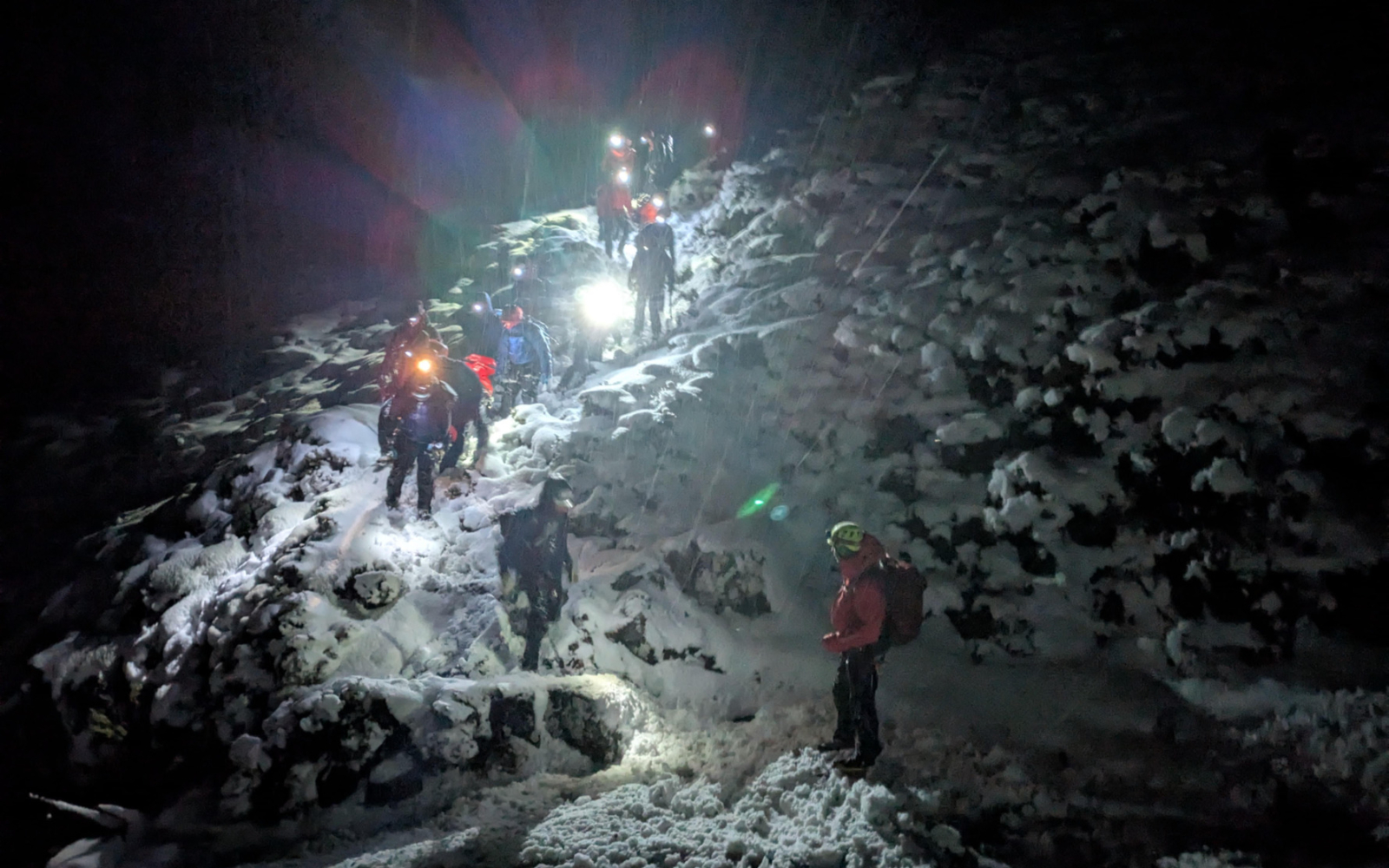
In the dying years of the Roman Empire, a vassal king in the distant territory of Wales rallied his forces to shake off Roman rule. When the Saxons, too, turned their eye on his kingdom, that Welsh king joined with his northern confreres to beat them back. Eventually, he founded a model kingdom 800 years ahead of its time, complete with knights, metal armor, and even an early form of parliament.
His name was King Arthur, and unfortunately he did not exist, at least in a recognizable way. But the late medieval writers who crafted his legend would have had cause to rejoice this week. Digital archivists at the Cambridge University Library have just recovered a new fragment of their work, hidden in plain sight for centuries. It had been used as the binding for an Elizabeth property register.
How a 13th-century story became the cover of a 16th-century book
Stories of King Arthur were all the rage in the 1200s. After the self-described historian Geoffrey of Monmouth popularized Arthur's legend in the 11th century, the setting of the Round Table spread across the Channel. What had once lived in the realm of pseudo-historical tracts and Welsh oral tradition reached the courts of France.
The defining stories of early French Arthuriana were poems. Marie de France, one of the most famous female French authors in history, wrote short, often satirical verse set in Arthur's court. At the same time, the daughter of Eleonore of Aquitaine, Marie de Champagne, commissioned the first stories of Sir Lancelot and Queen Guinevere's forbidden love and of the Grail Quest.
These stories captured the imagination of the French and English nobility, culturally bound from the Norman conquest of England in 1066. In about 1200, an anonymous coalition of authors adapted them into what may be the first European fantasy blockbuster: the five-book series known as the Vulgate Cycle.

The Vulgate Cycle
Novels were a new concept in Europe. But the magical quests, epic sagas of family strife, and heart-rending character arcs of the Vulgate Cycle were so successful that they endure even today. If you've heard of the Lady of the Lake, of Lancelot and Guinevere's affair triggering the downfall of Camelot, of the Holy Grail being the cup that caught Christ's blood on the cross, then that's the Vulgate Cycle at work.
By the 16th century, though, stories of the Round Table were passé, especially in England. In the same way that a 21st-century scrapbooker might dismember an old novel, Elizabeth bookbinders yanked out a handful of pages from a copy of a Vulgate book. The copy they used dated to about 1300. They needed to bind a register of property deeds, and parchment was precious. So they folded up the Vulgate pages and sewed them into a new cover. There, the pages sat for half a millennium.
Recovering the story
In 2019, archivists at Cambridge University were sorting through the records of an estate in Suffolk when they realized that the cover of the property register contained fragments of a much older text. But it would be impossible to unfold the fragments without damaging the cover it comprised, an important historical artifact itself. More advanced methods would be needed to read the cover text, and in 2023, Cambridge began a new program to do so.
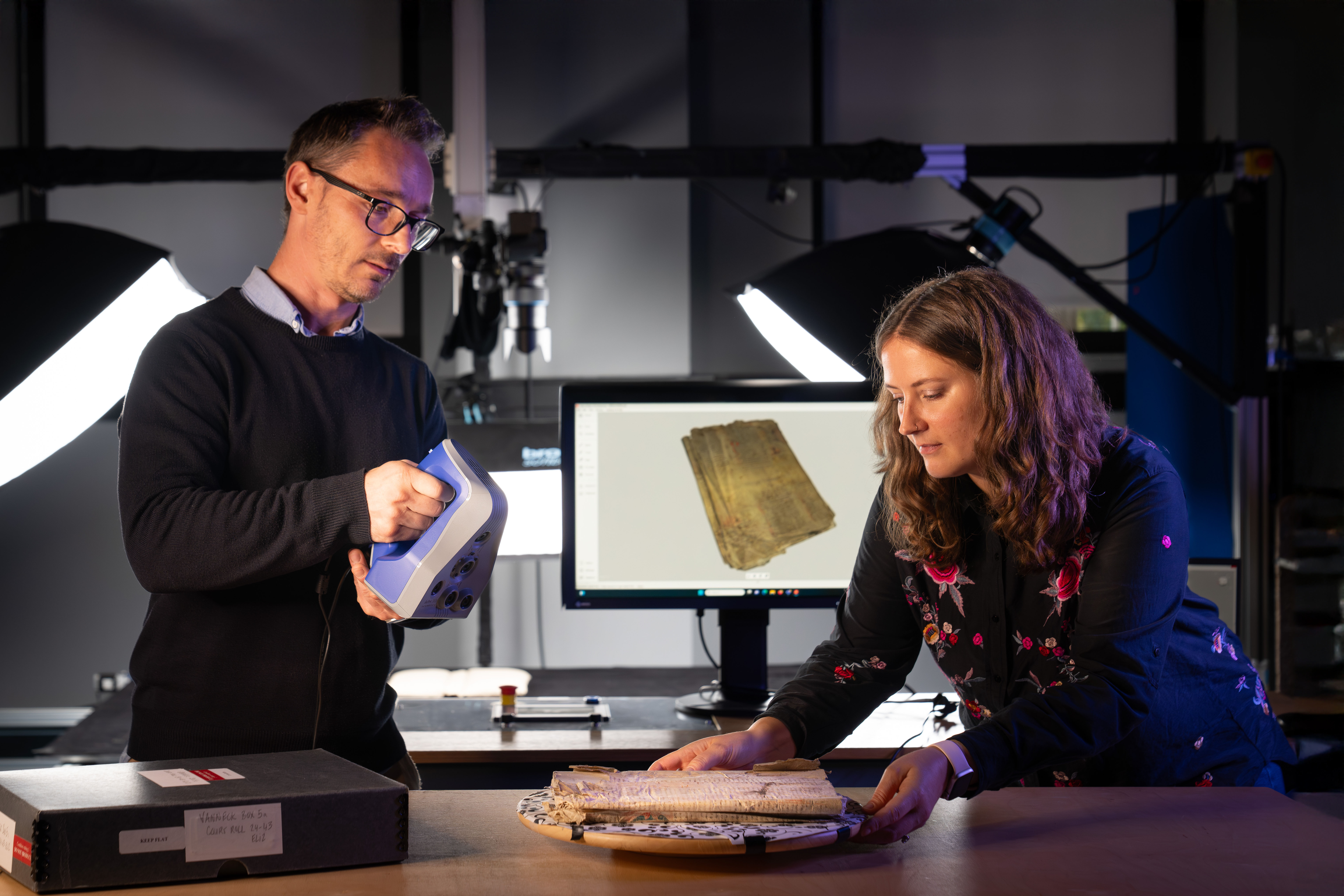
Just this week, the Cambridge Digital Library released the first results from this project. Archivists used multispectral imaging (MSI) to scan the whole text without unfolding the cover. MSI breaks images down into color categories, allowing conservationists to deblur old writing or even recover the traces of erased text.
CT scans probed through the folded layers of parchment. Finally, new techniques in digital image manipulation allowed the team to "unfold" the text and read it.
The wizard Merlin greeted them.
Merlin's magical shenanigans
Nowadays, images of Merlin are dominated by two pop culture phenomena. Either he's a spry old wizard in a blue hat who ages backward (as portrayed in TH White's The Once and Future King and its Disney adaptation, The Sword in the Stone), or he's Arthur's 20-something best friend, as in the BBC TV show Merlin.
The medieval Merlin was a lot stranger. He was born speaking like an adult, the child of a human woman and a demon. He could disguise himself however he wished and was prone to prophesying the downfall of those around him. (Personally, if my wizard advisor handed me a sword inscribed with the words, "With this sword, Sir Lancelot shall kill the man he loves most, and that man shall be Sir Gawain," I wouldn't let anyone named Lancelot or Gawain anywhere near my peaceful Round Table.)

On one occasion, Merlin arrived at Camelot disguised as a blind harpist: "While they were rejoicing in the feast, and Kay the seneschal brought the first dish to King Arthur and Queen Guinevere, there arrived the most handsome man ever seen in Christian lands. He was wearing a silk tunic girded by a silk harness woven with gold and precious stones, which glittered with such brightness that it illuminated the whole room."
This is the excerpt that made up one of the two pages sewn into the cover. So far, the Cambridge Digital Library has only released the above passage, which agrees with other copies of the Vulgate Cycle. They are currently working to produce an annotated version of the whole text. Medieval scribes often edited or even rewrote the stories they copied, so it's possible this text could differ substantially from other manuscripts.
A medieval action hero

Although nowadays Arthur and Merlin are probably the most famous characters from the Arthurian canon, medieval readers had a favorite knight, and it wasn't Lancelot. It was Arthur's hot-headed, charismatic nephew Gawain.
Arthur has a relatively idyllic childhood in the Vulgate Cycle. A kindly knight raises him alongside his own son. But the children of his elder sister Morgause are less lucky. From a very young age, they fight alongside their father in wars against the Saxons. In addition to the Merlin episode, the property register cover text also includes a scene from this plot arc, in which Morgause's eldest son Gawain rides his beloved horse Gringolet into battle.

This is one of the final snapshots of Gawain as a teenager in the Vulgate Cycle. Soon after, one of Arthur's knights kills his father in battle. The young Gawain vows revenge, and although he later joins the Round Table, his vendetta against his father's killer spirals into a vicious blood feud that contributes to the fall of Camelot.
Of course, that's the version in other manuscripts. In the property register folio, none of that ever happens. Merlin dazzles Arthur's court, and Gawain rides victorious into battle. The rest is left to the reader.
Li Dongju made headlines recently for her cross-continental biking adventures. Between misadventures with border guards in Bosnia, reporting a budding wildfire in Australia, and camping out in cemeteries, there's enough peculiar adventure to fill any travel influencer's Instagram or YouTube page.
But Li Dongju isn't a content creator selling a lifestyle to millennials or Gen Z. She's 66, has a scant social media presence, and gets by on a meager pension from her time in a textile factory.
A silver tourism sweetheart
Li Dongju is the apotheosis of "silver tourism," a term describing the phenomenon of engaged, active senior travelers. For months every year, Li bikes the backroads, visiting towns on two wheels that most tourists never see on four.
It's a far cry from her earlier assumptions about where her life would go. In 2000, like many others in China, Li fell victim to mass national layoffs and lost her job at a textile factory. She was left with a slim pension of $414 a month. Shortly after, her life shifted once again. A female colleague of her husband's called her out of the blue and told her the two of them were having an affair.
The marriage went downhill rapidly.
"I will never forget how shocked I was when my husband asked for a divorce," she told China Daily. "Despite how simple and dull our daily lives were, I never thought we would go through that kind of change."
As soon as they separated, he remarried another woman.
Li spiraled into depression, exacerbated by bipolar disorder. She tried burying herself in video games and then in volunteer work. Nothing seemed to help, and she eventually wound up in a psychiatric ward.
Salvation through cycling
In 2013, amid rising concerns from her family about her mental state, a group of cyclists tore past Li on the street. The image grabbed her, but she couldn't afford a bicycle on her pension.
Sensing something important in her sudden desire, her son gifted her a mountain bike. It would have cost more than two months of her pension, and Li was thrilled. She wanted to bike through the high-altitude vistas of Tibet and see the "roof of the world."
But with only $23.50 in savings, that dream seemed far away. For a year, she worked as a house cleaner, saving her salary and biking around her hometown of Zhengzhou every day.
Then, in 2014, she set out on her first real venture: a trip to Vietnam with a group of other Chinese cyclists. Within a week, she accidentally became separated from her companions. She was lost and had knowledge of Vietnamese. Li eventually returned home, determined to get more practice in her own country before trying any more foreign trips.
She started by biking to 20 cities across China. This time, she took her poodle Xili with her. He rode in the basket as she biked from her native Zhengzhou to far-flung Hainan and Xinjiang. Life began to look up.

A new way of living for Li
With some real road time under her belt, Li set off once more for Southeast Asia with two other cyclists. A month of poor weather and punctured tires left the other two dispirited. By the time they arrived in Nha Trang, Vietnam, they were ready to turn back.
Li was not. After the group split up, a Chinese teenager living in Nha Trang offered her a room to stay and then cycled alongside her for the next leg of her journey.
After another month, she was back in Zhengzhou. But she wouldn't stay put for long. Her biggest venture came in 2019 when she set out across Europe armed with only her bike and Google Translate.
Then came Australia, where she alerted local authorities about a wildfire, and New Zealand.
And then, COVID-19.

Disease and death
COVID halted Li's travels as China initiated its zero-tolerance policy. Confined to her house, she began live-streaming and garnered significant media attention.
Her ex-husband came down with cerebral thrombosis. His wife left him. Li Dongju, who had "no hate" in her anymore after years of cycling, returned to Zhengzhou to remarry him and act as his caretaker. He was paralyzed and had no one else in his life but her.
To top it all off, her poodle died.
Back on the road
Li has recovered from the blows dealt to her during COVID and her ex-husband's illness, and she's ready to be cycling again.
She recently gave an interview on CNN in which she highlighted the kindness shown to her around the world. From the teenager in Nha Trang to trekkers in Australia who hugged her when she was covered in grease, the generosity of strangers has deeply inspired her.
"Every time I see her [photo], it brings tears to my eyes,” she told CNN, referring to a woman in Australia who offered her water and pomegranates on a brutally hot day.
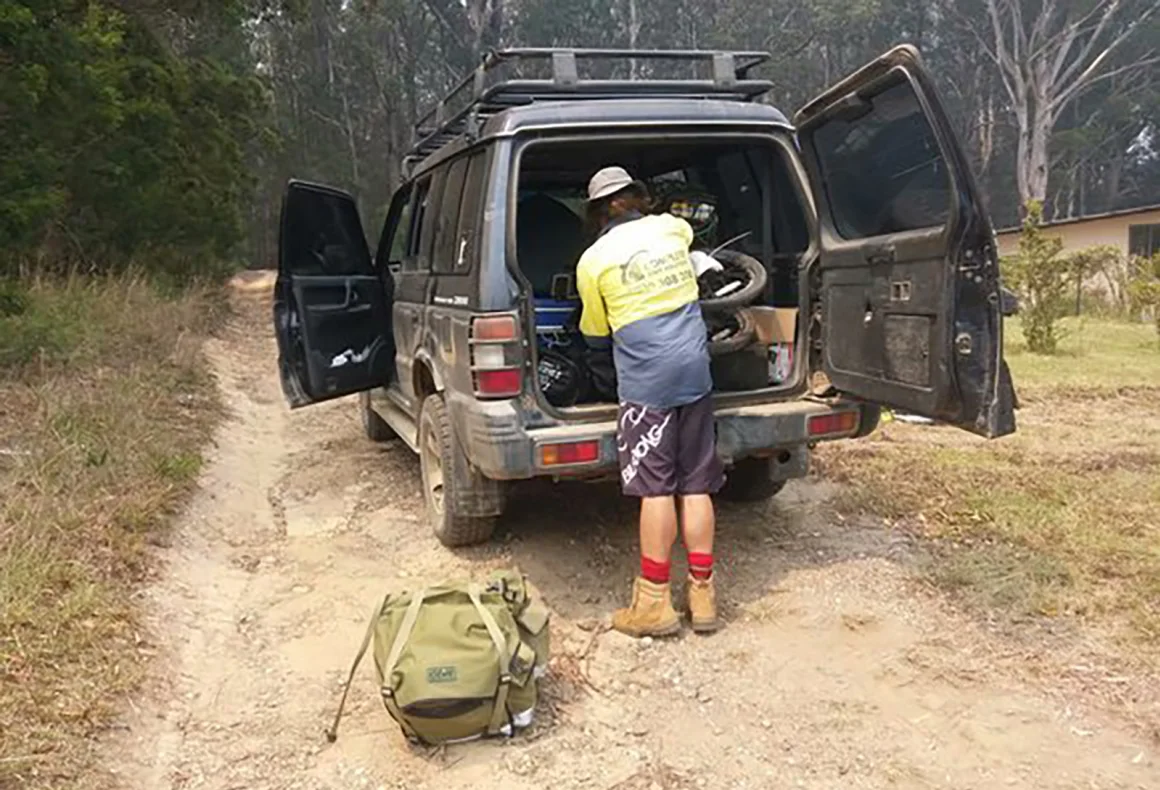
Her next trip will pass through Kazakhstan and end in the United Arab Emirates. When Li sets out, she will do so with the eyes of the world on her.
Why Li Dongju?
The story above is the version that has made its way to the English-language press. Li Dongju cuts a different figure in China. In several Chinese-language stories about her, the scorned wife became a nagging harpy whose mental illness alienated those around her. A story of personal salvation became one of redemption as she relinquished her hatred of her husband and returned, penitent, to his bedside.
Part of the popularity of Li Dongju's story stems from how effectively it travels across cultural boundaries. For Western media, steeped in American individualism and an obsession with physical fitness, she's a strong-minded woman who forged a new, fulfilling life while working out in her old age.
For Chinese platforms, in a landscape dominated by family loyalty and respect for old age, she serves both as a redemption story and an inspiration to a rapidly aging population. (It's worth noting that there was plenty of pushback on the Chinese internet to the narrative of Li as a prodigal wife, just not on high-profile outlets.)

But despite their differences, both of these narratives share an obsession with Li's age. The word 奶奶 (grandmother) is ubiquitous across Chinese sources, a term that carries a level of fondness and respect not present in the English translation. In a culture that values old age, this focus makes sense.
English-language sources refer to her as a "Chinese grandma," "gung-ho grandma," and "Chinese grandmother."
The implicit suggestion in English-language headlines is that traveling the world, particularly in a manner as grueling as cycling, is a pastime for the young or middle-aged. A 66-year-old woman setting out so proactively to enjoy life, these articles imply, is unusual.
The rise of 'silver tourism'
Silver tourism is an economics term linked to the idea of active aging, which the World Health Organization somewhat stiffly defines as "the process of optimizing opportunities for health, participation, and security in order to enhance quality of life as people age."
For many seniors, participating in desired activities comes with limitations. Their mobility may be diminished. They may require easy access to healthcare providers, eliminating exotic, isolated locales. They may struggle to find travel information online.
In short, if tourism companies are to profit from this sector, the services they provide must differ from traditional models.
China has risen to meet the challenge. The government recently commissioned a host of new cross-country trains designed for the needs of senior citizens, with cushy berths, handrails, ready supplies of oxygen, and help staff on call. Part of the funding is allocated toward integrating the trains into local tourism services.

Some Chinese B&Bs target the senior population, featuring slow-paced travel plans and in-house physiotherapy. Hotels are introducing quiet floors and safety measures for those with decreased mobility.
“Senior citizens prefer to use offline travel agents with whom they can communicate face to face,” Wang Yonggang, a professor of tourism, told Sixth Tone, an English-language online publication. “Travel agency chains with branches in residential areas are a great channel for older generations to access information.”
Shanghai even boasts the University for the Senior, whose offerings include tourism courses. Speaking to Sixth Tone, 64-year-old tourism student Ying Limin said, "As long as I am able to walk, I hope to seize the opportunity to explore as many foreign countries as I can before it’s too late."

What about the West?
Li Dongju does not fall into the marketing profile of the silver tourist. She uses the internet to find cycling companions, makes copious use of Google Translate, and is as self-reliant a traveler as one could hope for.
Perhaps it's no surprise, then, that her story has caught on in American news sources. After all, the budding support system for mobility-impaired senior tourists in China is alien to American infrastructure.
I recently found myself on an Amtrak train from Charlottesville, Virginia to Huntington, West Virginia. By car, it's a drive of about four hours, or five hours if you drive like I do. On Amtrak, it took 10 hours. Two of those hours were spent on an incomprehensible stop in the middle of the Monongahela National Forest. We were already traveling at a speed any "gung-ho grandma" cyclist could beat when we slowly dwindled to a halt in a sea of kudzu and maples. No loudspeaker announcement elucidated the situation.
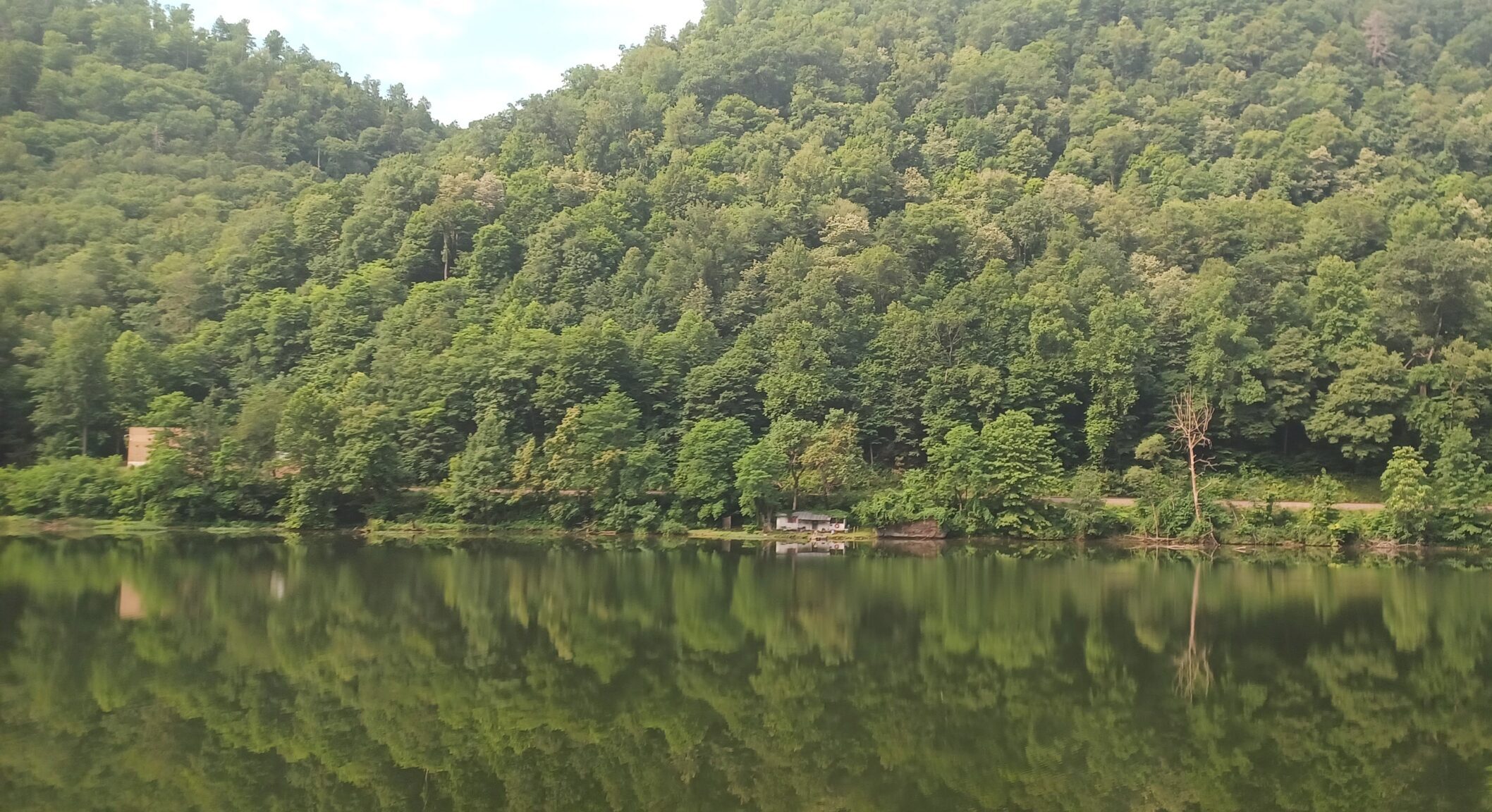
The internet had been down the whole trip, despite Amtrak's promises to the contrary, and the AC was paltry. This deep in the National Radio Quiet Zone, there was no cell service. I sat curled in my tiny seat with only a copy of Annapurna for companionship, feeling rather that Maurice Herzog had gotten off easy. At least he never had to experience the American train system.
For me, this baffling delay was an irritation. But for many senior travelers, Amtrak's tendency to fail on its already meager promises represents a serious barrier to travel. It's no wonder that cruises dominate American silver tourism. If you don't want to drive, it's easier to cross the ocean than to travel from one state to another.
In Europe, meanwhile, EU-funded companies such as Euromontana offer training courses in silver tourism. "The training is especially important for frontline service employees. They currently don't have the knowledge and experience needed to interact with people living with certain health conditions," tourism and health professor Jun Wen told Phys.org.
Still, silver tourism in Europe lags behind its Asian counterparts. "Asian consumers in the 'silver' age group are well-integrated into active social lives due to a culture that values longevity," a recent article in the journal Population and Economics noted.
That, I think, is why Li Dongju inspires Western audiences as much as she does Chinese ones. Her success isn't contingent on infrastructure only available in Asian markets. Anyone with the money for a mountain bike and decent physical fitness can aspire to become like her. Li offers a positive vision of aging in a Western culture that valorizes youth.
Before it shut down in 2022, a telescope in Chile captured one final gift for the world that has just been released: the universe's baby photos, just 380,000 years after the Big Bang.
These freckled photos of the early universe, at an instant known as the Cosmic Microwave Background (CMB), are the farthest back in time we can look. Observing the Big Bang or immediately after is not possible, and not just because of technical limitations.
Before the epoch shown in these images, the universe was so dense with plasma that light couldn't travel for more than a fraction of a millimeter without scattering off a proton or an electron. Everything just looked like a dense fog. Then the universe cooled enough to allow those charged particles to fuse into hydrogen and helium. Space opened up and became visible. The last photons from those first visible moments were preserved.
The photons set off through space. All of them were stretched by the expansion of space around them. Some became further stretched out by gravitational wells around galaxy clusters. Others received an energy boost. The patterns of the evolving universe imprinted themselves on these ancient photons.
Almost 14 billion years after their liberation, some of them hit the smooth white surface of a radio telescope located in the Atacama Desert of northern Chile.

Last observations
The Atacama Cosmology Telescope (ACT) is now closed for business. After 15 years of productive data releases, it saw its final light in 2022. However, the ACT team only recently released the polished versions of the telescope's last observations.
These images not only show the most precise, high-resolution observations of the Cosmic Microwave Background but they also cover more of the sky than ever before. The red and blue speckles represent regions of over- and under-densities -- places where, 14 billion years ago, the universe had just a little more or less plasma.
The new images confirm previous observations that the structure in the early universe maps onto its modern structure. Where there were slightly more photons in the primordial plasma now sit the most massive galaxy clusters. Fewer, and there's empty space.
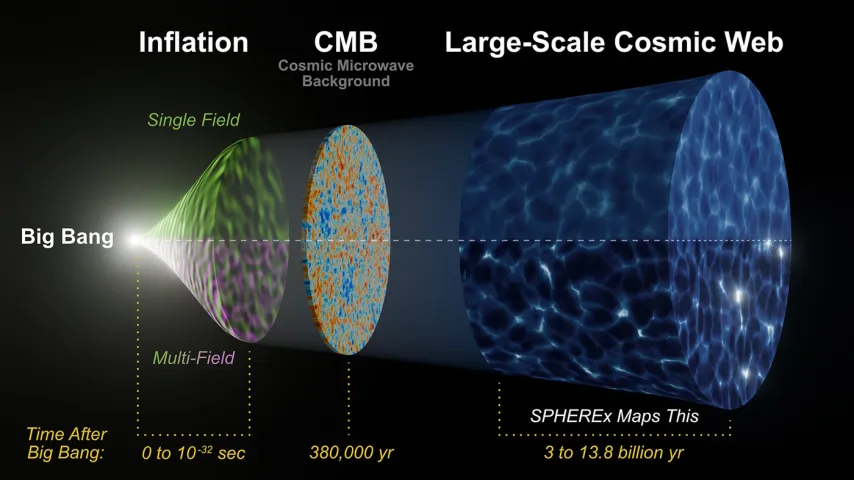
So far, general relativity holds up
Einstein's theory of general relativity, which predicts how matter and light interact with one another at large scales, is one of the best substantiated theories in modern physics. It also causes problems.
There appear to be four fundamental forces in nature: gravity, electromagnetism, weak, and strong. One set of physical laws known as the Standard model cohesively describes electromagnetism, the strong force, and the weak force. Gravity, though, has proven hard to mesh with the others.
Discovering that general relativity isn't quite accurate is the grand hope of those searching for one theory of physics that unites all four forces. Perhaps then, a new model of gravity will appear out of the cracks, one that slots nicely into the Standard model.
But general relativity has triumphed repeatedly so far, and the latest images from the ACT are no exception.
"The amount by which light bends around dark matter structures is just as predicted by Einstein’s theory of gravity," cosmologist Mathew Madhavacheril told Penn Today.
How polarized light fits in the early universe
Perhaps the most important part of these new observations is the detailed polarimetry. Polarimetry describes the measurement not just of how much light there is, or how much energy that light has, but in what direction the light is vibrating. Natural light is unpolarized, meaning that light waves traveling toward us may vibrate in any direction perpendicular to the line of travel.
It's easy to change that by sticking a thin grating in front of the light, only allowing one vibrational direction through. That's how polarized sunglasses work.
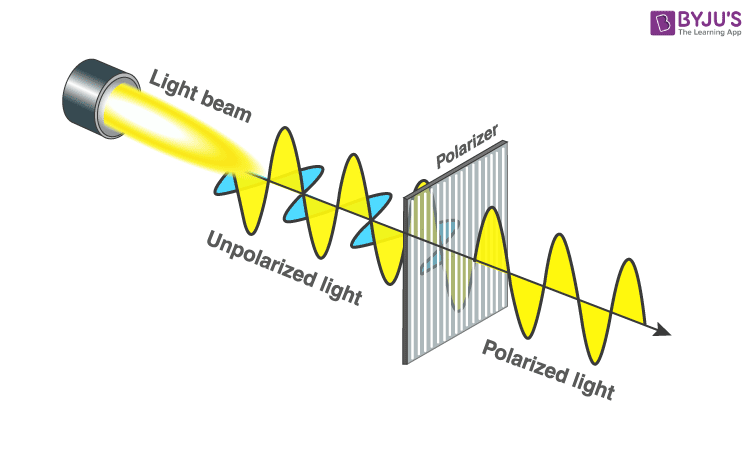
The polarization signal in the CMB sits at barely detectable thresholds. But ACT's new observations push past that threshold, and unlike the handful of other telescopes in the polarization game, they cover most of the sky.
Polarization goes beyond the effects of gravity from massive structures like galaxies. Microscopic quantum density fluctuations can alter the polarization of light.
Einstein's formulation of general relativity does not describe the quantum world. In fact, Einstein was uncomfortable with quantum mechanics and encouraged its proponents to better address its many peculiarities. While this leaves room for future physicists to etch their name in history, it would be a lot simpler if Einstein had just figured out everything for us.
He didn't. General relativity on the quantum (read: atomic) scale continues to confound us, not least because testing it in the lab is fiendishly difficult.
Fortunately, the new ACT data release is precise enough to contain clues about quantum gravity in its polarimetry. We just have to decode them.
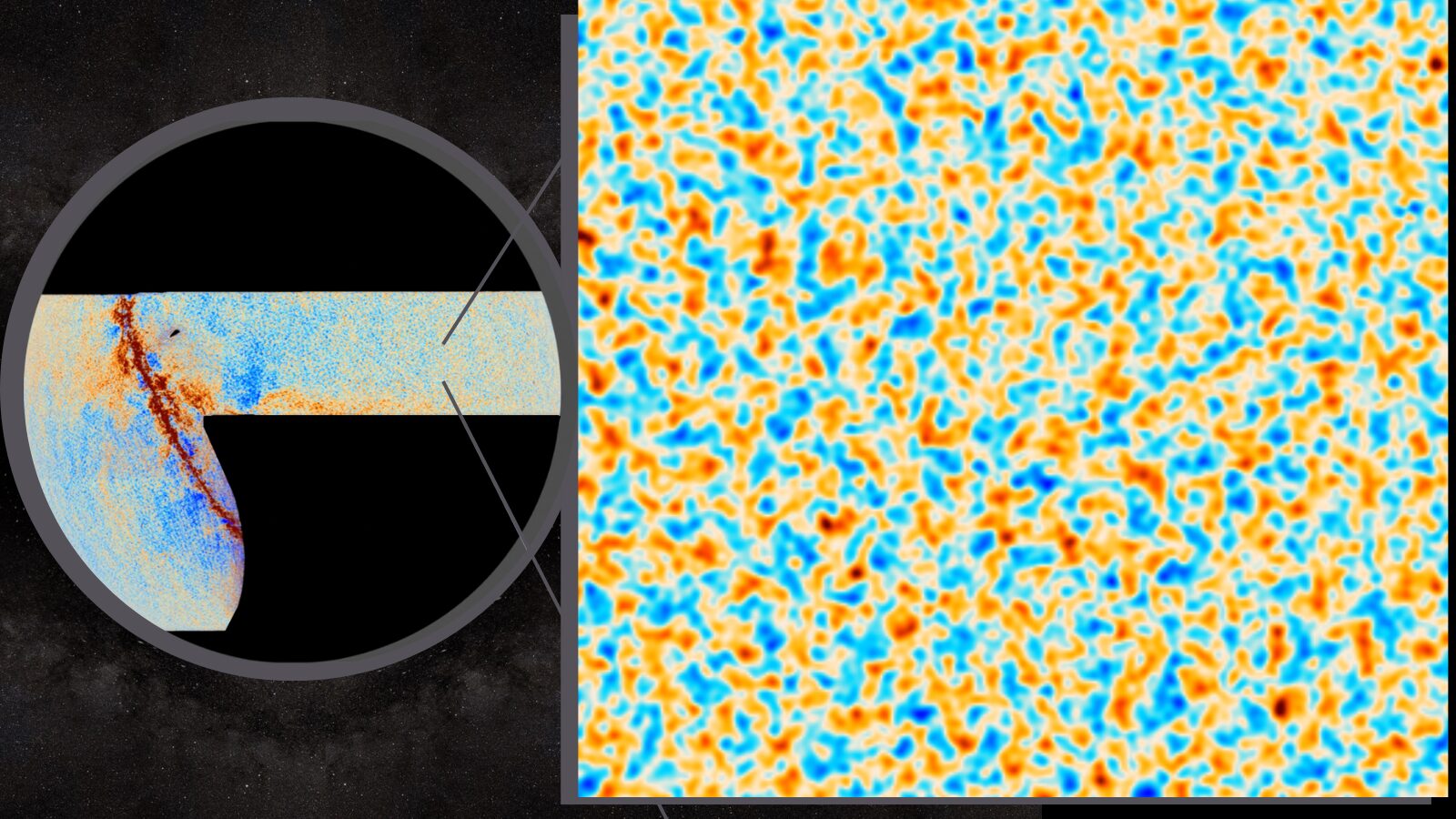
The camera pans up a minimalist landscape of snow and stone. Jagged spires stab into the air, their dramatic profiles accentuated by the sharp drone of a male voice singing wordlessly. It might be the beginning of Meru -- until the throat singing cuts out, and the narrator says, "My bad, little something in my throat."
The Crystal Towers: a Yukon Climbing Story is one of three projects funded by the Yukon government for its 125th anniversary. This elegant short documentary is part climbing film, part lighthearted travelogue, and part advertisement for the sparse beauty of Yukon.
Radelet Peak
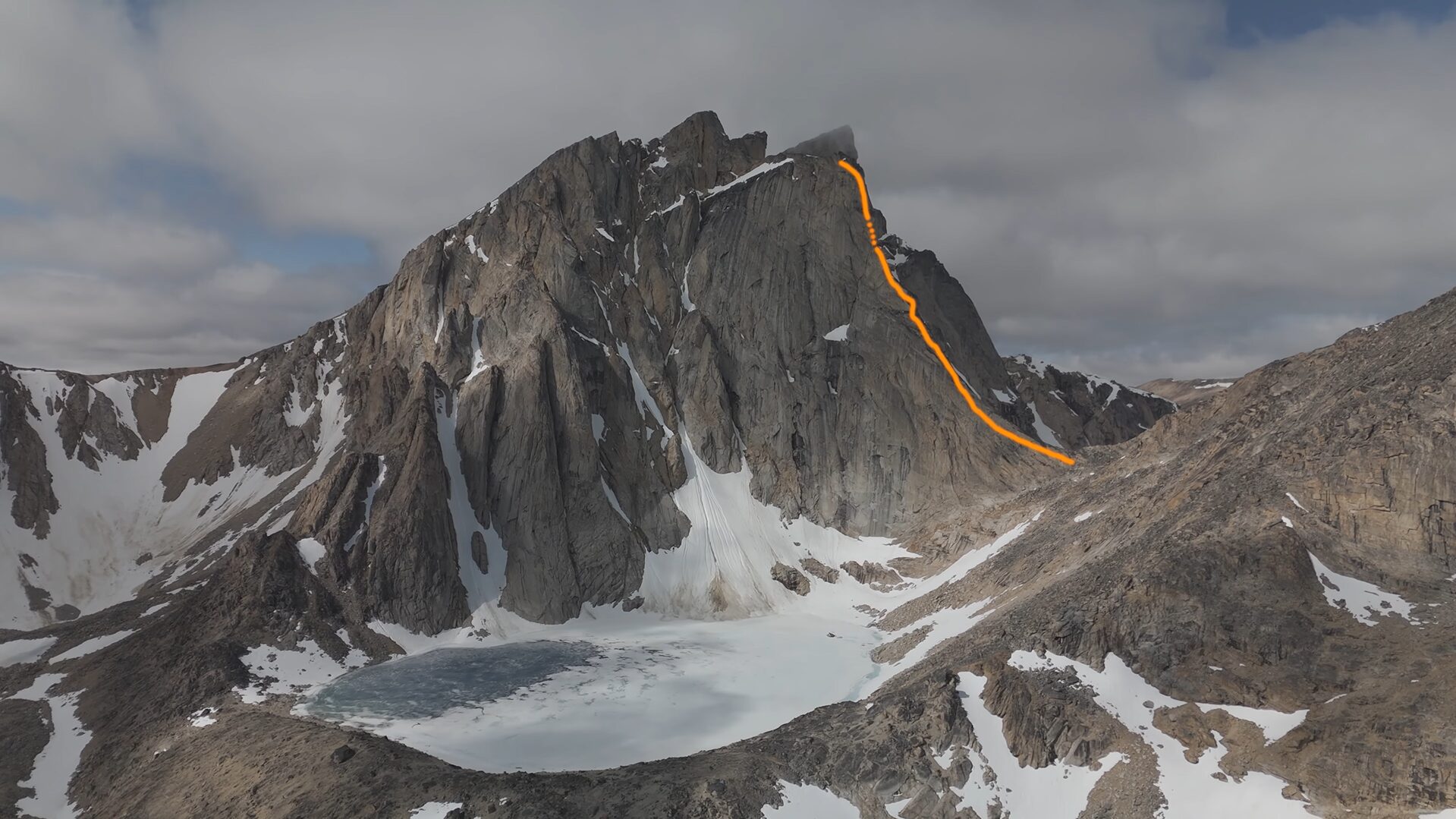
One hundred and twenty kilometers south of Whitehorse, Radelet Peak lurks above a small lake, still mostly frozen in July when the documentary was filmed. Only one of the team, self-professed flamingo fan Zach Clanton, had made the trip before. Clanton conceived of a new route up the knife-edge arete on the mountain's east side.
But bolting a new route would take hardware, and getting hardware to Radelet Peak would take a helicopter. Where might a "quintessential climbing dirtbag," in the words of his climbing partner Rob Cohen, acquire many thousands of dollars for such a flight?
The government, as it turned out. With support from the Yukon125 fund, four climbers set out with a drone, a carton of Metamucil, and (almost) enough gear to bolt a new route.
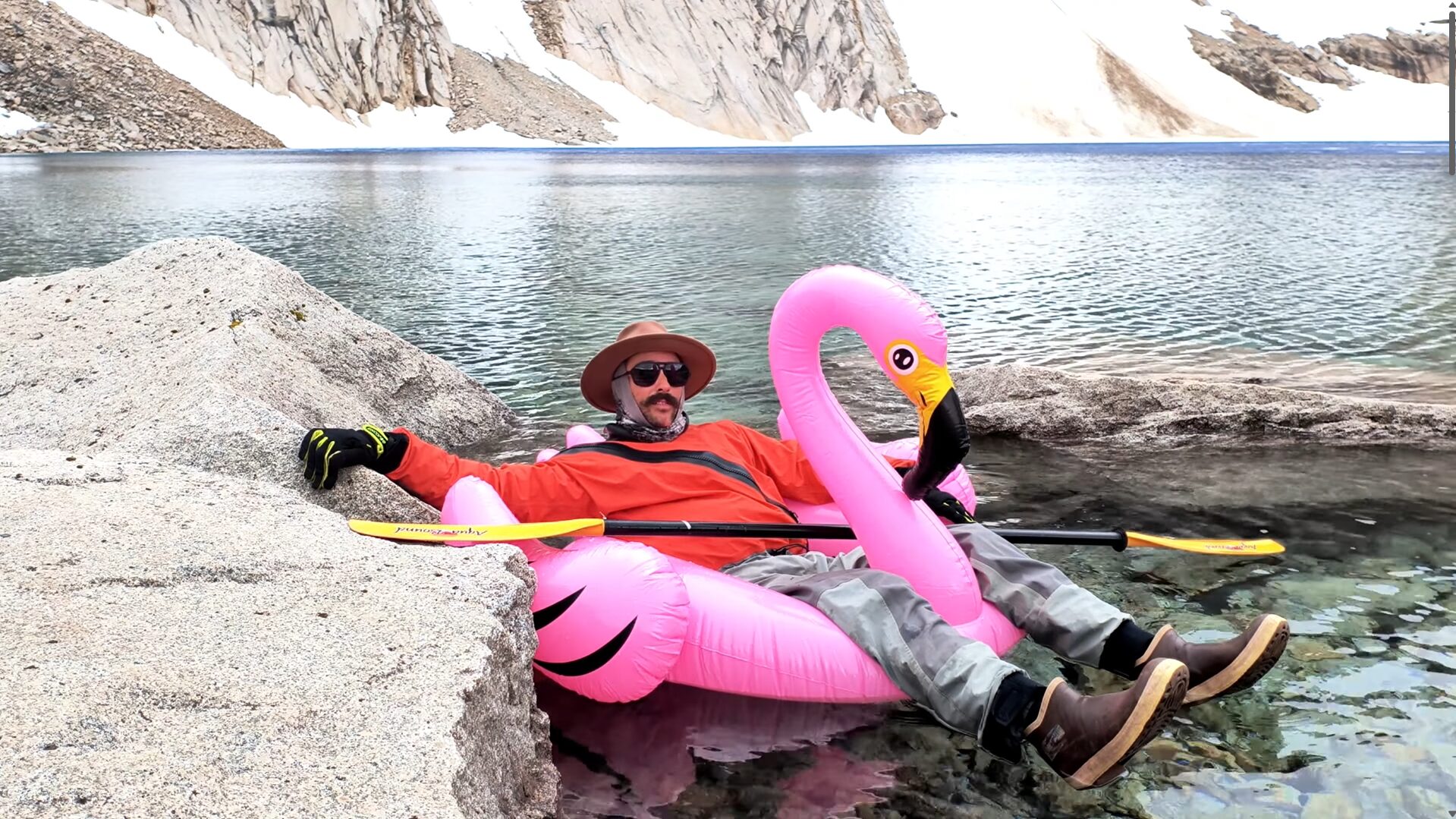
The route
The Crystal Towers starts gently as its protagonists tackle the ridge à cheval. The slope isn't steep, but we are frequently informed that it's wickedly sharp, and they would rather it weren't so sharp, thank you very much.
Then the first headwall flaunts up above them, and the documentary comes into its own. Climber and filming lead John Serjeantson effectively uses his drone for striking panoramas. One features Dave Benton nestled in a massive maw of rock just under the subsidiary peak.

Most of the route is crack climbing. Both finger cracks and hand cracks snake up seemingly impassible granite walls. Unfortunately, most of this climbing didn't make it to camera.
It's in close quarters that The Crystal Towers struggles: only a few short sections of GoPro footage supplement the wide shots, and the team largely did not record leads from below.
The lack of footage confuses the narrative. One climber taps out of summit day, referencing difficulties on the route never shown onscreen or explained to the audience.
But while it's clear that these are more climbers than documentarians, that doesn't stop them from creating a lovely film. The shots are clean, showcasing the splendor of the landscape, and the narration brings the audience along on the most exciting pitches. It's always a good sign when a video leaves you wanting more instead of less.
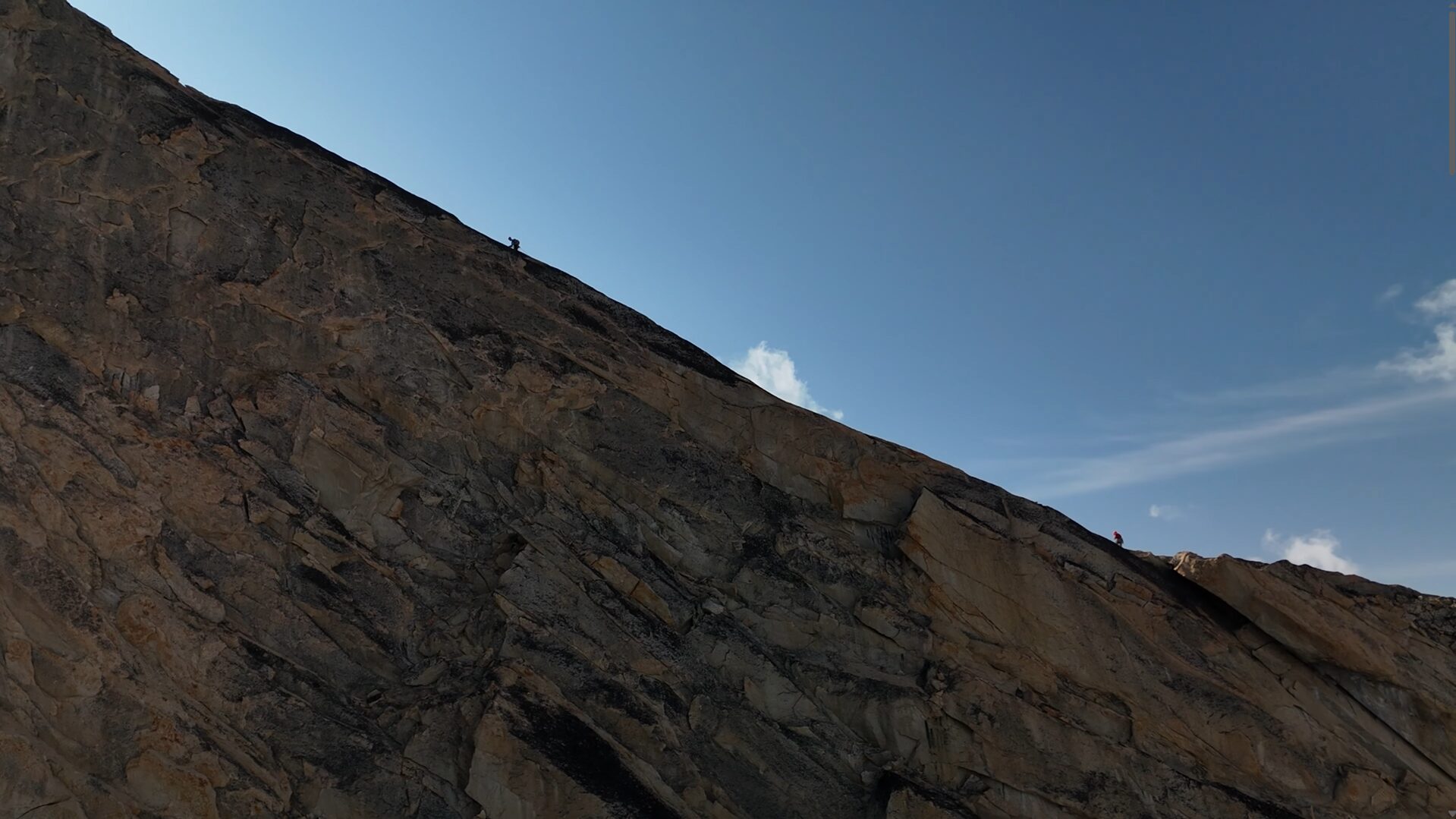
The film meets its goals
As for whether the team sends the route, you'll have to watch and see. But the bolting they carried out will allow a new generation of climbers to explore this region. Said Zach Clanton, "Our goal was to create somewhere that people can walk in with just a rack and a rope and have a super good time, and explore a part of the Yukon they never knew existed."
And as a promo for the beauty of Yukon, well, halfway through, I was already googling plane tickets.
It came from the Oort Cloud, a giant web of floating miniature planets lying just beyond the edges of the solar system. It dazzled the skies above Chile for a handful of weeks. Now it's gone for the next 600,000 years.
The Oort Cloud
The Oort Cloud, technically, isn't a confirmed place. It's a theoretical location. Some comets orbit the Sun over hundreds of thousands or even millions of years. They must, therefore, call somewhere home. That place is the Oort Cloud, a massive reservoir of icy comets lying outside the boundary of the solar wind, too far for telescopes to see.
Many famous comets return within a generation. Halley's Comet, for instance, will visit again in 2061. But when comets head in from the Oort Cloud, they won't be back anytime soon.
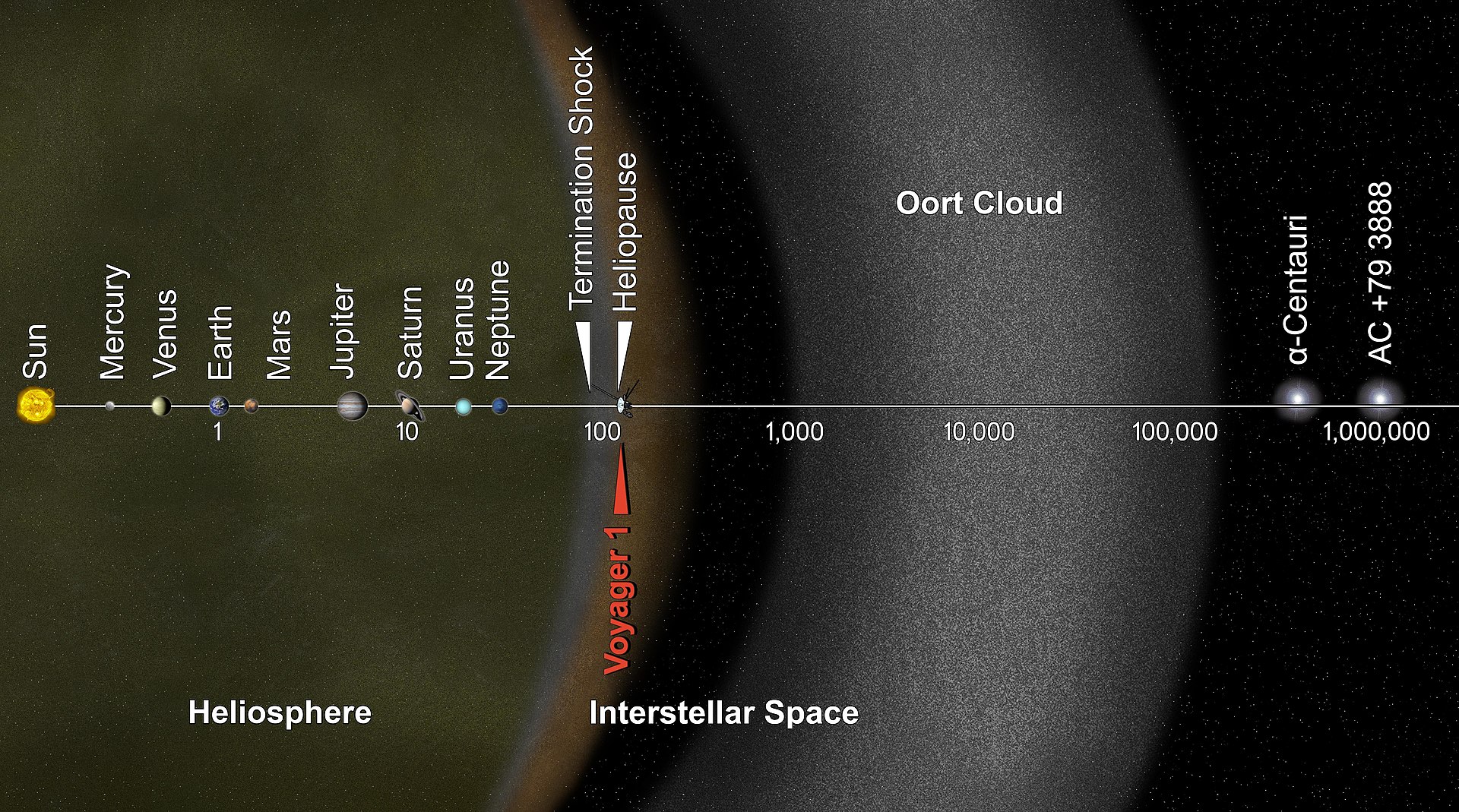
Early observations of the comet
Way back in April of 2024, observers at a small telescope in Chile reported a very faint speck hurtling toward the Sun. It was a comet, the icy siblings of asteroids, and it was 655 million kilometers away but approaching rapidly.
It took the name of the observatory that discovered it -- ATLAS. And as 2024 turned to 2025, amateur astronomers started reporting that ATLAS was visible with the naked eye at night. Instead of a little dot barely visible with a telescope, it was now as bright as Polaris, the North Star.
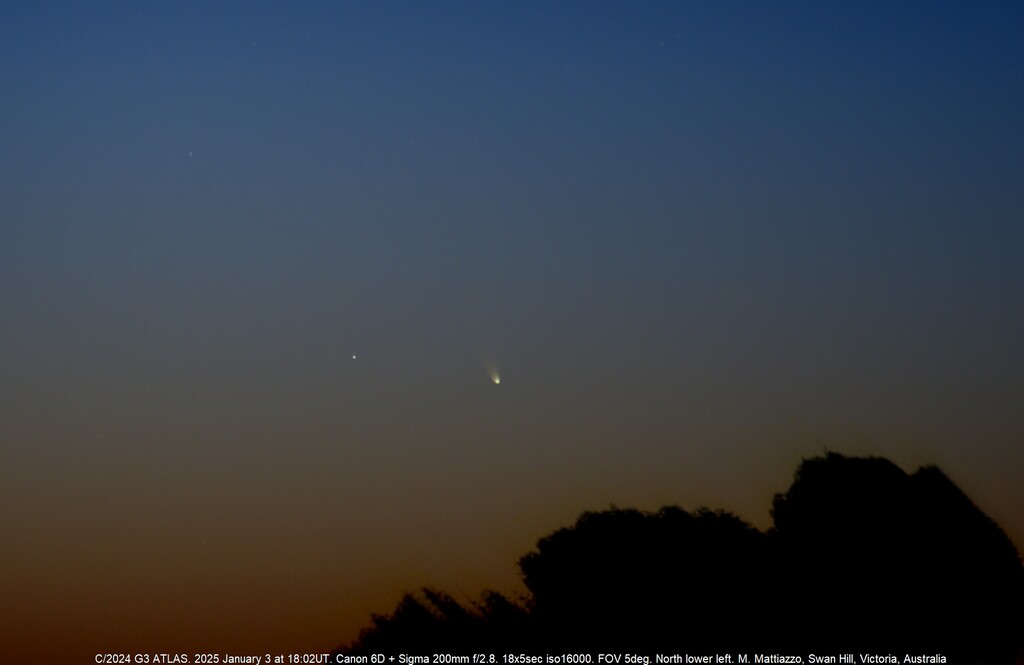
This sudden increase in brightness was caused by the disintegration of the comet's surface. As the comet sped towards the Sun, the temperature increase evaporated large chunks of ice from its surface, feeding its outgassing tail and the hazy glow around its nucleus. But in early January of 2025, it hadn't yet reached its full glory.
The Great Comet of 2025
On January 13, ATLAS entered an exclusive club: the list of comets within the last century that were visible to the naked eye during the day. At the time, it was passing through perihelion, the closest approach to the Sun. It was brighter than anything else in the southern sky, including the planets.
Astrophotographers snapped stunning photos of its tails, one comprised of heavy particles and the other of light gases. An astronaut on the ISS snapped a photo of it through the space station windows. And NASA used a telescope device called a coronagraph to block out the Sun's light, allowing sensitive cameras to observe the comet without being blinded.
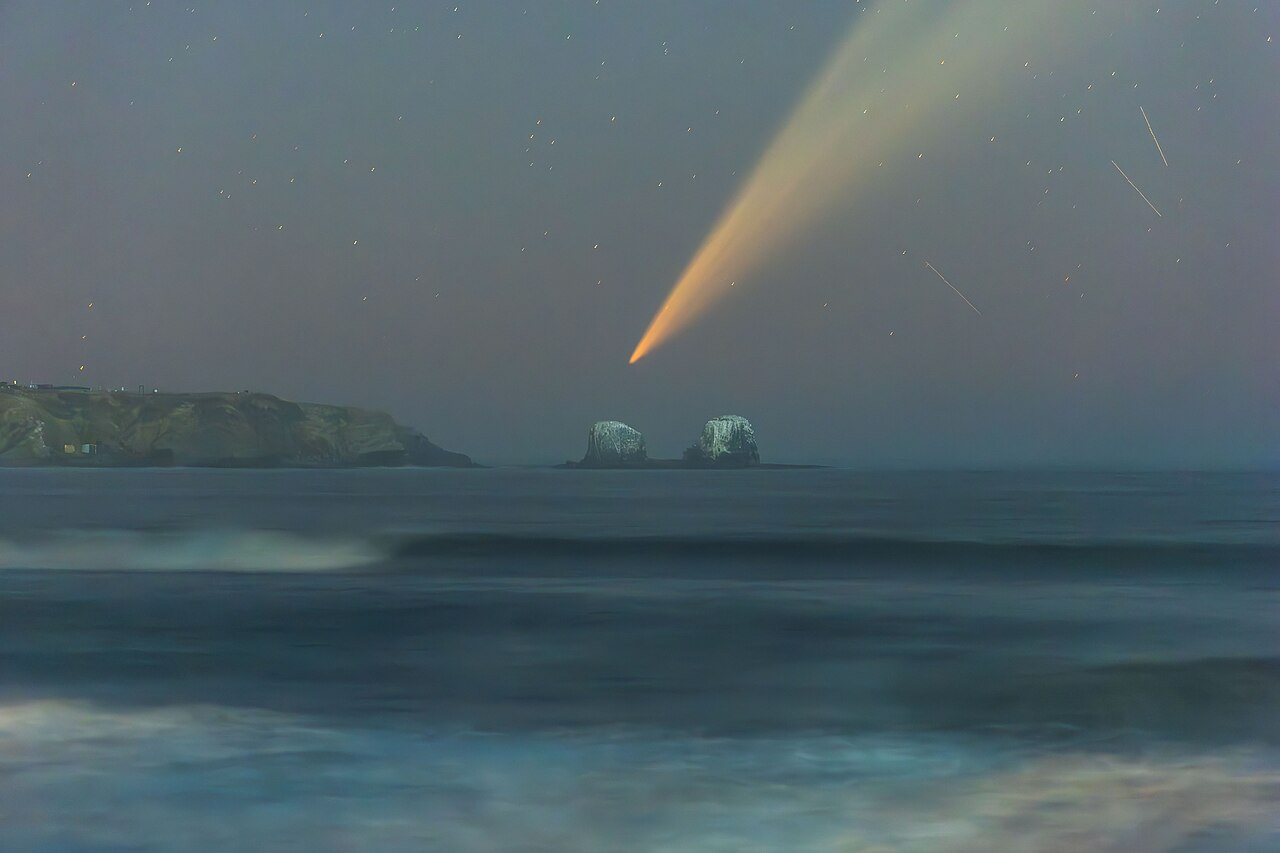
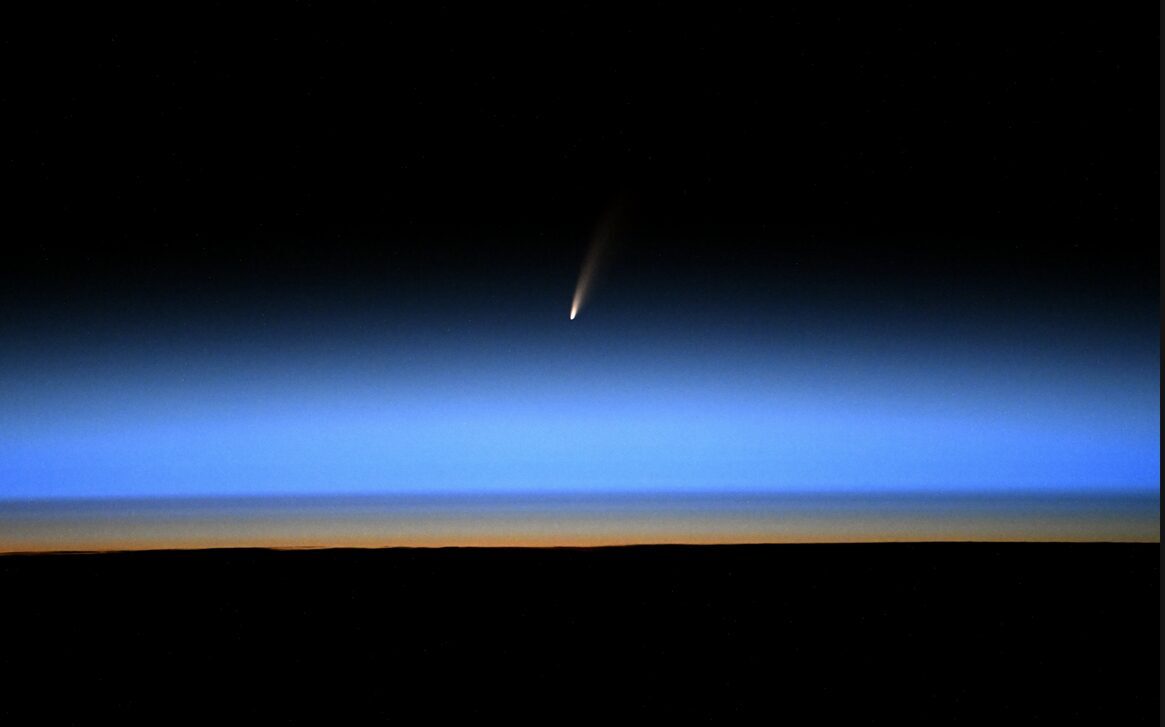
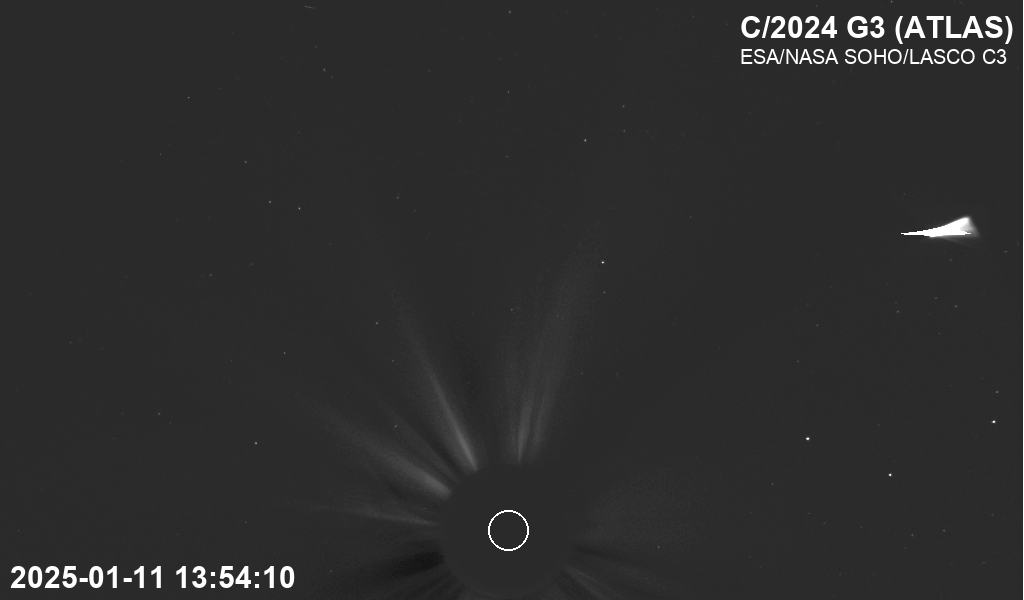
Goodbye, ATLAS
ATLAS is heading away from us, but not unscathed. On January 19, the bright little speck of its nucleus vanished, suggesting that the comet fragmented after its passage around the Sun. What's left is a ghost: tails still streaming across the sky in the wake of debris that soon may disintegrate entirely. We'll have to wait half a million years to see if any part of it survived its vacation to the center of the solar system.
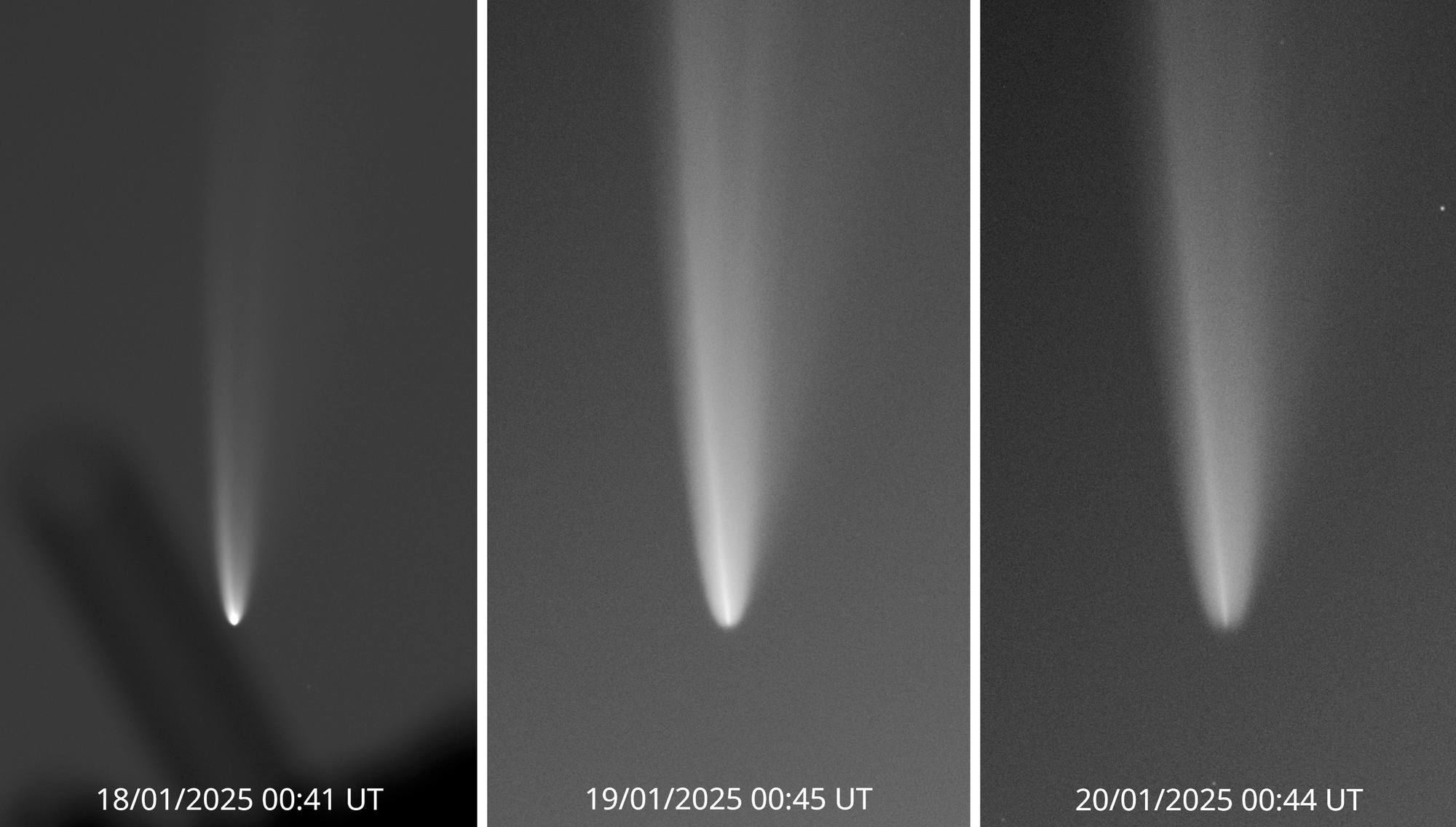


Last week, the world was obsessed with an asteroid that had a 3% probability of hitting us in 2032. Now NASA says it doesn't have a chance in 50,000. What happened?
How are impact probabilities calculated?

I wrote last year about how potentially hazardous asteroids are detected. One aspect I neglected is what that "impact probability" actually means. In the wake of the news about 2024 YR4 and its rapid upgrading and downgrading of threat, I've gotten a lot of questions about how reliable our asteroid observations actually are.
The answer: very. When asteroid hunters first detect that little moving dot against a stationary sky, they have only a handful of data points. Uncertainty will mar any measurements they make of the asteroid's position and velocity.
It's that uncertainty that defines impact probability. Astronomers calculate the trajectory of the observed asteroid, allowing room for error. If that trajectory passes anywhere near the Earth, then as long as the error bars are substantial, the impact probability is as well.
Why did the impact probability go up first?

Once asteroid hunters spot a potentially hazardous asteroid, telescopes around the world jump to observe it, reducing the uncertainty about its trajectory.
But if the asteroid is still heading anywhere near the Earth, the smaller error bars increase the probability of an impact. That's what brought YR4 into the public eye.
This is a pattern with asteroid impact probabilities. An asteroid starts with a moderate possibility of impact. Astronomers jump to observe it, decreasing the uncertainty but not yet ruling out a collision with the Earth. The impact probability jumps up.
Then the error bars on the orbit shrink even further, and suddenly they no longer encompass the Earth. The impact probability drops to pretty much zero.
Asteroid 2024 YR4 hasn't suddenly started behaving less chaotically. We just understand it better, and know exactly where it's going to go. And that's not the Earth.
In northwestern New Mexico lie the architectural remnants of the Chaco Culture. Starting in the 9th century AD, these ancestors of the Pueblo built multi-storied houses, long-distance trade networks, and broad roads carved straight into limestone.
When the U.S. government first started mapping the ruins in the 1980s, they assumed the Chaco roads were merely for transport. Today, archaeologists disagree. The recent discovery of a six-kilometer-long Chaco road that aligns, Stonehenge-like, with the winter solstice highlights how far our understanding of these roads has come.
Astronomical symbolism
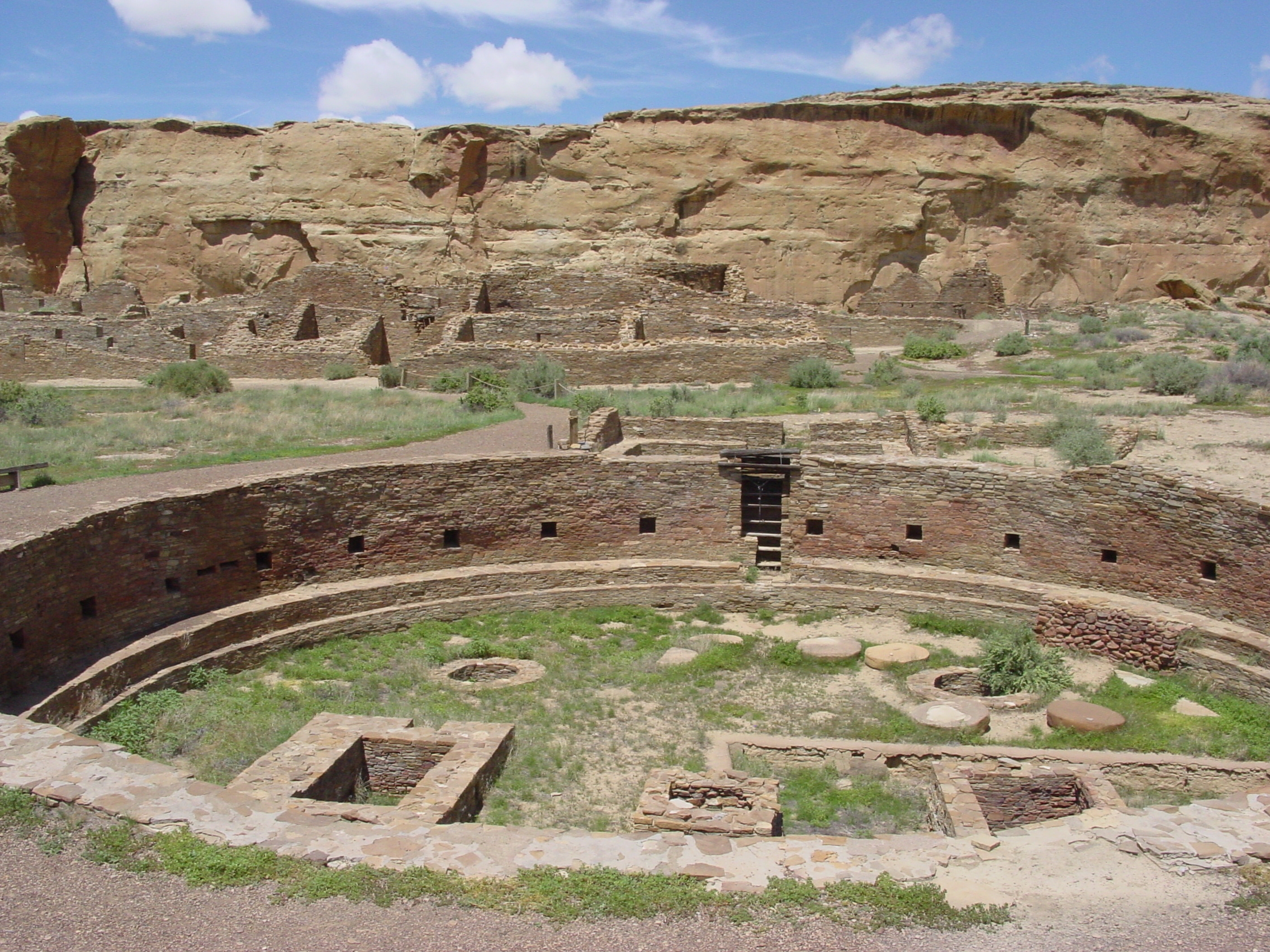
The most famous site in the Chaco Culture is Chaco Canyon. This metropolitan sprawl features massive stone mansions known as Great Houses, more modest dwellings, temples, and burial grounds. The Chaco elites nibbled chocolate from Mesoamerica and kept macaws as pets. When they died, they were buried beside their ancestors in multi-generational crypts, evidence of some of the earliest known class divisions in America.
Chaco Canyon also records celestial symbolism. Astronomers often cite a strange painting of a fiery star as a record of the supernova of 1054 -- an interpretation many archaeologists and modern-day Pueblo dispute. Many buildings aligned with the cycles of the Sun and Moon. And one of the most famous sites, known as the Sun Dagger, manipulates the light of the summer solstice to illuminate an elaborate carving.
Broad roads
Elaborate three-meter-wide roads extend out from most major Chaco settlements. Early surveyors for the U.S. Bureau of Land Management assumed these roads served the same purpose that modern American roads do: to move people and goods from one settlement to another. But while most of the roads start at a settlement, many end seemingly in the middle of the desert.
In recent years, archaeologists have started investigating the road networks with a more open mind. The field also became a more hospitable place for Pueblo and Diné scholars. They contributed to our present understanding that many Chaco roads led to herraduras, horseshoe-shaped buildings thought to be roadside shrines. But are the shrines there because of the roads or are the roads there because of the shrines?
We certainly don't know everything about Chacoan architecture, but a paper published last month in Antiquity gave us another clue. Archaeologists used LiDAR to map a small, oft-forgotten ruin 70km from Chaco Canyon called the Gasco site. The Gasco site had the largest herradura of all, and archaeologists had also previously identified about 75 meters of road.
The new LiDAR mapping showed that the road was actually six kilometers long. And it wasn't one road but two, running parallel beside each other.

Sunrise over Mount Taylor
Both roads point straight at Mount Taylor, also known as Tsoodził in Navajo. The gentle slopes of this volcano rise to the east of the Gasco site. Uranium mining in the 20th century has left them riddled with rusting fences and radioactive debris. In 2009, though, an alliance of five tribes succeeded in protecting Mount Taylor from further mining due to its importance in local belief.
When the authors of the new paper saw the roads led to Mount Taylor, they carefully noted its orientation relative to the sky. They found that it aligns with the path of the Sun through the sky during the winter solstice.
On a hunch, they returned to the site during the 2022 winter solstice. As expected, the Sun breached the horizon right above Mount Taylor, casting the landscape in gold against the deep blue sky.
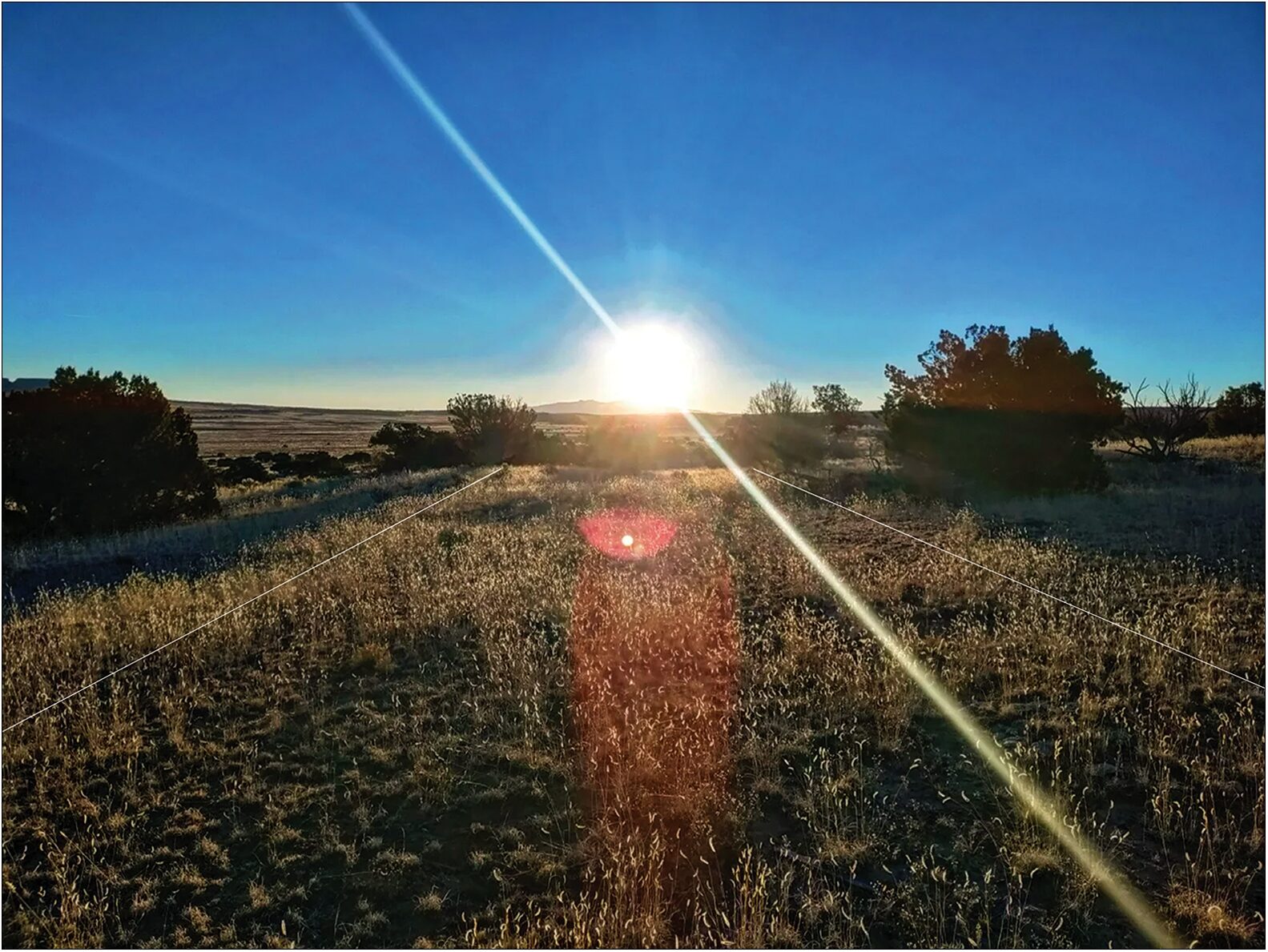
Roads, the solstice, and water
"One of the really exciting things about the work we've been doing with Chacoan roads is that they're forcing us to reconceptualize what a road might be, what a road might mean," lead author Robert Weiner told Live Science.
In fact, the roads don't just point at Mount Taylor. They start and end at water sources: a spring and the head of a canyon river. River pebbles have been found at the Gasco herradura, too, linking the roads to their shrine.
Archaeologists need more time to understand the exact relationship between these roads, the herradura, and the local villages around the Gasco site. That's something it's not clear they're going to get. Local tribal nations are at war with the federal government over drilling projects that could disrupt both the environment and the history of northwestern Mexico.
One thing is for certain: The 1980s interpretation of those roads as merely utilitarian was wrong. And it wasn't just the Chaco Culture that placed a deeper meaning in the construction of elaborate, elegant roads in the American Southwest. What's the deal with Route 66, anyway?
Archaeologists exploring a neglected corner of the Valley of Kings in Egypt have identified the tomb of an Egyptian pharaoh of the New Kingdom. This marks the first such tomb found since 1922 when the discovery of 19-year-old pharaoh Tutankhamun's burial chambers enraptured the world.
The inhabitant of this tomb has a lower profile. Pharaoh Thutmose II ruled for only five years until his death at age 30, when he fell victim to a disease that left him scarred and shriveled. His half-sister and widow, Hatshepsut, assumed the throne as his regent. As Egypt's second-known female pharaoh and an influential stateswoman, her legacy far outshone his.
Now Thutmose II is back in the spotlight.
A hidden tomb
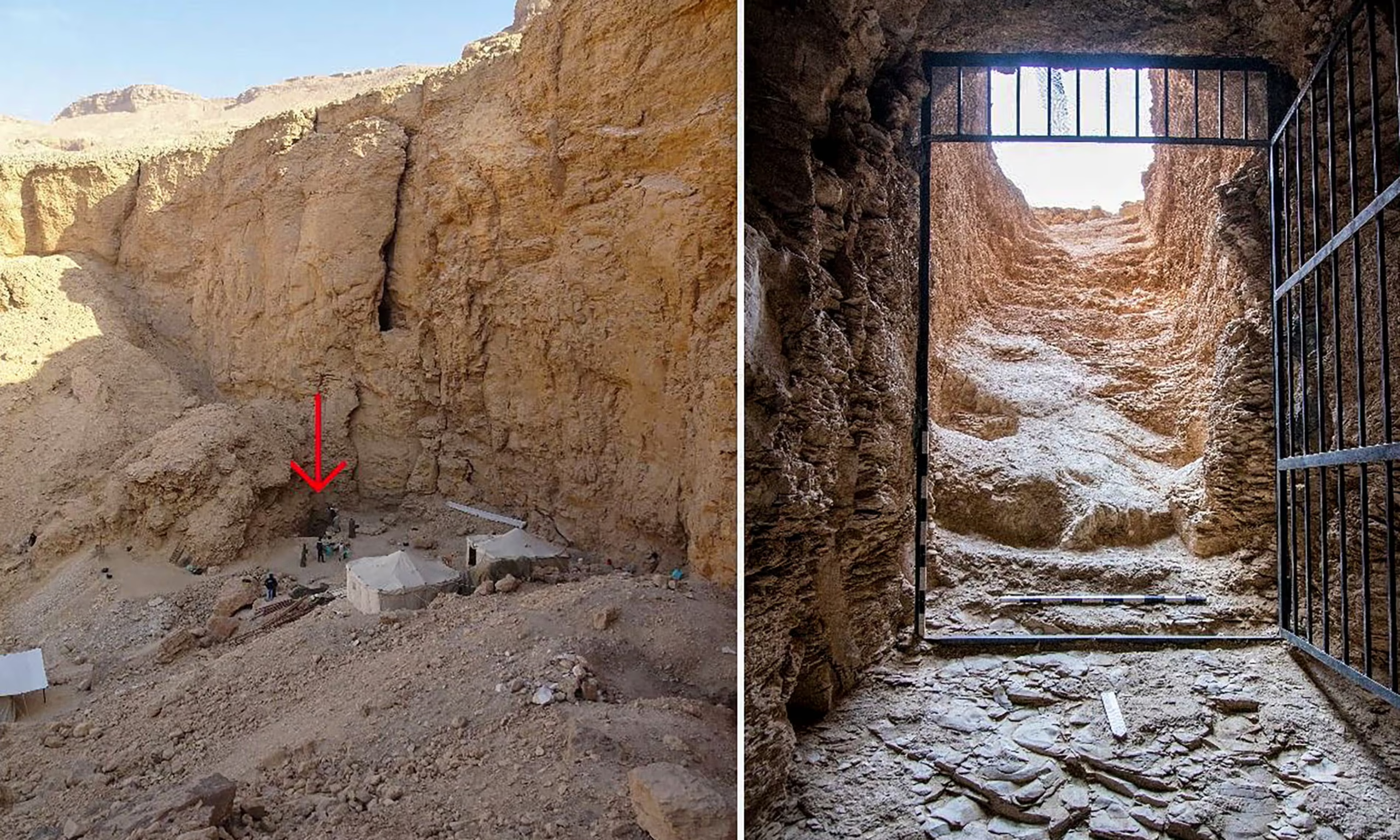
In 2022, a joint Egyptian-British expedition found traces of a staircase leading into the stony depths below a monumental cliff. After months of excavation, they cleared the passageway of rocky debris and emerged into a stark, empty tomb.
There was no sarcophagus or any of the offerings traditional to Egyptian burial sites. Instead, huge limestone chunks clogged the hallways, just like the staircase. But above it all, the ceiling shone with painted stars, and the walls showed scenes from the book of Amduat, reserved for the burials of kings. This had been the tomb of a pharaoh.
So where was he?
Fragments of the old tomb
Scattered among the limestone debris, a few broken fragments of alabaster memorialized the name of the tomb's inhabitant: Thutmose II. Others bore the name of his widow, Hatshepsut.
The debris everywhere didn't align with grave robbers, the common reason for empty tombs. This looked like an orderly evacuation following some sort of disaster. The team concluded waterfalls had pummeled the base of the cliff and flooded the tomb, probably only five or six years after the burial.
But whoever had moved Thutmose II's remains hadn't done so immaculately.
"And thank goodness they did actually break one or two things," commented Dr. Piers Litherland, the lead archaeologist on the team, "because that’s how we found out whose tomb it was.”
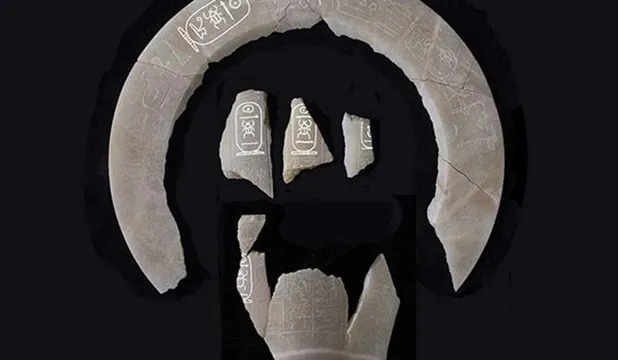
Where was Thutmose II moved?
Egyptologists have known where Thutmose II's body was since 1881. Entombed alongside other royals in the Royal Cache at Deir el-Bahri, Thutmose II had been moved to this communal crypt about 500 years after his death, along with those whose own tombs had also disintegrated.
The French Egyptologist who unwrapped Thutmose II's mummy wrote, "He resembles [Thutmose I, his father], but his features are not so marked and are characterized by greater gentleness. He had scarcely reached the age of thirty when he fell victim to a disease of which the process of embalming could not remove the traces."
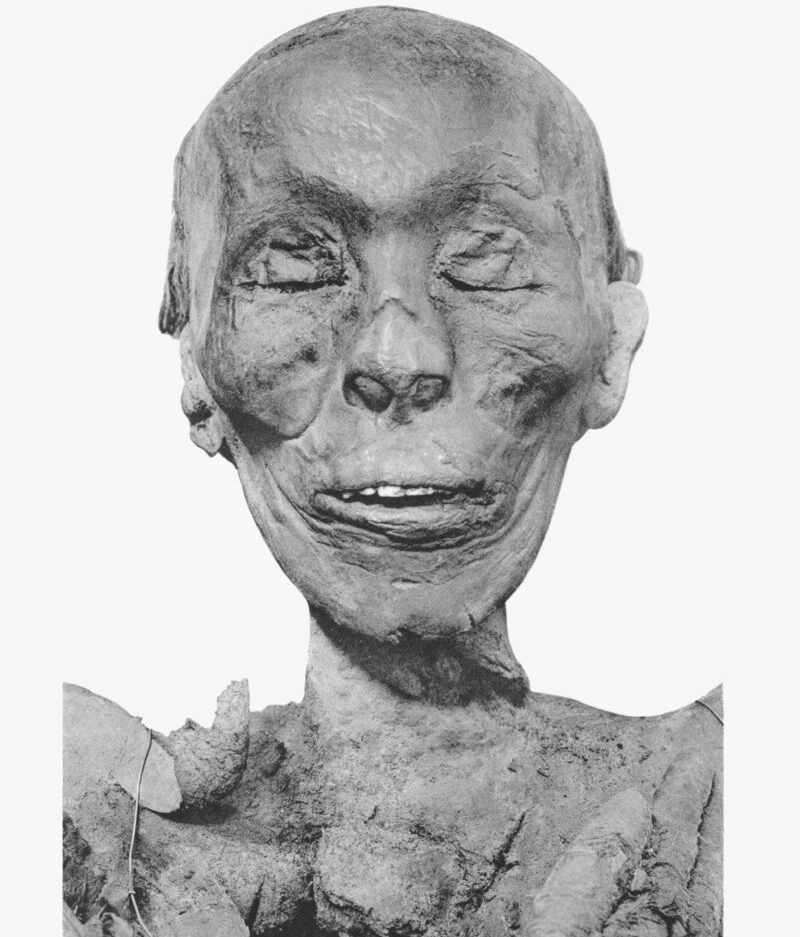
But if a flood destroyed his tomb a handful of years after his death, a second tomb would have had to house his remains and burial gifts for the intervening 500 years before his body wound up in that communal site. If archaeologists can find it, the artifacts within might cast more light on Thutmose II's brief and poorly documented reign.
Hatshepsut, his more famous widow, also stands to benefit should Thutmose II's second tomb be located. Her successor, Thutmose III -- son of Thutmose II by a minor consort -- set to erasing every record of her reign following her death. His motivation was likely revenge over her long reign, which prevented him from taking the throne.
Thutmose II's burial artifacts may contain information on both his reign and the early life of one of Egypt's most iconic but mysterious pharaohs.
Around 13.7 billion years ago, something collapsed. It fell outward into the nothingness that stretched in every direction, leaving something behind. A dense plasma, made of fundamental particles called quarks and gluons. For one tiny moment, the plasma collapsed outward unimaginably fast. Then, reigned in by the quarks coalescing into matter, the collapse began to coast.
The universe cooled. Small clumps of matter, set by random chance in the first moments of its existence, attracted more matter through gravity. They became gas clouds, and then galaxies. Galaxies formed galaxy clusters. And empty space continued to expand.
This was the Big Bang, and it set off the expansion of the universe. Today, we'll look at the strange forces that drive the acceleration of its expansion, as well as one of the most tantalizing open questions in modern astronomy: Exactly how fast is it expanding today? And why can't we figure that out?
The expanding universe
In 1929, an astronomer named Edwin Hubble found that every single galaxy outside of the Local Group -- our neighbors -- was speeding away from us. Galaxies like Andromeda, our nearest large neighbor, had stars that looked more or less the same color as the ones in the Milky Way. But beyond that, every galaxy looked red.
This, Hubble reasoned, was because of the Doppler effect. When a fire truck is driving away, its siren sounds like a decrescendo because the outgoing velocity stretches out the sound waves. The chances of every galaxy outside our local sphere of the universe being naturally red were small. Hubble concluded the simplest explanation was that every galaxy was moving away from us.
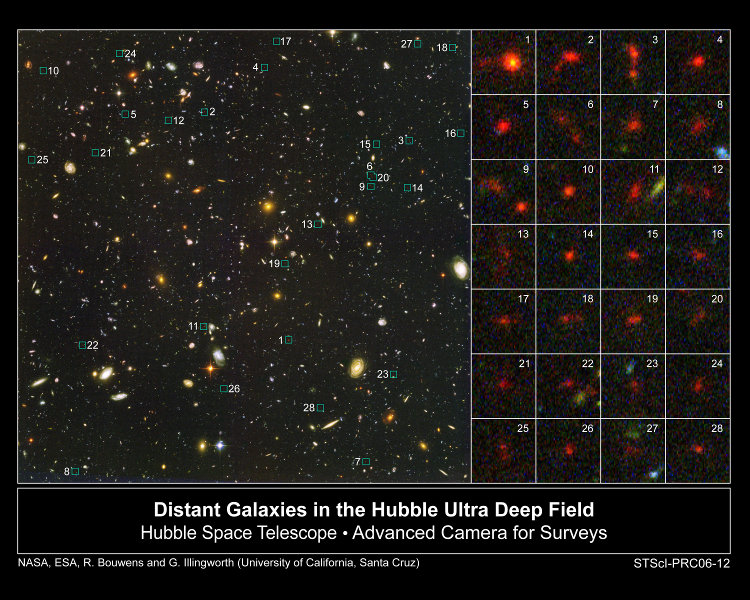
At first glance, this implies there is something special about the Earth. But one of the principles of cosmology, the study of the birth, death, and overall structure of the universe, is that there are no special locations. Any galaxy perceives all distant galaxies as moving away. This is because the space in between galaxies is expanding with every passing second.
In 1998, a team of cosmologists observed the recession velocities of distant galaxies and noticed something strange. At very high distances, galaxies were even further away than they should have been if the velocity was constant. That meant the universe hadn't expanded at a constant rate.
Instead, it's accelerating over time.
Introducing dark energy
According to Newton's first law, objects in motion will stay in motion unless acted on by an outside force. Once galaxies were moving apart from one another due to the Big Bang, therefore, it made sense for them to continue on their trajectories. But for the universe to be accelerating meant that a force was driving that acceleration.
Astronomers dubbed this new factor dark energy, because they didn't know what it was. It's still perplexing, but in the decades since, dark energy has become accepted as part of the universe's source code. Mass attracts mass, like-magnets repel one another, and empty space naturally expands.
Dark energy says: you can't have a true vacuum. Seemingly empty space actually has natural energy, and it wants to get out. It expands -- and if it's already expanding, that expansion accelerates.
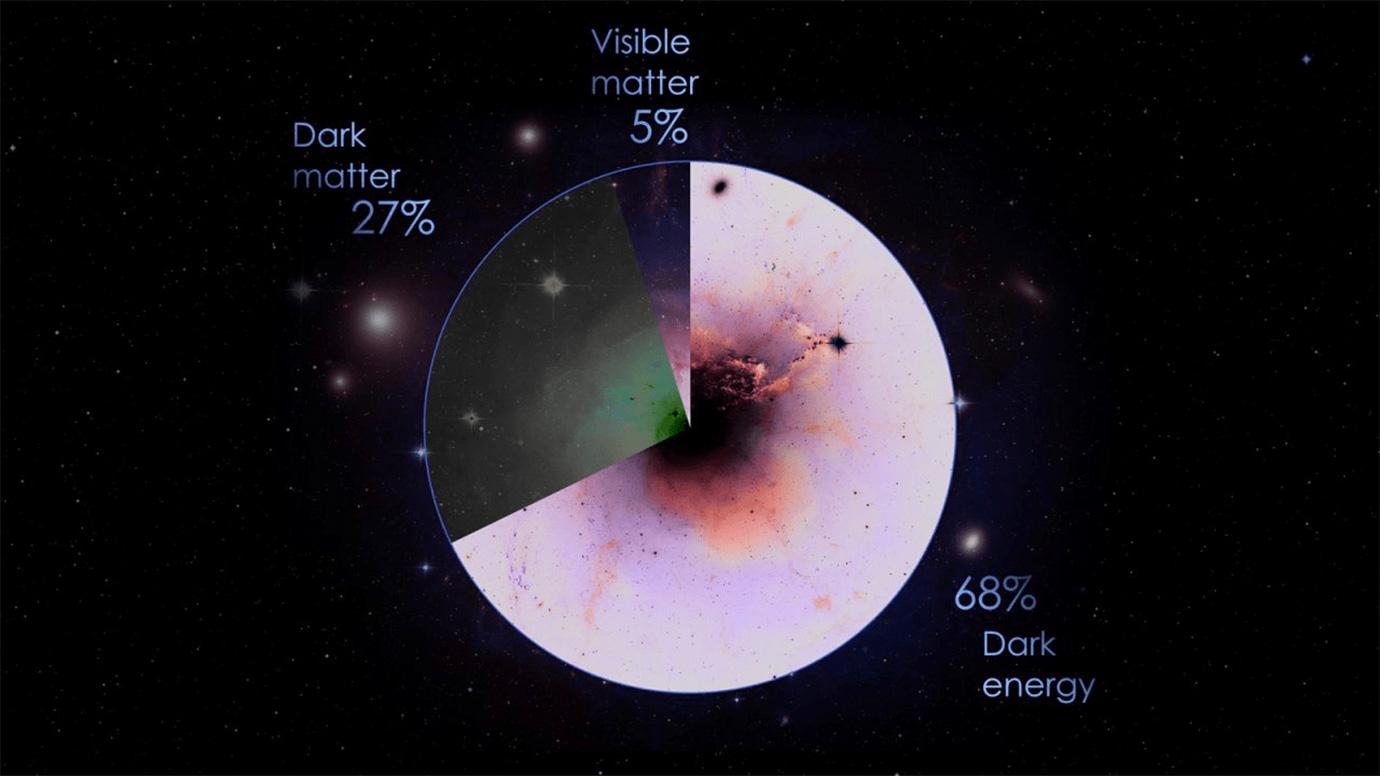
The Hubble Tension
So if the expansion velocity of the universe isn't always the same, what is its present value?
For modern cosmologists, the answer to that question is a Holy Grail. It's not that we have no idea. We have too many ideas. Over and over again, the same two values keep cropping up: 67 km/s and 73 km/s.
In the past, astronomers like Edwin Hubble didn't realize the expansion was accelerating because their observations didn't reach far enough, and when they did, they weren't very precise. But over the last two decades, astronomers have developed very sophisticated techniques for measuring the expansion of the universe. About half of those techniques give a modern expansion velocity of 67 km/s, and the other half give 73 km/s.
At first, cosmologists assumed the values differed because the measurements weren't precise enough. The error bars covered the whole range of values between the two limits, so there was nothing to worry about.
Then the measurements got better and better, the error bars shrank, and still the two values stayed separate. Why?
Cosmic Microwave Background
The further away we look, the further back in time we look. That's because light takes time to travel toward us, so the light from very distant parts of the universe reaches us billions of years after it was emitted. As we look back, we see modern galaxies, then middle-aged ones, and then the strange clumpy squiggles of very ancient galaxies. Then we see the wall.
It's not a physical wall. Instead, it's the image of a time when everything in the universe was on fire. It's called the Cosmic Microwave Background, or CMB. It formed when protons and electrons merged into atoms, suddenly releasing the photons from ricocheting around the primordial plasma. Those photons have been traveling ever since, and are reaching us every day. Part of the static on any radio station or television screen comes from the earliest observable light in the universe.
The CMB isn't perfectly identical in every direction. It has clumps and divots, and those ancient clumps and divots laid the blueprint for the distribution of galaxies in the modern universe.
Cosmologists plug the attributes of those clumps into a general relativity model of the universe starting at the Big Bang. When the clock reaches the present day, the universe is expanding at about 67 km/s.

Wobbling Cepheids
So far, general relativity has withstood every test that's come its way. Why is it, then, that its predictions for the current expansion velocity from the CMB don't match our observations from galaxies?
Figuring out the current velocity from galaxies requires knowing how far away those galaxies actually are. Astronomers use something called the cosmic distance ladder to connect observations within our own galaxy to observations in other galaxies.
First, they observe nearby stars called Cepheids. Cepheids don't have a constant brightness. Instead, they get periodically dimmer before brightening again. The brighter a Cepheid is, the faster its light fluctuates. By observing how fast they fluctuate, astronomers can calculate how bright a Cepheid in another galaxy really is, instead of just how bright it looks when viewed from far away. That gives the distance to the galaxy.
Every so often, two orbiting white dwarfs in these galaxies collide, leading to a massive explosion called a Type 1a supernova (supernova astronomers are infamous for their opaque naming conventions).
Using the known distance of the galaxies, astronomers figured out that the peak brightness of these supernovae controls how fast the light fades. So if a Type 1a supernova goes off in a distant galaxy, we know from the light decay speed how bright it should appear. Once again, we can extrapolate the distance of the galaxy based off how bright its most exotic stars actually appear.
Finally, the Doppler effect allows us to calculate recession velocity of those galaxies. It's always about 73 km/s.
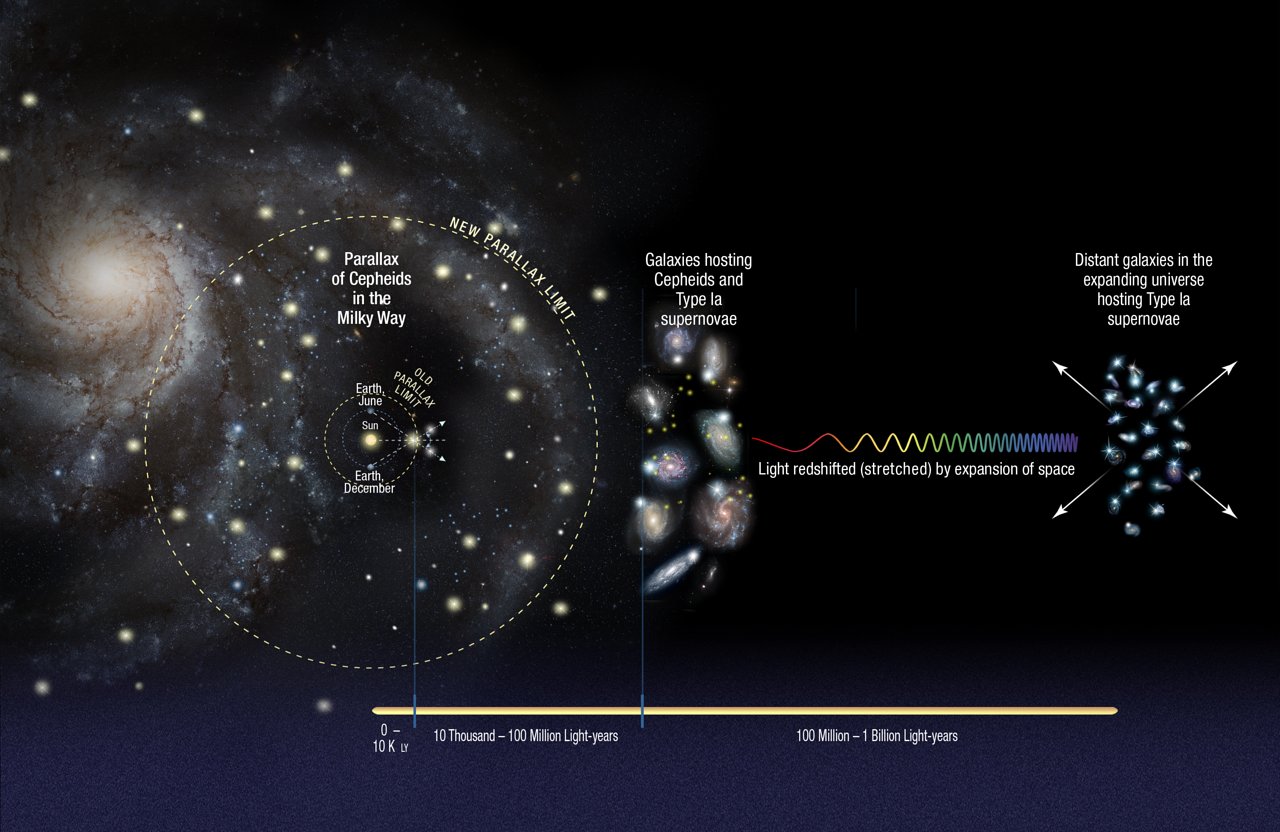
What causes the Hubble Tension?

The discrepancy between these two measurements is called the Hubble Tension, and it doesn't seem to be going away. Other methods of calculating distance from galaxies -- microwave lasers and neutron star mergers, for instance -- give the same result as the supernovae of 73 km/s. Meanwhile, no matter what methods are used to calculate the expansion velocity from the CMB, they all give 67 km/s. A handful of measurements fall somewhere in between, but the vast majority pick a side and stick to it even as their error bars shrink.
It's not clear what's going on. The universe can't be expanding at both 67 km/s and 73 km/s at the same time, so we're going wrong somewhere. Is there some recurring error in how astronomers are calculating distance of galaxies? Are the CMB measurements not as accurate as we think?
Why don't observations in the recent, galaxy-inhabited universe give us the same answers as observations from the very beginnings of the universe. And which of the answers is correct?
Anyone who can answer that question is practically guaranteed a Nobel Prize. But right now, cosmologists have no idea.
The dominant theory is that dark energy was stronger in the early universe in a way the models don't take into account. That would mean that no matter how precise our CMB measurements are, our models aren't correctly extrapolating that information to the present day. But if that were the case, why would dark energy change over time? Isn't it supposed to be a constant of the universe?
There are other, more outlandish theories involving strange "dark" photons that have pushed the modern universe into an increased expansion velocity. But the most disconcerting prospect is not the existence of yet another strange physical substance with "dark" in its name: it's the idea that our model of gravity itself is somehow fundamentally flawed. If so, the story of the universe will have to be rewritten.
Paleontologists have found the first complete skull of a controversial prehistoric bird. Known as Vegavis iaai, the bird thrived in late-Cretaceous Antarctica, then a tropical paradise. About a million years before the asteroid that wiped out 75% of life on Earth, it went extinct.
Its fossilized skull, first discovered in 2011, has finally been analyzed. It fills in gaps in ornithologists' understanding of Vegavis iaai -- and highlights the striking ecological diversity of early birds.
A controversial bird
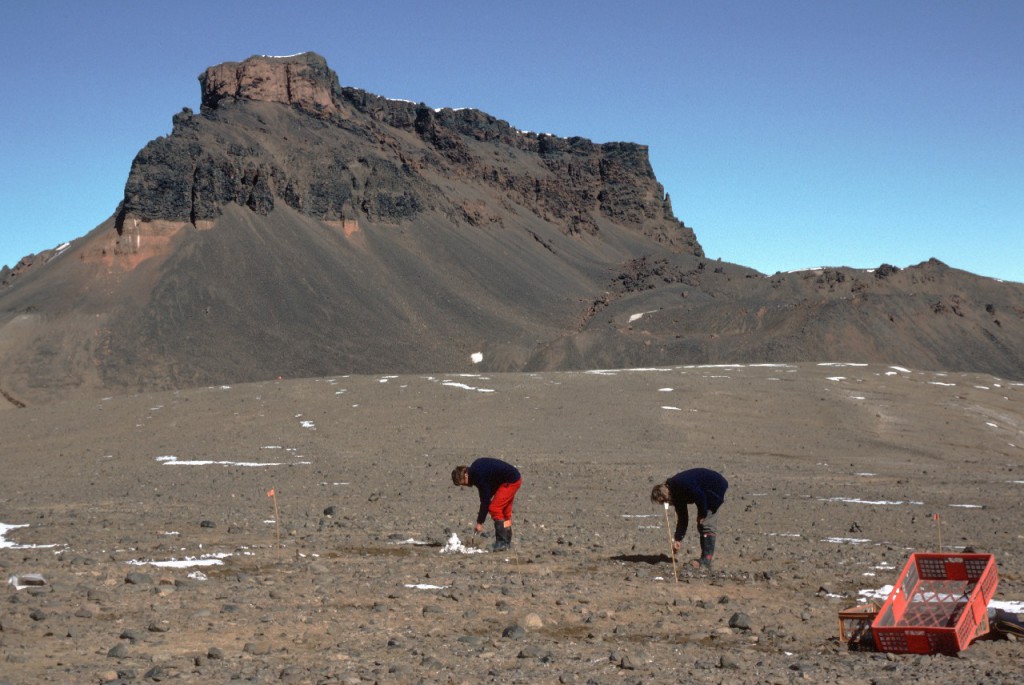
The fossil's discoverers said it was a waterfowl, a broad order encompassing everything from geese to loons. That's where the controversy began.
Most of the time, when fossils are controversial among paleontologists, it's due to questions about their authenticity. One of the most controversial fossils in history was the Piltdown Man. In 1912, an amateur archaeologist combined an orangutan mandible with the skull of a human and claimed he had found it in prehistoric English gravel beds. And in an example of a genuine mistake rather than fraud, the infamous tooth of the Nebraska man turned out not to be from a prehistoric North American ape as originally proposed, but from a peccary.
But ornithologists never doubted that Vegavis iaai was some sort of dinosaur. Instead, they couldn't decide what kind of dinosaur it was. Dinosaurs included birds, but not all birds were dinosaurs. Was this the ancestor of a duck? A chicken? Or was it a completely different kind of dinosaur that just happened to look like a modern bird?
The lifestyle of Vegavis iaai
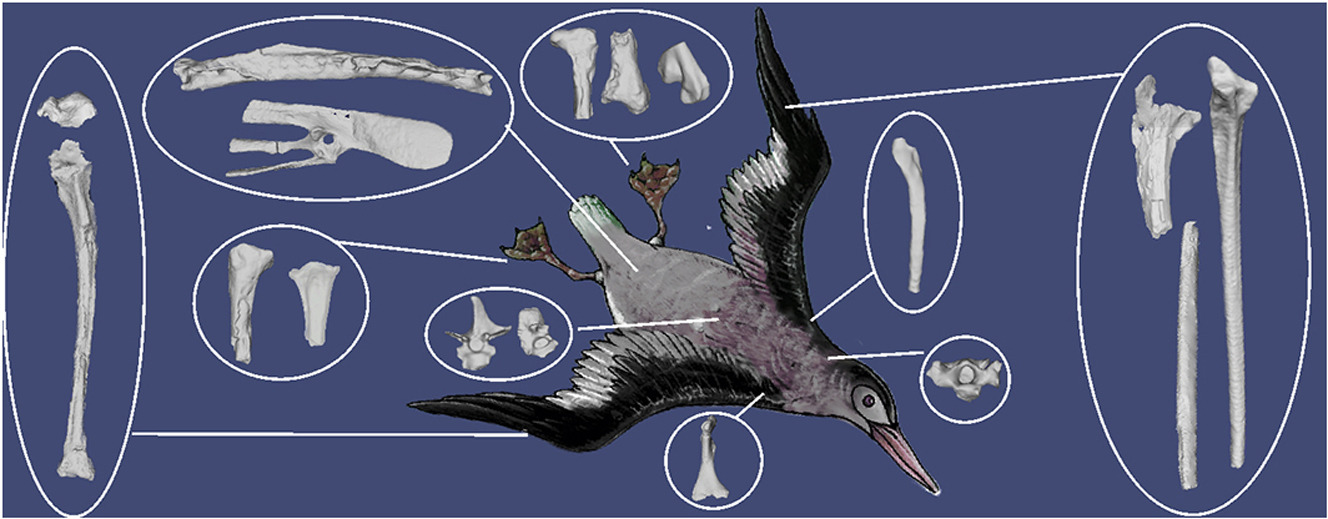
Although its exact identity was puzzling, the fossil of Vegavis iaai provided important clues about its lifestyle. It had flat feet to propel it underwater. A fast metabolism allowed it to thrive at high latitudes but kept it hungry for food. And it could sing.
In fact, Vegavis iaai wasn't just an early singing creature. As far as we know, it was the earliest. Most dinosaurs couldn't sing, and although avian dinosaurs -- birds -- lived prior to Vegavis iaai, they lived in silence.
But did Vegavis iaai evolve into a modern species, or was it peculiar to the late Cretaceous? To answer that question, paleontologists needed the missing link -- a skull.
Shedding light on prehistoric Antarctica
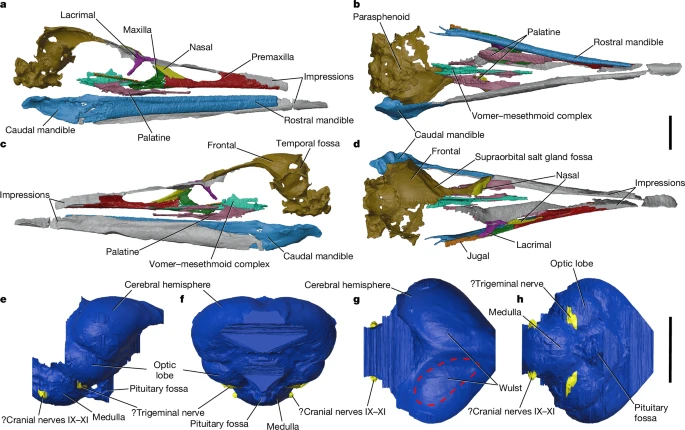
A paper published in Nature last week reports, for the first time, the 2011 discovery of a complete Vegavis iaai skull. Over the course of 14 years, the authors carefully analyzed the skull, including the use of X-ray microscopy to create a 3D model.
Its features don't slot neatly into any modern bird family. Vegavis iaai had the flat feet of ducks but a sharp, narrow beak like a loon. Thick muscles supported its jaw against water pressure, allowing it to bite underwater. Its skull, though, lacked the bony spurs at the base of the beak common to most modern birds.
It was a waterfowl, but it wasn't anything as familiar as a duck or a goose. In fact, the authors show that the closest relative to Vegavis iaai was another prehistoric Antarctic bird, Conflicto antarcticus. The kicker: unlike Vegavis iaai, Conflicto antarcticus dates from after the Chicxulub meteor killed all non-bird dinosaurs.
We know that birds survived the impact event because they existed before and, evidently, they exist today. But the new findings on Vegavis iaai make it the one lineage we can tentatively trace from immediately before the impact to immediately after.

Albert Einstein predicted in 1912 that massive objects should bend light as it passes through their gravitational field. He published his theory of general relativity four years later, and the curvature of light seemed a minor point at the time.
When Russian physicist Orest Khvolson posited that in rare cases, the bending of light would create a halo effect, Einstein acknowledged this but wrote, "Of course, there is no hope of observing this phenomenon directly."
Einstein, for once, was wrong. This week, a team from the European Space Agency's dark energy survey telescope Euclid published a high-resolution photo of a halo effect called an Einstein ring. And unlike previously observed Einstein rings, this one is from a nearby galaxy.
Einstein rings show distant galaxies
While the math of Einstein's theory of general relativity may be complex, the core principle is not. Gravity, Einstein argues, is best described as the warping of space around massive objects. There's a common analogy demonstrated in science museums, where guests can roll a penny (or other undesired coinage) down the sides of a funnel and watch as it orbits inexorably downwards. Planets perform the same dance in space distorted by the Sun's gravity.

In this framework, light bending around massive objects is a logical outcome. The space around those objects warps like a funnel, and light curves in an arc around the center.
This effect is called gravitational lensing. Einstein rings appear when the lensed image lies right behind the object that's doing the lensing. Because nothing on Earth or even in the Milky Way is massive enough, all the Einstein rings we observe are formed when the light from distant galaxies contorts around more nearby galaxies.
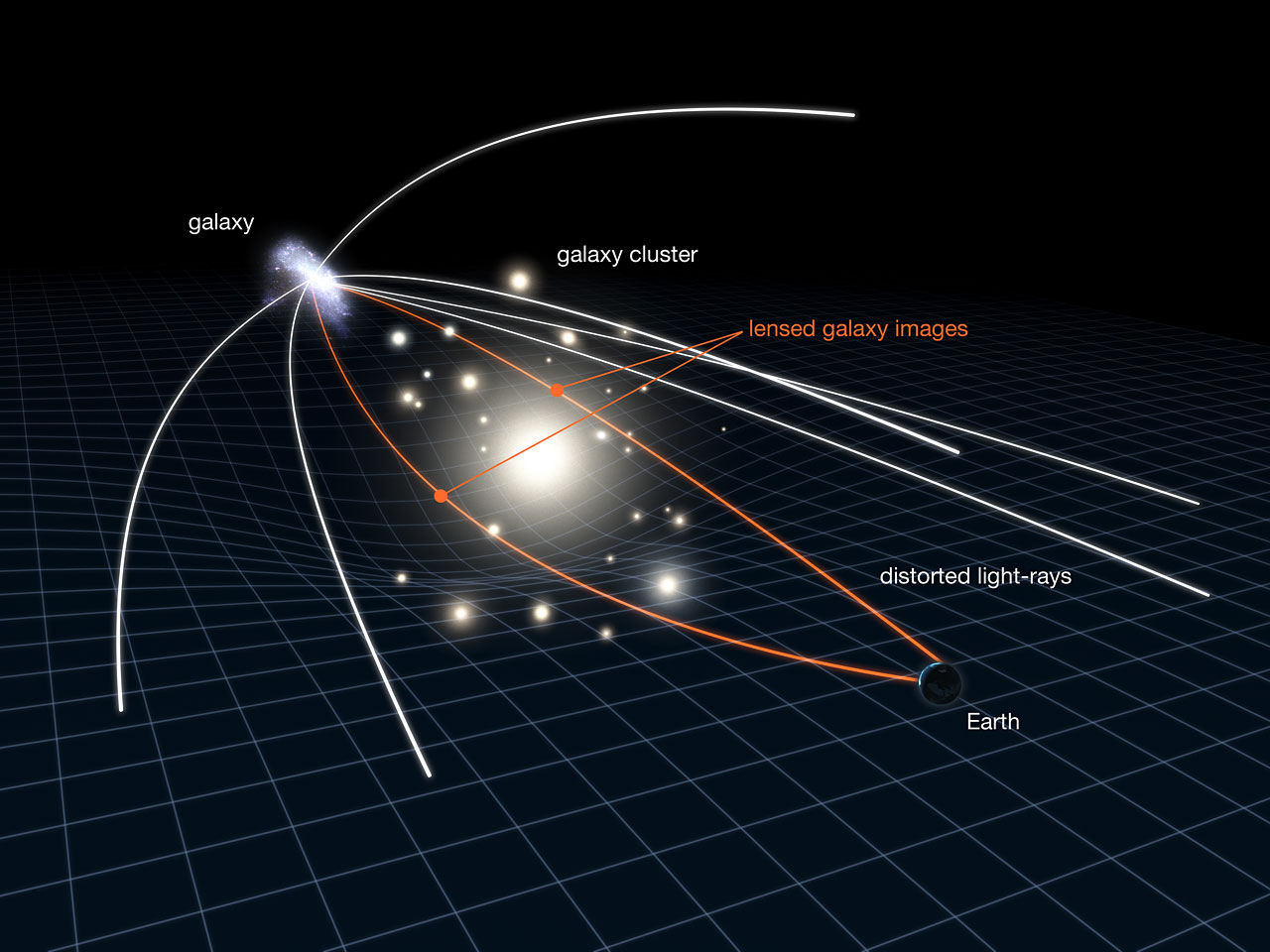
A uniquely nearby Einstein ring
The Einstein ring imaged by Euclid is one of the closest to home ever found. The lensing galaxy is only 590 million light-years away, or just over 200 times as distant as the Milky Way's nearest galactic neighbor Andromeda. In fact, astronomers have known of this galaxy's existence since 1884, before they even knew that galaxies lay outside the Milky Way. Meanwhile, the galaxy that's being lensed is a lot further -- a whopping 4.42 billion light-years away.

The clues hidden in Einstein rings
Previously, Einstein rings have given cosmologists -- astronomers who study the evolution of the universe -- key information on early galaxies. Our telescopes have a long way to go before they can detect the earliest galaxies whose light is reaching us. But when that light passes through a gravitational lens, more of it focuses on us. If we're an ant on the sidewalk, then the lensing galaxy is a kid with a magnifying glass.
That means that our only direct observations of very early galaxies come from lenses like Einstein rings. Cosmologists use them to understand what kind of stars existed in the early universe.
But Einstein rings also provide a lot of information about the galaxy doing the lensing. How massive are they? How is that mass distributed? And how much of it comes from dark matter versus ordinary stars and gas?
In this case, the Euclid team found that the lensing galaxy has more massive stars at its center than the Milky Way does. Massive stars are the rarest, numbering 1 for every 25,000 Sun-like stars. Astronomers still don't understand all the factors that lead galaxies to form certain types of stars. This Einstein ring adds another piece to the puzzle.
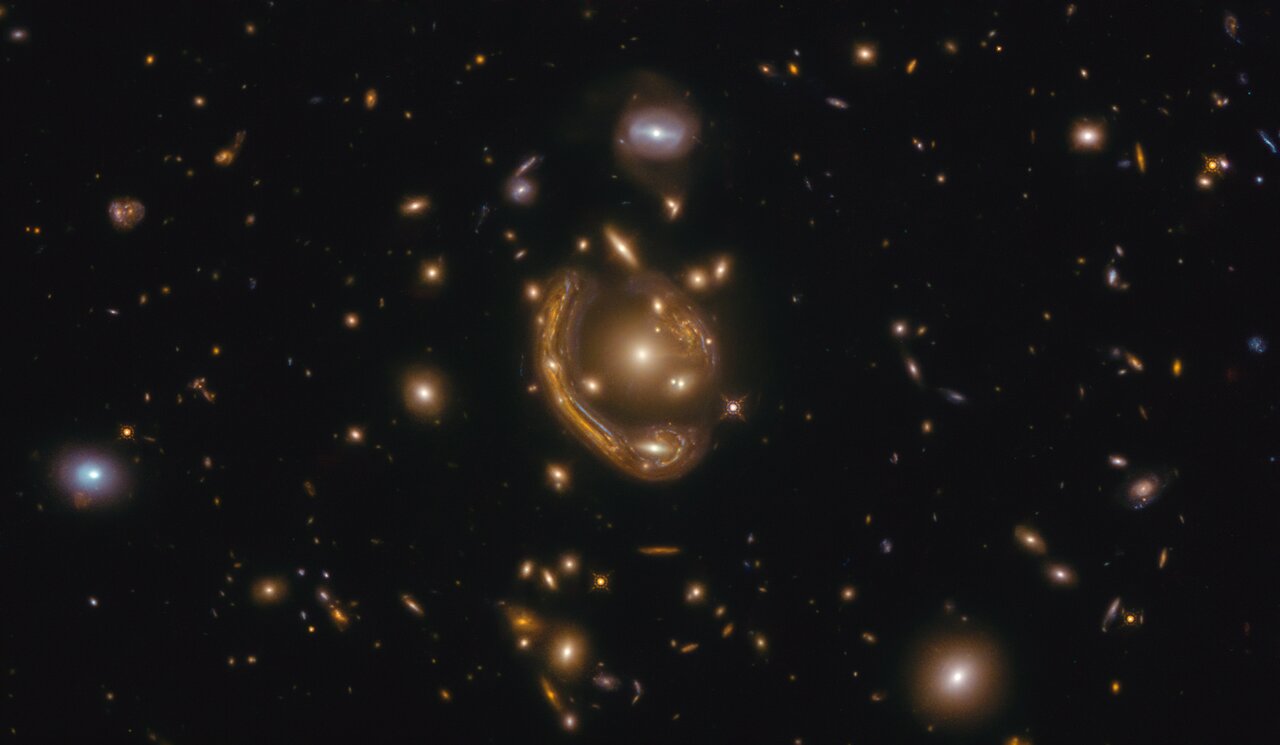
We know more about the universe than many people think.
Space mysteries are usually quite mundane to all but obsessive researchers. The most compelling open question in astrochemistry, for instance, is how often molecules are recycled during star formation before depositing onto the surface of planets. It's a key gap in our understanding of outer space environments, but it's not going to intrigue any first dates.
But there are a few tantalizing questions that are so big we can't even tackle them head-on. Questions that most astronomers hope against hope will be answered in our lifetime -- but deep down don't believe ever will be.
In this new series, we'll cover some open questions in astronomy, starting relatively small and working our way up. This week: the mysterious, sometimes-repeating extragalactic signals known as Fast Radio Bursts.
An accidental discovery
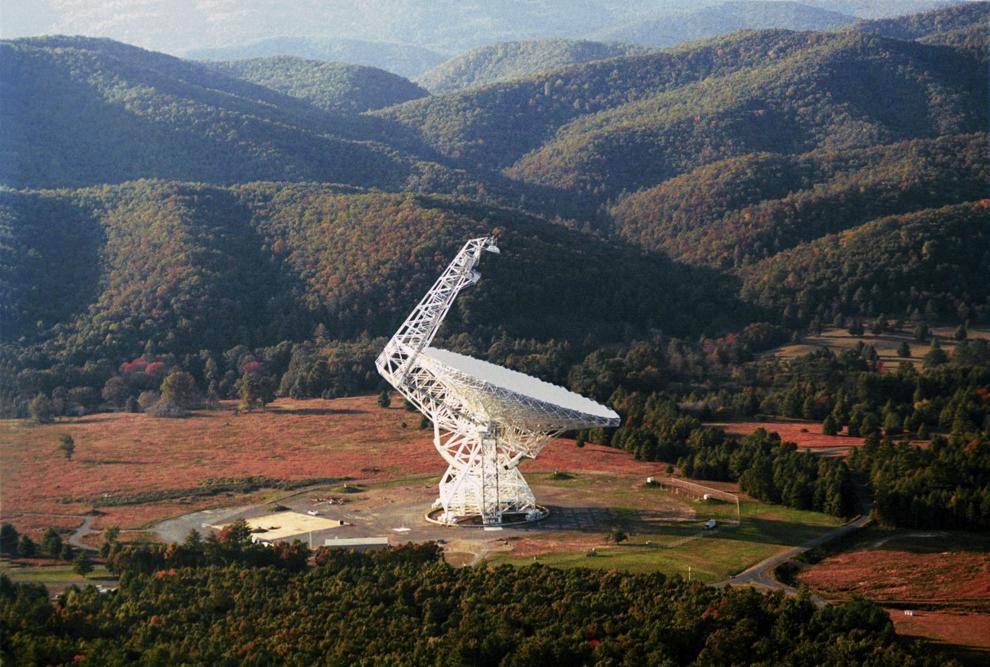
In 2007, a grad student at West Virginia University -- arguably the center of American radio astronomy -- found a strange whooping signal in old telescope observations. It started at high radio frequencies and, over the course of half a second, swept down to low. Then it disappeared.
The high-to-low-frequency aspect wasn't a mystery. That sweeping pattern appears all over radio astronomy because the free electrons floating around interstellar space slow down low-frequency light more than high-frequency light. Since it gets delayed more, it shows up at the telescope a moment after the high-frequency parts of the signal.
We see this all the time in radio signals from within the Milky Way. We know about how many free electrons there are floating around in our galaxy and how much they delay different frequencies of light. Therefore, the degree of delay from electrons is often used as a rough measure of the distance of an object.
The signal that grad student Ash Narkevic had just found was so delayed that it could only have come from another galaxy.
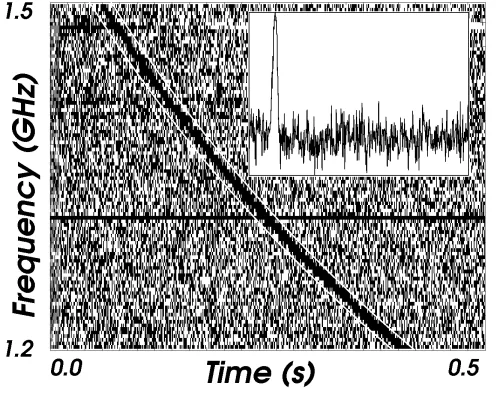
The Lorimer Burst
Narkevic's advisor was an up-and-coming professor of transient radio astronomy named Duncan Lorimer. He and Narkevic wrote a paper about their discovery, submitted it to the prestigious journal Science, and were soundly rejected.
They resubmitted. This time, their paper was accepted. The world of radio astronomy collectively lost its mind and began pouring over archival data, searching for similar bursts.
They found nothing. In fact, they found worse than nothing. In 2011, after four years of radio silence, a graduate student at WVU named Sarah Burke-Spolaor found a signal that looked uncannily like Lorimer's burst. She called it a peryton. The trouble was, it was so bright that it could only have been produced on Earth. Had the Lorimer burst, fainter though it was, also been created on Earth?
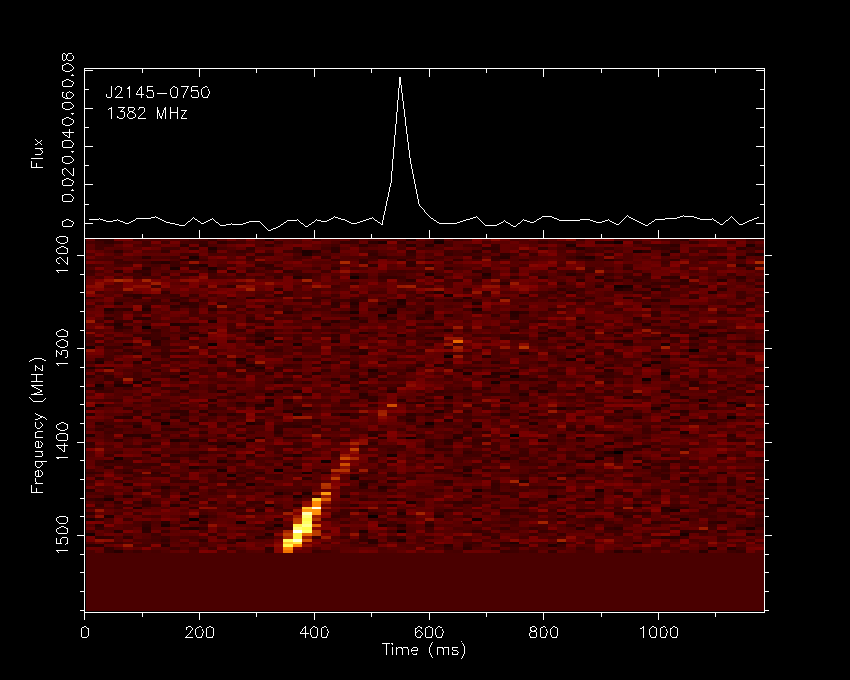
Furbies
The mystery remained for another two years until a PhD student at the University of Manchester named Dan Thornton turned his eye to a set of data with very precise time information. His search found four more bursts just like Lorimer's. The bursts were real, and at the suggestion of the Manchester team, they earned a name: fast radio bursts, or FRBs.
There was some early discussion on whether this should be pronounced "furbies," but the consensus was that this would make radio astronomers look silly. And FRBs are very serious indeed.
Microwave oven?
With new advances in observing using very precise time-processing software, the FRBs started pouring in. The one found by Ash Narkevic in 2007 hadn't traveled far compared to some of the new FRBs. One of them seemed to have been created 7 billion years ago.
But a specter hung over FRBs. The too-bright peryton signal found by Sarah Burke-Spolaor still lurked in the backs of everyone's mind, taunting them with the question: If these things look so similar, and some of them are definitely terrestrial, are all of them?
Then, in 2015, an experiment at the Murriyang radio telescope in Australia vindicated FRBs. Swinburne University graduate student Emily Petroff, long obsessed by the puzzle of perytons and FRBs, published the solution in probably the funniest non-joke paper ever written in radio astronomy.
The existence of obviously terrestrial perytons "had previously cast a shadow over the interpretation of [FRBs], which otherwise appear to be of extragalactic origin," she wrote. "We have identified strong out-of-band emission at 2.3–2.5 GHz associated with several peryton events. Subsequent tests revealed that a peryton can be generated at 1.4 GHz when a microwave oven door is opened prematurely, and the telescope is at an appropriate relative angle."
FRBs had nothing to fear: "We furthermore demonstrate that the microwave ovens on site could not have caused [the Lorimer Burst]."
The identity of perytons is a continued point of amusement among radio astronomers, and was even parodied in an xkcd panel.
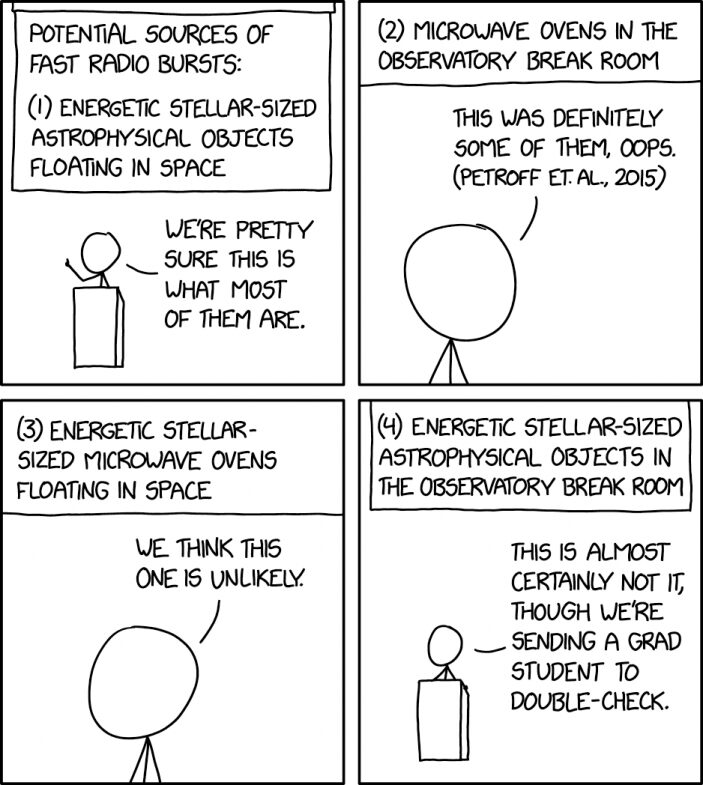
The clues
For once, xkcd made a science mistake. In the comic strip, they describe the origin of FRBs as "stellar-sized objects." We know this can't be true. The time between the start and the end of many bursts is so short that light could only travel a distance of ten or so kilometers during them. Since light is the fastest thing in the universe, points not connected by light wouldn't know to emit at the same time. The bursts, therefore, are created within roughly the distance from Everest to Makalu.
Stars are a lot bigger than that.
Another clue in the FRB toolbox, discovered in 2015: Some of them repeat. The pulses look different every time, but they're very clearly coming from the same location and the same distance. Many more have only ever been seen once. So unless there is more than one mechanism creating FRBs, they aren't produced by one-off events like supernovae or two stars merging.
The magnetar explanation
And then there's the final clue. In 2020, independent teams at Caltech and at the CHIME telescope in Canada both found what looked like an FRB coming from an exotic object within the Milky Way called a magnetar. It was 30 times fainter than the faintest FRB but offered a tantalizing explanation.
Magnetars (Lead image) are the corpses of stars that can no longer support their own weight. Gravity crushes them until their protons and electrons squeeze together to form neutrons. They have massive magnetic fields and regularly send out brilliant flashes of gamma rays and X-rays -- high-energy photons that often go hand in hand with radio waves. In fact, the Caltech team found that the magnetar released X-rays at the same time as the FRB-lite.
The mystery
So magnetars produce FRBs somewhere on their surface via hijinks in their magnetic fields. Mystery solved.
Except that picture doesn't explain many extragalactic FRBs. Gamma-ray and X-ray bursts from magnetars are very rare, so how could so many FRBs repeat monthly or even weekly? And why do some FRBs come from galaxies where we don't expect to find any magnetars? After all, magnetars are all born early in a galaxy's life span. They only stay magnetized for about 10,000 years. Meanwhile, an FRB reported just this month came from a galaxy that's been around for 11 billion years.
At this point, astronomers know only one thing for sure: FRBs aren't coming from microwave ovens.
Anymore.
Two thousand kilometers from the southern tip of South America sits the island of South Georgia, a Yosemite-sized piece of polar tundra boasting thriving communities of king penguins, elephant seals, and fur seals. Alongside this charismatic fauna, native birds like the South Georgia pintail duck and Antarctica's only songbird, the South Georgia pipit, coexist. And here, in 2021, Belgian nature photographer Yves Adams caught a striking yellow-gold penguin on camera.
Where normal penguins had black feathers, this one had neon yellow. The effect was probably caused by leucism, a genetic mutation that results in depigmentation. Because the penguin was never studied closely, though, it could also have been albino.

Mission yellow penguin
Yves Adams returned to South Georgia this year as an expedition guide, hoping to find his golden penguin once more. It was nowhere to be found.
But his expedition leader tipped him off to something even more extraordinary, Adams told IFLScience. Adams kept his eyes open, and his patience was eventually rewarded. In a flock of its peers stood a jet-black king penguin.
Besides the video above, Adams snapped a set of glamor shots of the penguin: standing solo, frolicking in the snow, and inspecting the ground with neck-elongating intensity.
Adam's black penguin is striking, but beyond that, it's also amazingly rare. In 2019, a National Geographic photographer snapped a shot of another black king penguin, this one with splashes of white on his wing. Partial melanism, when animals are mostly but not entirely black, is more common than complete melanism. Even for the 2019 penguin, an ornithologist made the journalist who contacted him swear an oath that the black penguin was real.
But Adams' new penguin isn't mostly black -- it's entirely black.
#blackoutpenguin
Up close, Adams said, the penguin's belly feathers have a greenish tint. He seemed healthy and fit in with the rest of the flock.
On Instagram, he wrote, "This one is for the penguin addicts!" In case the penguin addicts needed some help from the algorithm, he tagged the photos #gothicpenguin, #formalpenguin, and #blackoutpenguin.
The prize for his best hashtag, though, stays with his original golden penguin: #yellowpenguinlove. Well, just look at it -- it's yellow, and hard not to love.
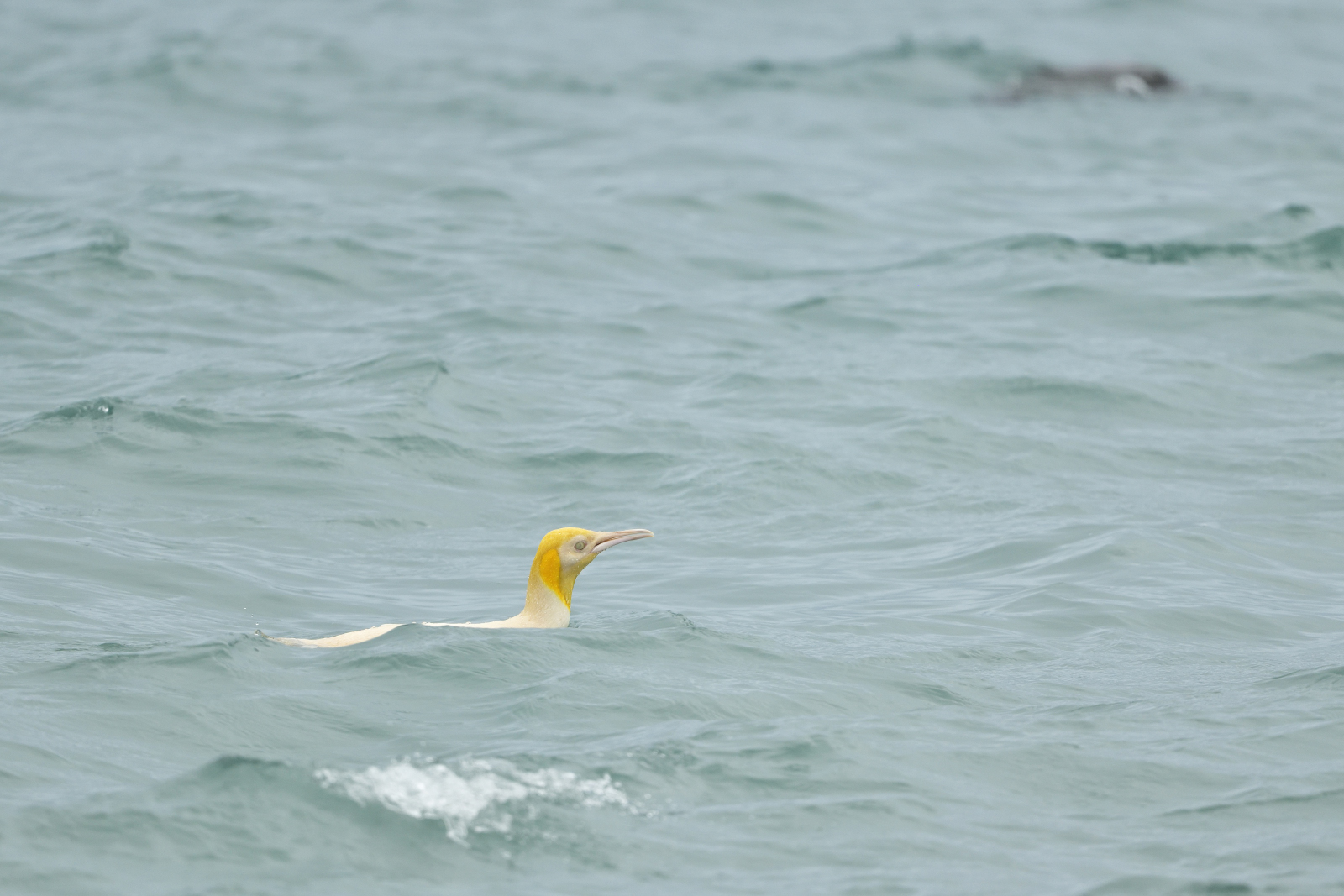
In 1863, a Russian paleontologist and mining engineer made his way through the Eocene strata of the Caucasus to the shores of the Caspian Sea. His name was Hermann Vil’gel’movich Abikh, and he had heard tell of ghost islands and strange fireballs over the water. As an expert on petroleum and natural gas, this had caught his attention.
Sitting in the rich blue waters off the coast of Azerbaijan was an island the size of a basketball court. By Abikh's measure, it stood 3.6m above the water-- higher than the elevation of Amsterdam. And yet on maps of the shoreline from the previous year, the island -- called Kumani -- sat a full 2.4m lower in the water.
What had happened? And did it have anything to do with the ever-burning flames seen on nearby Dashly Island?
Two centuries later, NASA geologists reviewing satellite footage of the Caspian Sea found themselves asking the same questions.
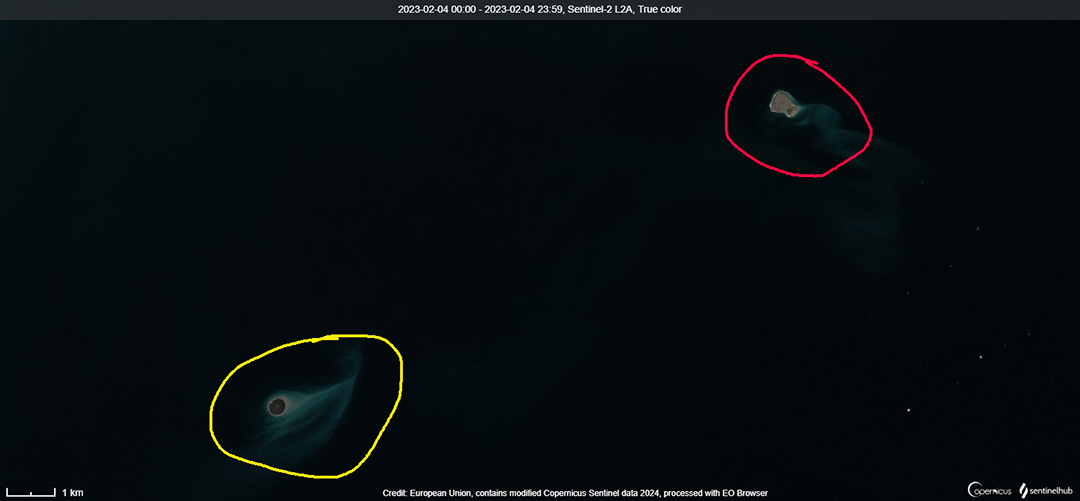
The same island
Landsat 8 and 9 orbit the Earth at a distance of about 700km. Designed for geological survey work, it's no surprise that their engineers pay careful attention to the seismologically excitable Caspian Sea. And in 2023, that attention was rewarded. Where before only empty water had sat, suddenly a speck of dirt jutted above the water line, trailed by a shallow sand bank.This was the same intermittent island that Abikh had recorded in the 1860s. By 2024, Kumani Island was almost gone again.
The reappearance of Kumani came a year after a massive explosion on nearby Dashly Island. Oil rig workers caught the fireball on camera. It made international news, especially given the strategic location of the Caspian Sea.
At the time, Kumani Island still sat under the water 10km away. But the same geological process driving the explosion at Dashly was ready to make its move at Kumani as well.
Not to be outdone by the Gulf of Mexico, there was a massive explosion in the Caspian Sea pic.twitter.com/JgxMkAmzUW
— philip lewis (@Phil_Lewis_) July 4, 2021
Kumani's short life
Abikh, the geologist who painstakingly charted the islands of the Caspian Sea, also solved the riddle of their existence. He found that irregular outflows of mud sporadically changed the underwater topology. They often erupted explosively above the surface of the water, and so they were called mud volcanoes.
He wasn't the first to describe them, but he was the first to realize that they clustered along fault lines in the tectonic plates below the water. The mud volcanoes and the dramatic flames that sometimes accompanied them sprang from subterranean friction that forced natural gas, mud, and water to the surface. Soft rock, the world's largest inland bodies of water, and plentiful natural gas explain why Azerbaijan is home to over half the world's mud volcanoes.
It's not clear how exactly some of them explode, but with natural gas involved, it's no wonder that the government keeps them under strict surveillance.

Mud volcanoes may exist on other planets
Mud volcanoes result in flashy explosions on Earth, but on Mars, they hint at a possible history of life on the Red Planet. Mounds of mud in the northern lowlands resemble terrestrial mud volcanoes. If that is what they are, then the material near their craters would be drawn from deeper under the ground than normal surface rock.
Given that the Martian surface seems utterly devoid of life, underground is one of the last places left to look for microbes, past or present.
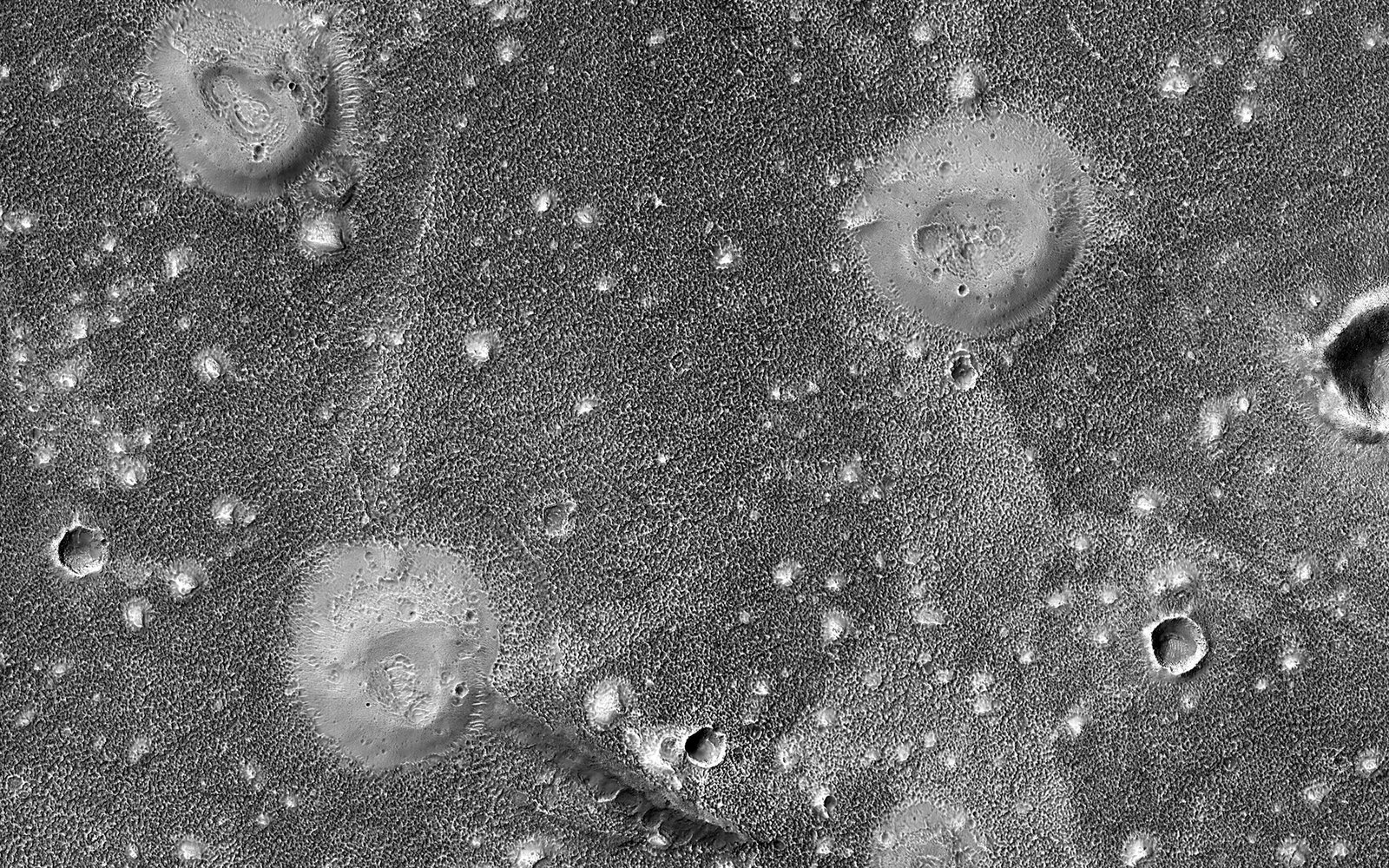
When Yellowstone erupts again, as it certainly will, it won't matter whether people live in Bozeman, Montana or Cody, Wyoming -- they'll be just as dead. But new seismological research has finally nailed down where exactly the eruption will breach the ground. If you want to die by magma instead of ash, the northeast of the park is the place to be.
Hikers need not worry. A team from the United States Geological Survey (USGS), publishing last week in Nature Geoscience also measured the percentage of rock in Yellowstone magma reservoirs that's actually melted. They found that none of it is near levels where an eruption is imminent.
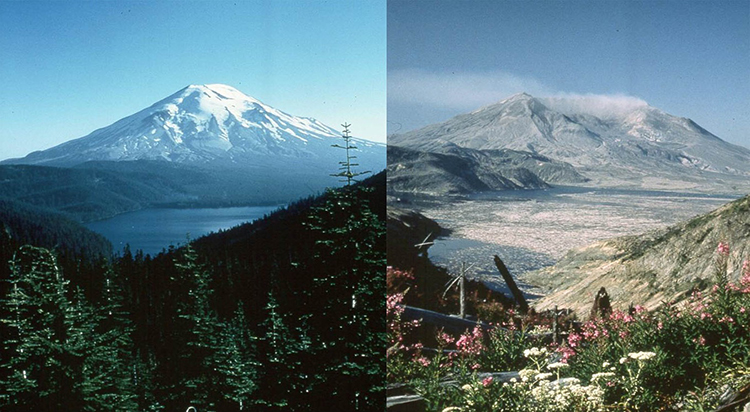
Yellowstone magma close to the surface
When Mount Saint Helens erupted in 1980, most of the upper part of the mountain broke off and slid down the slopes in a massive avalanche. What was left behind was a caldera. This crater-like divot in the rock isn't fed by a narrow vent like typical volcanoes. Instead, a large magma pool sits right below a shallow surface rock layer.
That's what lurks beneath the surface at Yellowstone National Park. But unlike Mount Saint Helens, the Yellowstone caldera doesn't just have one magma reservoir underneath it. It has four.
The Yellowstone caldera has a long history. It erupted at least three times before, mostly recently 70,000 years ago. Previous eruptions have left the northeast relatively untouched, but that will change when the next eruption comes.
To locate magma, the USGS team used a network of stations that measured the conductivity of material deep into the ground. This method, called magnetotellurics, relies on the fact that solid rock is very resistant to electric currents. As soon as rock starts melting, however, electric currents can flow through it. So magma appears on the magnetotellurics measurements as pockets of high subterranean conductivity.
These magma hotspots aren't really underground pools like aquifers but rather a honeycomb mix of solid and melted rock. As long as the melt percentage stays below 40%, the different pockets in the honeycomb can't gather enough pressure to erupt out of the ground. The largest melt fraction found in the new research is only 18%, and that won't increase much within the next few decades.

Where the magma runs deep

Although the USGS identified pockets of melted rhyolite rock under all of Yellowstone, channels of magma connect the northeast rhyolite melt pockets to deeper reservoirs of molten basalt. Magma made of rhyolite produces characteristic volcanic ash, but basalt is the real driver of eruptions because it flows more easily. That means it can circulate heat from deep within the Earth, pushing molten rhyolite to the surface.
Right now, the volume of magma under Yellowstone is larger than in any of the previous eruptions. It's hard to know how much of that will still be there when the caldera finally blows.
President Biden is using his last months in office to bolster his environmental legacy. First came a ban on offshore drilling, then two new national monuments in California, and now a loosening of filming restrictions in national parks.
Until Biden signed the EXPLORE Act on January 4, professional photographers filming in national parks had to apply for permits from the National Parks Service (NPS). The permit applications could cost hundreds of dollars, and rejections were common. Now most photographers won't have to bother submitting anything at all before heading out to the backcountry with their cameras.
Restrictions designed to protect public land instead made it less public
A crew filming a Hollywood blockbuster, an indie documentary maker, and a YouTuber eking out a handful of dollars a month from ad revenue -- until the new law, all of them had to apply for a filming permit in national parks. The previous law applied to all photographers who might profit from their work in the parks. Although it was passed to protect national parks from Hollywood studios, it was just as limiting to small, independent photographers.
Now that law is gone. Any crew under six people can stroll into a national park and record as they please for fun or profit, as long as they follow park rules. It's also now legal to record commercial footage of large events in national parks.
The EXPLORE Act does a lot more than just legalize professional filming, though. It requires the NPS to identify 10 potential new long-distance bike trails and to establish 27 new campsites. It also recommended that the NPS reopen all closed campsites within the next month.
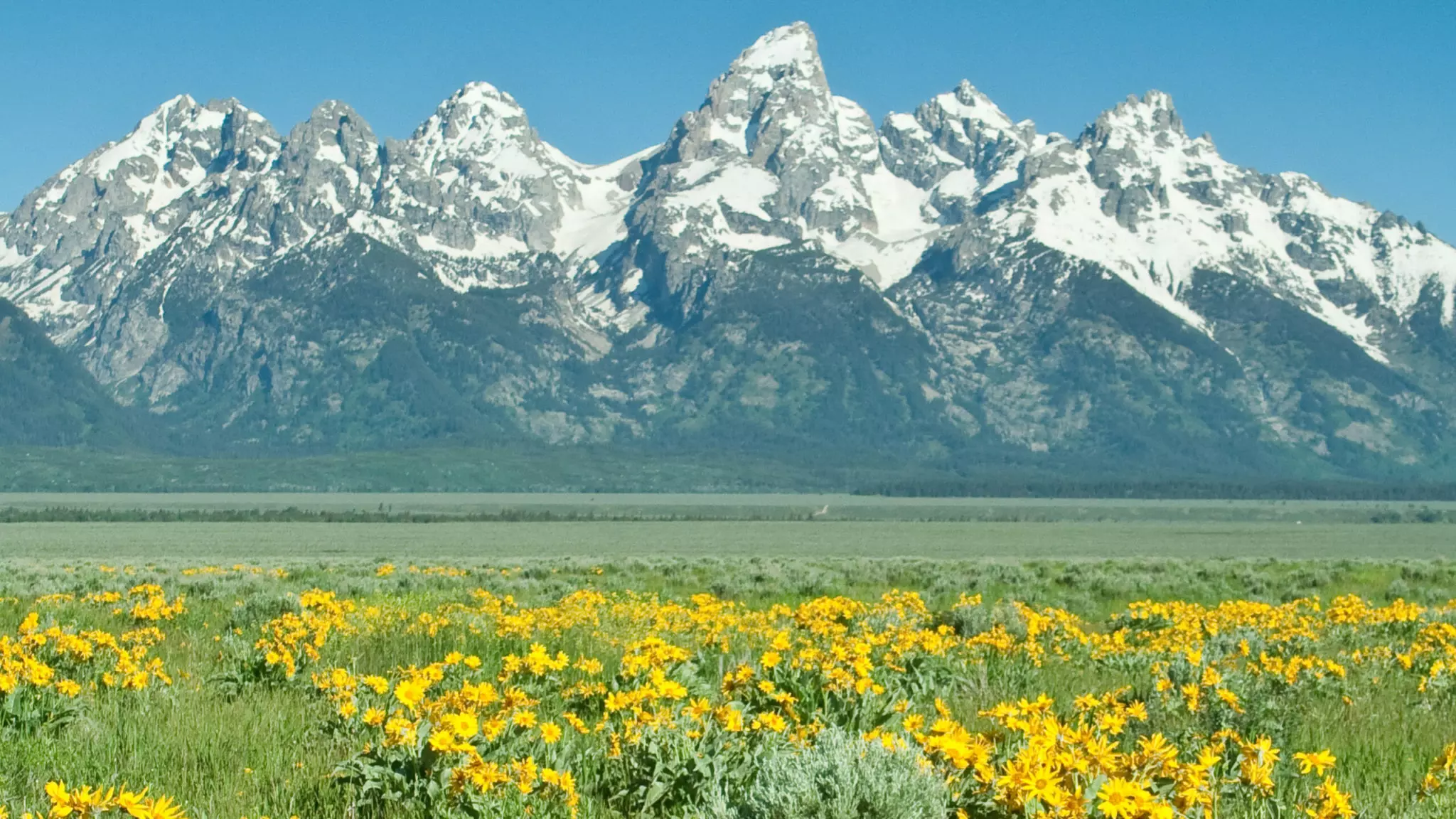
A Grand Teton speed record triggered the new law
The EXPLORE Act stands for the Expanding Public Lands Outdoor Recreation Experiences Act. (Who comes up with these acronyms?) It came into being in response to a lawsuit from two photographers who teamed up with the Foundation for Individual Rights and Expression (FIRE), a free speech protection group.
Alex Rienzie and Connor Burkesmith set out to film Michelino Sunseri take on the Grand Teton speed record of 2 hours 53 min 2 sec, set by NPS ranger Andy Anderson in 2012. The project didn't start auspiciously. Their permit application was rejected on the grounds that filming would make the event too "competitive." The application fee was $325, non-refundable.
Not to be deterred, they filmed Sunseri's run anyway. To keep up with him over 26km of technical terrain, they had to travel light. They brought less equipment to the Grand Teton than most visitors.

Resolves the photographers' lawsuit
Sunseri finished the climb with a record time of 2h 50m 50s. That was where the trouble really started.
For his part, Sunseri faced controversy over the route he took. The records website Fastest Known Time rejected Sunseri's accomplishment because he had shaved half a mile off the route by cutting across a switchback.
As for Rienzie and Burkesmith, they had to handle the fallout from their illegal filming. The NPS released a vague statement that no charges would currently be pressed. If they tried selling the footage, however, they might wind up in legal hot water.
Rienzie and Burkesmith had had enough. On December 18, FIRE submitted a lawsuit against the NPS on their behalf. The filming restrictions, the lawsuit claimed, were a violation of First Amendment rights.
The lawsuit did its job without ever making it to court. It came to the attention of the Senate, which immediately passed the EXPLORE Act. Biden signed it into law this week, officially putting it on the books. But Sunseri's legal problems aren't quite over. He is facing a $5,000 fine or six months of jail time over his deviation from the trail.

The Mars weather report is in, and we're seeing harsh conditions for the first few months of the new year.
For the first time in two Earth years, it's spring on the Red Planet's northern hemisphere, and high-resolution space cameras have caught sight of dramatic landscape shifts all across the disintegrating ice fields. Between avalanches, geysers, and katabatic winds, the Martian spring has been packing all the worst weather events into its small northern ice cap.
Ice avalanches are common in Martian spring
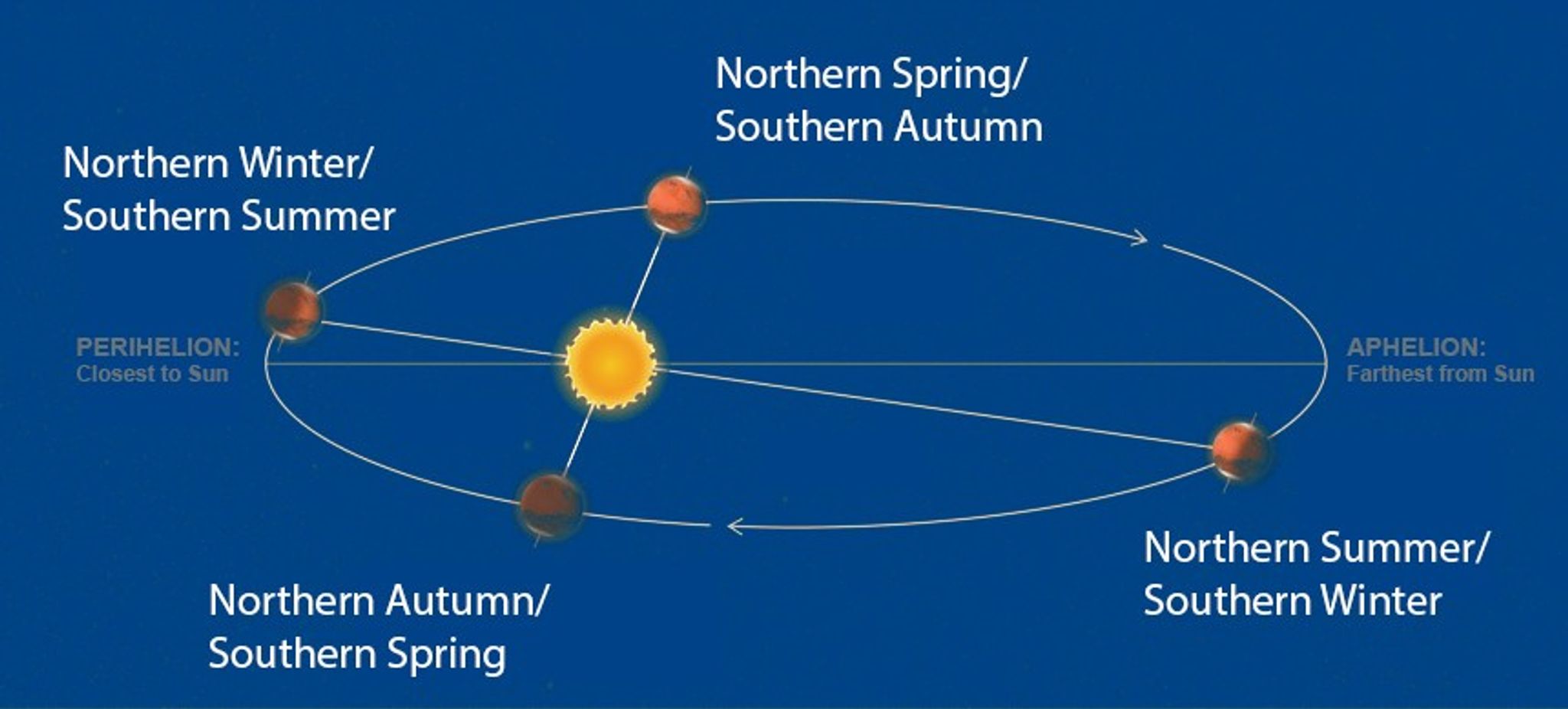
November 12 marked the new year on Mars, counted from trips around the Sun since a dust storm raged across the planet's surface in 1955. Because Mars' orbit is much more elliptical than the Earth's, seasons are more extreme. On top of that, the thin carbon dioxide atmosphere offers little protection from extreme temperature shifts.
While some of the ice coating its north pole is water ice, much of it is carbon dioxide. Even on Earth, carbon dioxide never passes through a liquid state but sublimates directly into gas. Since Mars' weak atmosphere doesn't provide enough pressure to maintain liquid water, that gas doesn't just bubble up through melted ponds, it destabilizes entire glacial structures.
So far, NASA's Mars Reconnaissance Orbiter (MRO) hasn't caught any avalanches mid-fall this year. But in 2015, the MRO snapped a photo of a six-meter cornice in freefall over a scarp. It appears above as our lead image.
Geyers erupt across the Planum Boreum
If sublimated carbon dioxide can't escape through cracks in the ice, it builds up. When the pressure exceeds the weight of the ice, the gas jettisons everything above it and escapes into the atmosphere as a geyser. But the Planum Boreum, or northern polar plain, isn't just covered in ice. The frost is mixed in with sand and dust. That creates dramatic images like this recent one from the MRO, where geysers leave darkened fans across the frosty surface.
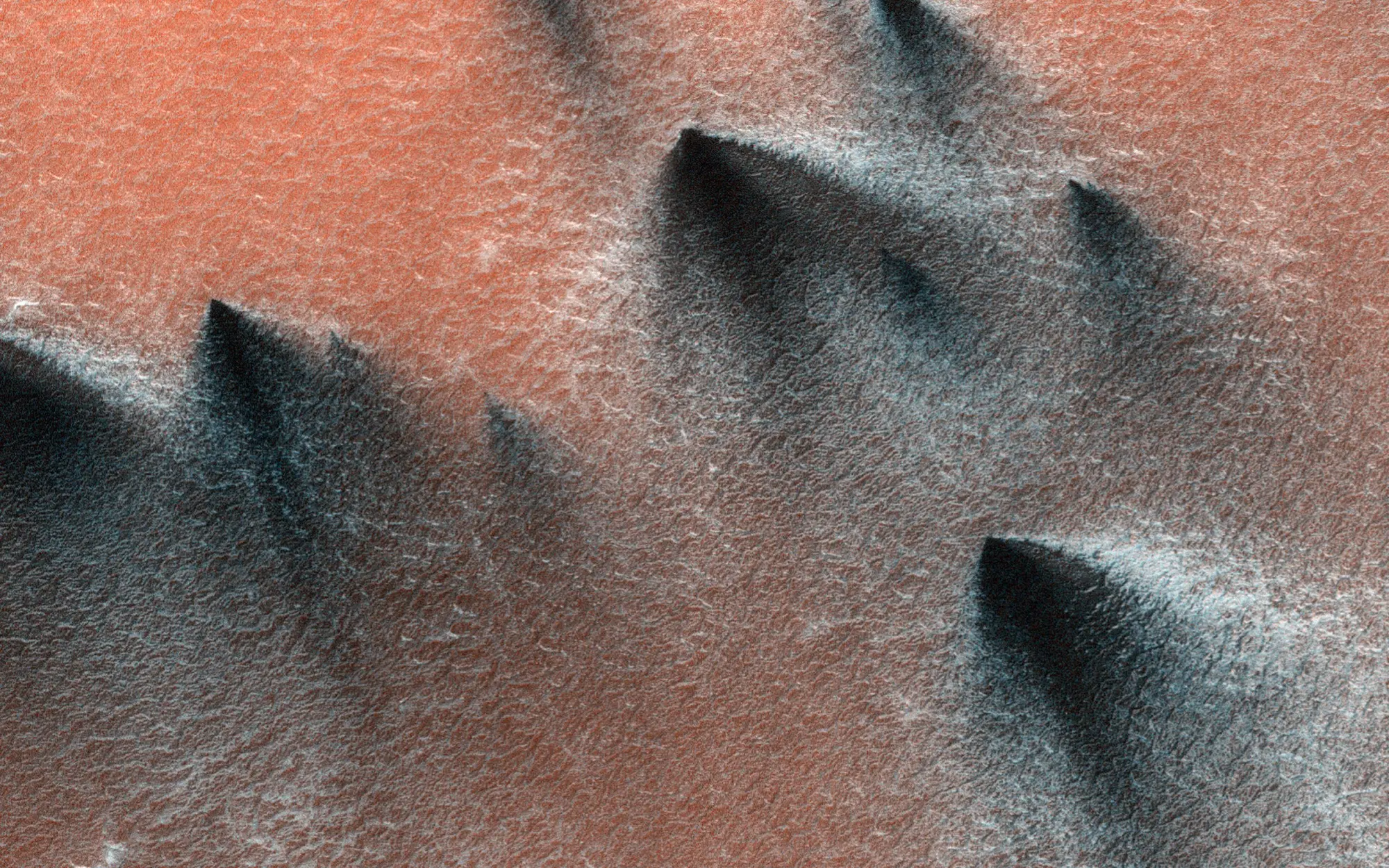
Melting ice reshapes the landscape
In Antarctica, glacial retreat driven by global warming has revealed permanent troughs in the ice. The legacy of long-ago ice erosion, these pale in comparison to the troughs spiraling across the northern ice cap of Mars. Every spring, the sublimated carbon dioxide forms winds, which gain speed as they propel their way down the labyrinthine corridors. They also rocket up in temperature, melting the walls of the troughs a little further each year.
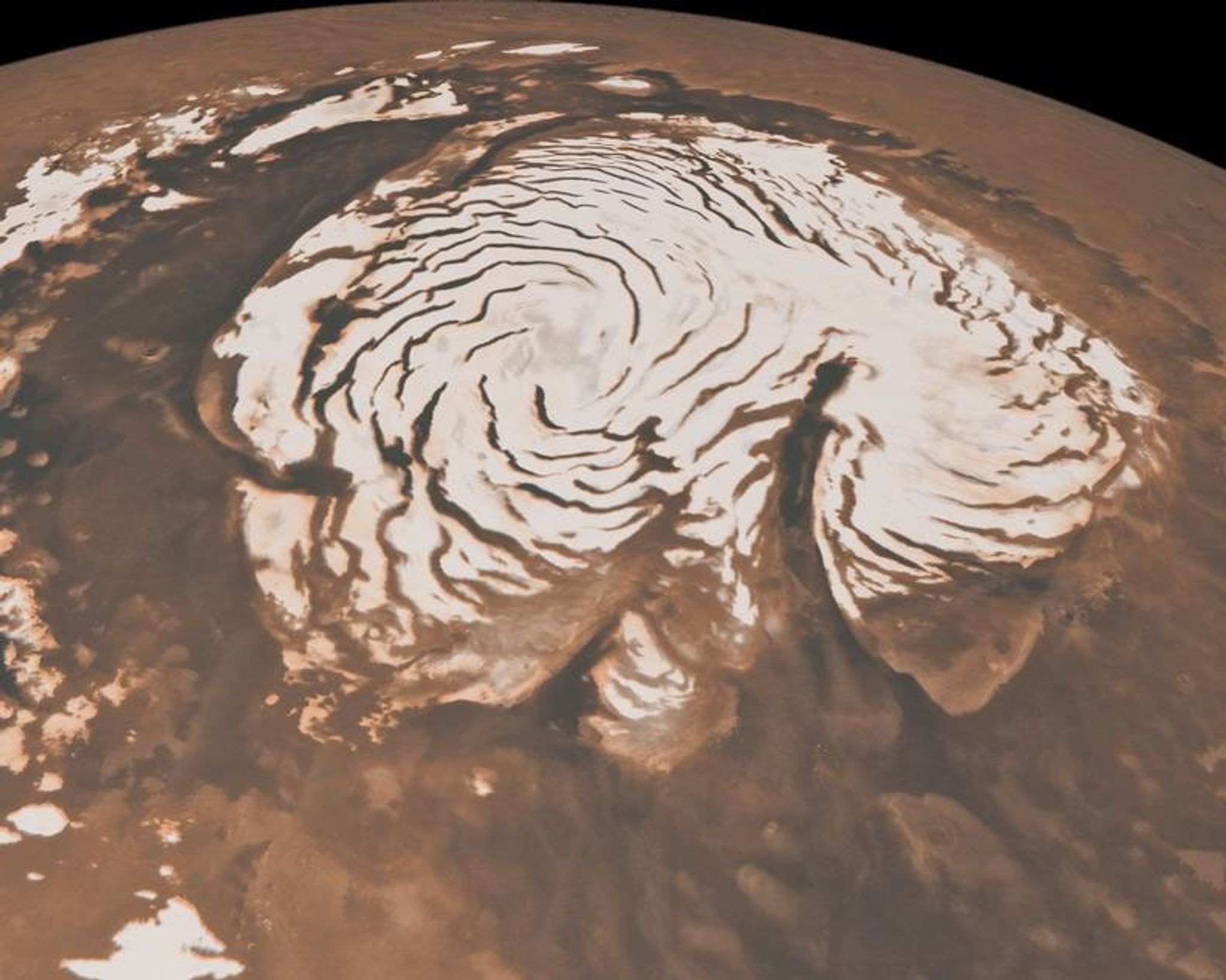
On Earth, winds like these mainly occur as cold air flows down icy slopes, such as in Antarctica and Greenland. They're called katabatic winds. On Mars, they have thousands of kilometers of spiral troughs in which to gather power. They blast the sandy surface of the surrounding plains with enough force to shift entire sand dunes. These dunes are especially vulnerable in the spring because their frost layer has melted, as captured by the MRO on camera.
Come autumn, when the carbon dioxide frost starts to settle on the ice fields once more, the new progress of the glacial canyons and dunes will freeze in place. Mars then waits for the next thaw.
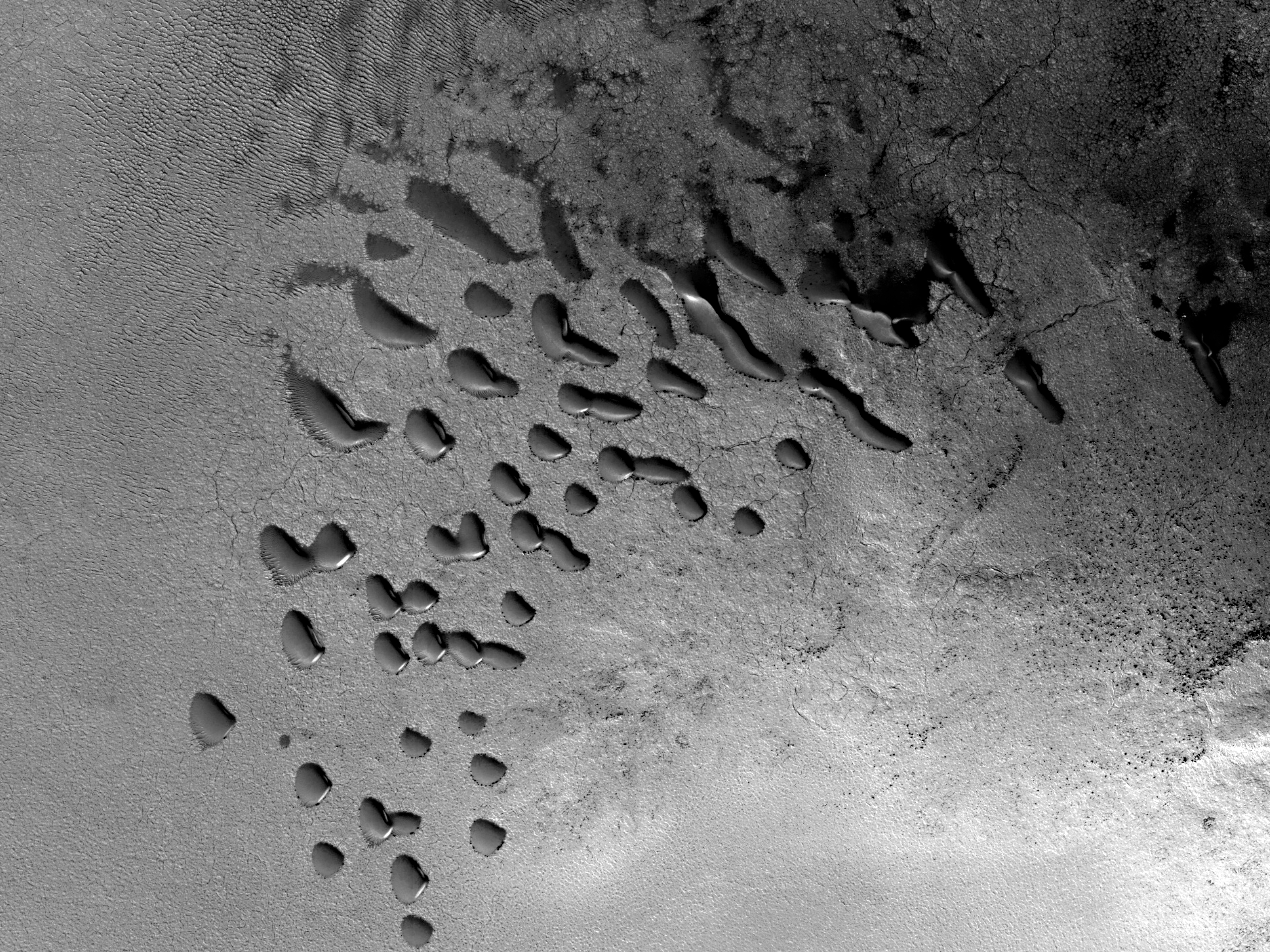
In 1929, Edwin Hubble discovered from observations of distant galaxies that the Universe was expanding. This baffled astronomers and the public alike. Then in 1998, another wrinkle: Two different teams of cosmologists found that not only was it expanding, but that expansion was accelerating. This confused them even more since they couldn't figure out what was driving the acceleration.
They named the mystery component dark energy. Although no one knows what it is, it has some peculiar properties. As far as we know, the density of dark energy is a constant throughout space. That means every cubic meter has the same exact amount of dark energy, and as the universe expands, it creates more. (Don't worry -- total energy is conserved since the expansion of the universe also drives its gravitational energy further into the negatives).
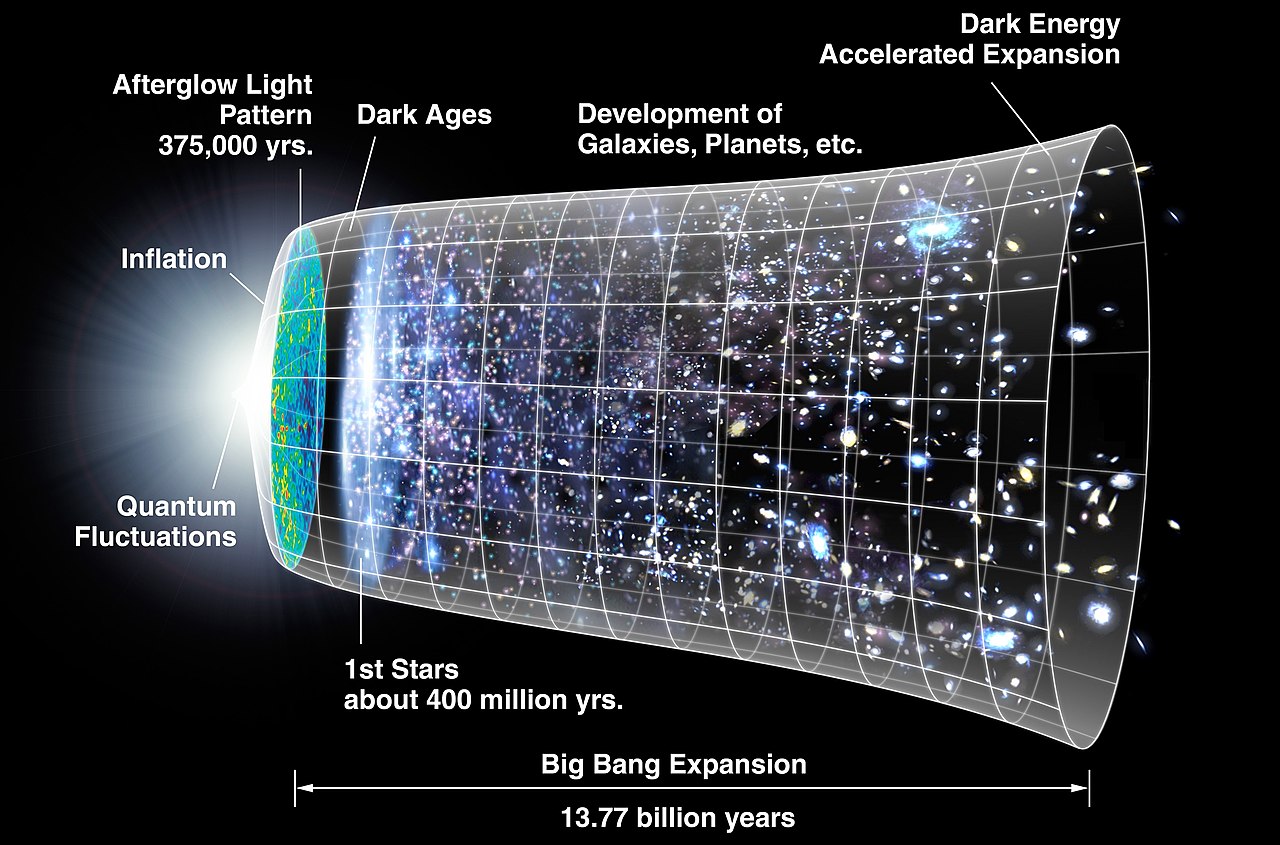
How much will the Universe actually expand?
Our uncertainty about the history and future of dark energy allows for three different fates for the Universe. In a future where dark energy density suddenly increases, the Universe will explosively rip itself apart. If, instead, dark energy density drops, then the Universe will reverse its expansion and bounce back upon itself. But according to all our current knowledge, dark energy density will remain constant. The expansion will continue coasting along with the same acceleration. That's the future we'll explore in this article.
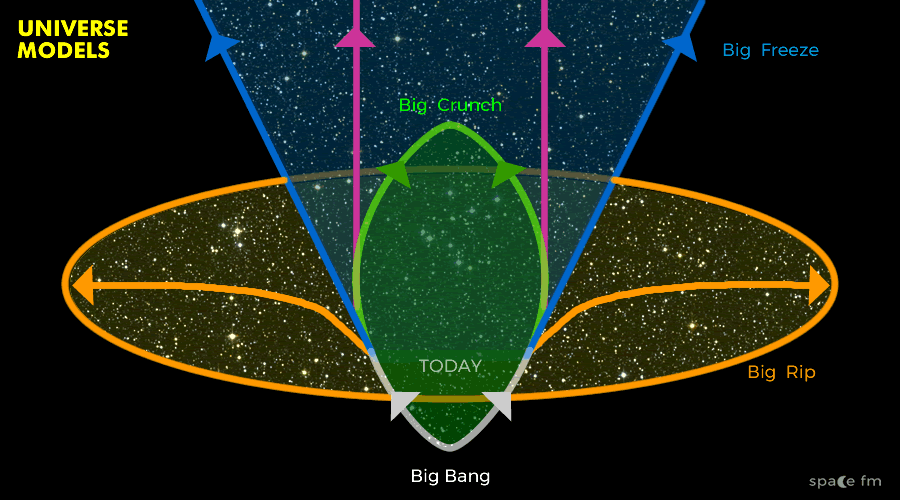
When last we looked at the future of existence, the Sun had just jettisoned most of its matter into space, destroying the planets and leaving behind its molten core. That's eight billion years from now. The solar system is more or less gone. But the galaxy is still there, and it has a lot more in store.
150 billion years from now
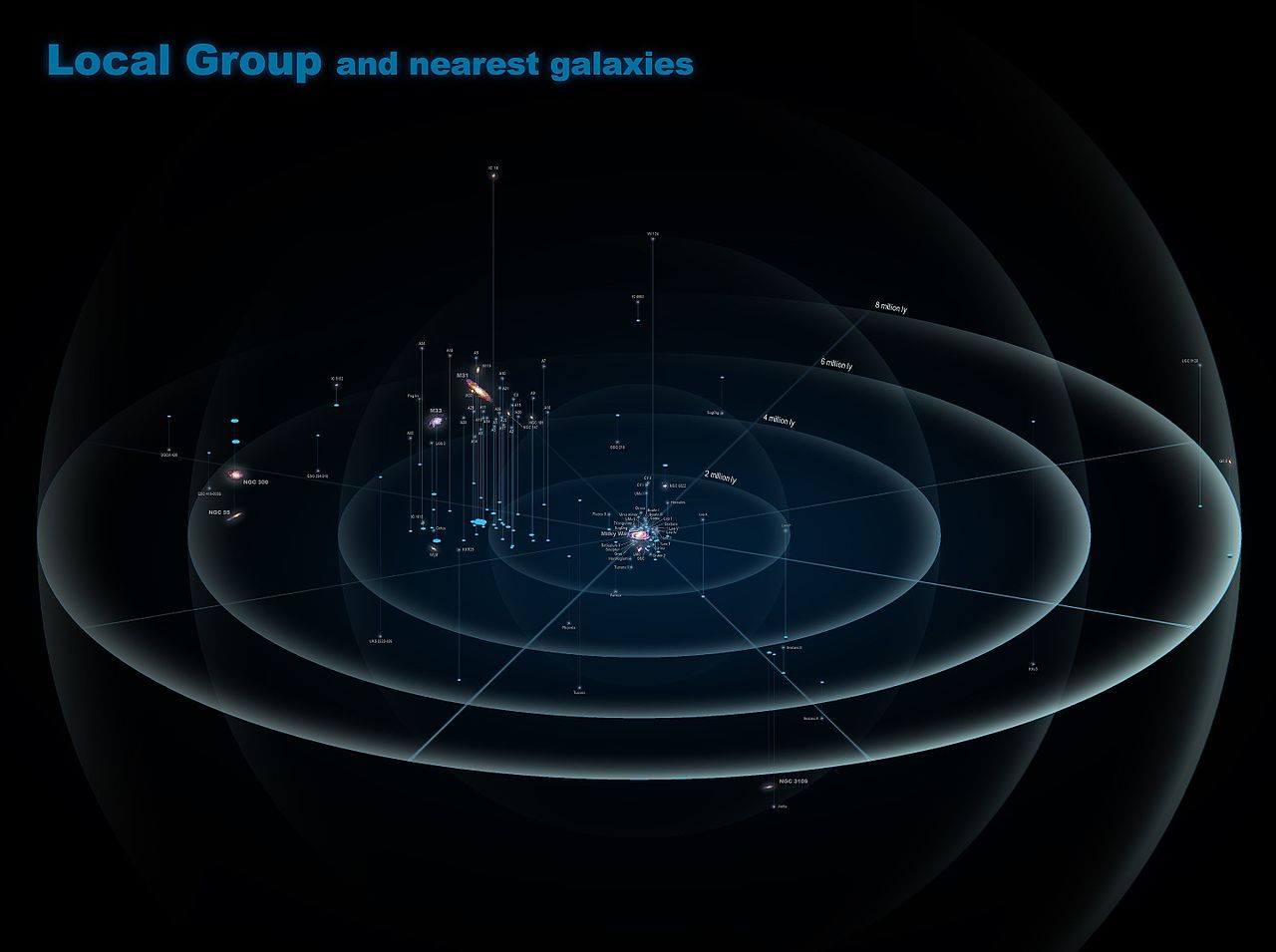
Where 47 galaxies, including the Milky Way, once orbited one another, a monster now sits. The mega-galaxy comprises over one trillion stars. Since massive blue stars die young, most of the survivors are very small and red. Except in a few pockets where merging galaxies compressed and heated interstellar gas, no new stars have been born for eons.
From almost anywhere in the Local Group, all an observer sees above is a milky-white haze clogging the sky. Because the mega-galaxy's stars are small and faint, most of them don't show up as individual pinpricks. Gone are naked-eye constellations, the multicolored nebulae, and the galaxies visible between the stars.
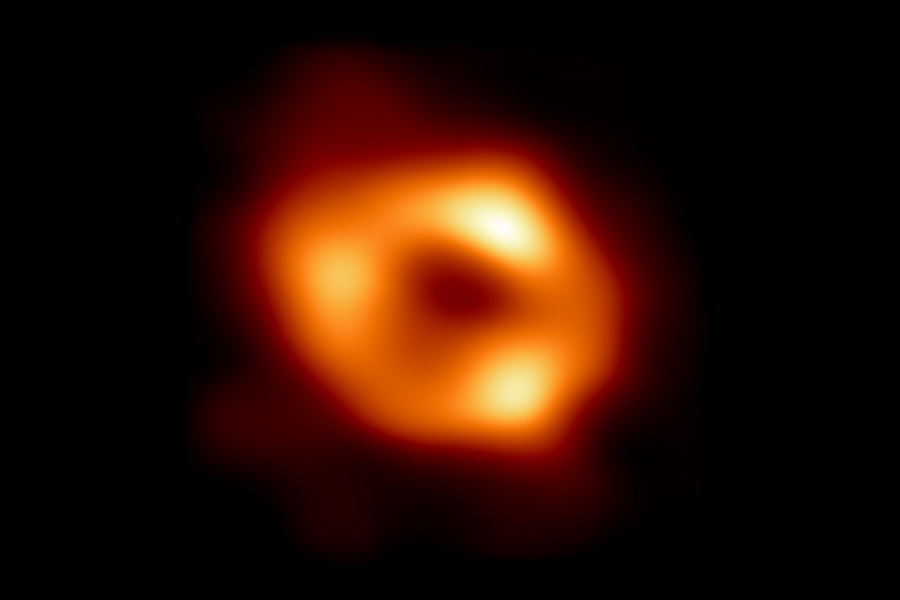
And on the edges of the mega-galaxy, the outside universe is dark. The expansion of space has pulled other galaxies so far away from us that the light from their stars will never reach us. Only the photons of the Cosmic Microwave Background, which have traveled toward us since a time when the Universe was on fire everywhere, reach the Local Group from outside.
1 trillion years from now
An unassuming rocky planet orbits a red dwarf, the smallest and dimmest of all true stars. Perhaps it has intelligent life on it. Perhaps they build a telescope, and look up at the sky.
In one direction, the starry mist of the Local Group mega-galaxy blocks out all. A few nearby points of light stand out of the morass. The people on this planet know that their star is not alone, and they search for life around other stars just as we search today.
In the other direction is blackness. It is absolute. The expansion of space has stretched the wavelengths of Cosmic Microwave Background photons past the size of the observable universe. They wash over the telescopes on that insignificant planet, but they're not really light in the same way that the current of a river is not an ocean wave. They carry no information.

Among the information they don't carry is evidence of the Big Bang. Because the Cosmic Microwave Background is identical in every direction, and light would never have enough time to travel between all of the locations on its surface, all of those locations must once have been very close together.
It's possible that the observers would be able to determine the density of dark energy from the trajectories of stars ejected from the mega-galaxy. If so, they could make the leap to an expanding Universe and the possibility that somewhere out there, farther than they can see, are others like them.
100 trillion years from now
The era of star formation is at an end. There is no longer any gas left between stars to give rise to new ones, and no massive stars to replenish it via explosive supernovae. In fact, there are very few stars at all.
When stars run out of fuel to burn, they form one of three remnants. White dwarfs are the lightest, comprised mostly of helium or carbon and oxygen. Then there are neutron stars, which are so dense that they're able to compress protons and electrons into a crystal lattice made of neutrons. And finally, there are black holes. For the most part, these are the objects which now make up the mega-galaxy.
Every so often in this stellar graveyard, though, something new flickers into life. Floating among their massive counterparts are the ruins of stars that never made it in the first place. More like solitary Jupiters than our Sun, brown dwarfs don't burn hydrogen and are only visible up close. When two of these brown dwarfs collide, they create a real star.
Most of the galaxy is still dead, but not all.
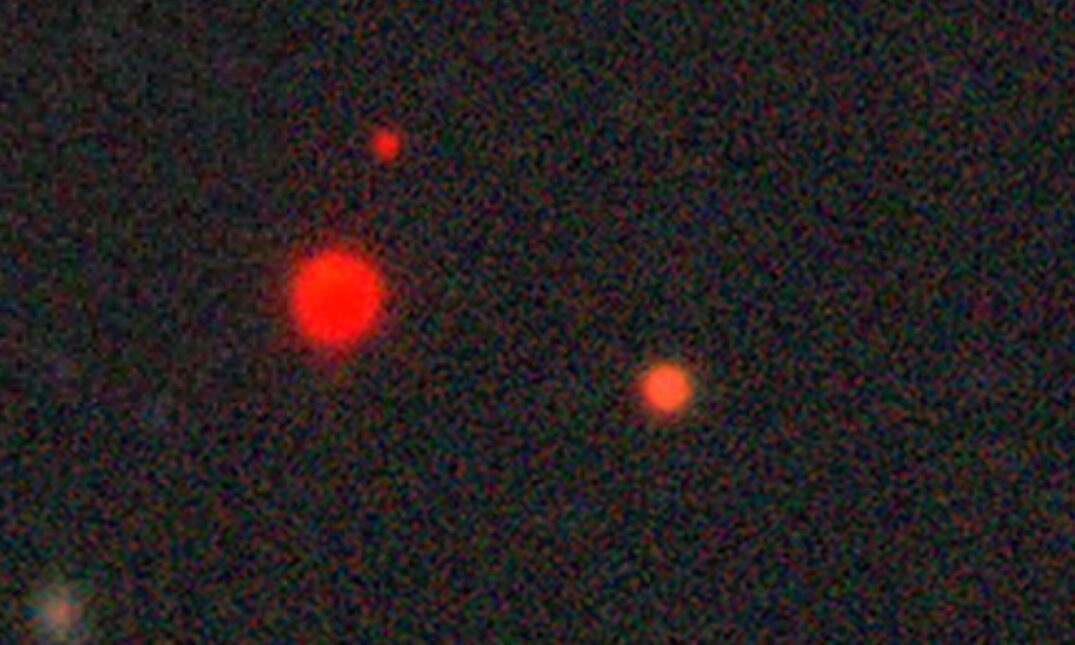
100 sextillion years from now
All galaxies have disintegrated. Sooner or later, their constituent components either ventured too near the central supermassive black hole or rocketed off into space.
Now, a white dwarf sits in a vacuum. It doesn't drift. There is nothing else in its visible universe relative to which it might drift. Dark energy has ripped apart everything not bound by internuclear forces.
If ever this white dwarf had a planet, it absorbed it long ago. Now it sits, and perhaps it spins gently. And, ever so slowly, it evaporates. Its protons may undergo a theorized decay process. If they don't, random quantum flukes allow the structure of the white dwarf to rearrange itself on unimaginably long timescales.
Either way, the white dwarf jettisons photons and other particles. Space expands between them, and they vanish over the horizon of the visible universe.
1 nonillion years from now
The supermassive black hole that used to lurk at the center of the Milky Way is a lot more supermassive now. It has subsumed every other black hole, every brown dwarf, planet, and stellar remnant that didn't escape the mega-galaxy.
Counterintuitively, black holes aren't perfectly cold. They have a faint temperature arising from a bizarre quantum mechanical effect. Pairs of photons pop into and out of existence all the time without anyone noticing, like the background static of existence. Then, a fraction of a second later, they annihilate one another.
Sometimes, virtual photons pop into existence right outside the event horizon of a black hole. Since the photons have slightly different directions, it's possible for one of them to cross the event horizon, never to be seen again. That leaves the other one free to sail off into the wide, wide world.
So black holes emit light, and anything that emits light loses energy. Slowly, very slowly, this unfathomable black hole is evaporating.
10106 years from now
All the black holes are gone, and the universe consists of a very diffuse particle soup. Electrons and photons bubble in a weak gas. Collision by collision, they exchange energy with one another. When two people hold hands, their skin approaches the same temperature. The same is happening for the Universe.
We don't know what that temperature is, and anyway, it's irrelevant. Differences in temperature drive physical processes, like hot steam against cold air in the dry pipe of a train. When everything is the same temperature, nothing will ever happen again.
Two electrons collide, and their energies edge toward one another just a little bit more.
Nowhere and nowhen
The Universe exists. It is made up of photons and electrons and a handful of more obscure particles. All of them have the same energy. Everything is the same in every direction. In many ways, everything has always been the same.
That's because time is defined by the direction of increasing sameness. If you fill a salt shaker with pepper on the top and salt on the bottom and then let it roll down the hill, it will show up at the bottom as a nice salt-and-pepper mix. In this case, gravity speeds up a more universal process. This measurement of sameness is called entropy, and it's always increasing. That's what makes today different from tomorrow.
Now, there is no tomorrow. There's just today, on and on and on.
It came from outer space. That was nothing special: radio telescopes constantly receive signals from astronomical objects as close as our Sun and as far as the fiery edge of the visible Universe. The period of this signal, though, was unusual. Every 2.9 hours, radio waves blasted the strange, spidery antennae of the Murchison Widefield Array in Western Australia for half a minute or so, then cut out.
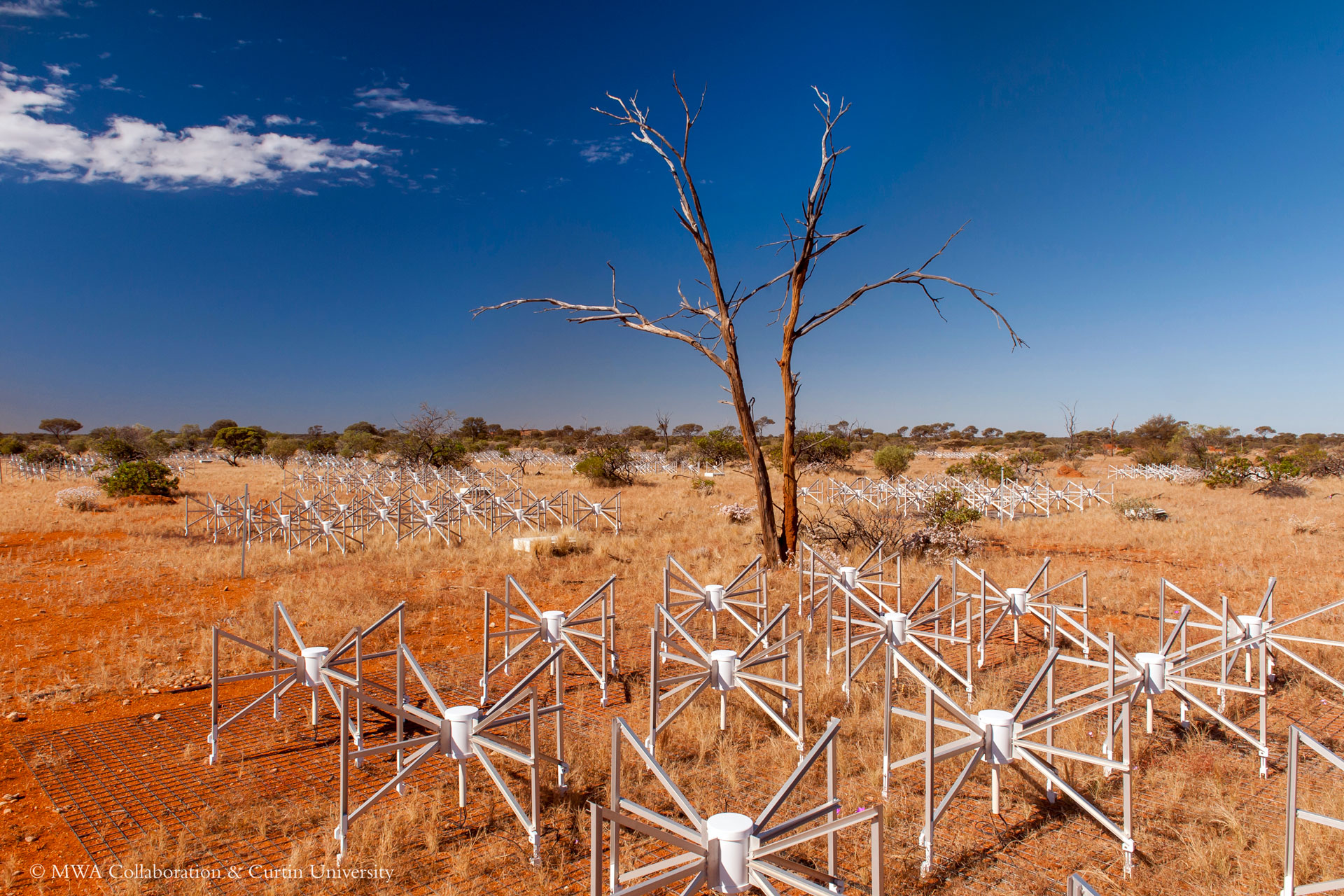
For over a decade, no one noticed. Astronomers studying recurring radio signals were focused almost exclusively on pulsars, the remnants of massive stars whose off-kilter magnetic fields launch radio waves into space every time they spin around. These cosmic lighthouses keep time better than an atomic clock. The fastest of them rotates 716 times every second.
The search for fast pulsars pulled a lot of attention away from their less dramatic siblings. They keep better time than slow pulsars and they're also easier to find. If you observe the sky for 20 minutes, a pulsar with a period of 10 milliseconds will show up 120,000 times in the data. In contrast, the strange 2.9-hour pulse probably wouldn't even show up once.
Over the last few years, though, radio astronomers discovered exactly 10 of these extremely slow signals. The most recent and longest period is the 2.9-hour signal. A team at Perth, Australia's Curtin University, led by Natasha Hurley-Walker, announced its discovery at the beginning of December.
There's only one problem -- it shouldn't exist.
Beyond the death line
When astronomers describe something by how it acts, rather than what it is, that's a sure sign they don't know what they're looking at. Examples include dark matter ("it's matter, but we can't see it"), dark energy ("it's energy, but we can't detect it"), and fast radio bursts ("well, they emit in radio waves, and they really are very fast").
Until this month, Long Period Transients (LPTs) fell into that category. The key feature of an LPT is its period (quite long). That's a problem for our understanding of how periodic radio signals are produced. Pulsars, the rapidly spinning dead stars described above, are the remnants of massive stars that have shed their outer layers in a supernova. But part of their ability to emit radio waves stems from their angular momentum. As they spin, they lose that angular momentum. And when their period becomes too slow, they pop out of existence, never to be seen again.
This is called the pulsar death line: the point beyond which we stop seeing any pulsars. There's a lot we don't understand about it, but one thing we do know is that 2.9 hours is so far beyond the death line that it's practically a zombie. So what was producing these signals? Was it some kind of exotic pulsar? Or something even stranger?
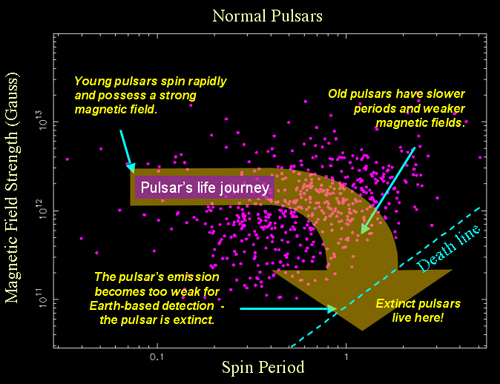
Astronomers get their first clue
The new slow transient discovered by the Curtin team isn't just the longest-period astrophysical radio signal ever discovered, it's also the first one astronomers have pinpointed to a specific star. Bafflingly, that star is an M-dwarf, a little red star less than half as hot as the Sun and only a third of its mass. For an emission as strong as this, that's a bit like arriving at the scene of a murder and finding a toddler holding the knife.
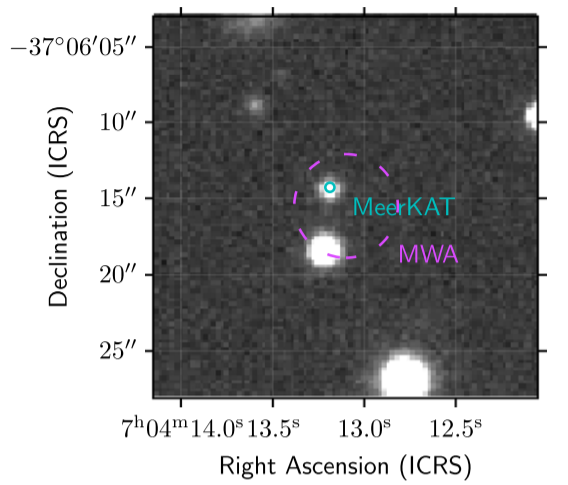
So what's going on? There are two leading theories, and both involve dead stars too faint to show up in images. The first theory is that the M-dwarf is in orbit around a pulsar, and something about the orbit and magnetic field setup is allowing it to emit slowly. This could happen if circumstances were exactly right. It's not very likely.
The second theory is that the M-dwarf orbits a much lighter stellar remnant called a white dwarf. Pulsars are left over from very heavy stars, supported against their own collapse by the pressure of neutrons crammed infinitesimally close together. White dwarfs, in contrast, are the leftover cores from stars like our Sun. They're lighter and much less dense, supported by electron pressure rather than neutrons. They don't do much. They just sit there unless another white dwarf comes too close, in which case they explode violently.
In a few cases, though, white dwarfs can steal material from a companion star and accelerate it in their strong magnetic fields until it whips radio emissions into space. We've seen this happen twice before. In each case, the period is fast, in line with traditional pulsars. But unlike for pulsars, the emission doesn't necessarily derive from the rotation speed of the white dwarf. As far as we know, there is no white dwarf death line.
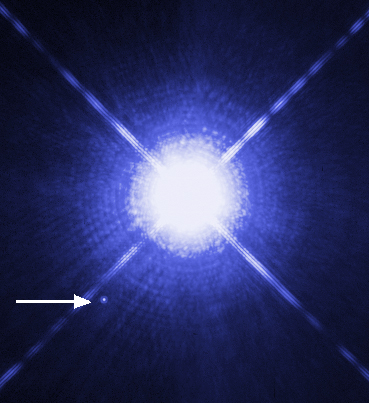
Strange discoveries lead to new physics
There are a lot of open questions in radio astronomy. We barely know how pulsars produce radio waves. We don't even know what kind of objects make the mysterious extragalactic signals known as Fast Radio Bursts. As for a white dwarf emitting like a pulsar, all we can say is it has something to do with strong magnetic fields and the presence of a companion star.
But everything in the universe follows the same laws. The underlying mystery here is not what astrophysical object produces any given radio signal but rather what rules govern how matter emits light in extreme conditions. The more we know about those rules, the faster we'll understand the next strange radio signal that lands on our doorstep. Deciphering long-period transients is a step towards that understanding.
"Up until now, we didn't expect such objects to exist," says Fengqiu Adam Dong, a researcher at the National Radio Astronomy Observatory, who studies slow transients. "Some people think that they could solve other mysteries in astronomy like repeating [Fast Radio Bursts]."
So tune your radio to 600 MHz, and listen for a faint little whistle. If you miss it, don't worry -- it will be back in 2.9 hours.
Turn your attention to the nearby sky: to the 8 planets, 288 moons, and countless smaller rocky objects whose precarious existence began with, depends upon, and may end with the Sun. Last month, we covered the future of life on planet Earth. This month, we'll take a look at what's in store for our little corner of the Milky Way.
Astronomers researching protoplanetary disks around low-mass stars are piecing together an increasingly detailed portrait of how stellar systems like ours formed. Interstellar space is filled with clouds of gas and dust, and one of these clouds eventually collapsed into our solar system. The bulk of the matter formed the Sun. The rest, spread out into a disk as the young Sun rotated, eventually coalesced into the many objects that make up our solar system.
That's old news. In the same way that looking at baby stellar systems tells us where we came from, looking at dying ones tells us where we're going. So here are scientists' best predictions for the future of our solar system.
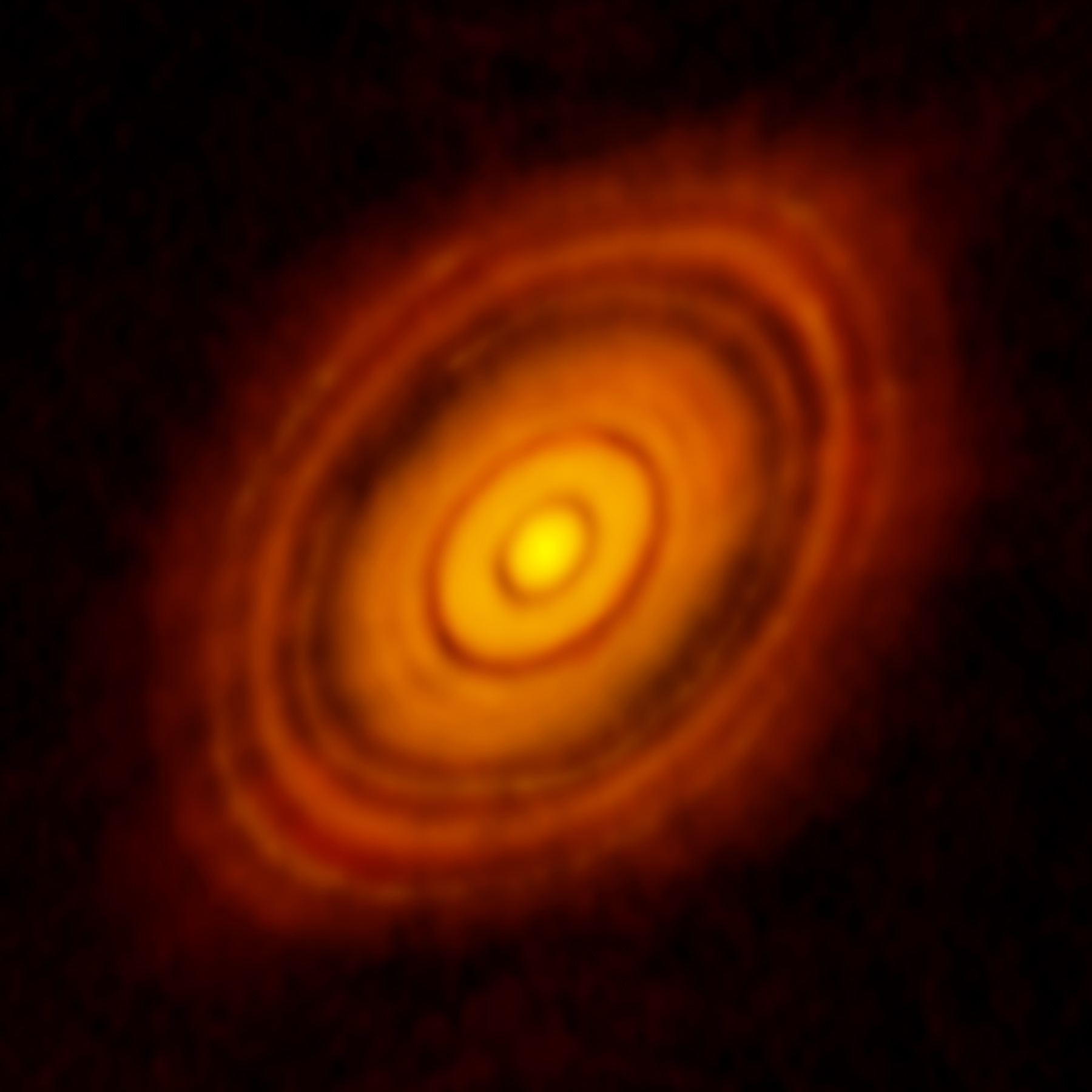
Planum Boreum, Mars, 36,000 years from now
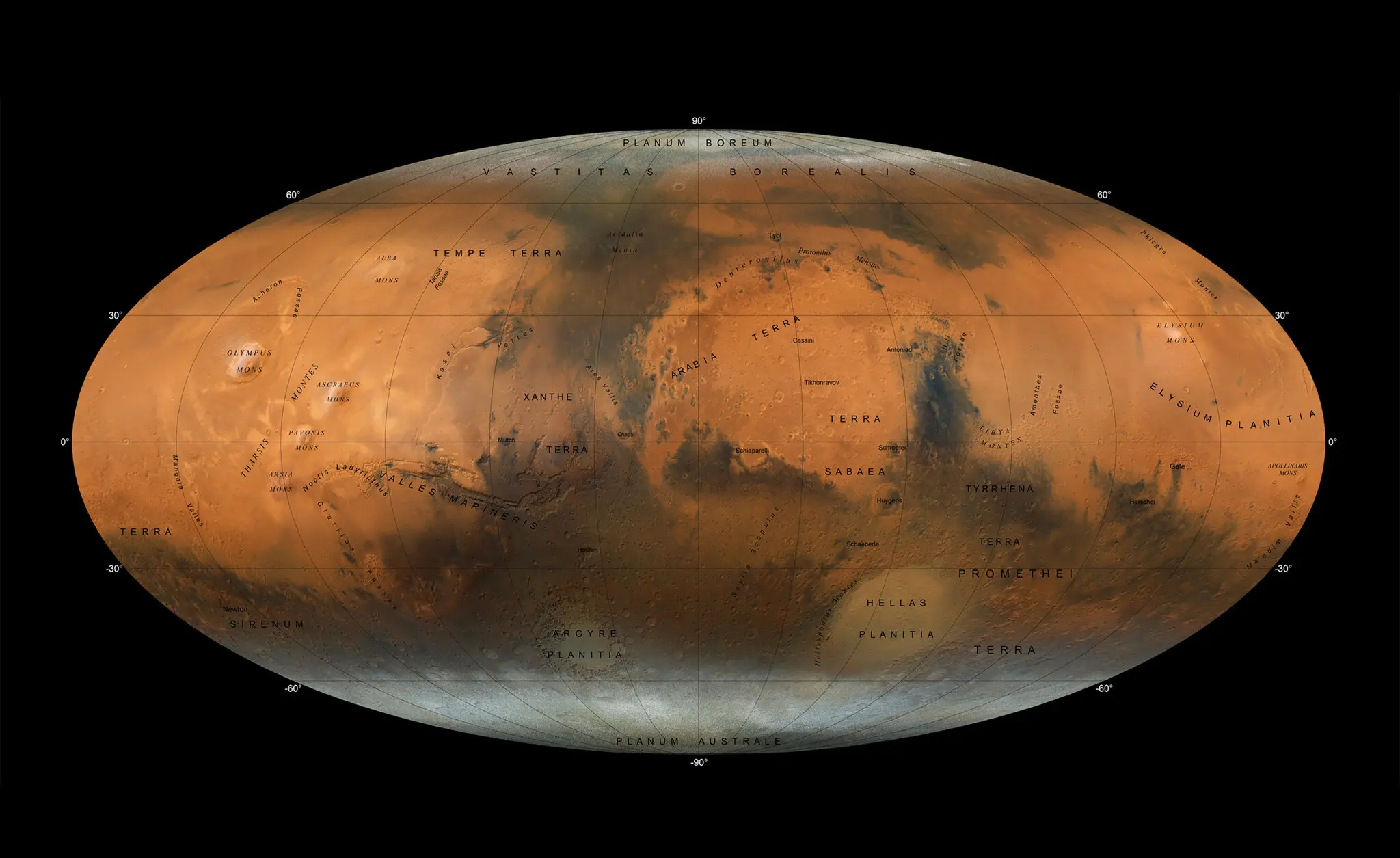
It's 36,000 years in the future, and there's something new in the sky. Human eyes can't quite see it. It twinkles just beyond the boundary of naked-eye vision. But for any hand-held amateur telescopes set up at the Martian north pole, the little red star Ross 248 flickers like an ember.
Or at least it does between breaks in the clouds. In the morning, those clouds are mostly ice crystals, dissolving into a humid mist in the afternoon. For the last 10,000 years, the clouds on Mars have been thicker, and atmospheric humidity has been higher than in the 50,000 years before.
That's because the temperature in Mars' northern polar desert, Planum Boreum, is about 10˚C higher than in the 21st century. Climate change has come for Mars' glaciers; it is not manmade but brought on by the wobble in the axis of Mars' rotation. Planum Boreum gets more sunlight now, and its melting ice caps have supercharged the atmosphere with humidity.
But Ross 248's changing brightness isn't just because of the waves of mist wafting in front of it. The surface of the star itself writhes in storms, and sunspots often dim it. Now, anything in the Solar System has a front-row view of its stellar activity: Ross 248 has supplanted Proxima Centauri as the closest star in the sky. It now sits a mere three light-years away. If any planets orbited Ross 248, and anything on them could communicate, their radio transmissions would receive a response from us in only six years.
However, according to all available evidence, Ross 248 has no planets.
Cresdemona, Uranus orbital system, 1 million years from now
Cresdemona is a new moon. Irregular and patchy, it orbits Uranus at about 50,000km. Most of its surface is water ice, but there's enough mixed-in rock that when its parent moons, Cressida and Desdemona, collided, they didn't shatter but combined into the nascent moonlet Cresdemona, probably no more than tens of kilometers across, encircled by shards of ice.
Meanwhile, another one of Uranus's 28 moons, Juliet, carbon-rich and petite, tries in vain to escape the new moonlet. Soon, the two moons' paths will cross, slamming heavy carbonaceous rocks into the icy surface of Cresdemona.
The resulting moon, Cressida-Desdemona-Juliet, will hurtle off into the future.
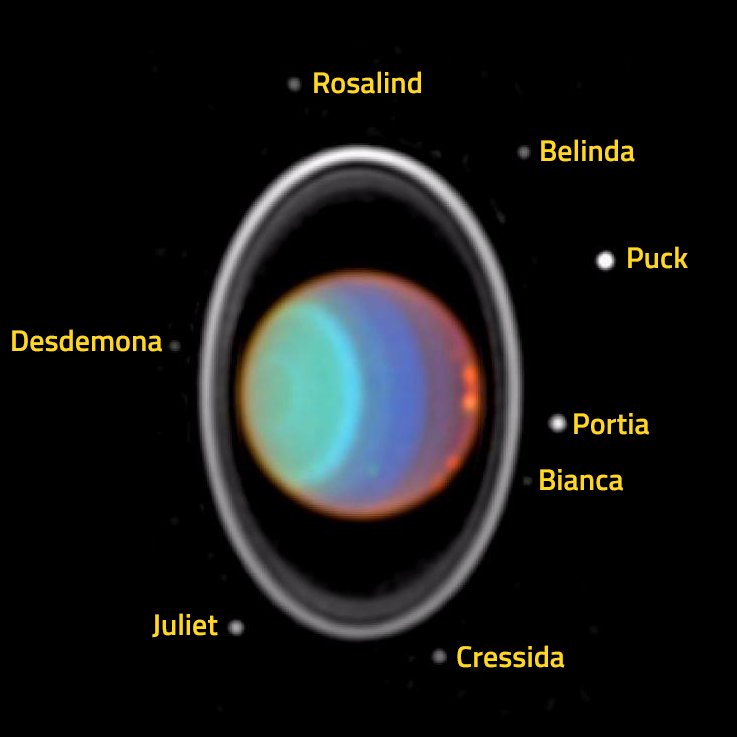
Neptune, 3.6 billion years from now
Over on Neptune, the moon Triton has strayed into more dangerous territory than just the path of its siblings. Its orbit has decayed past the planet's Roche limit. Beyond this point, Neptune's gravity is so immense and Triton sufficiently large that the difference in gravitational force on the near and far parts of the moon literally tears it apart.
The tidal forces ripping into Triton also heat it, and its icy surface sends out trails of steam that demarcate its descent toward the ocean world below. Then there's the core. Neptune wrenches chunks of rock off the surface of Triton piece by piece and flings them into orbit, where they eventually coalesce into a ring.
A few of them careen down toward Neptune. They pass through the strongest winds in the solar system, buffeted along at 2,000kph. When they finally make it through Neptune's atmosphere, it's possible they hit molten oceans of water and methane, kept liquid by the unimaginable pressure above. If so, the remnants of Triton sink without a trace.

Atacama Desert, the Earth, 5 billion years from now
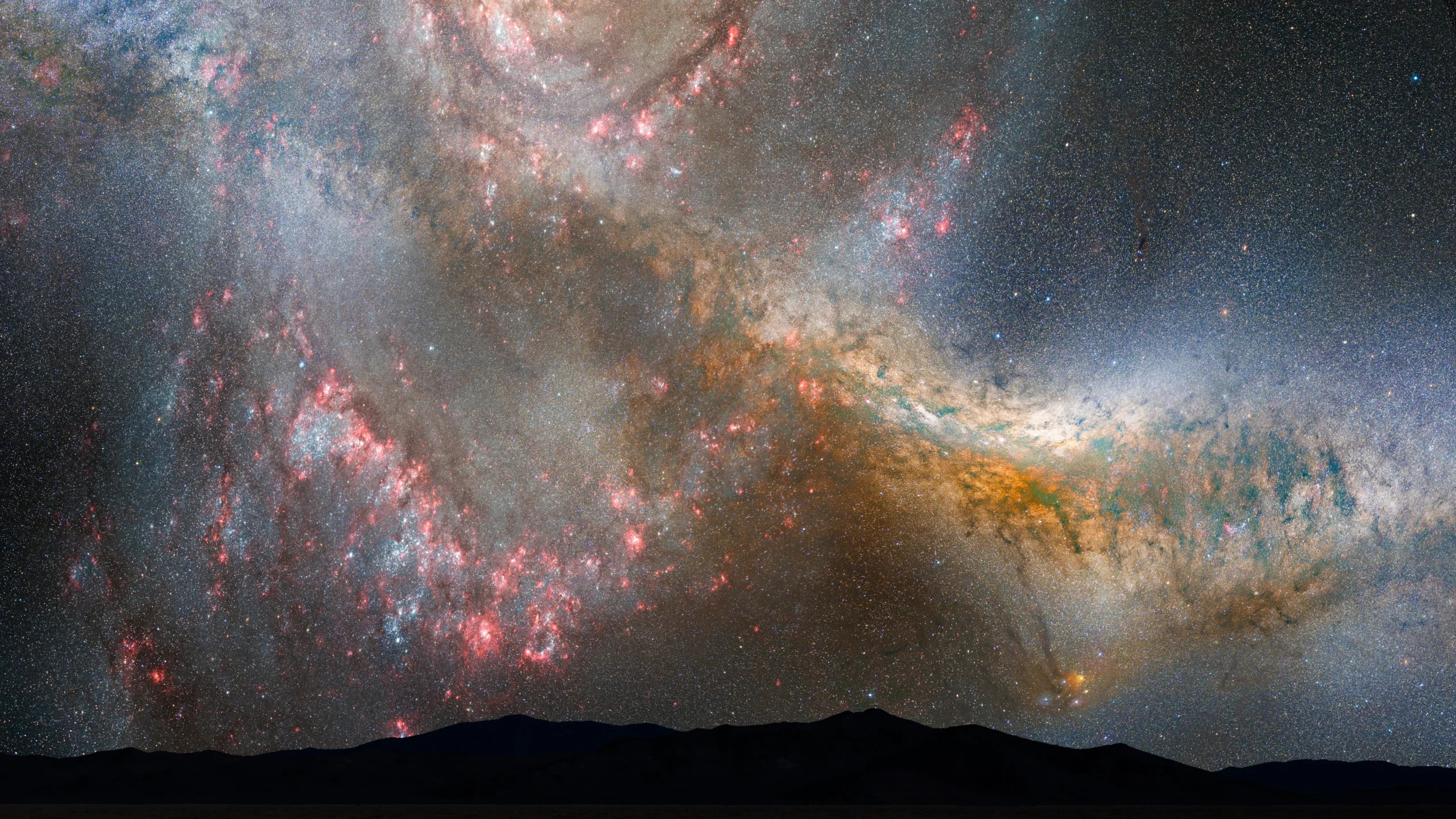
The Milky Way is no more. The Andromeda galaxy has collided with the Milky Way. Where familiar stars once stood, alien worlds now throng.
Over the last billion years, the force of the colliding galaxies condensed interstellar gas and dust at breakneck speed. New stars formed, lighting up the sky with red flecks like burning coal. Now, 5 billion years after the 21st century, young stars are still visible in some parts of the sky. For the most part, however, a monotonous smog stretches across the horizon.
Smog, perhaps, implies gas. That's not the case for Milkomeda. What looks like a fine morning mist is actually made up of an uncountable number of stars, so far-reaching and dense that only a rare few individuals poke out of the crowd. The space in between has very little gas and dust left. All of it was used to form the last generation of stars.
For anything living in our Solar System, the sky is no longer a place of infinite galaxies just like us. We cannot see anything past the dense gauze of our own galaxy's stars.
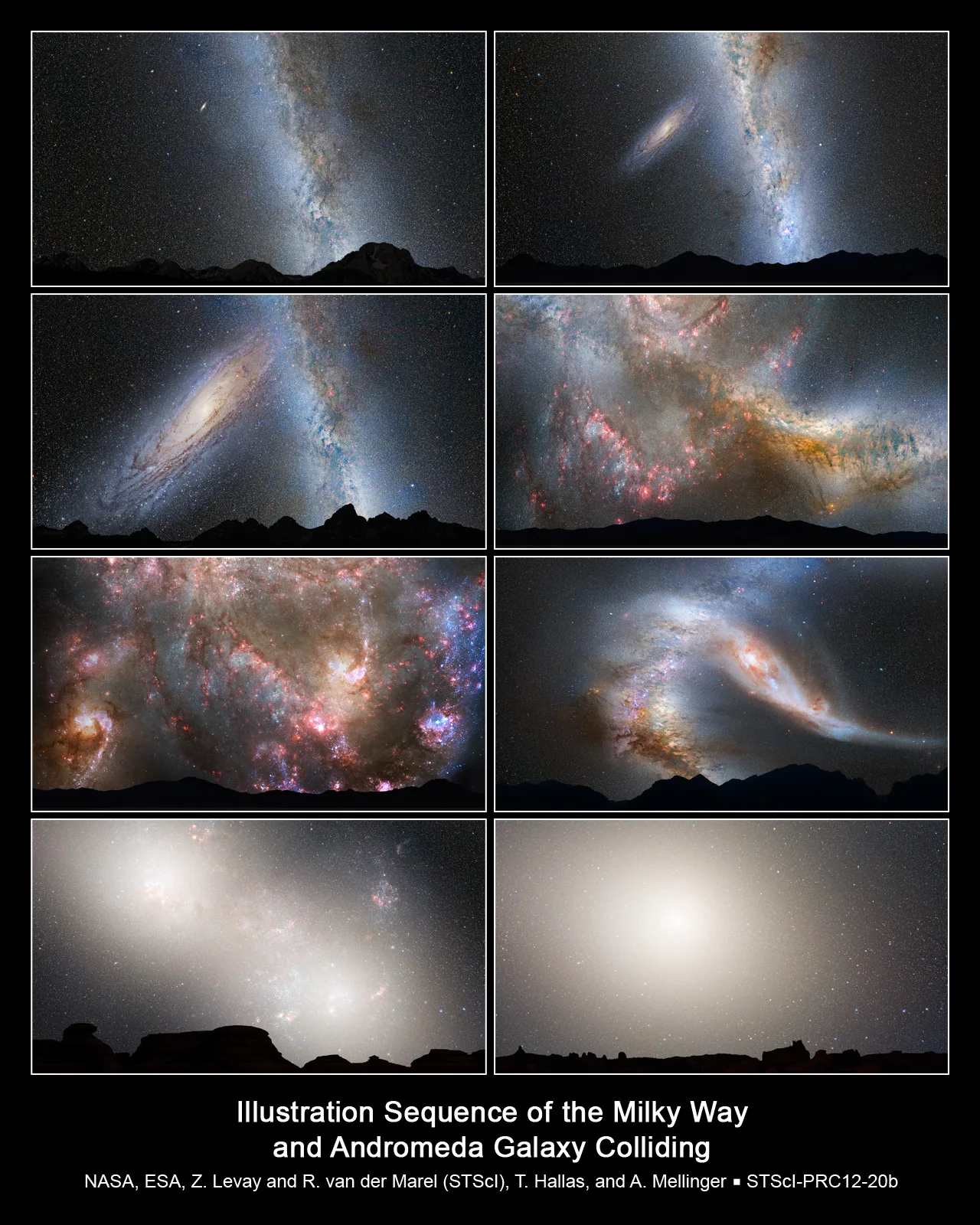
Somewhere in the nearby galaxy, 5.4 billion years from now
An unremarkable little star has just become remarkable. For billions of years, Sol has burned steadily, visible with the naked human eye up to 56 light-years away. It was faint and yellow. Now, practically overnight in astronomical terms, it has lit up like a strobe. It glows about 100-1,000 times brighter than before and has a deep red color.
That's because the Sun has finally left the Main Sequence, that part of a star's lifetime where its structure is supported by fusing hydrogen into helium deep within its core. Now it's run out of hydrogen. With nothing to push back against gravity, its core begins to collapse.
Suddenly, two new sources of energy become accessible. Within the core, helium reserves wait to be fused into carbon and oxygen. Outside the core, there's still plenty of hydrogen.
Neither energy source used to be accessible for burning. Before, the Sun's gravity was only strong enough to fuse hydrogen in the very core. As soon as it reached the burning point of hydrogen, it stopped collapsing. It didn't reach temperatures high enough to burn either helium in the core or hydrogen in the outer layers.
Now, as the core collapses on itself, it keeps collapsing until temperatures rocket high enough to burn helium. They also reach a shell of hydrogen in the outer layers of the star. Buoyed by this new source of energy much closer to the surface, the Sun expands. Its luminosity rockets up, and suddenly it's visible to the naked eye within 500 light-years.

Titan, 7 billion years from now
One billion years ago, the Sun's dramatic increase in brightness raised temperatures on the surface of Mars to those of the 21st century Earth. Constantly buffeted by high-velocity winds from the dying Sun, it's unlikely Mars could have retained any liquid water on its surface. Still, if any life did crawl from its ancient river valleys, it's now long gone. The rapidly expanding Sun is scorching the inner planets, disrupting their orbits. Soon, it will engulf them.
But in the outer reaches of the solar system, on Saturn's moon Titan, conditions are ripe for a few determined cells to spring into existence. Not to be confused with Neptune's moon Triton, Titan has long been a candidate for extraterrestrial life. In the 21st century, Titan's surface teemed with lakes and rivers of liquid methane. Instead of rock beneath, though, the crust was made of thick ice. Beneath that ice cover lurked sub-surface water oceans.
Now the expanding Sun has melted Titan's ice, drenching its surface with oceans of water and ammonia. The astronomers who first predicted this called it a "primordial gazpacho" -- choppy, slower-moving than the volatile chemistry of the early Earth, but still with the potential for forming life.
Any life that forms has a few hundred million years before Titan, too, is burned to a crisp.

Pluto, 8 billion years from now
Pluto, barren and distant, orbits a kaleidoscopic nest of gas. The inner planets that once sat comfortably within the Sun's habitable zone are gone, burned up as the Sun expanded to 256 times its original radius. Then the Sun, too, disappeared.
It's still there, nearly unrecognizable. At the center of the expanding ring of gas ejected from its outer layers sits a little star called a white dwarf. The only thing holding it up against gravity is the pressure of electrons being forced too close together. Imagine trying to condense an entire elephant into the size of a matchbox, and you have an idea of how dense matter has to be before electron degeneracy pressure kicks in.
In this case, most of the mass of the Sun now occupies an object about the size of the dead Earth. The rest, jettisoned into space, forms a ring-like structure called a planetary nebula.

Out at the edges of this structure sits Pluto. It's a far cry from the ice-coated dwarf planet it used to be. The Sun stopped short of evaporating it entirely, but all the water and ammonia ice on its surface boiled away. All that's left is a rocky core, more like Mercury than an ice world.
Pluto drifts on, orbiting a dead star. It isn't going anywhere.
Blink and you'll miss it: two momentary blue flashes in a set of photographs of a serac fall. The man who took them has a theory that hits on unanswered questions in physics.
Astrophotographer Li Shengyu has a history of taking internet-breaking photos of the sky. As an award winner of Beijing Planetarium's 2023 photography contest and a viral sensation for his videos of auroras in Inner Mongolia, he knows how to direct eyes to the stars. Now he's got amateur astronomers looking at the ground.
Yesterday, SpaceWeather.com published time-lapse footage by Li showing a serac collapsing on Sichuan's Mount Xian Nairi. As a sheet of ice cascades down the face of the mountain, a blue light follows it in brilliant flashes.
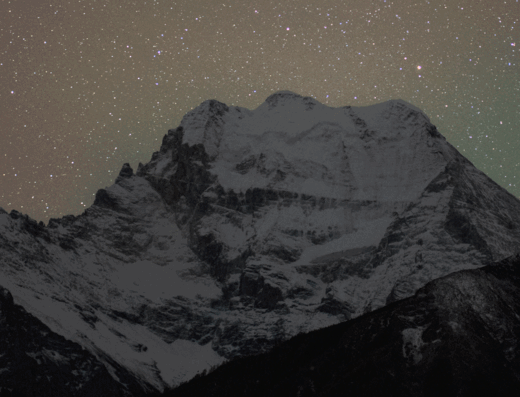
Blue lights illuminate a sacred mountain
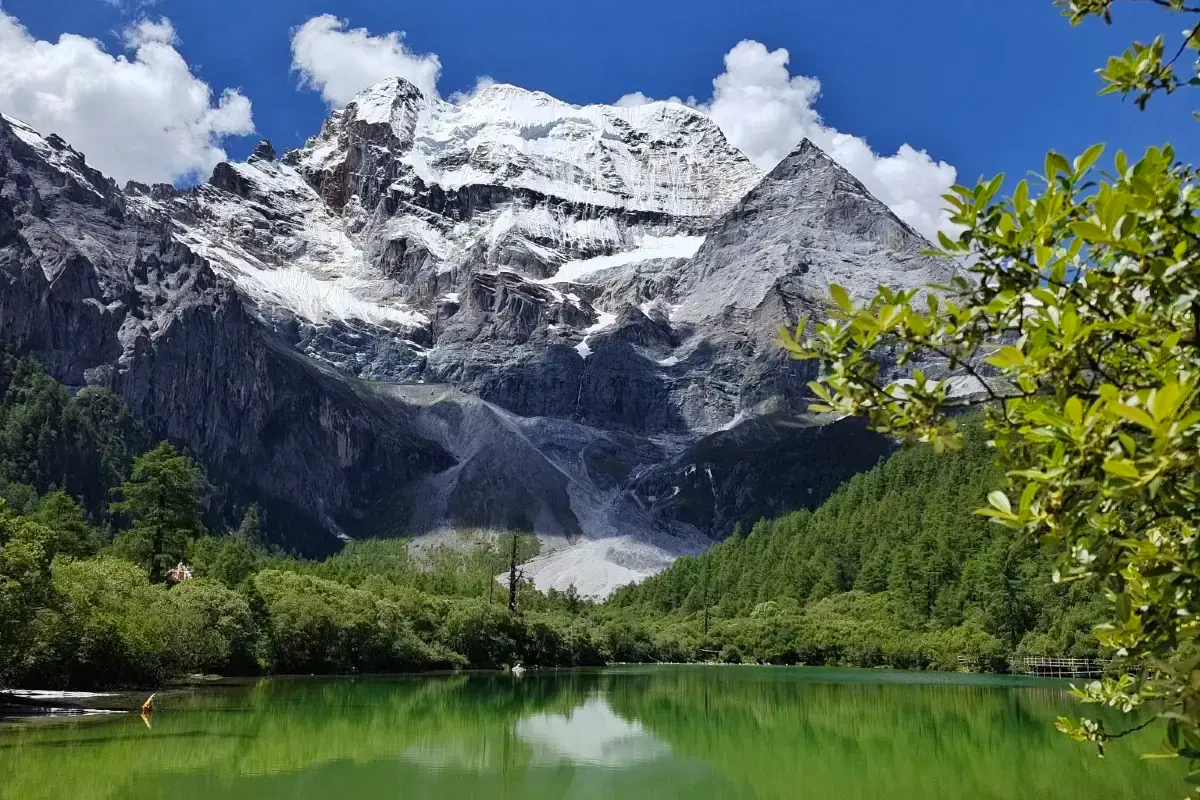
Mount Xian Nairi stands just over 6,000m tall and lies in the Garzê Autonomous Tibetan Prefecture of southwestern Sichuan. Also known in Tibetan as Mount Chenrezig, it forms one of a triptych of holy mountains that keep watch over the surrounding landscape. As an important pilgrimage site in Tibetan Buddhism, climbing it or its sibling peaks is forbidden.
On October 27, Li Shengyu set up his camera at the foot of Xian Nairi. His goal: to capture the glory of the mountain against a backdrop of traveling stars. As the Earth spins throughout the night, the stars appear to rotate in the sky. Long-exposure or composite photographs taken over the course of a night show comet-like smears known as star trails.
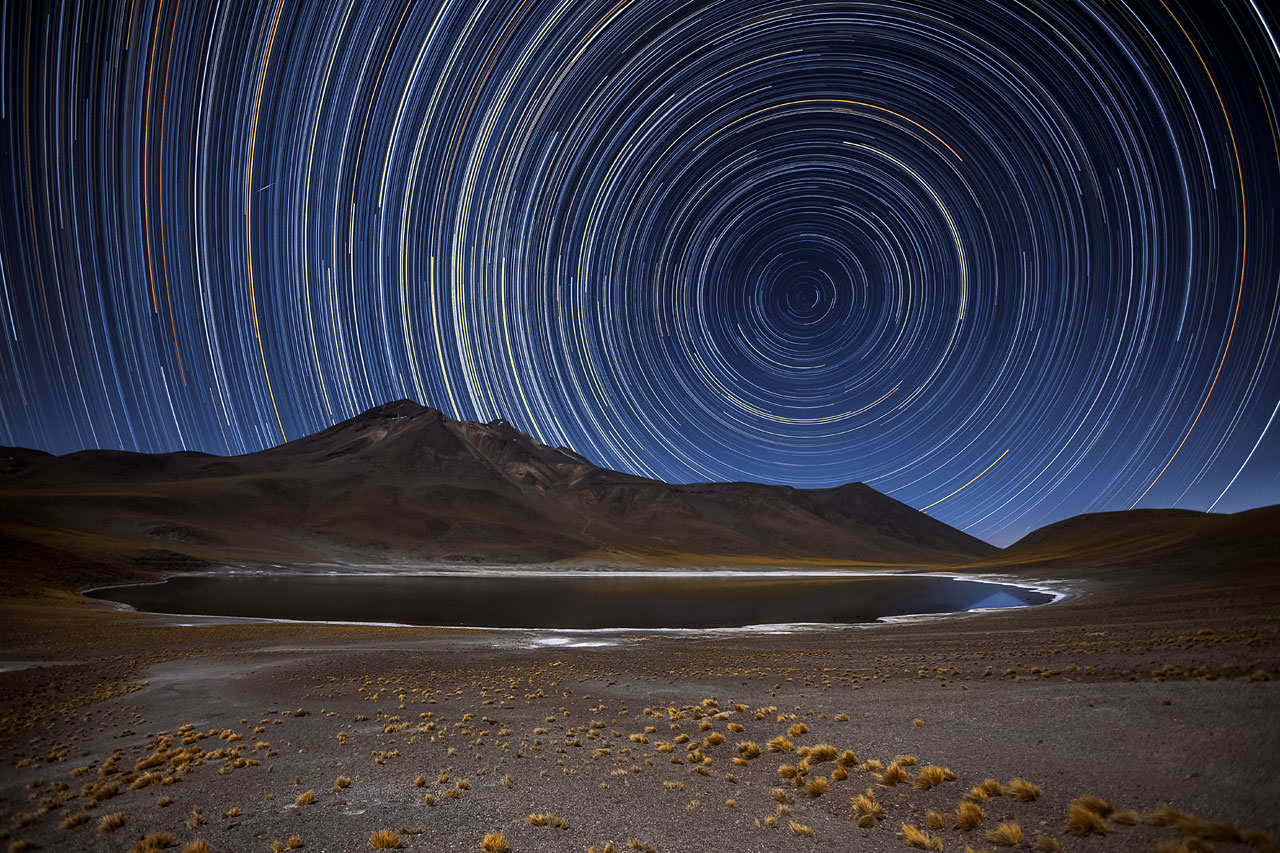
He got his star trails, but he also got what he suspected was a previously unobserved natural phenomenon: his flashing blue lights. Li reached out to other members of his astrophotography community. They spent a lot of time photographing mountains. Had anyone else seen anything like this?
A second avalanche glow
As it turned out, one had. Earlier that month, astrophotographer Lu Miao captured a similar event on 7,546m Muztagh Ata in Xinjiang. In her video below, a cornice fall appears to trigger a luminous blue glow, more enduring than the one on Xian Nairi.
Li told SpaceWeather.com that neither he nor Lu had noticed the flashes in real-time, only in their photographs. "However, I asked some friends who frequently photograph snow-capped mountains," he added, "and one of them mentioned having seen blue light with the naked eye during an avalanche, though they didn’t capture it on camera."
In the month since he recorded the lights, Li has formulated a theory. "Our initial hypothesis is that the luminescence may result from friction-induced lighting during the fragmentation of ice."
Physicists have a word for this effect: triboluminescence.
A mysterious optical effect
The first known description of triboluminescence dates all the way back to 1605. "It is well known that all sugar, whether candied or plain, if it be hard, will sparkle when broken or scraped in the dark," wrote Sir Francis Bacon in his work Novum Organum. "In like manner, sea and salt water is sometimes found to shine at night when struck violently by the oar."
Not to be outdone, 20th-century physicist Richard Feynman summarized the phenomenon more prosaically. "When you take a lump of sugar and crush it with a pair of pliers in the dark, you can see a bluish flash. Some other crystals do that, too. No one knows why. The phenomenon is called triboluminescence." The video below shows the effect on a LifeSaver.
We've learned more since Feynman described triboluminescence, but not much more. It occurs when a crystal is fractured. Sometimes, the light comes from a current jumping from one side of a fault line in the crystal to the other, stripping the nitrogen in the air between of its electrons. Temperatures soar, and the surrounding molecules radiate like they're in a furnace. That's the same process as lightning, though on a much smaller scale.
Complicating this pat understanding of triboluminescence is that other crystals radiate from a mix of ionized nitrogen and, seemingly, the surfaces of the cracked crystal. Still others don't radiate from nitrogen at all. So what are all the processes contributing to the flash? On the broadest scale, it's not clear.
Fracturing ice might cause mini-lightning
On the scale of an avalanche, however, the picture starts to come together. As water freezes, any momentary electrical imbalances get frozen in with it, leaving the ice with a permanent magnetic field. The falling serac in Li's video smashes against several rocky outcroppings on the way down. If a crack lands in the right location for one side to be negatively charged and the other positively charged, triboluminescence could occur.
This is great news to anyone interested in avalanche science, since the resulting flashes could offer insights onto the composition of the ice and the key impact points. How much of a given cornice fall, for instance, is solidly glaciated? How do fractures spread within ice?
On the flip side, observing triboluminescence on a far larger scale than a sugar cube and a pair of pliers is a big deal for molecular physics. Crushed sugar sparks consistently, but out of all the avalanches filmed all over the world, we only have a few recorded instances of ice sparking. Why?
We don't know, but next time you see an avalanche, keep your eyes wide open. Physics is watching with you.
With one astronaut hospitalized after a delayed return and another's weight loss the subject of tabloid speculation, it's been a busy month for NASA public relations. In June, a series of issues with Boeing's Starliner rocket stranded two astronauts on the International Space Station until February of 2025 at the earliest. Likewise, a four-person crew intended to return to Earth in August only made it back in late October.
Upon returning, one of the four was hospitalized overnight. Many articles over the last few weeks have suggested that NASA is hiding debilitating health issues in its astronauts. Medical privacy protocols keep their health secret, fueling these rumors.
Which of the four returned astronauts was hospitalized? What for? And has Suni Williams, one of the two astronauts stuck on the ISS until February, lost a concerning amount of weight?
Although neither Williams nor the hospitalized astronaut has caught a mysterious alien disease, there's a dash of reality in every conspiracy. Being in space changes your body -- often drastically. So let's take a look at the very real medical effects of life in the void.
Welcome to zero gravity
Humans evolved in a ridiculously specific niche. We need temperatures between about -30 to +50 °C, oxygen levels between 15% and 20%, and protection from all radiation more energetic than the near-UV. In the grand scheme of the universe, we're spoiled rotten.
And for as long as humans have been humans, we've been putting ourselves in environments we didn't evolve to survive. Space wastes no time in letting us know we don't belong. As soon as astronauts leave Earth, they lose the gravitational tug on their inner ear that tells their brain how to balance.
The effect is like motion sickness, when the body starts moving in ways the mind doesn't anticipate. That's why carsickness tends to be worse in the back seat, where the headrest in front appears stationary. The contrast is even more drastic on the ISS. The eyes tell the brain it's standing still, while the inner ear insists it's in free fall.
"Space sickness" isn't a new problem. In fact, Gherman Titov, the second man ever in space, threw up inside his shuttle.

Puffy faces and lazy hearts
Right as a new astronaut adjusts to the sensation of falling, the face begins to swell. Human circulatory systems are designed to constantly fight gravity. On the surface of the Earth, the heart fights hard just to keep blood flowing, and even then, blood naturally congregates in the lower extremities.
When gravity vanishes, blood distributes evenly throughout the body. The face swells. Unlike space sickness, which tends to abate after a few days, astronauts' faces stay swollen throughout the mission.
But there are deeper effects than just cosmetic. The heart deteriorates rapidly in zero gravity. All of a sudden, the force it spends its existence opposing disappears. It gets lazy. In space, the blood practically pumps itself.
Heartbeats become irregular. When the heart does beat, it contracts with less strength. And at the cellular level, mitochondria swell and break up while proteins fragment. Genes related to heart disease start to activate.
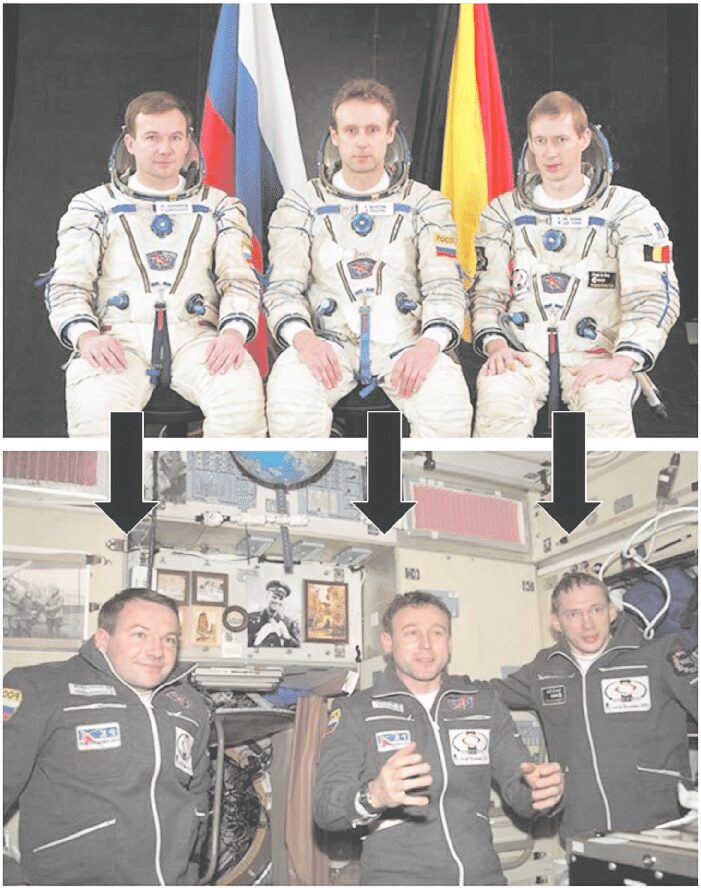
Chicken legs
Down at the other end of the body, the legs are in limbo. Less oxygenated as blood strays up to the face, they are also freed from having to support the body. That's why astronauts work out for two hours a day, trying to keep the legs and lower back active enough to prevent injury upon returning to Earth.
Even with the exercise, astronauts face nearly a three times higher chance of a herniated disk after their stay in space. That's when the cartilage inside the spinal column squeezes out between vertebrae, often pinching nerves.

Cosmic radiation spells cellular trouble
The atmosphere on Earth does more than set the climate and provide breathable air. It also shields us from the majority of high-energy radiation that can ionize our cells, leaving us vulnerable to genetic glitches like cancer.
In space, there's no such protection. Even in the thin upper layers of the atmosphere, airplane flight crews suffer 24% higher rates of cancer than the general public. Although scientists haven't quite whittled down all the possible factors that could contribute to this, the dominant theory is cosmic radiation. (Frequent flyers, fear not -- you have to fly daily for this statistic to apply.)
If tracing the effects of energetic photons on flight crews is hard, it's even harder on astronauts, a population numbering not even 700. That's nowhere near enough for a statistically sound health study. But some odd patterns are starting to emerge at the genetic level.
Researchers found that even after a nine-minute stay in space, the DNA called telomeres, which protect the ends of chromosomes, had stretched on all members of the SpaceX civilian mission Inspiration4. Likewise, a study comparing astronaut Scott Kelly to his identical twin and fellow astronaut Mark Kelly (now a senator of Arizona) found his telomeres stretched in space and snapped back to normal on the ground, slightly shorter. Since telomeres generally shorten with age, it's not clear what effect this stretching and reversal has on long-term health.
What's driving this strange chromosome behavior? It could be microgravity, but the authors of the study on the Kelly twins suspect that radiation damage is at play.

We don't know what we don't know
As of right now, limited datasets and confounding factors paint a muddy picture of the long-term impacts of space travel. Even when space agencies gather information for the protection of astronauts, they often have to keep it secret to comply with medical privacy laws. The study of the Kelly twins, for instance, may never have its full results released while the subjects are alive.
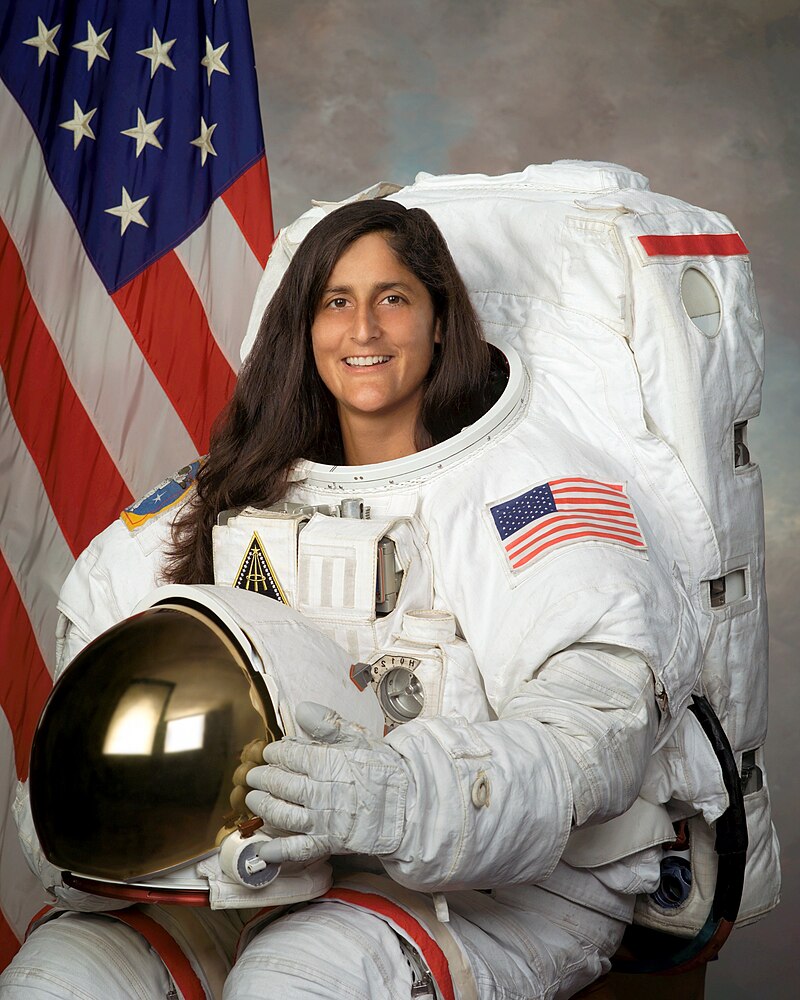
Medical privacy
As for Suni Williams and the mysteriously hospitalized astronaut, NASA is clear on the matter. The secrecy is due to medical privacy, and everyone is fine. The four crew members who returned in October are fine, Suni Williams is fine, and everyone else on the ISS is fine.
Given that the hospitalized astronaut was discharged after only one night, there's no reason to suspect deception beyond the requirements of medical practice. One of the returned astronauts, Michael Barratt, promised the public will know what happened one day.
“In the fullness of time, we will allow this to come out and document it,” he told The New York Times. “For now, medical privacy is very important to us.”
The internet obsesses over an astronaut's weight
Meanwhile, Suni Williams has spent the last few days reassuring people that she's healthy. After NASA released a series of photos including her, online commenters and tabloids fixated on her looks. Multiple pieces quoted unverified sources, purporting to be from within NASA, who claimed she had lost a concerning amount of weight.
The woman herself, however, states that her weight is the same, although her body has changed in outer space. Her workout regime on the ISS, she says, has made her butt bigger.
Suni Williams is 59 years old -- 17 years older than the average for female astronauts. Between societal prejudices against older women, odd angles in photographs (see the pizza-making photo below, where the camera distorts the proportions of both people in frame), the propensity of the press to obsess over women's bodies, and the simple fact that peoples' appearances often change considerably since Wikipedia photos taken 20 years before, there are a lot of mundane reasons why the buzz around Williams is based in nothing.

It's easy to imagine the sort of things that might have sent an astronaut to the hospital after landing. Tachycardia or severe dizziness could both ensue from a weakened heart. Legs could tremble after so many months in space. Or perhaps nausea sets in as the world doesn't move like the mind expects it to. For the first time in a long while, the inexorable force of gravity drags the inner ear back down to Earth.
"Numbers do not seem to work well with regard to deep time," writes McPhee. "Any number above a couple of thousand years — fifty thousand, fifty million — will with nearly equal effect awe the imagination."
Describing a similar effect with regard to distance, The Hitchhiker's Guide to the Galaxy author Douglas Adams writes more prosaically: "Space is big. You just won't believe how vastly, hugely, mind-bogglingly big it is. I mean, you may think it's a long way down the road to the chemist's, but that's just peanuts to space.”
So, with the goal of making human life look like peanuts, let's examine the best predictions from geologists and astrobiologists for the next two billion years on Earth.
The Mediterranean, 2,000 years from now
Dark water laps at the side of a boat. What the boat looks like is impossible to say, but its sole passenger, lost in the Mediterranean after a terrible storm, steers it onward over the now-still water. Overhead, the North Star guides the sailor along.
Except in the year 4024, the North Star is not Polaris but Errai in the constellation Cepheus.

In the antiquity of 2024, Polaris was the North Star. You could run a string from it straight through the Earth's axis of rotation. Even as the heavens appeared to turn throughout the night as the Earth spun, Polaris stayed where it was.
That time is gone. The slight wobble of the Earth's axis has now brought Errai, a fainter star also known as Gamma Cephei, into the spotlight.
But although they've shifted slightly, the constellations that shine down look nearly identical to those of 2024. Cepheus, the king of Aethiopia in Greek mythology, sits astride his throne while his wife Cassiopeia looks on. The environment and inhabitants of the Earth of 4024 might be impossible to describe, but the sky above and rock beneath have barely changed at all.
The boat and its passenger drift onward, guided by Errai. The clock turns.

The Sahara, 15,000 years from now
The brightest star in the summer sky has replaced Errai at the North Pole. Vega shines down on a Saharan climate of grassland dotted with shrubs, where herds of buffalo graze and splash in the shallows of massive lakes.
That same axial wobble that has brought Vega into the place of the North Star has altered the course of the seasons. Back in the 21st century, the Earth passed closest to the Sun during summer in the southern hemisphere, roasting the southern tropics. Summers and winters varied more in the north, but summers were milder than in the south.
Now the tables have turned. Summers expose the northern hemisphere to the Earth's most intense radiation. Monsoons off the Atlantic Ocean course toward the hotter regions of North Africa, drenching what used to be a desert and transforming it into a landscape where life thrives. If there are humans, they enjoy swimming in its rivers. Perhaps they record the scene with a visual technology we cannot yet fathom.
Maybe someone paints the swimmers on a rock. That's what humans did in the Neolithic, and left a record of a Green Sahara that endured long after the lakes had evaporated and the grass had withered away.
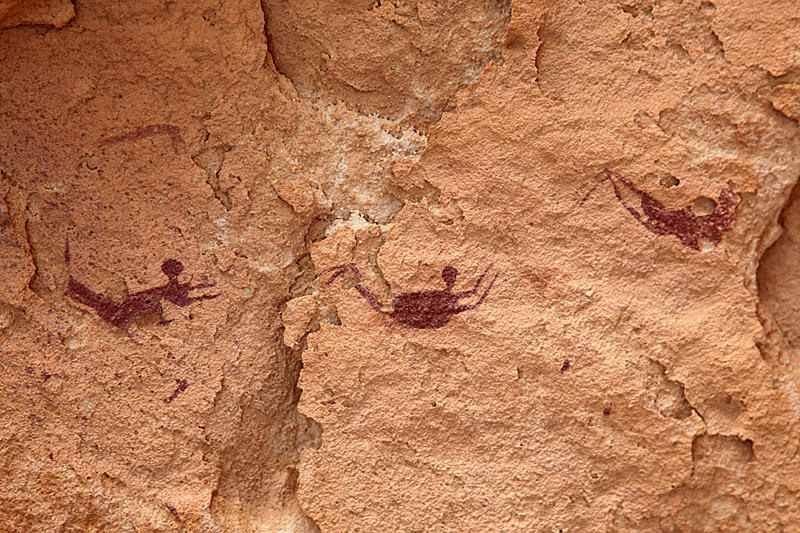
Hawaii, 50,000 years from now
The brand new island of Kama'ehuakanaloa steams in the morning sun. Lava courses down its flanks, spitting and frothing as the land finally stands free of the ocean.
In 2024, the top of Kama'ehuakanaloa sat 3,000m below the ocean's surface, occasionally lurching into seismic action with flurries of earthquakes. Thanks to a growth rate of 15cm every year -- 15 times as fast as the Himalaya -- in 50024 CE, it has claimed its place as the latest Hawaiian island.
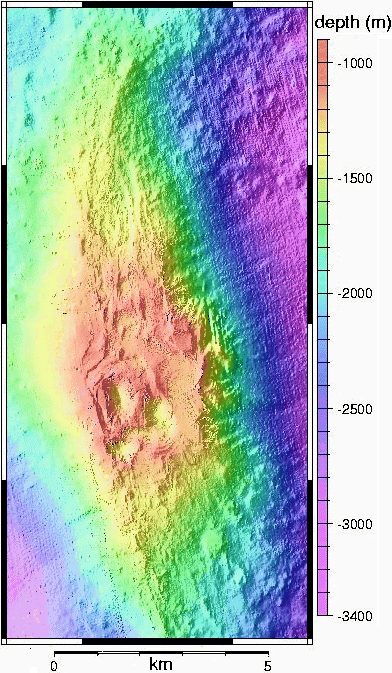
Kama'ehuakanaloa might seem inhospitably volcanic, but pioneer species already call it home. Lichen, a symbiotic organism comprised of a fungus inhabited by algae or cyanobacteria, has crept over from the older, more established Hawaiian islands. Soon, crickets will take up residence on the new volcanic rock, subsisting off nutrients blown in on the salty sea wind. Ferns will follow, and then trees.
The floodgates open, and life rushes in.
Himalaya, 20 million years from now
The land once known as Nepal is gone. It is not merely that the nation has long since been lost to history, along with every other nation from the 21st century. Rather, the Indian subcontinent has crushed all the land that used to make up Nepal, subducting some under itself and pushing the rest up against Tibet.
Rockfall clatters down the slopes of what remains the world's highest mountain range. While the theoretical maximum height that a mountain with a typical base size can sustain is 45km, rockfall keeps the practical limit far beneath that. Still, the summit of Nanga Parbat, now the world's tallest mountain, juts thousands or perhaps tens of thousands of meters into the Death Zone. It dwarfs Makalu, the second-highest peak.
In 2024, Nanga Parbat sat at the position of ninth tallest mountain in the world. But a network of new rivers at its base eroded much of the landscape, allowing the rest of the rock to float higher on the mantle. Nanga Parbat climbed upwards at a steady rate of 7mm a year, over three times faster than Everest. According to simulations, another modified river system centered on Makalu will likely make it the world's second-tallest mountain.
Now, ice blankets everything above the tree line. In the stillness of the mountains, nothing lives. If humans are here, and if they climb mountains, they have no choice but to spend the entire climb on supplemental oxygen. Seracs collapse in omnipresent icefalls, avalanches shred the slopes, and rocks plummet downward as the foundations of each mountain fail to support its height. Any climber who makes it past these objective hazards to stand at the summit will be outfitted more like an astronaut than a 21st-century alpinist.
Perhaps humans still exist, and one makes it to the top of Makalu. As their breath whistles through their mask, they gaze westward over the land where Nepal used to be. Gone are Rolwaling Valley, Namche Bazaar, and Kathmandu. All have been crushed against the flanks of the Himalaya.

Eurafrica, 50 million years from now
Erosion is dragging down the Himalaya, but a new mega-range has taken its place. Forty million years ago, the northwestern Nubian plate split off from the eastern Somali plate, ripping Africa in two and causing the Red Sea to flood the land in between. Now Nubia has finally completed its journey across the Mediterranean, forcing water into the Atlantic and closing the gap with Europe. Italy, Greece, and southern France have buckled up into the air, rocketing the Alps as high as the Himalaya used to be.

The inhabitants of Eurafrica live beside an enlarged Atlantic Ocean, big enough to gather storms of the same force as the Pacific. Monsoons slam into the coast every wet season, shredding the forests that now cover what used to be regions of dry shrubland.
The mountains bloom.
Pangaea Proxima, 250 million years from now
The deserts at the center of the supercontinent broil in 60˚C winds.
A few reptiles lurk under the sand, but most of the world lies still. If any large animals live here, they most resemble the gorgons of the Permian: dinosaurish beasts with rat-like faces and large teeth. Even those tenacious creatures would depend on unpredictable seasonal flooding, with mudslides just as likely to bury them alive as bring them the water they need to live.

Life flourishes more along the northern and southern coasts, where the weather stays temperate year-round. But this is a world that has long forgotten the concept of glaciers. We have returned to a global greenhouse, where even the poles never drop below freezing. In the last greenhouse period, tropical forests blanketed Antarctica.
Now there's no land at either pole. According to the most dominant prediction of what the Earth now looks like, all the continents have collided into a new Pangaea. Massive volcanic activity has increased the carbon dioxide levels in the atmosphere to such an extent that, at most, only 25% of the continent is inhabitable to mammals. In these milder coastal regions, lush forests dominate. If mammals still exist, this is where they live.
Back in the central desert, something like a gorgon comes across a dying pool of water and lives for another day. Or it doesn't.
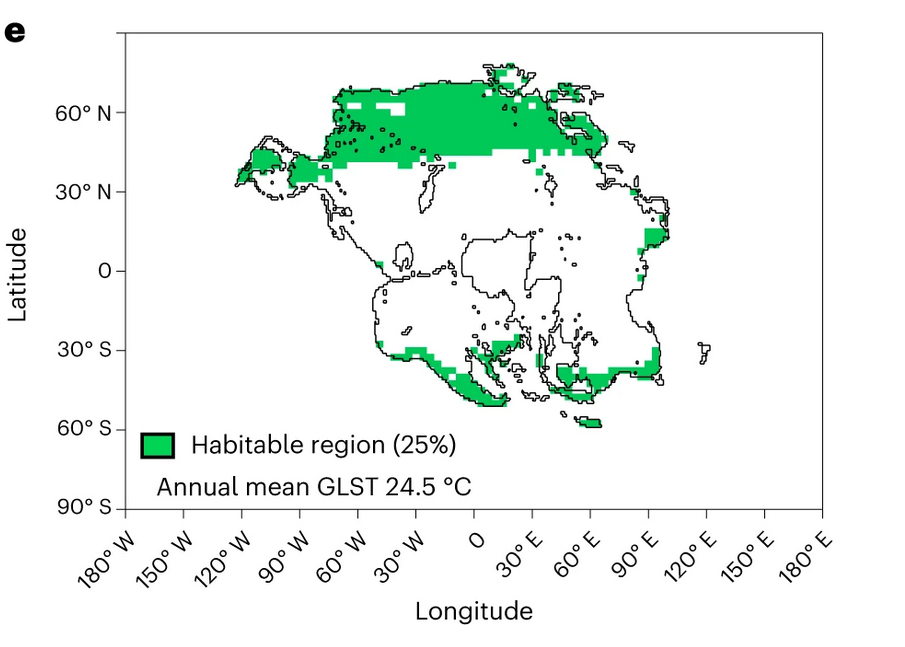
The dead forest, 500 million years from now
Being a tree is a cutthroat business. After the supercontinent of Pangaea Proxima ripped itself apart, ice rushed back into the world. Carbon dioxide levels dropped precipitously, starving plants. Only a few stragglers remain, the last of their kind.
Now grasses and shrubs dominate the arid land. The survivors process sunlight differently than trees, using a photosynthesis process called C4 that makes more efficient use of carbon dioxide. Without the leafy plants and trees that used to make up over 90% of flora, most large fauna have gone extinct.
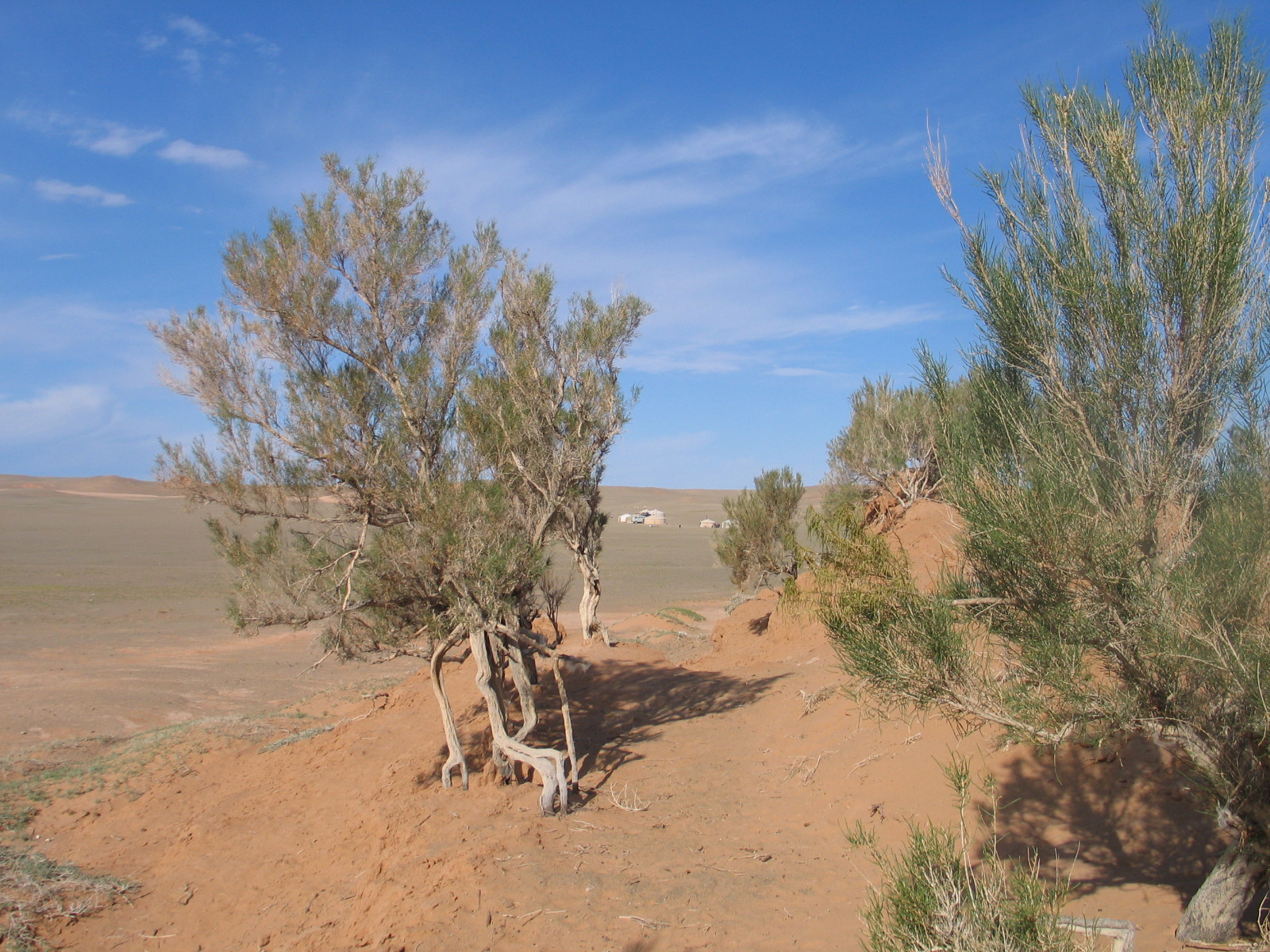
It's not just the carbon dioxide drop that has picked off species. The Sun shines brighter than ever as it edges toward leaving the Main Sequence, the period of time that describes the stable, long-term midlife of stars.
But even if the land is dying, the ocean still thrives. Seaweed drifts in the warm currents. Vertebrates and invertebrates scuttle over the seafloor. At the vents, sponge cities and bacteria reign supreme. Life is slowly returning to its origins.
The greenhouse, 1 billion years from now
The oceans are gone, and with them, plate tectonics and most multicellular life. Much of the water sank into the mantle, while the rest evaporated into the now-waterlogged atmosphere. Thick clouds blanket the world.
Despite the cloud cover, the temperature never drops below 45˚C. In its last sputters of middle age, the Sun radiates 10% more light than it did in the halcyon days of 2024. The Earth now resembles a heavily oxygenated, humid Venus.
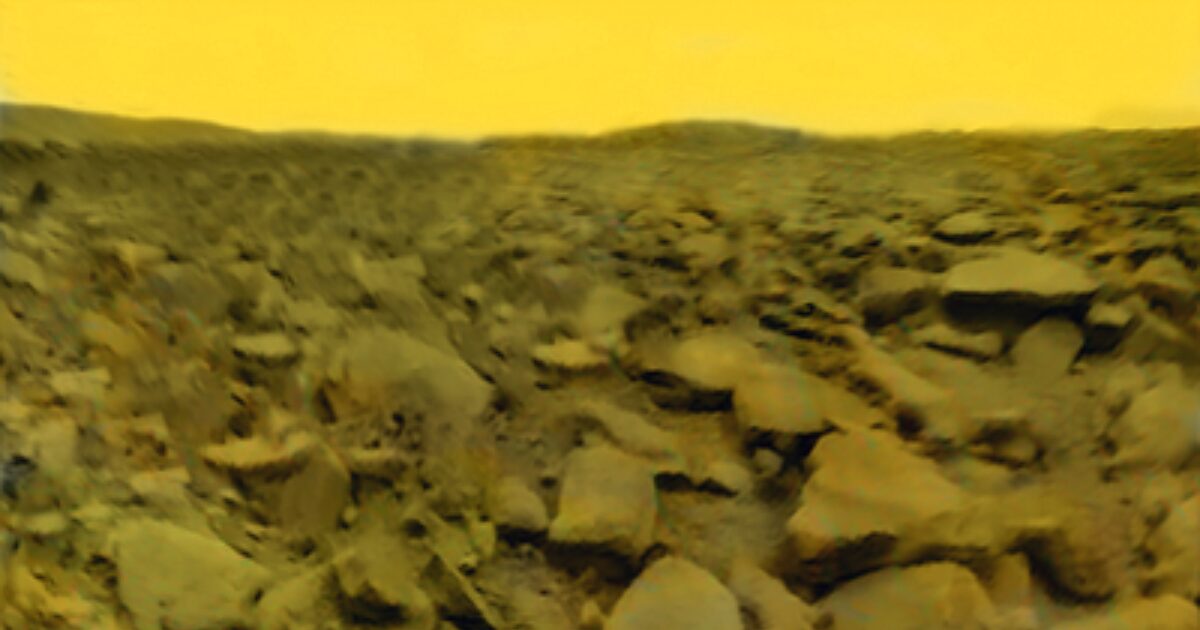
Still, life endures. Simple photosynthesizers clog scattered lakes at the Poles, turning their surfaces the emerald green of cyanobacteria and the amethyst of sulfur algae. They paint this dying world in technicolor.
The Earth, 2 billion years from now
All the algae is long gone, all the cyanobacteria in their bright blue and green splashes. Photosynthesis has not been possible for hundreds of millions of years. Now only a few single-celled organisms remain, clustered in the scant pools of water that remain on what used to be living mountains and now are merely dead ridges on a stagnant landscape.

The temperature is that of a furnace. In the sky above, barely any water vapor, oxygen, or carbon dioxide remains. Still, for the little organisms that subsist off carbon dioxide and chemical reactions in the heated rock itself, that's enough.
But the temperature is increasing, and carbon dioxide is disappearing alongside the last liquid water. As it does, even the rock-eating chemoautotrophs are starving. It will take a long time for all of them to die off.
During the day, the Sun beats down. At night, the sky swarms with stars as the Andromeda Galaxy collides with the Milky Way. Nothing exists with eyes to see it, but it's beautiful.
Another chemoautotroph dies.
The early Everest expeditions had a hard time. As they froze in inadequate clothing, went hungry on indigestible pemmican diets, and bet their lives on frail hemp ropes, perhaps they might have taken some solace in knowing that, in 1924, they had 0.2 meters less high to climb than their successors a century later.
That might be barely a step for a climber, but in geological terms, it's quite impressive. In general, rock moves slowly. Still, the rapid growth of the Himalaya isn't a surprise to scientists since the tectonic plate carrying the Indian subcontinent is still slamming into the Eurasian plate. This process started about 40 million years ago, buckling the crust in between and forcing it toward the sky in broken spires of rock and ice. So why all the Everest press?
Two reasons: first, it's Everest; second, because a paper published yesterday in Nature Geoscience argued that a flood 89,000 years ago might be responsible for pushing Everest even higher than some of its Himalayan cousins.
Drainage piracy
In geology, the process of one river stealing water from another is called drainage piracy. That's what researchers from the China University of Geosciences and University College London think happened in the region around Everest. Drainage piracy might explain the strange course of the Arun River, which cuts like a scalpel through the hills and valleys beneath Everest.

Its circuitous course prompted the team to run computer simulations of a hypothesized past merger event. They theorized that the Kosi River system, which comprises most of the rivers in the region, flooded the Tibetan Plateau and forced the Arun River into its current path.
Floating mountains
Water erodes rock and carries it off elsewhere, carving deep channels into the land such as the ones sandwiching the Arun like a vise. Counterintuitively, erosion actually lifts the bits of rock nearby that aren't eroded. Since so much rock is swept downriver, the crust is lighter and floats higher on the mantle beneath it.
Geologists call this process isostatic rebound. Drainage piracy can cause it, but the most dramatic examples of isostatic rebound occur when glaciers melt and carry huge amounts of mass away.
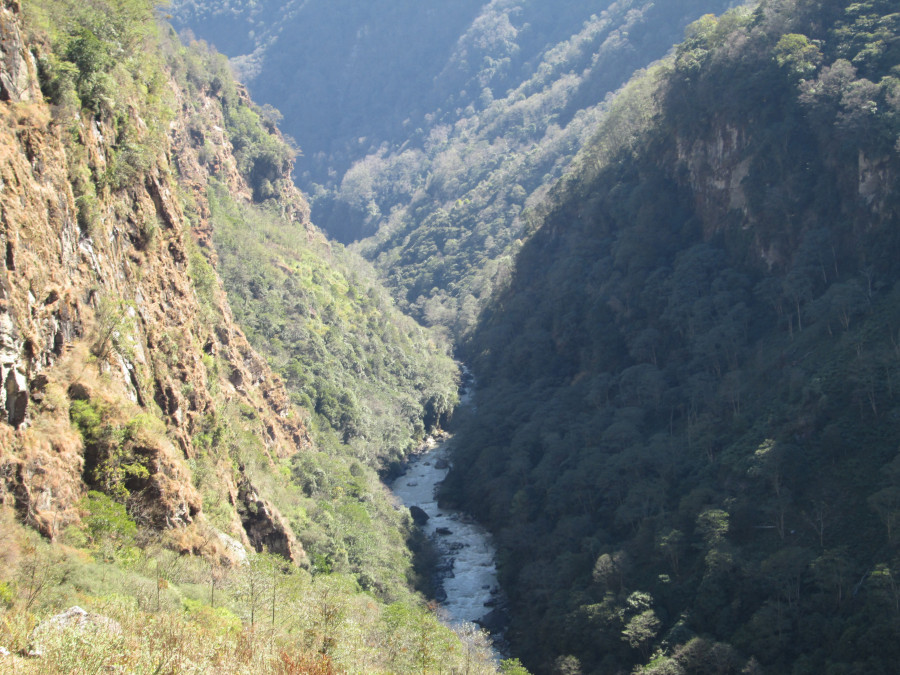
To explore whether the Arun might be a Frankenstein patchwork of other rivers, the team made computer models of a hypothetical drainage piracy event and incorporated topographical data of the region. Then they compared the simulation's predictions to the present-day paths of the Kosi river system. For a flood between 50,000 and 100,000 years ago, the computer hit close to the modern river courses and elevations. The closest model was for a drainage piracy event 89,000 years ago.
Although their predicted elevations differed from reality in some tributaries, the team argues that their results explain why Everest is growing faster than its neighboring Himalayan peaks. They suggest that as much as 165 meters of Everest's height might have come from this isostatic rebound.
There's precedent for this theory. Nanga Parbat, the fastest-growing mountain in the world at 7mm of elevation gain every year, is another beneficiary of drainage piracy driving isostatic rebound. So check back in 250,000 years when Nanga Parbat will claim its place as the world's tallest mountain.
Hey, what about Makalu?
The world's 5th tallest mountain might be getting even more of a boost from the theorized drainage piracy than Everest. The team's simulations predicted the epicenter of the isostatic rebound would land right next to Makalu.

Unlike Everest and Nanga Parbat, though, scientists don't have any precise observations of how fast Makalu is growing. If anyone wants to lug a GPS to the summit and stay up there taking measurements for several hours, they would be taking one for the team.
It's a bad month for any malicious asteroids out there. On Sept. 4, an observer at the Catalina Sky Survey spotted an asteroid bound for the Philippines eight hours before it disintegrated in the sky. Eight hours' notice would be enough to evacuate inhabitants in the case of a city-killer asteroid. People: one, asteroids: nil.
Then, on September 23, experimental physicists at Sandia National Laboratories in New Mexico showed that X-rays resulting from a nuclear blast could be enough to send even a planet-killing asteroid running in the other direction. To do so, they invented a new experimental technique. Now, scientists can test this kind of deflection without ever having to go to space.
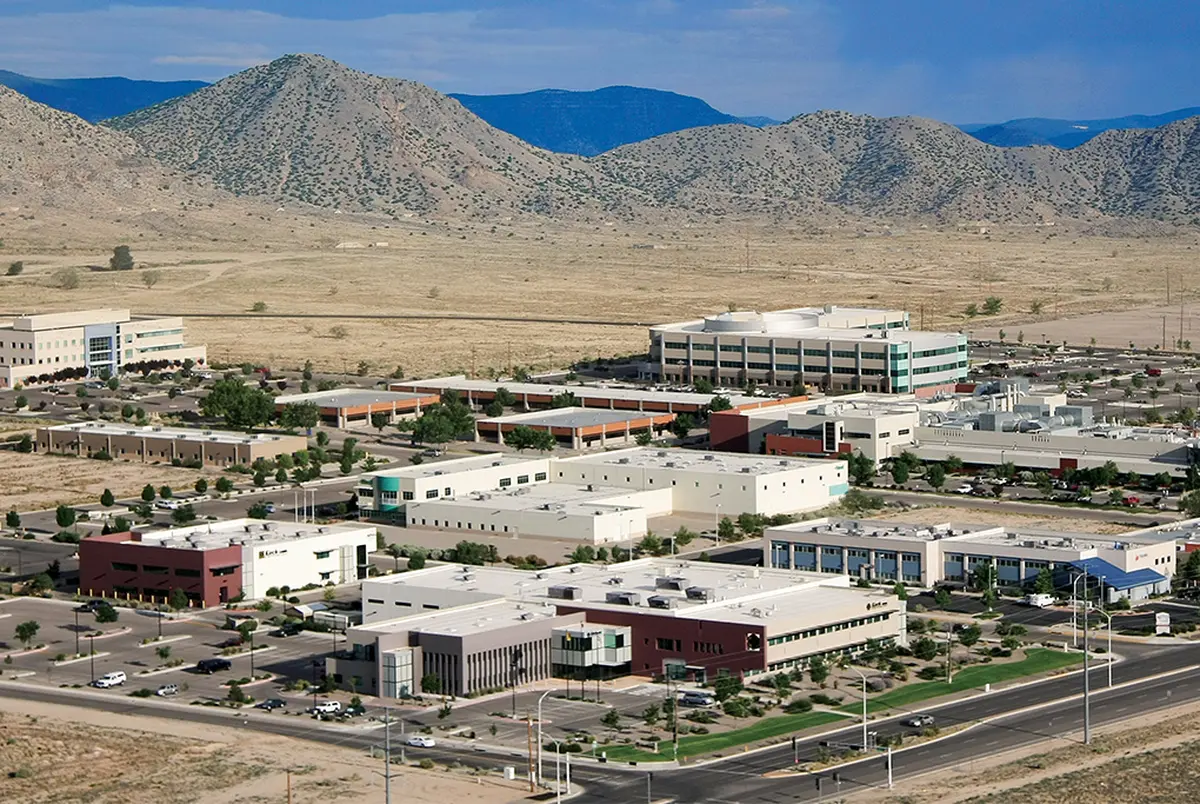
The threat of large asteroids
There are currently no asteroids on a collision orbit that are big enough to alter the global climate, much less wipe out humanity. Still, it's always possible that an interstellar visitor such as 'Oumuamua could pick our tiny blue dot as its new home, much to our detriment.
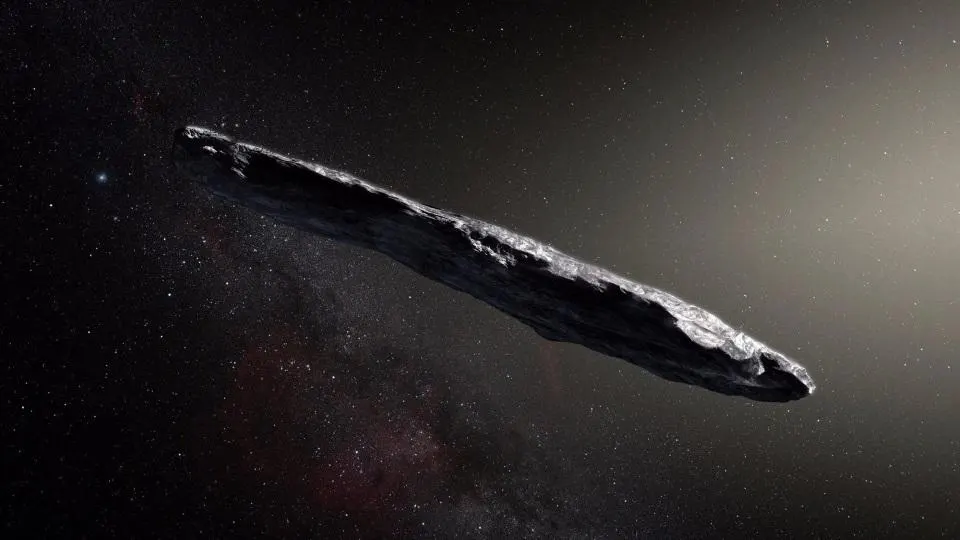
We know from the Double Asteroid Redirection Test that a rocket can deflect an asteroid from its path by hitting it at high velocity. But for some time, scientists have predicted that only a nuclear blast would be sufficient to deflect a kilometer-sized asteroid. Computer simulations agree that it will work. Figuring out how to test it in a lab has been a lot harder.
Nuclear blast deflection
Discussions of nuclear blast deflection tend to center on the shock wave from the explosion changing the orbit of an asteroid. Nathan Moore and his team at Sandia National Laboratories focused on a different tool in the nuclear explosion arsenal.
Nuclear blasts release large quantities of X-rays. These energetic photons dissociate (the process of breaking up a compound into simpler constituents) the surface of the asteroid itself, leaving behind a gas that expands in every direction, including toward the rest of the asteroid. The initial shock wave is comprised of lighter gases, but this slower explosion would be made up of heavy, metallic particles. If the initial shock wave is a swarm of flies hitting a car windshield at high speed, the secondary X-ray explosion is a wall of geese. They might move slower, but they're going to do a lot more.
But testing this concept in space is prohibitively expensive. Worse, if we wait until a hazardous asteroid is already heading toward us, we run the risk of fracturing it into still-dangerous pieces without deflecting it. That means we need to imitate outer space conditions in labs on Earth. But how can we create a target that's free to move without friction?
X-ray scissors and a machine called Z
Nestled in the foothills of Albuquerque, New Mexico sits a machine called Z. It is the most powerful electromagnetic pulse generator in the world. By firing it at argon gas, the Sandia team created a plasma in less than a millionth of a second, which released a bubble of X-rays at their asteroid sample.
When it came to mimicking the conditions of outer space, the team had to get creative. The tool they call "X-ray scissors" in their paper may conjure images of mind-bending microscopic technologies such as quantum optical scissors, but these scissors are refreshingly simple. Two pieces of minuscule metallic foil sit at the heart of the new experiment. From them, the team suspended their fake asteroid samples made of silica and quartz. When the X-rays hit the asteroid sample, they dissociate the foil as well. For just a shred of a second, the sample hangs suspended in space, unaffected by the drag of anything around it, pummeled by X-rays.
The team found that in that short time, the asteroid samples accelerated to about 70 meters per second. Through calculations, they showed that a stronger X-ray blast from a real nuclear explosion could deflect asteroids multiple kilometers across, the kind that wiped out the dinosaurs.
Best of all, the team's X-ray scissors will allow ground-based testing on all kinds of asteroid materials. If an asteroid suddenly heads our way, we'll have the technology and the practice to deflect it without shattering it.
The Earth: a ringed planet, much like Saturn, surrounded by a hula hoop of asteroids. The summit of Mount Everest: a tropical, vibrant paradise replete with frolicking shellfish and warm waters encouraging plentiful life.
At least, that's how it was 465 million years ago in the middle of a period in Earth's history called the Ordovician. Then, the rocks that now make up the top of Everest sat at the bottom of a shallow sea.
Five hundred million years ago at the dawn of the Ordovician, vertebrates had just developed. By the time it drew to a close around 440 million years ago, plants had crept out of the ocean and spread across land for the first time, blanketing the world in green.
The Earth's rings are a new addition to this picture, proposed in Earth and Planetary Science Letters by paleo-geologists from the University of Monash in Australia.
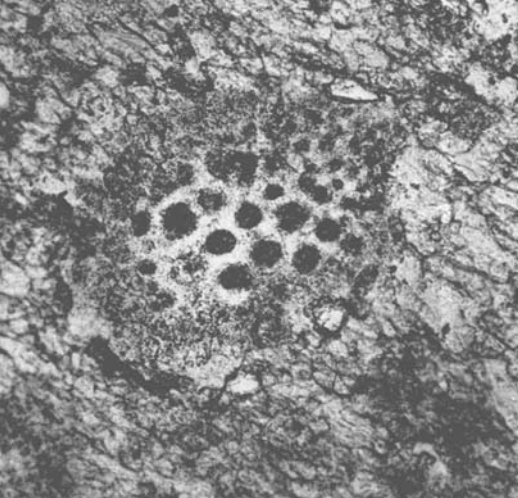
Meteor rain that lasted 40 million years

Somewhere in the middle of the Ordovician Period, meteors pounded the surface of the young Earth at a rate unprecedented since the Solar System's formation four billion years before.
It's hard to overstate how dramatic the Ordovician meteor event would have been if anything lived long enough to notice the change. Nothing did. Geologically short events are long enough for living things to evolve, go extinct, and still have time left over. A hypothetically immortal trilobite, however, would have noticed the average number of meteors hitting the warm waters of the Paleo-Tethys Ocean increasing by 100 or even 1,000 times, for 40 million years or so.
We know this because meteorites are rich in minerals like olivine. Olivine occurs far more in asteroids than on Earth. We find astonishing amounts of these minerals, and even some surviving impact craters, in rock from the middle of the Ordovician.
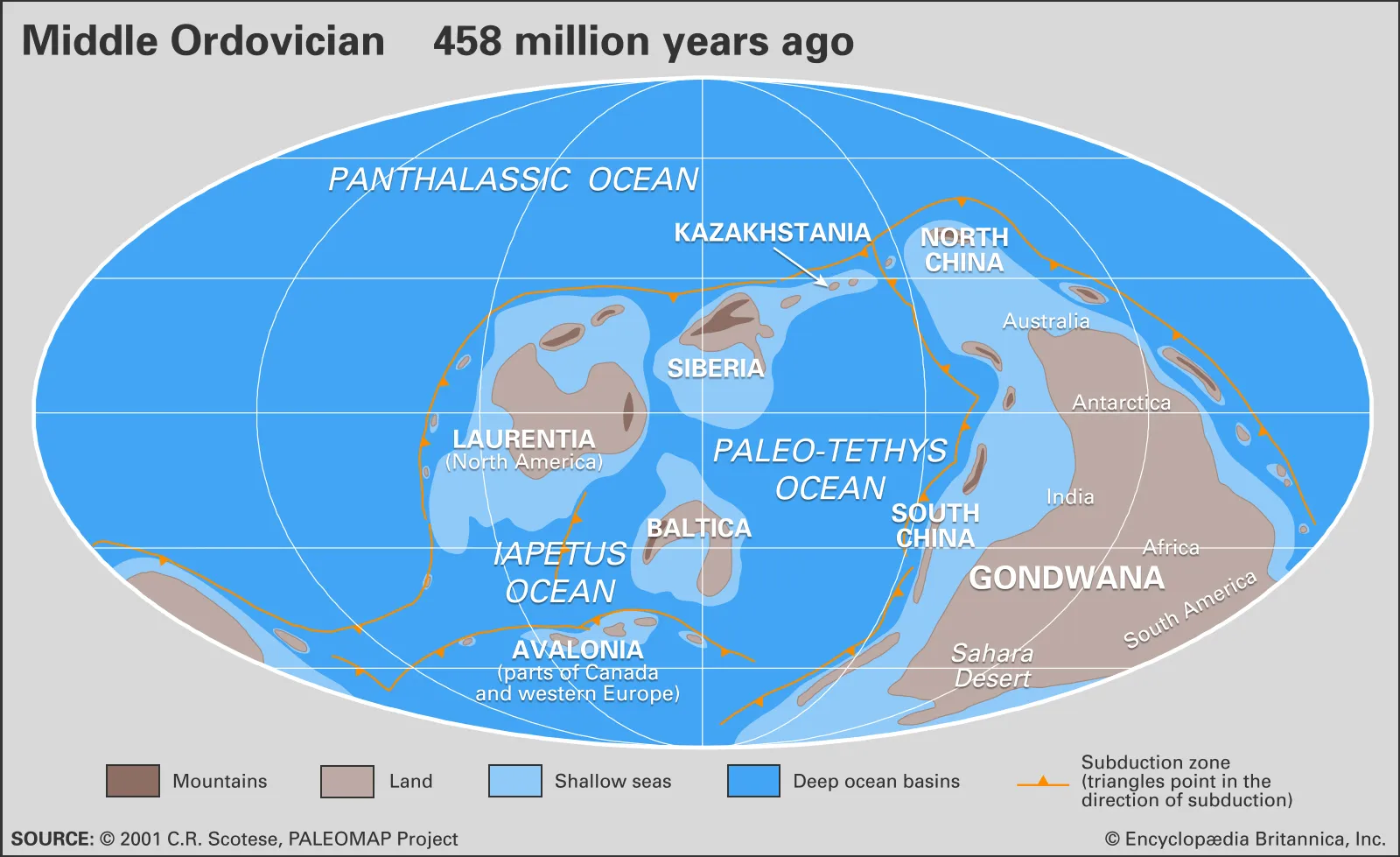
A new picture of the paleo-sky
In their new paper, the University of Monash team worked out what the latitudes of the 21 impact craters still visible from the Ordovician meteor event would have been 465 million years ago. They found that not one veered from the equator by more than 30°. Something must have forced meteors to fall around the equator.

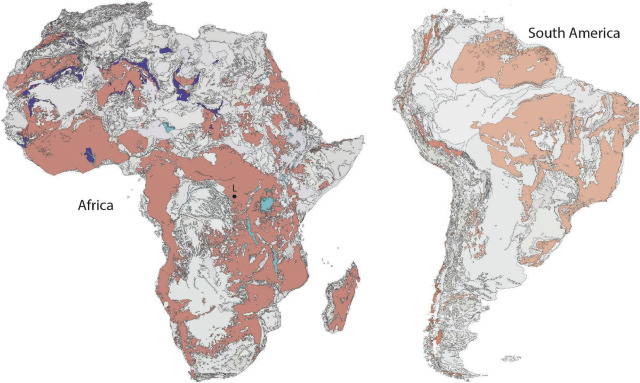
The team calculated the probability that meteors from the Asteroid Belt would randomly fall in this region and found that it was one in 400 million. Instead, they propose that a massive object on its way from the Asteroid Belt passed into the Earth's zone of influence. The Earth's gravity then tore it apart and bound the remnants in a tight orbit, forming a ring like the ones observed on all the outer planets, including Saturn.
With a ring of asteroids circling the Earth at its equator, it would only have been a matter of time before they all fell to the ground. A matter of 40 million years.
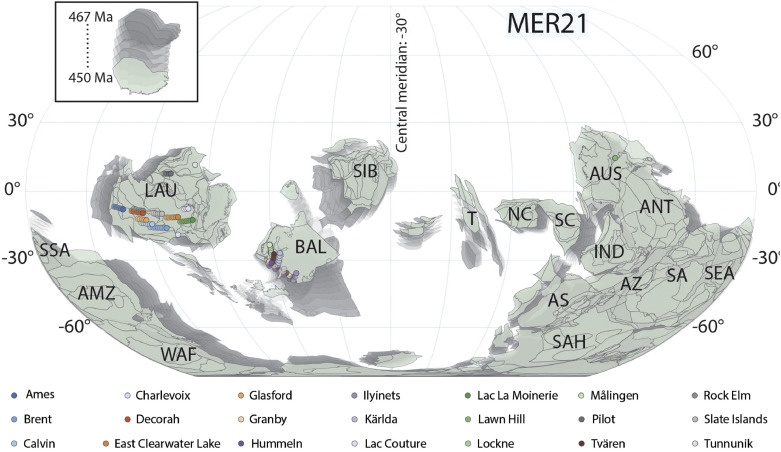
The icehouse world
In the late Ordovician, winter crept in. This wasn't a seasonal winter, but a winter no creature would outlive: the onset of an icehouse world.
The Earth goes through cycles of hot and cold. Hot periods, when the earth is known as a greenhouse world, boast luscious jungles at the North and South poles. The cold icehouse periods feature poles capped in ice sheets. We've been in an icehouse period for the last 34 million years, and we aren't due to leave it for millions of years more. That timeline drove climatologists to investigate why our ice caps are melting.
For most of the Ordovician, plants thrived in Antarctica. That changed when the temperature dropped by 8°C and ice crept over the poles. Winters got colder and summers hotter. And yet there was more than ten times as much carbon dioxide in the atmosphere as there is today, puzzling paleo-climatologists. Carbon dioxide retains heat. So how did the temperature in the southern hemisphere drop so suddenly?
The team from the University of Monash propose that the Earth's rings shaded the southern hemisphere from the Sun, while redirecting more sunlight toward the northern hemisphere. As the debris in the ring finally fell to the ground or escaped the Earth's gravity, the normal influx of sunlight returned and the poles turned green once more.
The ring was gone, and the Ordovician ended.
Asteroid hunter Jacqueline Fazekas started the evening of Sept. 4, 2024, much like she spends half of every lunar month: seated in front of the computer monitor at Mt. Lemmon Observatory near Tucson, Arizona. She cycled the telescope between different sections of the sky, looking for any dots in motion.
Fazekas had noticed moving objects before and sent them to the Minor Planet Center for follow-up, as per protocol. The faint smudge she noticed on Sept. 4 seemed to shift position across four exposures, so she sent its coordinates to the Minor Planet Center and continued her sky scans.
In the past, objects Fazekas submitted occasionally came back with a NASA hazard assessment estimating a 0.01% or 0.02% chance of hitting the Earth. This time was different. When NASA’s program released an alert for her little moving dot, the collision probability was 25%.

Observers around the world jumped to observe the asteroid, christened 2024 RW1. By midnight in Arizona, new data increased the probability of impact to 100%. As night crept into morning, planetary scientists had narrowed the location of impact to the island of Luzon in the Philippines, and the time to just after noon.
They identified something else as well. Though 2024 RW1 might be shocking in its sudden appearance, it wasn't dangerous. Only one meter in diameter, it would probably burn up on entry. Sure enough, at 12:40 pm local time, that's exactly what it did in the sky over Luzon, in the Philippines.
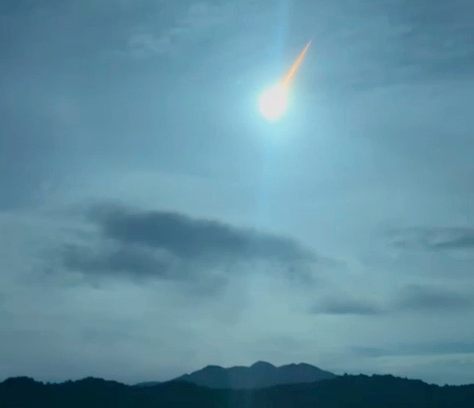
The way of the dinosaurs
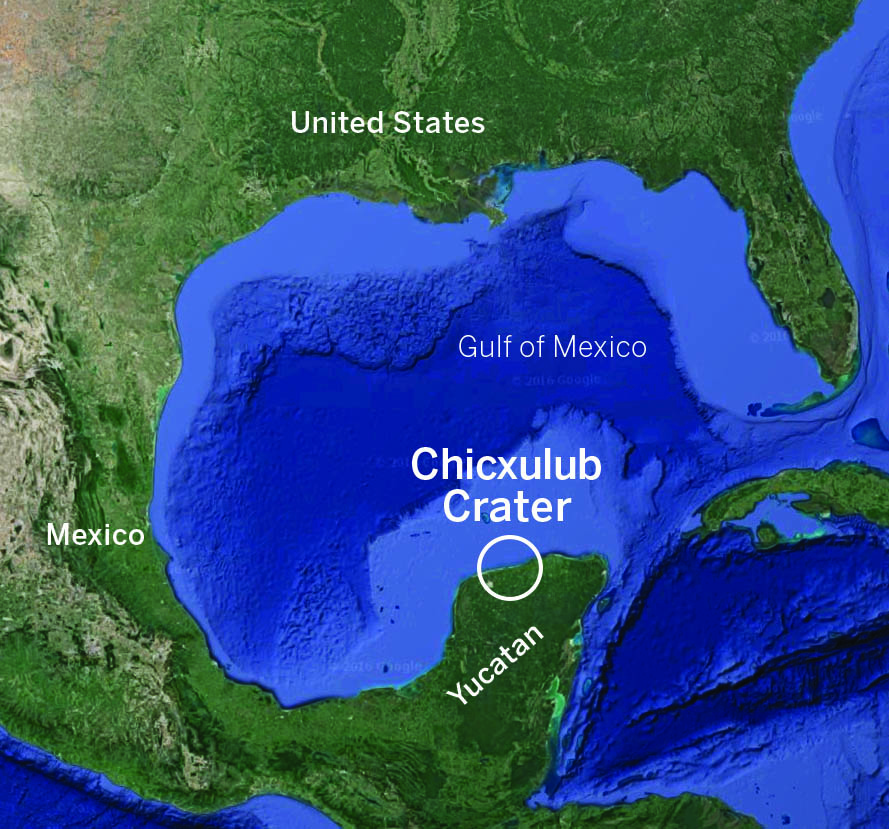
Around 66 million years ago, an asteroid the size of San Francisco slammed into the warm, shallow waters off the coast of what is now southern Mexico. The impact melted the crust into magma and threw it high into the air. Beads of glass rained down across North America, and that was only the beginning of the world's problems. Tsunamis spread across the ocean and drowned the land while subterranean fires cast the Earth into ash-shrouded darkness. Three-quarters of fauna and flora went extinct.
This was the Creteaceous-Paleogene extinction event, the doorway between the reign of the dinosaurs and the reign of mammals. The Earth bears scars of this trauma. A thin band of iridium-rich rock sits sandwiched between the sedimentary remnants of the Cretaceous period, the final age of the dinosaurs, and the Paleogene Period, when mammals began to emerge as the dominant large animals.
When physicist Luis Alvarez and his team discovered the Cretaceous-Paleogene iridium boundary in 1980, their conclusion that an iridium-rich asteroid had hit the Earth and caused the extinction of the dinosaurs was far from certain. It wasn't until 1991 that evidence of the buried Chicxulub crater in southern Mexico catapulted the asteroid theory from the geological fringes to public school curricula.
You, me, and the apocalypse
The discoveries of the Cretaceous-Paleogene iridium boundary and the Chicxulub crater awoke scientists to the threat of impact events, but not politicians. With perfect timing, comet Shoemaker-Levy 9 arrived.
Its discoverers -- Carolyn Shoemaker, Eugene Shoemaker, and David Levy -- immediately knew it was strange. In a note to the International Astronomical Union summarizing their observations, astronomer Brian Marsden wrote that the comet was "most unusual in that it appeared as a dense, linear bar about one inch long and oriented roughly east-west." And almost as an afterthought: "The comet is located some four degrees from Jupiter, and the motion suggests that it may be near Jupiter's distance."

In fact, it wasn't merely near Jupiter's distance, but on a collision course. By the time the Shoemakers and Levy found it, the force of Jupiter's gravity had shredded it into twenty-one pieces, many larger than a kilometer across.
Astronomers watched with bated breath, hoping to see not only how violently the impact would affect Jupiter, but also clouds of ejecta that could give them a glimpse of inner atmospheric chemistry. They got everything they wanted and more. Meanwhile, the public got its first vision of what impactors could do to planets.
The scars of Shoemaker-Levy 9 outshone the Great Red Spot, Jupiter's famous cyclone region. Alongside the freckled impact zones that remained visible for months, the gas giant's atmosphere rocketed to 30,000°C, hotter than the temperature of its core. On Earth, governments around the world decided to pour a lot more money into Near Earth Object (NEO) detection.
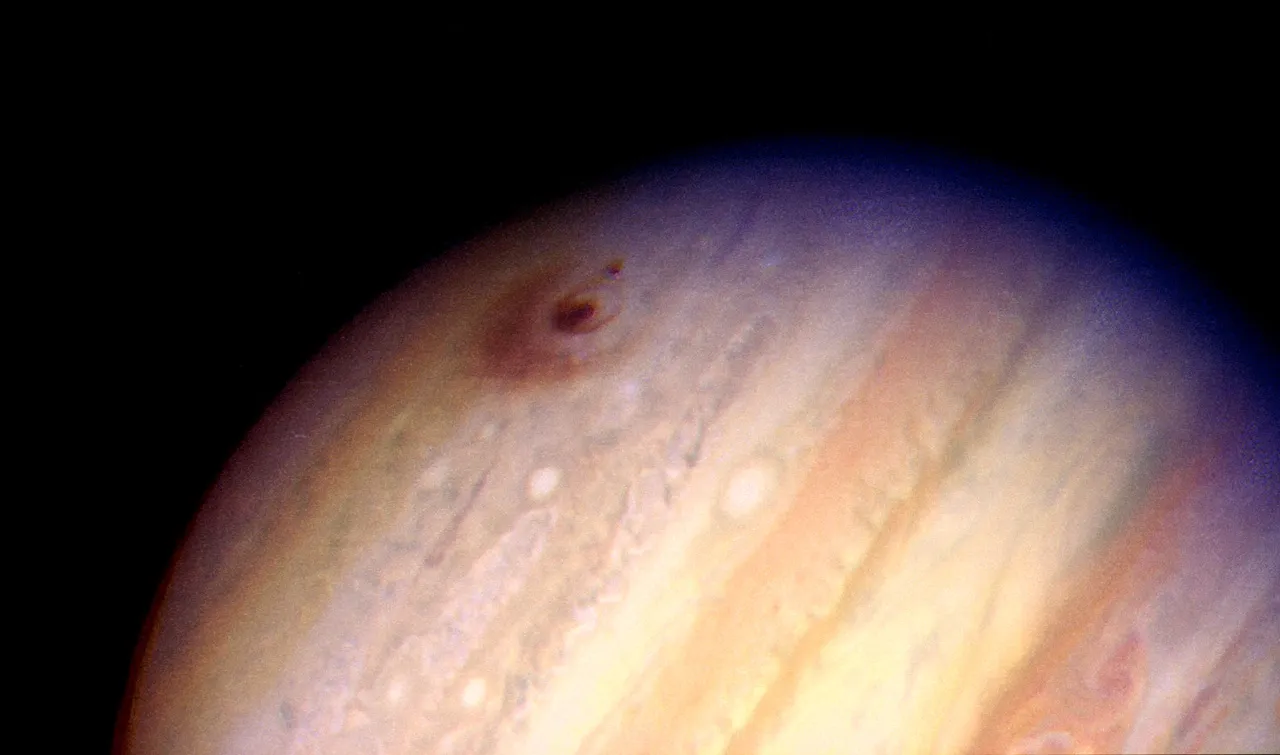
So how can humans tackle the awesome task of preventing mass extinction by asteroid? What does that work look like today, thirty years after the events that kick-started it? And what sort of person takes it on for a living?
Meet the asteroid hunters
This takes us back to people like Jacqueline Fazekas, the observer at the Catalina Sky Survey (CSS) who discovered asteroid 2024 RW1. Fazekas was only the ninth person to detect an asteroid before impact, and the first woman. Two years out of her undergraduate degree in astrophysics and space physics, her enthusiasm shines through when she describes her work. But it's not just the observing she loves, she's a regular tour guide at the Mt. Lemmon Sky Center, and is working towards a PhD in curriculum design and teaching.
"I want people to realize that anyone can do these things," Fazekas says of her historic discovery.
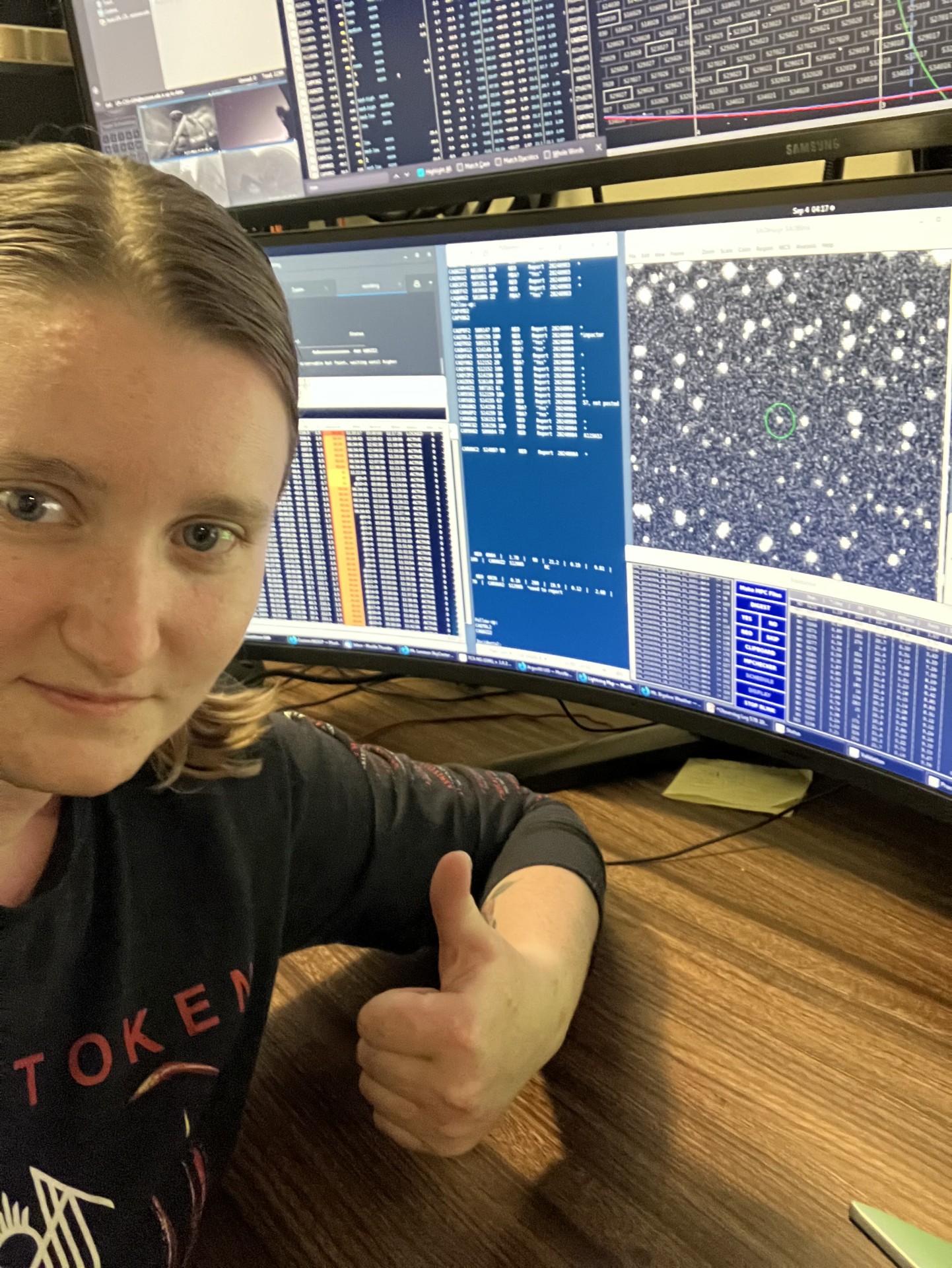
Anyone she inspires to get involved with NEO tracking will be joining a winning team. Of those nine asteroids detected before impact, over half hit in the 2020s, meaning our detection protocols are improving at breakneck speed.
That statistic is thanks to programs like CSS and its colleagues such as PanSTARRS in Hawaii, the Zwicky Transient Facility in California, and Tomo-e Gozen in Japan. Every night, observers around the world monitor scans like the ones in which Fazekas discovered 2024 RW1. Through their work, we now know the location and orbits of almost all massive, extinction-level asteroids. None of them are on a collision course.
The threat of mid-size asteroids
The asteroids that worry Carson Fuls, director of CSS, are medium-sized ones of about 120 meters across. These asteroids could destroy cities, but their size makes them hard to detect.
"There could be an object that we either don't see because it comes from the direction of the Sun...or we see it and we only have a day or two to do anything, in which case [governments] would try to evacuate people," Fuls said.
Fuls started at CSS as an observer like Fazekas. Over the years, he started working more on the engineering side, before deciding to pursue a Master's degree in Planetary Science at the University of Arizona. Right as he was set to start his graduate studies, the then-director of CSS announced his retirement. Fuls turned in an application as his successor and got the job.
Now a second-year PhD student, he juggles running CSS with scientific research on asteroids. Many people in his department find the combination bemusing, but his eclectic mix of work extends into CSS too. As director, he sets the direction of one of the most successful planetary defense programs on Earth. This week, though, he's trying to rent a porta-potty for observers while one of the sites is under renovation.
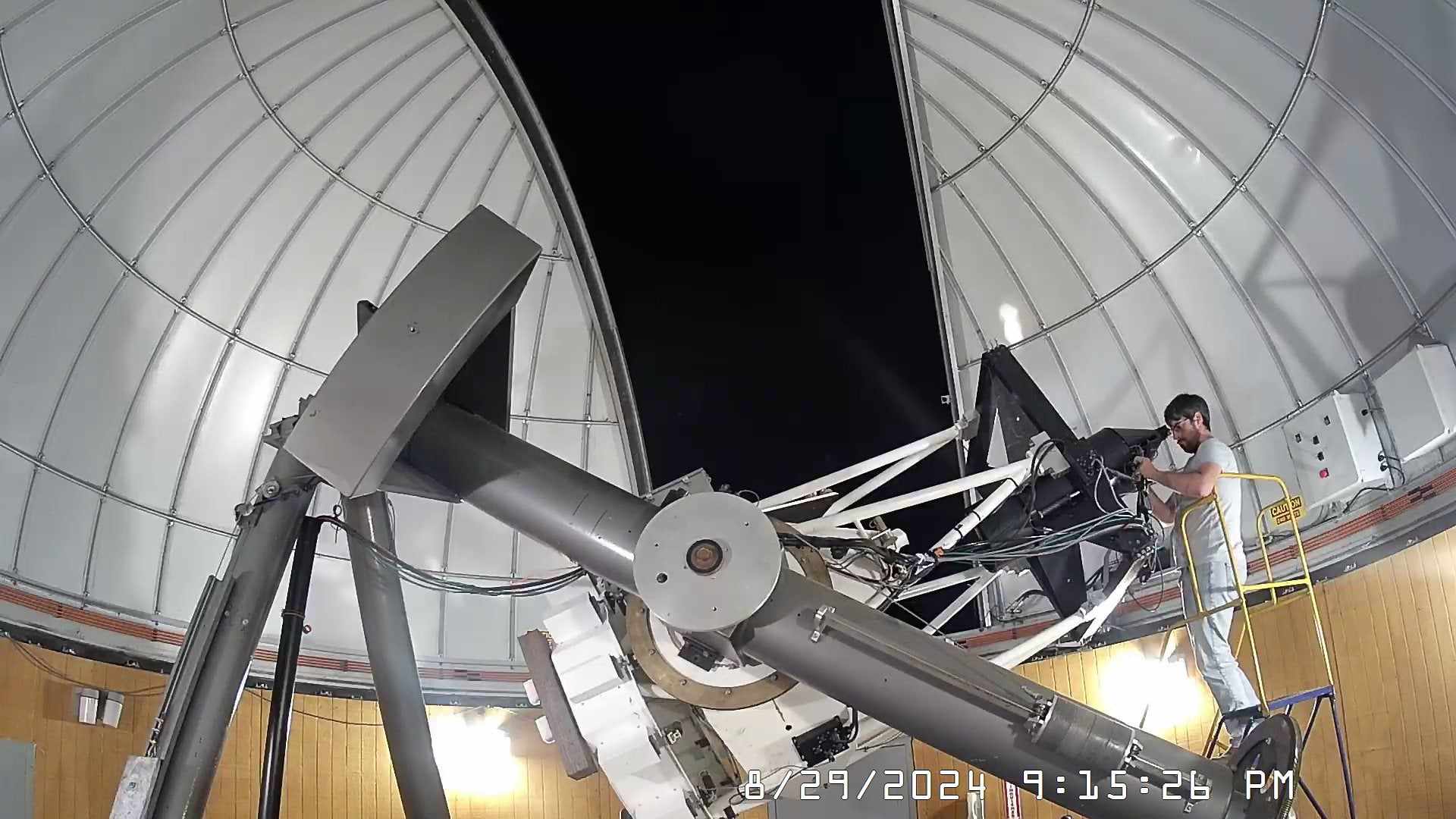
The biggest modern asteroid impact
The closest we've come to Fuls' nightmare scenario was in 2013 when a 20m asteroid exploded in the sky above the Russian city of Chelyabinsk. The resultant shock wave hospitalized 112 people but, astoundingly, killed no one.
Russia has a thriving illegal industry of car accident fraud, and many people set up dashboard cameras to prove their innocence if they become victims. No one knew the Chelyabinsk meteor was coming, but everyone's camera was rolling. That made the Chelyabinsk meteor one of the most well-recorded surprise astronomical events ever.

Astronomers didn't see the Chelyabinsk meteor beforehand because it arrived from the direction of the Sun. Asteroids don't radiate optical light, so we can only see them if they reflect sunlight. The Chelyabinsk meteor was silhouetted, not highlighted.
Although its unexpected explosion was violent, it happened high up in the atmosphere, sheltering the city below from the worst of the blast. A 120m asteroid would have made it to the ground, wiping out Chelyabinsk.
The chances of such an event get slimmer every day. Fuls estimates astronomers have located about 50% of the asteroids of that size. He wants to push that statistic past 90%, which he thinks can happen soon.
A new generation of powerful telescopes will soon be coming online, in particular the Legacy Survey of Space and Time (LSST) and NEO Surveyor. Based in Chile and scheduled to start in 2025, LSST will increase the number of known asteroids by a factor of 10 to 100. NEO Surveyor, meanwhile, will sit in outer space and watch for asteroids coming from the Sun's direction, filling in our last major blind spot. NASA forecasts NEO Surveyor's launch for 2027.
Soccer balls and cement
Once Fazekas and her colleagues have found an asteroid, they hand it off to people like Eileen Ryan. Asteroid orbits are complicated and long-term collision predictions require long-term observations. It's Ryan's job to watch asteroids until she's figured out where they're going and what they might do.
Ryan was the only woman in her graduating class of Rutgers physics majors. She didn't care. She wanted to study the solar system. After early research on planetary atmospheres, she began a PhD in the same asteroid mecca where Carson Fuls is currently a student: the Lunar and Planetary Lab at the University of Arizona. To supplement her classes, she signed on to help a researcher explore the effects of violent asteroid impact.
Her first assignment was simple: make a model asteroid. Ryan bought soccer balls, cut the tops off, and filled them with cement. Before long she was trekking to the vertical gun range at NASA Ames and firing her cement soccer balls at the ground in a vacuum tube. From there, she moved to computer simulations.
Stalking asteroids
In 2004, New Mexico Tech hired Ryan to build a 2.4m telescope at Magdalena Ridge Observatory. The build team consisted of four people. Ryan brought on her particle physicist husband, as well as a construction technician and an engineer.
At the time, there were no telescopes that could detect mid-size asteroids. When Ryan used hers to track an asteroid too faint for anyone else to observe, NASA agreed to fund the telescope's upkeep.
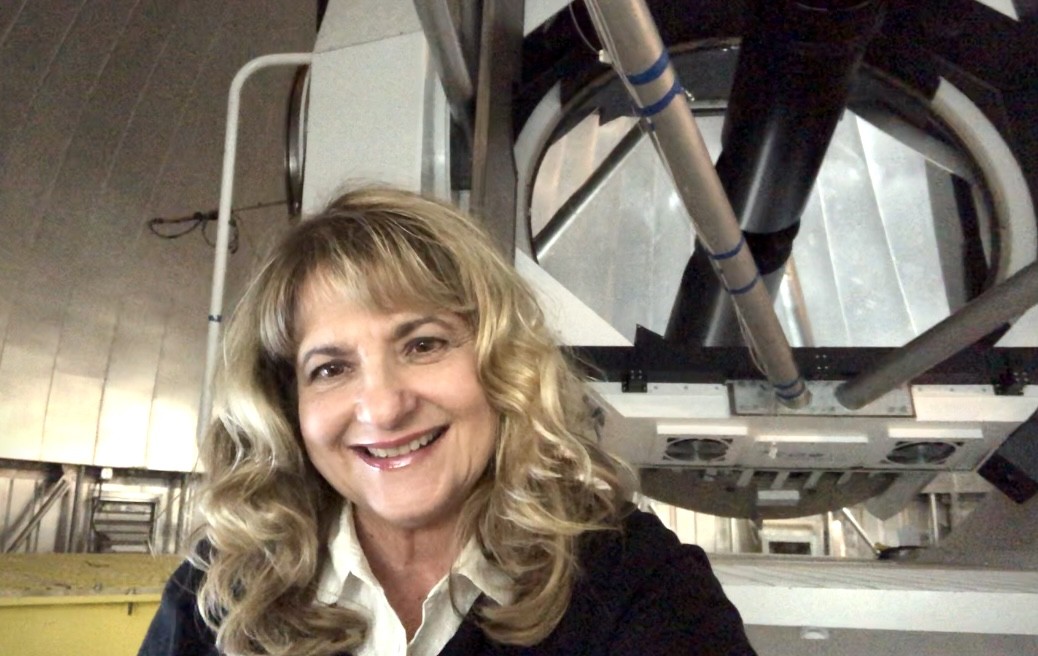
Now Ryan works in the middle ground of hazardous asteroid mitigation. She still runs lab impact experiments and computer simulations but also directs asteroid follow-up. Occasionally, asteroids bump into each other or other objects in the Solar System. Their orbit diverges. Once-harmless asteroids can enter a collision course overnight, and Ryan's there to find out when this happens.
On Sept. 26, 2022, a dense object slammed into the asteroid Dimorphos at 6 kilometers per second. Ryan and her team at Magdalena Ridge Observatory were watching. But this wasn't an ordinary orbital follow-up and the colliding object wasn't another piece of space debris. It was a 600kg chunk of metal, and NASA had sent it.
The eye of a needle
Like a sized-up version of Eileen Ryan’s soccer ball impacts, the Double Asteroid Redirection Test, or DART, was an outer space lab experiment. The idea: If a murderous asteroid is hurtling towards us, can we nudge it out of the way with a rocket? And what would happen to it afterward?
The DART spacecraft targeted an asteroid orbiting another, much larger asteroid. This makes follow-up easier since a small change in motion from a rocket impact is more noticeable in a very short orbit than a long one around the Sun. Dimorphos, DART's 270m target, orbits the much larger Didymos at 11km from Earth. But to even hit Dimorphos in the first place would take a Robin Hood shot. It occupies one-millionth of a degree in the night sky, the same size as an atom at arm's length.
One cloudy afternoon in my senior year of undergraduate astrophysics studies, I and the rest of my class sat and watched Dimorphos jitter forward on the projector screen. As the DART spacecraft and its camera sped toward the asteroid, the image reloaded every second to show a view closer by 6km. We held our breath in those last moments. When the final image came through, only a sliver at the top showed the gravelly surface of the asteroid.
The rest of the image was red. The DART spacecraft had struck Dimorphos, destroying itself before it could transmit the rest of the data.
NASA had threaded the eye of a needle and hit an asteroid 11 million kilometers from home.

Bullseye
Andy Rivkin, one of the DART investigation leads, pushed to stream the spacecraft's approach live even though it might miss.
"It was much more powerful streaming it," he says. Not only to take the general public along for the ride but also "to have the immediate results of people around the world with their telescopes seeing this crazy stuff happening."
Sure enough, Dimorphos brightened like a strobe right after DART hit it. Its shape changed, flattened like a piece of clay flung at a wall. And most importantly, teams including Ryan's confirmed that its orbit around Didymos is now 33 minutes and 15 seconds shorter.

While Rivkin's days used to be devoted to DART, including writing its official song, he now has a new baby: the European Space Agency's mission Hera. Set to launch in October 2024, Hera will head straight to Dimorphos to collect close-up data on its new orbit. This data will shape our playbook on how to redirect a potential asteroid away from the Earth.
Don't panic
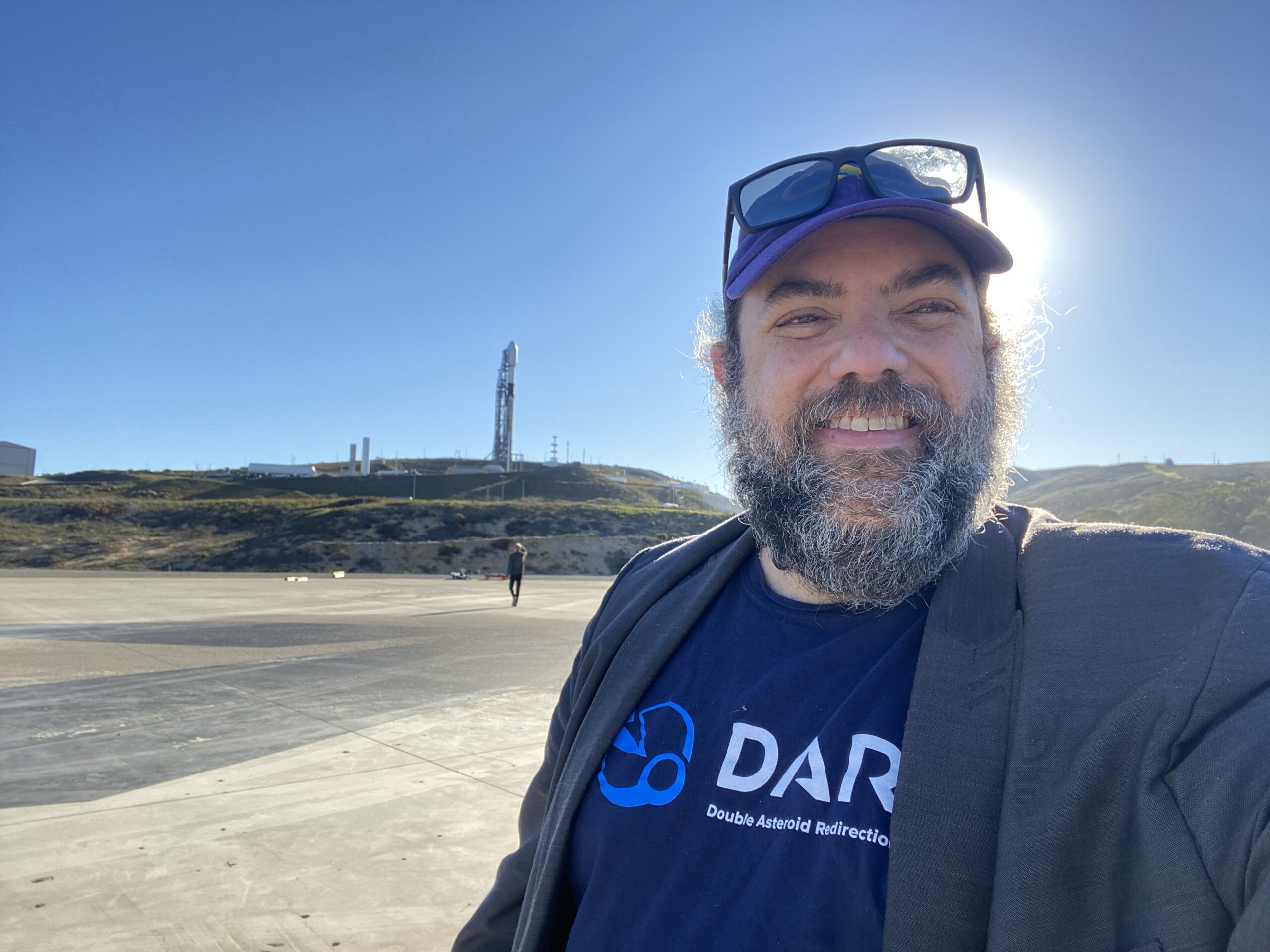
"[Planetary defense] is kind of like smoke detectors in a house," Rivkin says, after listing reasons that asteroids are cool and not just scary (they're pieces of the nascent solar system that didn't make it into planets. We will probably walk on them one day, and -- despite ethical concerns -- we might even be able to mine them for precious metals). "The payoff of knowing is really high."
Carson Fuls agrees with both the enthusiasm and the optimism. "Asteroids are the only things out in space that you can actually hold in your hand," he says, referring to meteorite fragments. And being hit by an asteroid is "the one natural disaster we can prevent."
I ask Rivkin how he feels about asteroid apocalypse media. With a breath of laughter, he tells me he still hasn't been able to watch Don't Look Up. "It sounds like a three-hour-long stress dream for me."
But apocalyptic stories of a civilization-ending asteroid are rapidly becoming as obsolete as Star Trek's flip phone communicators. DART showed us that we can nudge large asteroids off their collision course. As our detection protocols improve over the next decade, even the sneakiest mid-size asteroids will arrive with several days' evacuation time. That's no different from a wildfire.
"We have the technology to avert [asteroid] disaster," says Ryan. "We still do not have the technology to stop a hurricane or an earthquake. We can't stop a forest fire. But we can stop an asteroid impact. We are not going to be the dinosaurs."
On the evening of Aug. 28, 1859, a telegraph in New York took on a life of its own. As its operator, J. C. Crosson, fought to transmit messages, the current fluctuated wildly. The battery that powered the machine was supposed to supply a steady direct current. Now, it was as though something else had gotten into the wires, at one moment draining them of all charge and at the next, overwhelming the circuitry with electricity.
Bemused, Crosson threw open the doors to his office and saw a sky painted green and red. Streaks of light descended toward the horizon, lighting up the evening in ethereal shades.
Crosson's was not the only telegraph upset by the strange electromagnetic disturbances. Operators in France found their transmissions likewise overwhelmed by interference. When they tried to disconnect the devices from their batteries, sparks leapt out. In Montreal, it took operators five hours to transmit a 400-word report to the Associated Press. Telegraph workers in Kentucky gave up completely until the strange lights faded.

A night as bright as day
What Crosson saw was an aurora borealis unlike any recorded before or since. Great sheets of light like Greek fire blanketed the sky.
An observer from Vermont wrote an almost Biblical description of the view: "We were notified of a large fire behind the mountain at the north, and we went out to see it. Presently the red clouds began to disappear and spires of green shot up from the same place...The sky for about an hour more kept changing from green to red, till ten and a half o’clock, when all the brilliancy was gone, except a little green at the north."
Hikers in the Rocky Mountains described light bright enough to read by. "Some of the party insisted that it was daylight and began the preparation of breakfast," wrote one observer. "The light continued until morning, varying in intensity in different parts of the heavens, and slowly changing position."
We know now that the aurora is caused by solar winds carrying energetic particles, which flow along the Earth's magnetic field lines and hit oxygen atoms in the atmosphere. This transfers energy to the oxygen, but it eventually returns to its default, less-energetic state, and emits light as it does so. Depending on the energy gaps involved, we see different colors. Red comes from the highest layers of the atmosphere and green from beneath it. Occasionally nitrogen can take the place of oxygen, producing blue light in the lower parts of the atmosphere.
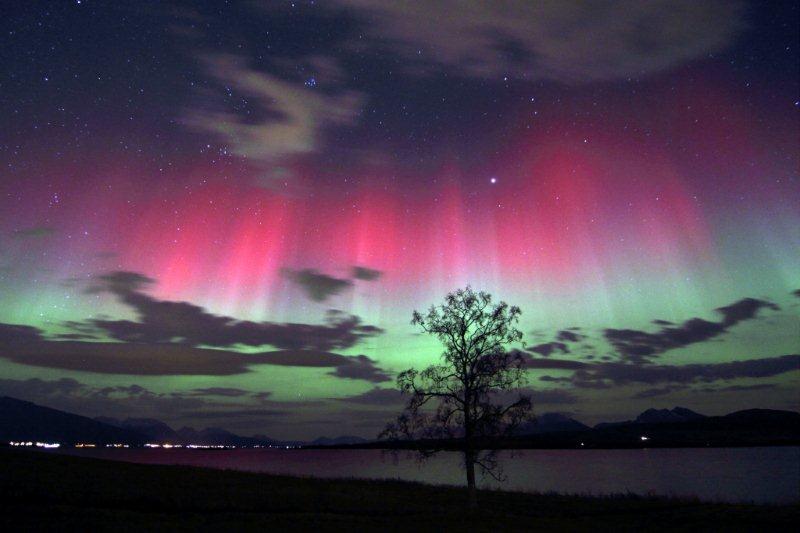
The aurora borealis is common in the Arctic and occasionally visible at lower latitudes in times of high solar activity. During the 1859 solar storm, it was visible in the tropics. A newspaper in Hawaii reported that the view in the Honolulu sky was almost as if they had been standing in the Arctic.
Astronomers to the rescue
Amid all this chaos, two amateur astronomers had their telescopes trained on an apparently innocent astronomical bystander: the Sun. Richard Carrington and Richard Hodgson were hunting sunspots. Sunspots are highly magnetic regions of cooler material in the light-emitting solar region known as the photosphere. Against the bright background of the Sun, they appear as freckle-like shadows.
During Carrington and Hodgson's separate observations on Sept. 1, two bright lights flared into existence, moved across the Sun's surface in about five minutes, and faded. Judging by the size of the sunspots behind them, they had covered upwards of 56,000 kilometers during the observation. That implied a speed of about 190,000 meters per second.
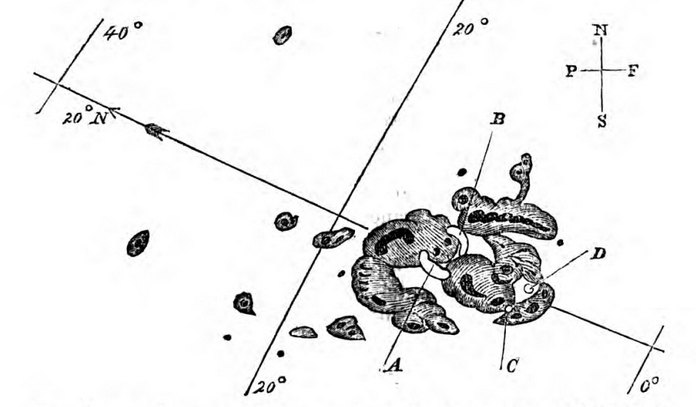
Astonished at what they had witnessed, Carrington and Hodgson both wrote to the Monthly Notices of the Royal Astronomical Society. They didn't know it, but they had just observed the solar flare that triggered the most energetic coronal mass ejection in history -- a show-stopping solar storm that had lit up the heavens with the aurora. Now that coronal mass ejection, a glob of energized particles, was traveling toward the Earth at breakneck speed.
On Sept. 2, it hit the Earth.
The living telegraph
By 1859, 200,000 kilometers of telegraph lines covered the surface of the Earth. Governing everything from supply chains to military decisions to familial correspondence, the telegraph system held together a rapidly globalizing world. When the coronal mass ejection hit and triggered another powerful auroral storm, operators struggled to hold the system together.
Before, the electrified air had interfered with the current produced by the telegraphs' batteries, preventing operators from transmitting. Now telegraphs could send messages -- but not using their own power.
Please cut off your battery entirely from the line for fifteen minutes, an operator in Boston transmitted to his colleague in Maine.
Will do so. It is now disconnected.
The Boston operator disconnected his battery as well. Now the only current powering his telegraph was flowing through the air because of the geomagnetic storm.
How do you receive my writing?
Better than with our batteries on, replied the Maine operator.
Faced with such a strong variable current, many other operators abandoned their batteries in favor of this natural source of power. But it wasn't merely odd, it was dangerous. An operator in New York, struggling with the telegraph's electromagnet, accidentally walked into a wire grounding the system. A spark crackled between his forehead and the wire, and he reeled from the electric shock.
In the 1850s, workers had to be prosaic. The operator, figuratively and literally stunned, worked through the rest of his shift.
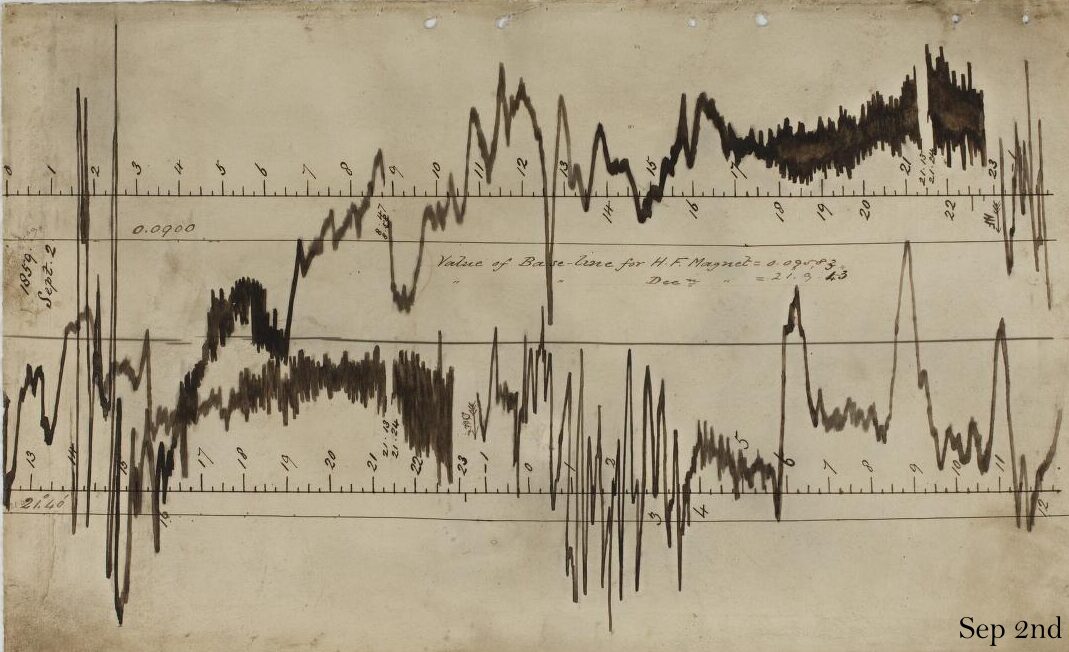
What is a solar storm?
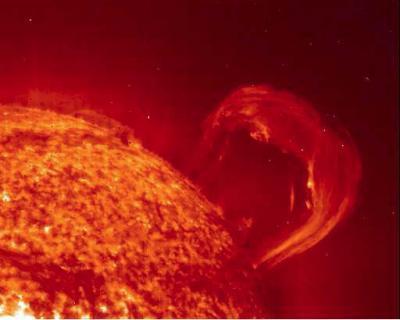
The Sun doesn't rotate like the Earth. Instead of a static surface, where every point completes a rotation in the same amount of time, different parts of the surface revolve at different angular speeds. The material in the outer layers of the Sun (the parts emitting the light we see) constantly seethes, bubbles, and tears apart as magnetic field lines contort around each other. When energy builds up sufficiently high in the charged plasma, the magnetic field lines snap into a new configuration. The stored energy explodes with forces equaling billions of hydrogen bombs.
Solar storms are bad news if the coronal mass ejections they produce hit sensitive electrical equipment because they carry charged particles with erratic electric and magnetic fields. But there are a lot of directions for coronal mass ejections to travel other than toward the Earth. Most of the time, we're safe.
Near misses
Humans have been lucky. The solar flare of 1859, now known as the Carrington Event, hit when tamed electricity was in its infancy. Still, a NASA study estimated that losses totaled a minimum of 10 million of today's dollars. The only modern coronal mass ejection to match the power of the Carrington Event, in 2012, missed the Earth by nine days.
The closest we've come to a modern equivalent was in 1972 when a series of flares followed by a high-speed coronal mass ejection hit the Earth. Shockwaves knocked some satellites out of the Earth's magnetic field, which shields them from the most destructive of interplanetary particles.
One satellite suffered two years of deterioration in two days. Another recorded lights in the Antarctic that did not exist. At least one U.S. military satellite lost all power and never returned to life.
On the surface of the Earth, areas exposed to the Sun lost signal in the crucial high-frequency radio bandwidths that transmit communications. A series of geological features and pure happenstance protected most of North America from electrical blackouts, but areas of the Midwest lost power.
Disturbingly, the solar storm triggered at least a dozen U.S. mines placed in the waters around Hon La, an island off the southern coast of Vietnam. Through sheer luck, no one was injured.

The Y2K of space physics
Y2K, a prophesied breakdown in computing technology because of clocks switching from the second to the third millennium in the year 2000, had one blessing: a countdown. Solar storms are less predictable.
Solar activity flows on an 11-year cycle with minima and maxima. We can guess when the most energetic events might occur, but we lack the concrete knowledge that most effectively drives government disaster funding. Unlike other threats from outer space such as massive asteroids, we don't even know the full effects of a severe solar storm.
What we do know is that a particularly violent solar storm would impair or even dismantle GPS satellites. This would cause positioning errors that might be inconvenient to a driver on a back road but potentially deadly for airplanes or military technology. Blackouts could roll across Sun-facing regions, dismantling key infrastructure and forcing a reliance on generators. Radio communications might be unusable for days.
Studies on the societal consequences of such an event are minimal. We can look to the past for hints, but global dependence on electromagnetic technologies has increased exponentially since the 1972 storm.
Unlike many natural disasters, solar storms pose the greatest threat to highly developed regions with substantial infrastructure. This 2016 composite map of the Earth's night lights shows regions of high electrical activity, those that would be most affected by a solar storm.
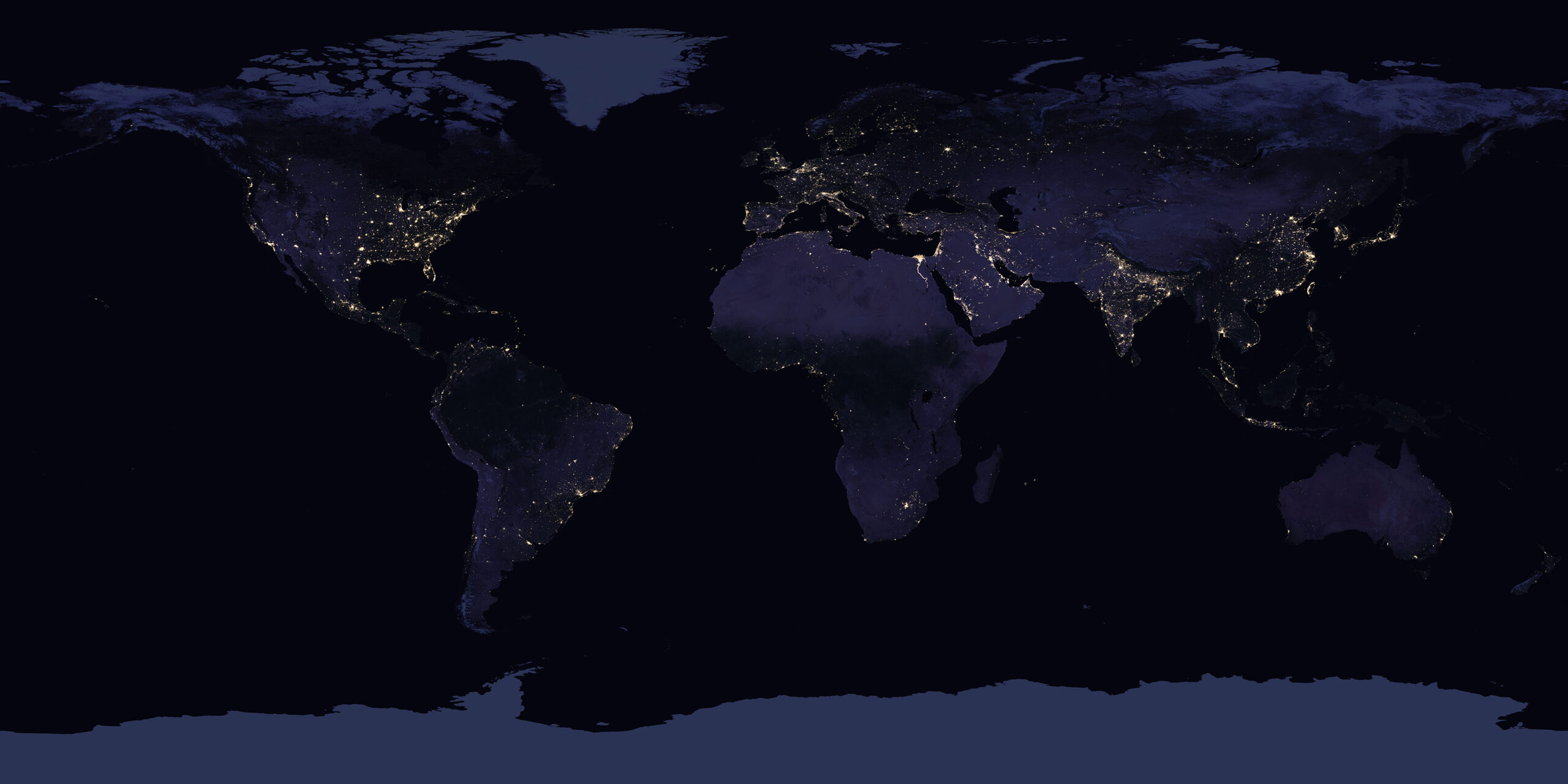
The solar flare at the end of the tunnel
Despite the unpredictability of space weather and its effects, scientists and disaster mitigation officials are doing what they can to prepare. Emerging technologies such as Artificial Intelligence offer improved forecasting of solar storms. The U.S. National Air and Space Administration has worked with the Department of Homeland Security's Critical Infrastructure department to develop protocols for mitigating solar storm damage.
As for the everyday person? The National Oceanic and Atmospheric Administration recommends packing an emergency bag for solar storms just the way one would for a hurricane or tornado.
It's just weather, after all.
Three different robotic explorers made planetary news last week. The discoveries of Perseverance, Curiosity, and Chang'e 5 are reshaping our understanding of conditions on Mars and the moon billions of years ago. From possible microbial signatures to extraterrestrial water records, here are the latest insights from outer space.
Possible Martian biosignatures
There's no debate over whether life exists off Earth. Without a doubt, it does. The question is: Does any life exist off Earth that we didn't put there?
While earthly microbial hitchhikers from probes gallivant around the moon, a white-striped rock on Mars might hold traces of true Martians -- now long dead. On Thursday, NASA announced that the Perseverance rover had discovered the rock in question in Neretva Vallis.
Nowadays, Neretva Vallis is a barren riverbed of dust and rocks. But three billion years ago, it poured water into a lake at the dry crater bed known as Jezero Crater. It's here that Perseverance found the strange rock. Somewhat confusingly, the NASA team named the rock itself Cheyava Falls, after the tallest waterfall in the Grand Canyon.
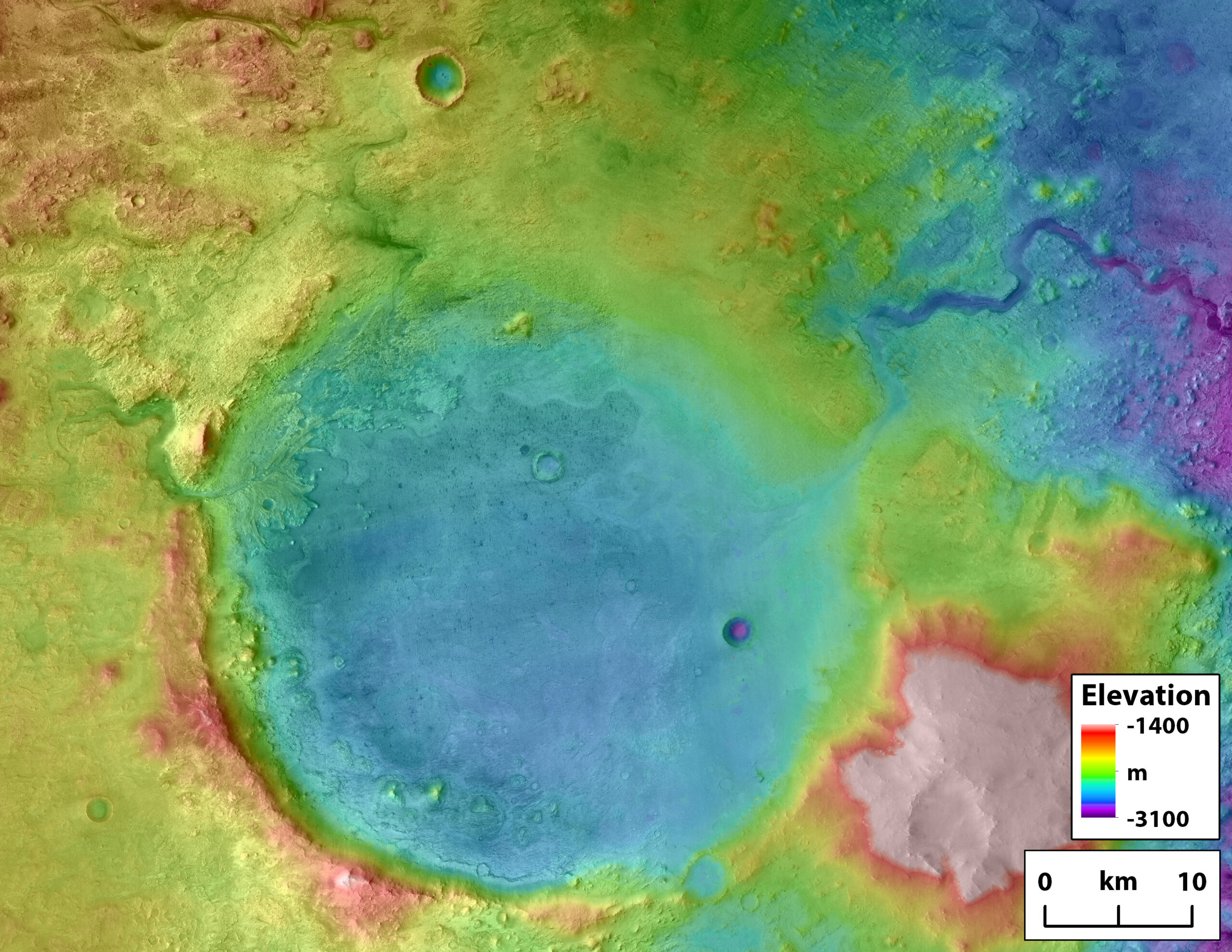
The chemistry of the rock suggests a perfect climate for ancient life. Streaks of calcium sulfate run over it, hinting that it used to be submerged in flowing water.
Organic compounds also dot the surface of the rock. These carbon-bearing molecules were vital to the formation of life on Earth. Astronomers have identified them in the earliest stages of star formation and in comets, but we rarely see them on Mars. Their presence in this rock adds another of life's building blocks to our picture of ancient Neretva Vallis.
Leopard spots
And then there are the "leopard spots." That's what the Perseverance team is calling the little white dots with black rings containing iron phosphate. The leopard spots might have formed through the reaction of hematite and organic compounds. On Earth, reactions like this fed emerging microbial life. Could the same have happened on Mars?
We won't know until we get Perseverance's sample of Cheyava Falls back to Earth, where scientists can examine it in a lab for subsurface microbial fossils. But Perseverance's sample return mission isn't a certainty. Beset by budget issues, its fate is up to the U.S. Congress. The House of Representatives just passed a draft budget for NASA that included $650 million to get Perseverance's samples back to Earth, but it's likely the Senate will counter with a lower suggestion. Knowledge of life on Mars may depend on terrestrial bureaucracy.
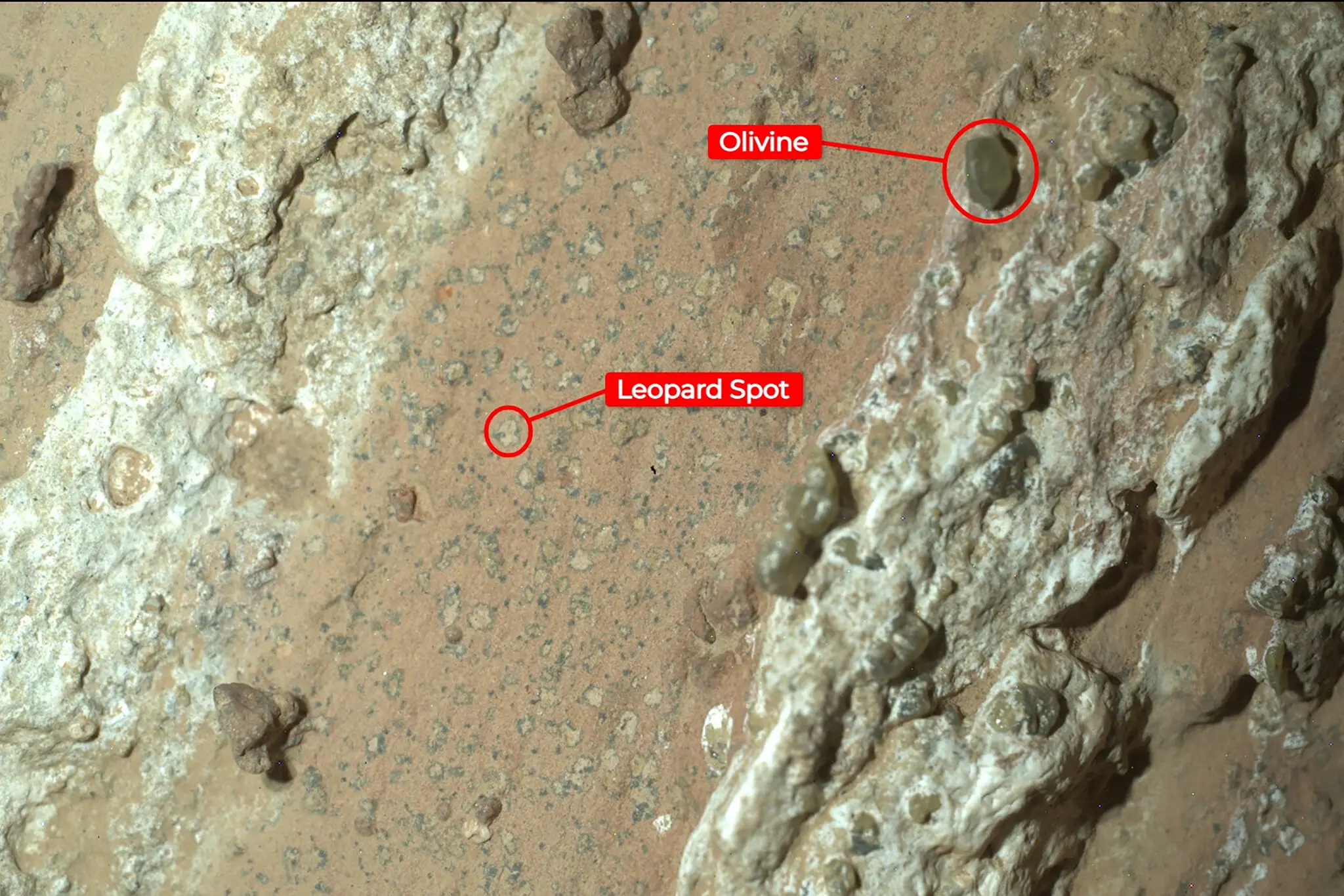
Pure sulfur on Mars
While Perseverance carefully maneuvered the channel leading to an ancient lake, its sibling Curiosity was almost 4,000km away in an old riverbed called Gediz Vallis. Unlike Neretva Vallis, the geological record in Gediz hints at a time when Mars' water was dwindling. Salty compounds line thin, meandering streambeds between sandy hills. Here, Curiosity lurched over an unobtrusive rock that cracked open to reveal crystals of pure yellowish sulfur. When the Curiosity team examined the surroundings, they realized the rover was sitting in a field full of sulfur geodes.
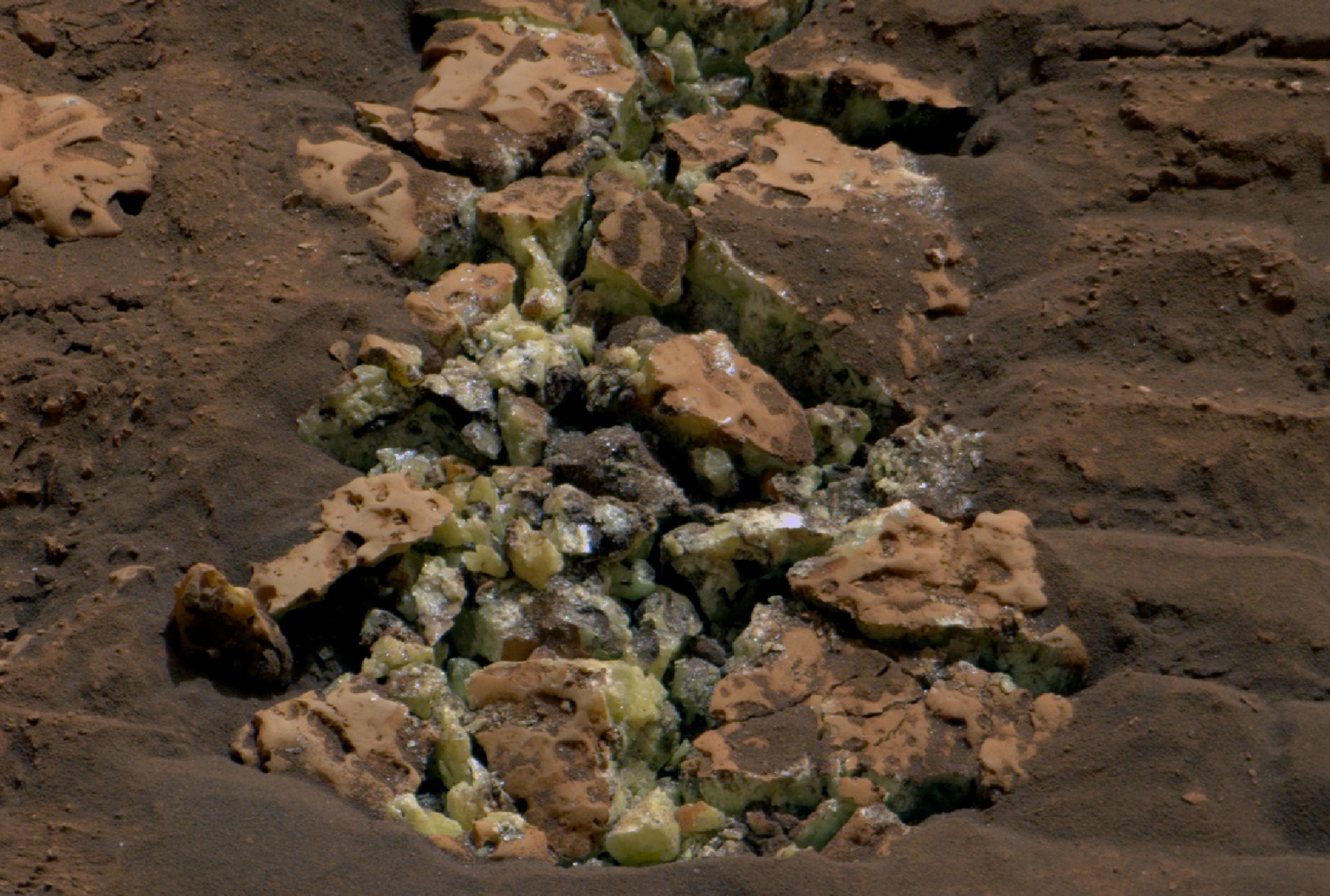
Curiosity was looking for sulfates, salty minerals containing sulfur, and other elements. Sulfates form when water evaporates. But these weren't diluted sulfates from Mars' dwindling streams. This was pure, crystalline sulfur -- and a lot of it. On Earth, most naturally occurring pure sulfur originates in structures called salt domes, which don't appear at all in this region of Mars. So how did it get there? We'll have to wait for more clues as Curiosity charts the history of the last water on Mars.
Chang'e 5 put lunar water on Earth for the first time
A month ago, we covered the China National Space Agency's (CNSA) retrieval of samples from the dark side of the Moon and what they might indicate about our solar system's history. While we're waiting for news from tests on the far-side samples, near-side samples from the CNSA's previous lunar probe, Chang'e 5, have a story to tell. A team just announced that Chang'e 5's near-side samples contain novograblenovite, a volcanic mineral that is 41% water by weight.

No previous lunar samples had water molecules in them. The Apollo 11 samples contained hydroxide (an oxygen atom bonded with a hydrogen ion), a byproduct of water molecules breaking apart. That, along with remote observations of water ice at the poles, confirmed that the moon is not devoid of water like we long thought. But we've never before been able to examine lunar water in labs on Earth.
Water isn't all the samples showed. The minerals were rich in ammonium, which may have formed when lava on the surface reacted with water, hydrogen chloride, and ammonia gas. Taken together, these findings suggest a steamy magma ocean on the early moon, replete with water in different states.
A changing picture
For many decades, observations of nearby planetary bodies painted a bleak picture of our corner of the solar system. Not only did Earthlings appear to be alone in the present, but the conditions on our moon and neighboring planets seemed antithetical even to past extraterrestrial life.
That picture is changing. It started with the 1972 Mariner mission, which showed dry riverbeds on the surface of Mars. The more our abilities improve in aeronautics and remote sensing, the more we're learning about the time over three billion years ago when Mars looked a lot more like a young Earth.
The moon, long thought to be utterly dry, also tells a more complicated story the better we get at listening. Water and ammonia vapor may have been prevalent, interacting with a magma ocean and leaving traces all over the moon's surface. With low oxygen and high volcanic activity, this picture of the moon takes us back even further to the first 500 million years of the Earth's history.
The Earth may still be alone. But at least it hasn't always been special.
Let's cut straight to the bad news: you can't hike to the James Webb Space Telescope. The air's a bit too thin, and the temperature doesn't bear mentioning. But while astronomy's flashiest telescopes orbit the Earth, many on the ground are far more accessible than you might think. We've curated a list of observatories to visit that combine stunning natural landscapes with cutting-edge science.
A note: many observatories not on this list feature striking high-altitude vistas. However, observatory boards are understandably reluctant to promote tourism for telescopes that sit at the same altitude as Everest Base Camp. Interested in trekking up to the Atacama Large Millimeter Array in Chile or the Institut de radioastronomie millimétrique in Spain? We salute you, but you'd have to jump through a lot of hoops.
5. Five-Hundred-Meter Aperture Spherical Telescope (Guizhou, China)

China's radio astronomy community may be young, but it's thriving. The construction of the world's largest telescope cemented China's place in time-domain astronomy -- a sub-field focused on detecting and analyzing high-speed events in the sky. These range from supernovae to the mysterious extragalactic signals known as Fast Radio Bursts.
The Five-hundred-meter Aperture Spherical Telescope, or FAST, rests in a natural sinkhole in mountainous Guizhou province in southwestern China. Unlike most telescopes, it isn't steerable. It looks at the same portion of the sky every day. But its massive collecting area maximizes the light it receives from distant sources, allowing it to probe deep into the universe.
Located a 34-minute drive from China's "astronomy town" of Kedu in Pingtang County, FAST offers all the telescope-based tourism you could want. There's a planetarium, a room where visitors can simulate changing the active surface of the dish to compensate for the atmosphere, and a viewing platform for the dish itself. The only convenient approach to FAST is by car, but many tourists online complain about the 700+ steps to the mountaintop viewing platform -- cementing its place on this list. The weather is temperate and rainy year-round.
4. Palomar Observatory (California, U.S.A.)
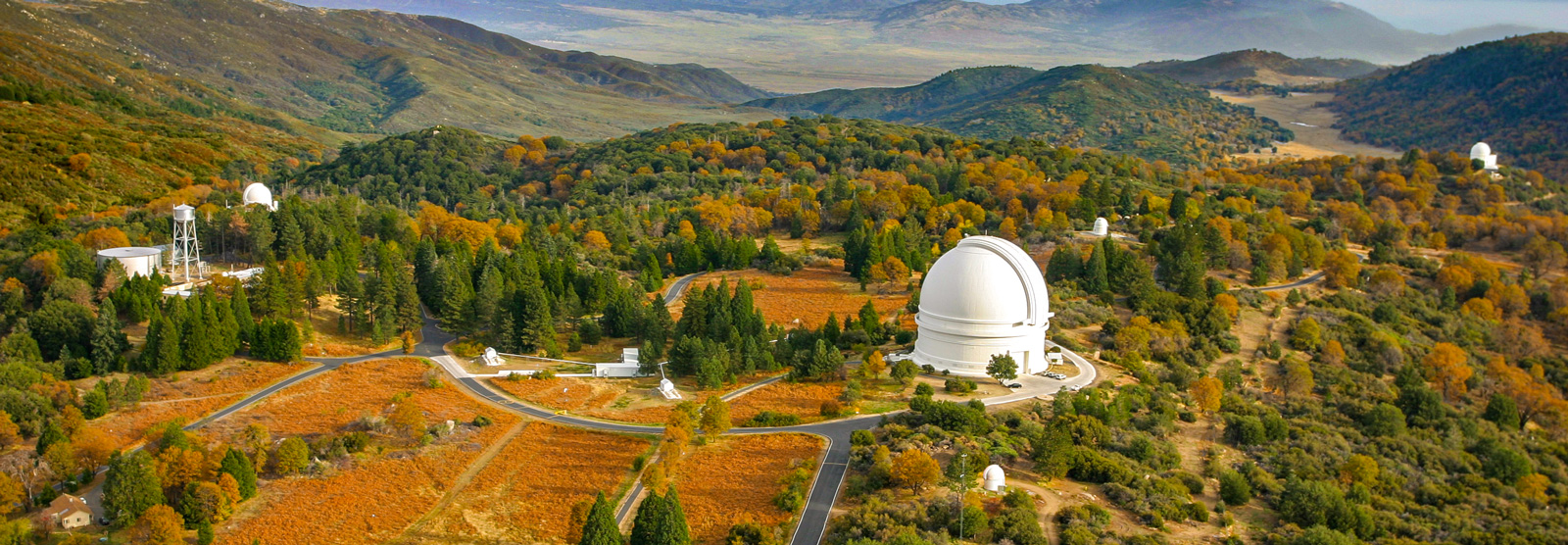
Most powerful, ground-based telescopes observe at radio wavelengths. Radio waves permeate the Earth's atmosphere far more easily than more energetic electromagnetic waves such as infrared or optical.
Palomar Observatory is one of two on this list that observe in the optical and infrared, rather than the radio. Its 200-inch telescope was a marvel of engineering when Caltech founder Gregory Hale built it in the 1930s and 1940s. It finally saw "first light" -- astronomers' term for a telescope's first view of the sky -- in 1949. Astronomers still use the Hale 200" for research.
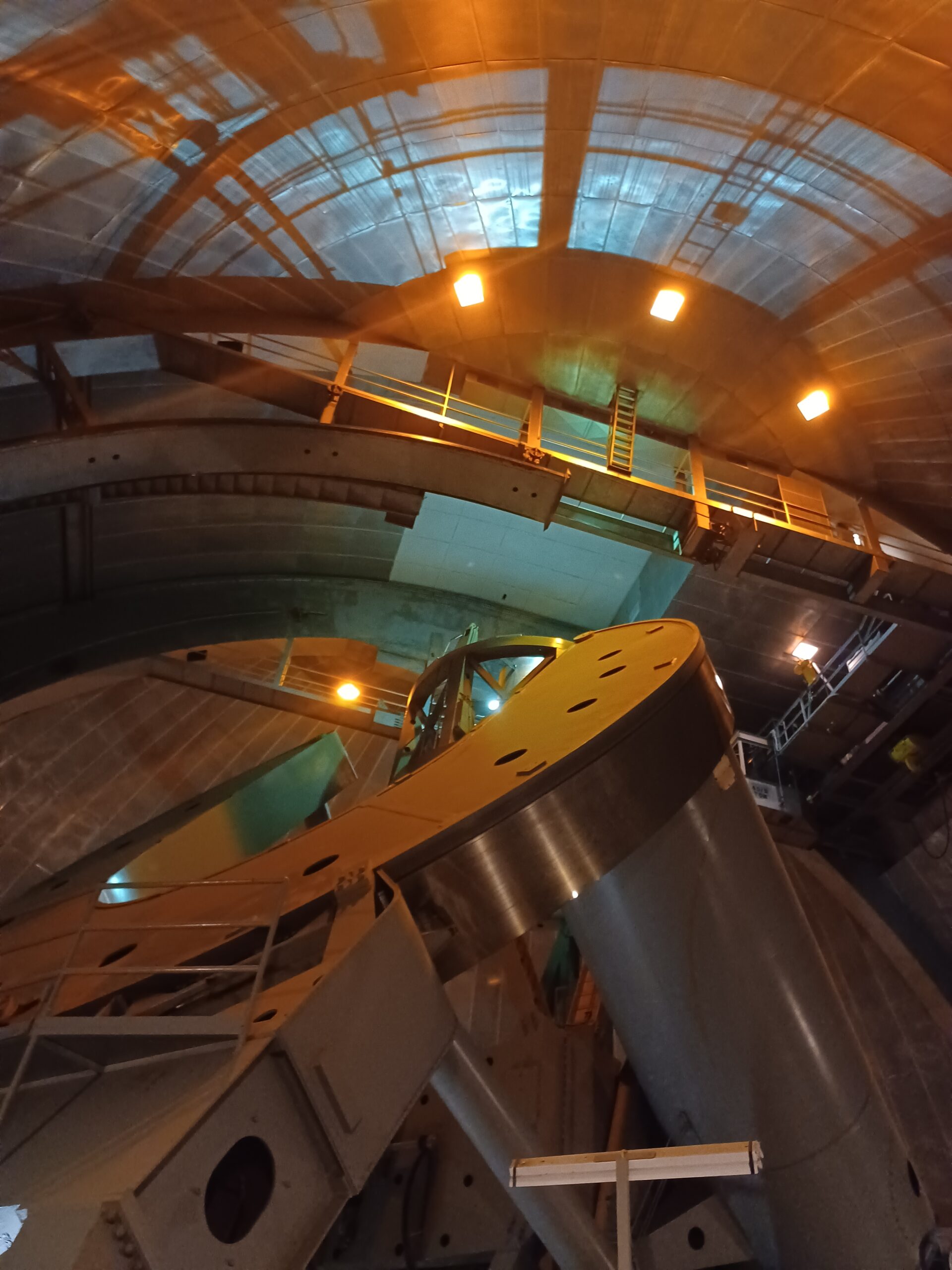
But Palomar isn't on this list just for its foundational place in American astronomy or its charming outreach center. A nine-kilometer trail curls up the mountain through thick forest and culminates at the observatory. The grounds are open to the public, but we also highly recommend taking a tour through the dome and its catwalk, which overlooks the Peninsular Ranges of Southern California.
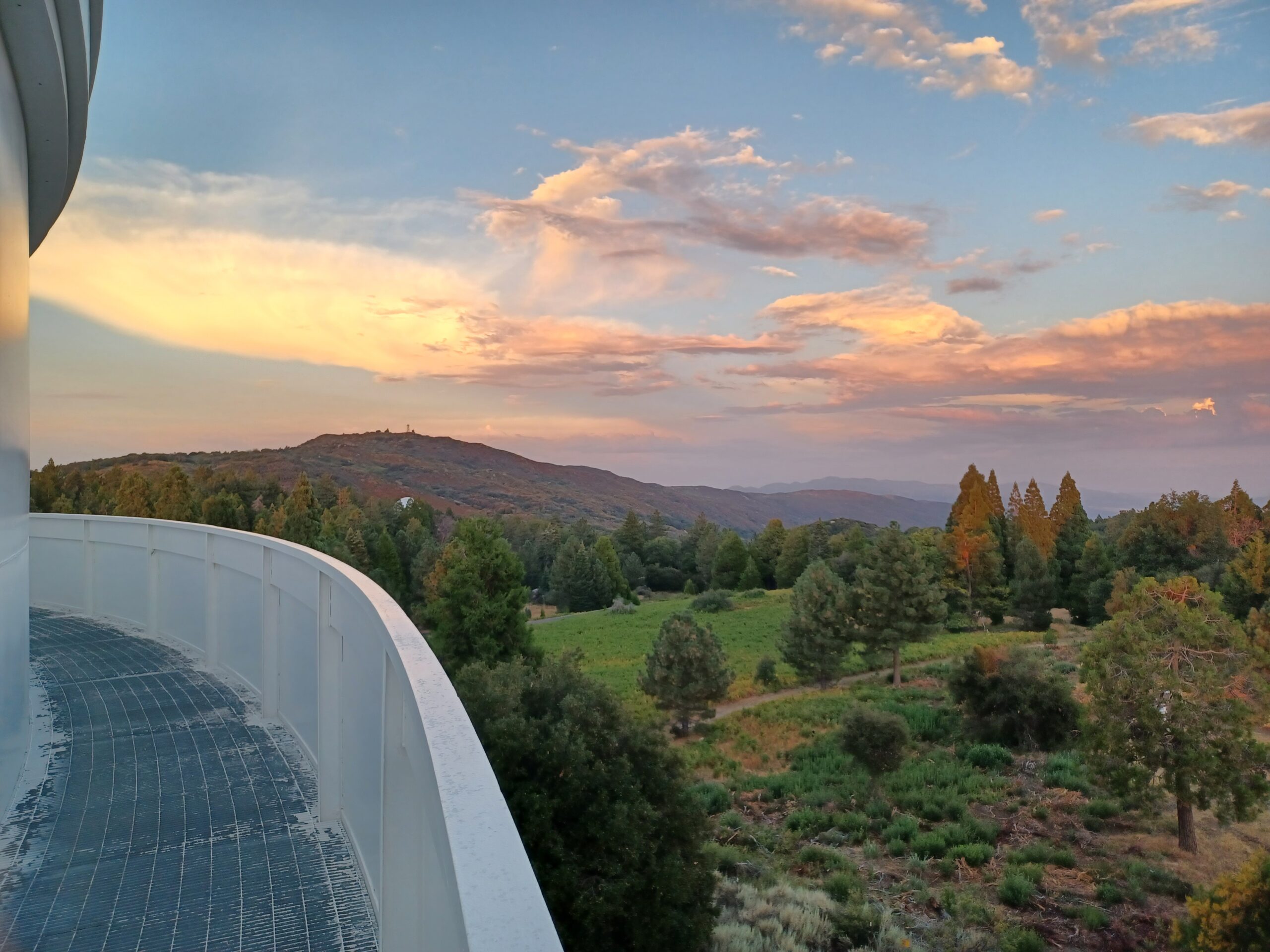
3. Parkes Observatory (New South Wales, Australia)
She's a film star. She's a key player in the 1969 Moon landing. She's in the middle of a sheep paddock. Who is she? None other than the 64-meter Murriyang Telescope at Parkes Observatory.
Because of its superior sensitivity, Murriyang relayed most of the Moon landing footage live to a waiting world. The operators continued to point the dish at the Moon through fierce winds that could have toppled the entire telescope. The 2000 Australian comedy-drama The Dish chronicles the escapades of the operators and their NASA liaison.
Located in rolling farmland right next to Goobang National Park, Parkes Observatory offers both scientific excitement and a route of approach via miles of bush trails. Goobang National Park also has camping sites within hiking distance of the observatory. Make sure to pay attention to heat forecasts, though, and bring lots of water.
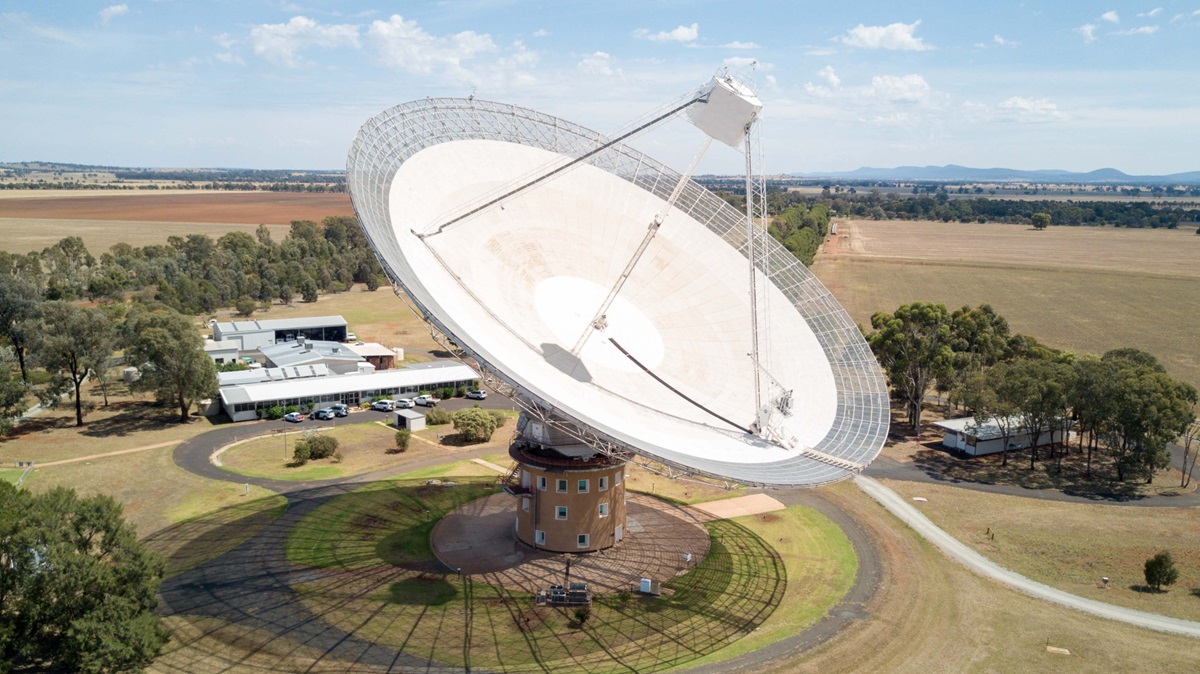
2. Apache Point/Sunspot Solar Observatory (New Mexico, U.S.)
Apache Point Observatory might not be the most powerful telescope out there, but without it, key scientific initiatives would crumble. Perched in the Sacramento Mountains of eastern New Mexico, Apache Point allows self-tours of the grounds. Its neighbor, the unique Sunspot Solar Observatory, boasts a gift shop, a visitor center, and a museum.
Trails run up and down the mountain, linking every telescope with scenic lookouts and smooth running paths. For the most ambitious, a 56km double-track path runs from the nearby city of Cloudcroft all the way up to the observatory. Elk, mountain lions, and bears are common. Bring bear spray and lots of water. Fortunately, the altitude spares the mountain from the worst of the summer heat.

1. Green Bank Observatory (West Virginia, U.S.A.)
Nestled in the Monongahela National Forest without Wi-Fi or cell service, surrounded by fire towers and overlook points, Green Bank Observatory claims first place on this list. Green Bank hosts a staggering variety of radio telescopes, including the largest steerable telescope in the world.
The National Radio Quiet Zone protects the dishes from radio frequency interference -- and dramatically shapes daily life in the region. The only phones are landlines, and the only internet is Ethernet. Microwaves on site are kept in iron cages to avoid incidents like the peryton detections of the 2010s, when mysterious signals called "perytons" all turned out to be microwaves in observatory breakrooms.
But if you're not a radio-noisy electronic device, you can go just about anywhere at Green Bank Observatory. Visitors can walk the five-kilometer loop from the visitors' center to the 100m dish without any guide or permit. Dogs are welcome. The only fences in place are to stop viewers from standing in the shadow of the dish in case it collapses -- again.
Half a dozen trails circle the observatory itself, and yearly trail-running events start or end at the telescope. Countless more paths and camping sites pepper the massive Monongahela National Forest. And if you're all hiked out by the end of it, we recommend a nice ride on the historic Cass Scenic Railroad.
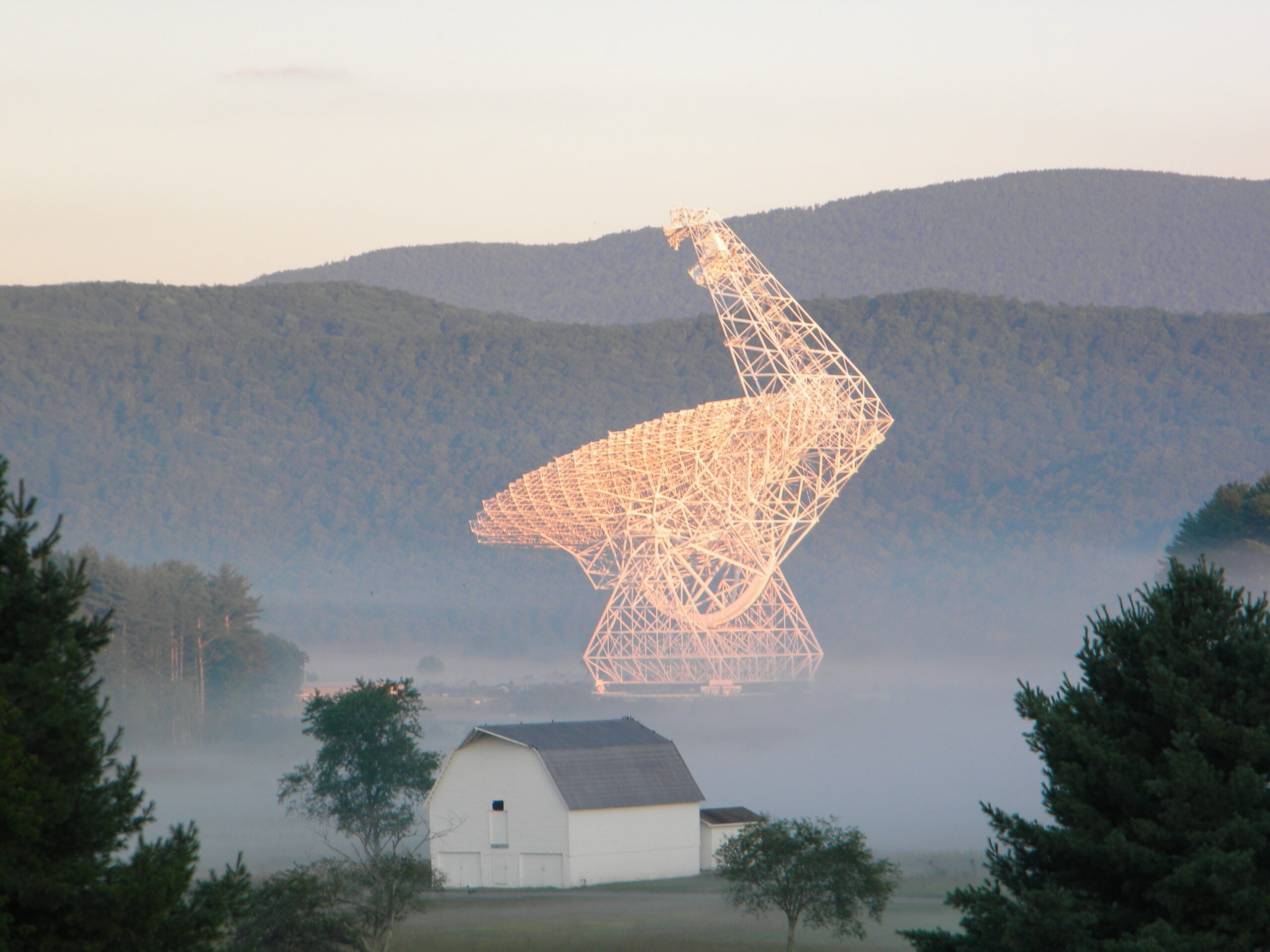
"But what about ____?"
Reasons for exclusion from this list vary dramatically. Some observatories require intense background checks for visitors. Some, like the beautiful Kitt Peak National Observatory, are worth the visit but approachable only by car. In contrast, a 19km trail leads up to Keck Observatory on 4,000m Mauna Kea in Hawaii, but we wouldn't recommend visiting it due to ongoing tensions between the local community and the observatory over telescope development on sacred land.
Some of the most striking high-altitude observatories, like those on the Atacama Plateau in Chile and in the Sierra Nevada mountains of Spain, welcome visitors but discourage approaches on foot due to altitude-related health concerns.
When we asked staff at several high-altitude observatories about hiking up to the telescopes, they were baffled. What kind of person, they questioned, would possibly want to ascend a mountain on foot?
"You guys ready to come out?"
These were the first words spoken in person to the simulated Mars astronauts since they entered Mars Dune Alpha 378 days before.
It had been a challenging year for the four pseudo-astronauts. Could you sleep, eat, and work in a 158-square-meter space with three coworkers for company? What about ration food and oxygen to last a year? And how would a 22-minute delay in communications with the outside world affect your mental health and productivity?
NASA wanted to explore those questions on the first of several planned simulated Mars missions, which concluded on Saturday. Astronaut and flight operations deputy director Kjell Lindgren welcomed the participants back to Earth by knocking on the door of their habitat, sparing them the six- to nine-month journey by rocket that real astronauts would endure.
NASA's Crew Health and Performance Exploration Analog (CHAPEA) sounds eerily similar to the ill-fated Biosphere 2 experiments of the 1990s. There, crew members in a capsule ecosystem devolved into vicious factions due to oxygen deprivation and malnutrition. Fortunately, preliminary reports suggest CHAPEA succeeded everywhere Biosphere 2 failed. In fact, the team's physician said the year in the habitat "just kinda [flew] by."

Meet the crew
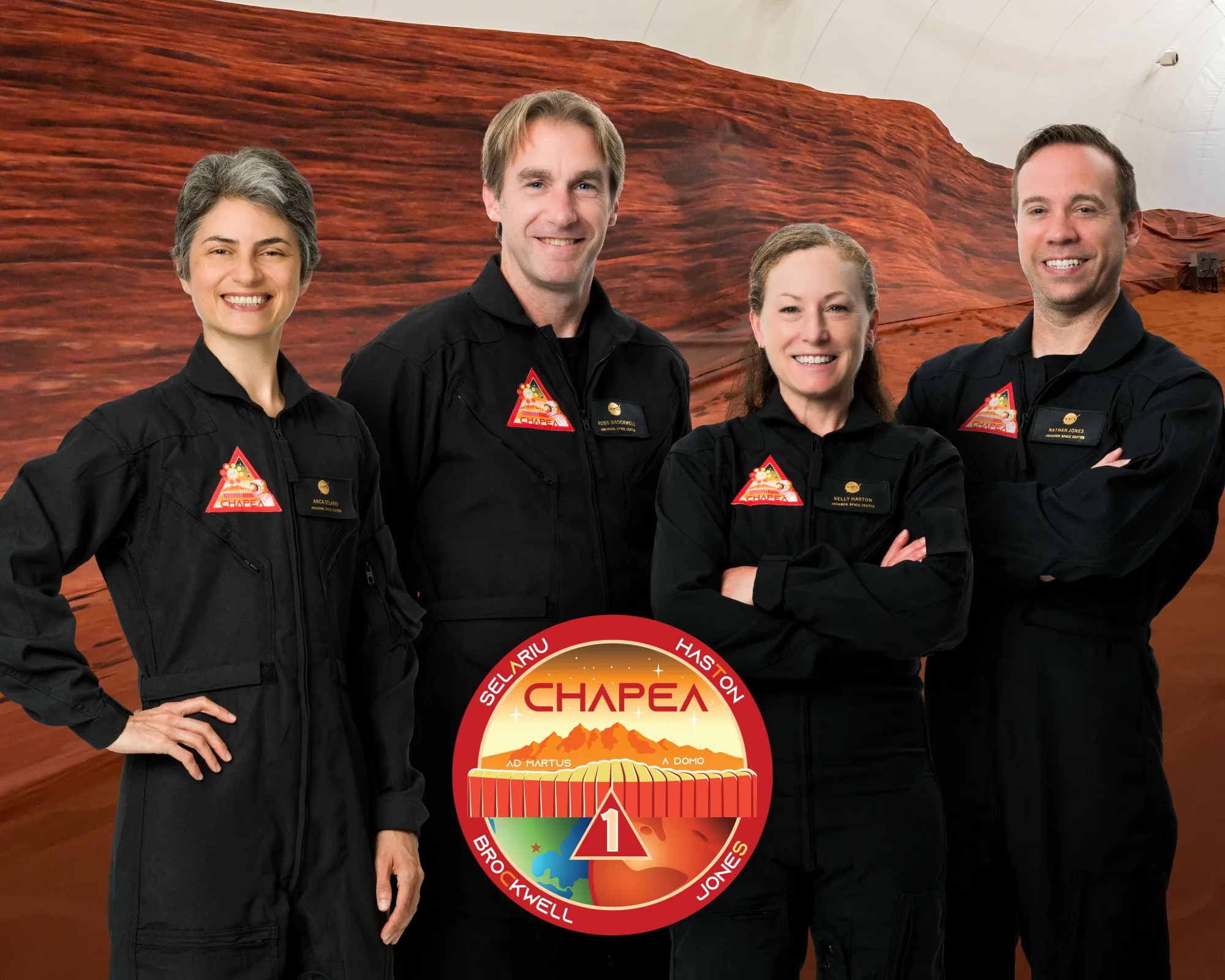
A flight commander, a science officer, a physician, and an engineer: These were the core crew of Mars Dune Alpha, CHAPEA's make-believe habitat.
Commander Kelly Haston is a First Nations Canadian biologist who researches human disease. She received a PhD in biomedical sciences from the University of California at San Francisco, where her work focused on infertility.
Lieutenant Anca Selariu, a U.S. Navy researcher specializing in vaccines and disease, served as the crew's science officer. Originally from Romania, she switched her focus for the duration of CHAPEA from prions -- a type of problem protein -- to the adverse effects of Mars exploration.
The team's physician, Nathan Jones, is an emergency medicine specialist with a background in molecular biology. He was working at a hospital in Illinois when he saw an advertisement for the program and applied. "I didn’t expect to hear anything back. I mean, it’s NASA," he told ABC 20.
Finally, Ross Brockwell is a structural engineer from Virginia who worked as an operations manager, planning commissioner, and infrastructure specialist before CHAPEA.
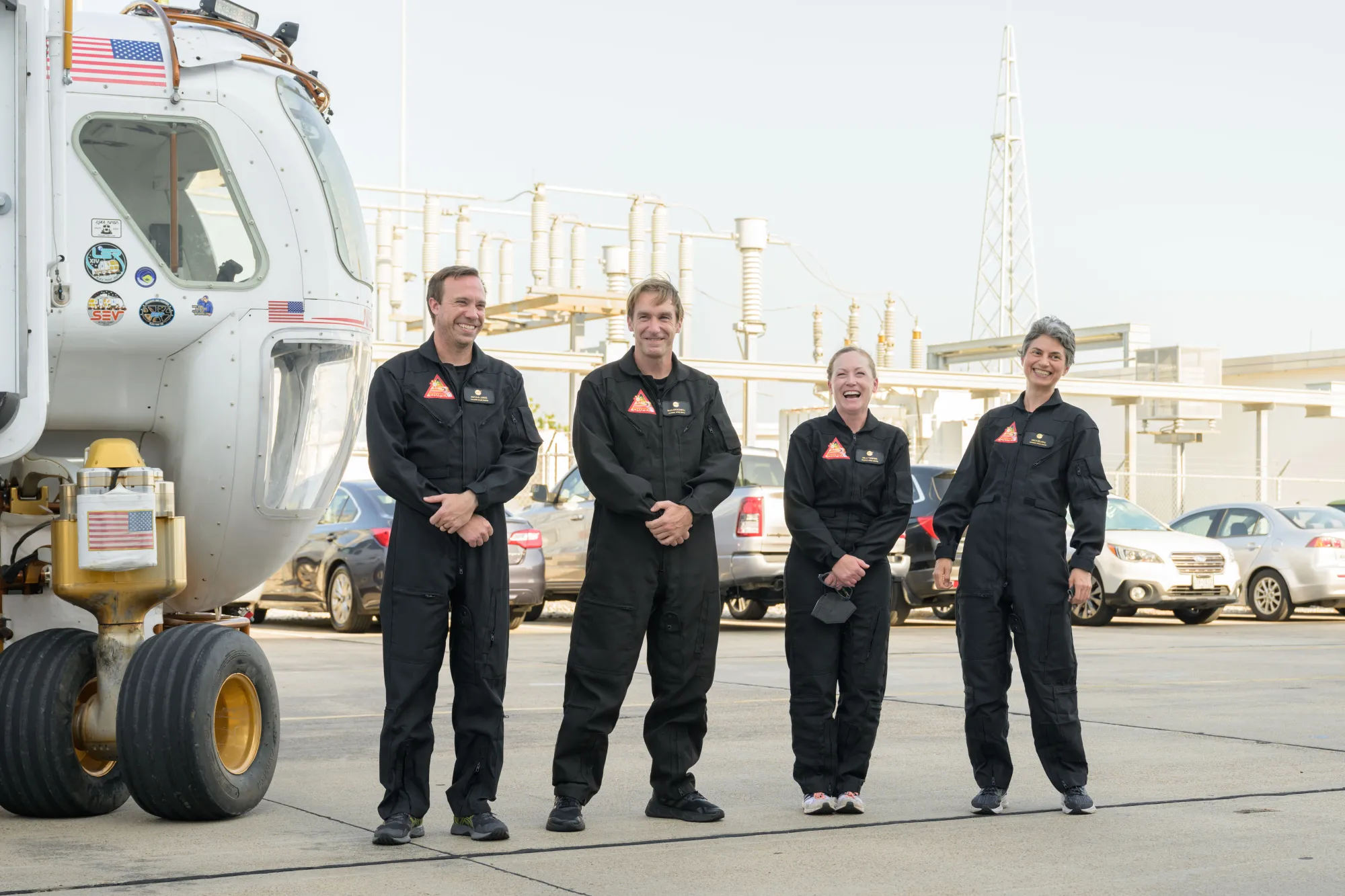
But the full crew was larger than just the four people living in isolation. Countless scientists, engineers, and technicians worked around the clock to prepare and maintain the experiment.
Life on Mars
Astronauts on Mars would confront a variety of threats to their well-being, both physical and mental. NASA's Human Health and Performance Directorate designed CHAPEA to test the effects of a limited diet and long-term confinement on human performance. Studies of scientists overwintering in Antarctica and participants in the Russian-Chinese-European Mars500 analog mission indicate that basic functions begin to deteriorate after a long time in confinement. NASA wants to find ways to mitigate this before sending astronauts on a real Mars mission.
Unlike past analog space missions, CHAPEA emphasized nutrition. The crew supplemented their pre-packed rations with vegetables and fruits they grew themselves. They also trialed different gardening techniques in a Mars-like environment.
The outside team even tested the crew with manufactured problems such as communication delays. In her post-mission remarks, Director of Engineering Julie White hinted that the crew also dealt with unplanned issues that had arisen throughout the mission. It's not clear yet what those were.

"Because it's possible"
Now back in the real world, the astronauts grinned at their audience. Two of them donned masks, as astronauts coming from Mars would do. Haston stepped up to the microphone to thank everyone involved in CHAPEA and then addressed her family. "I'm so sorry I wasn't there for you this year."
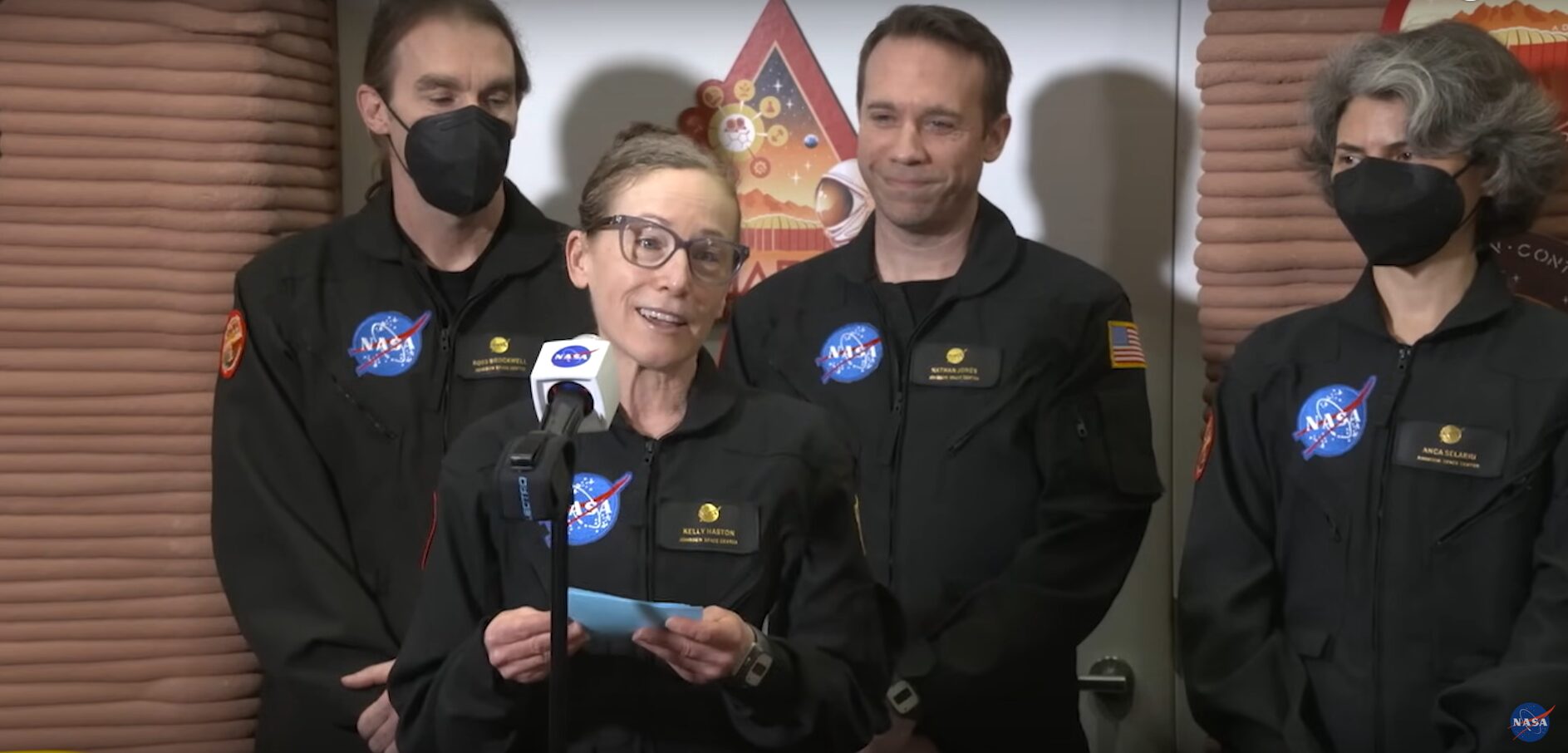
Ross Brockwell, the structural engineer, was particularly grateful toward his crewmates. "Thanks for tolerating my experiment in hair science."
"Wow, that went by quickly," said team physician Nathan Jones. "I really hope I don't cry standing up here in front of all of you. And as a physician, I'm so glad that my life events led me here instead of being a proctologist."
Finally, science officer Anca Selariu spoke. Many people, she said, had asked her, "What's the obsession with Mars? Why go to Mars?" She paraphrased George Mallory's snappy retort to a journalist who asked why he wanted to climb Everest. "Because it's possible."
What's next?
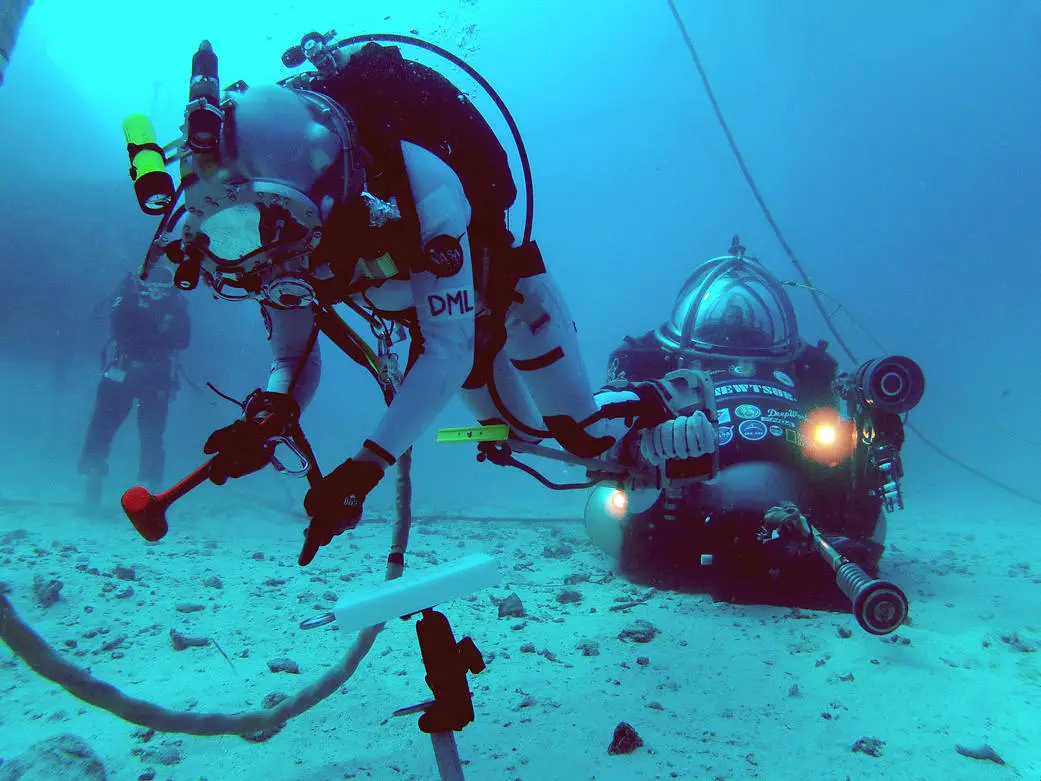
NASA hasn't yet reported on the scientific results, but with another two missions slated for 2025 and 2027, CHAPEA is far from over. Applications are closed for the 2025 mission, but if you're a U.S. resident with a STEM (science, technology, engineering, or math) degree who fancies 378 days in an enclosed space with three strangers, keep an eye out for the 2027 call for applicants.
And while CHAPEA may be the longest of NASA's analog missions, it isn't the only one. Interested in a simulated rocket trip to Mars? What about a three-week stay at an underwater research station? All of NASA's analog missions test participants' reactions to common hazards of space exploration. Alongside confinement and restricted nutrition, these include changes in gravity, isolation, and space radiation.
NASA and other space agencies around the world are working to lessen these risks, but one thing is for sure: If humans make it to Mars, the experience will be a lot closer to Andy Weir's obsessively scientific nail-biter The Martian than to a Star Trek space opera.
On Tuesday, a strange bell-shaped casket floated gently down onto the plains of Inner Mongolia. It came from outer space and carried rocks from the far side of the Moon.

The China National Space Administration successfully retrieved the payload, which their lunar probe Chang'e 6, named after the Chinese moon goddess, sent back to Earth in a return module.
The success of their five previous Chang'e probes highlights the progression of the Chinese Lunar Exploration Program from orbital satellites to sample return missions in just 13 years. But Chang'e 6 broke new ground. This is the first time in history that humans have collected rocks from the Moon's "dark" side.
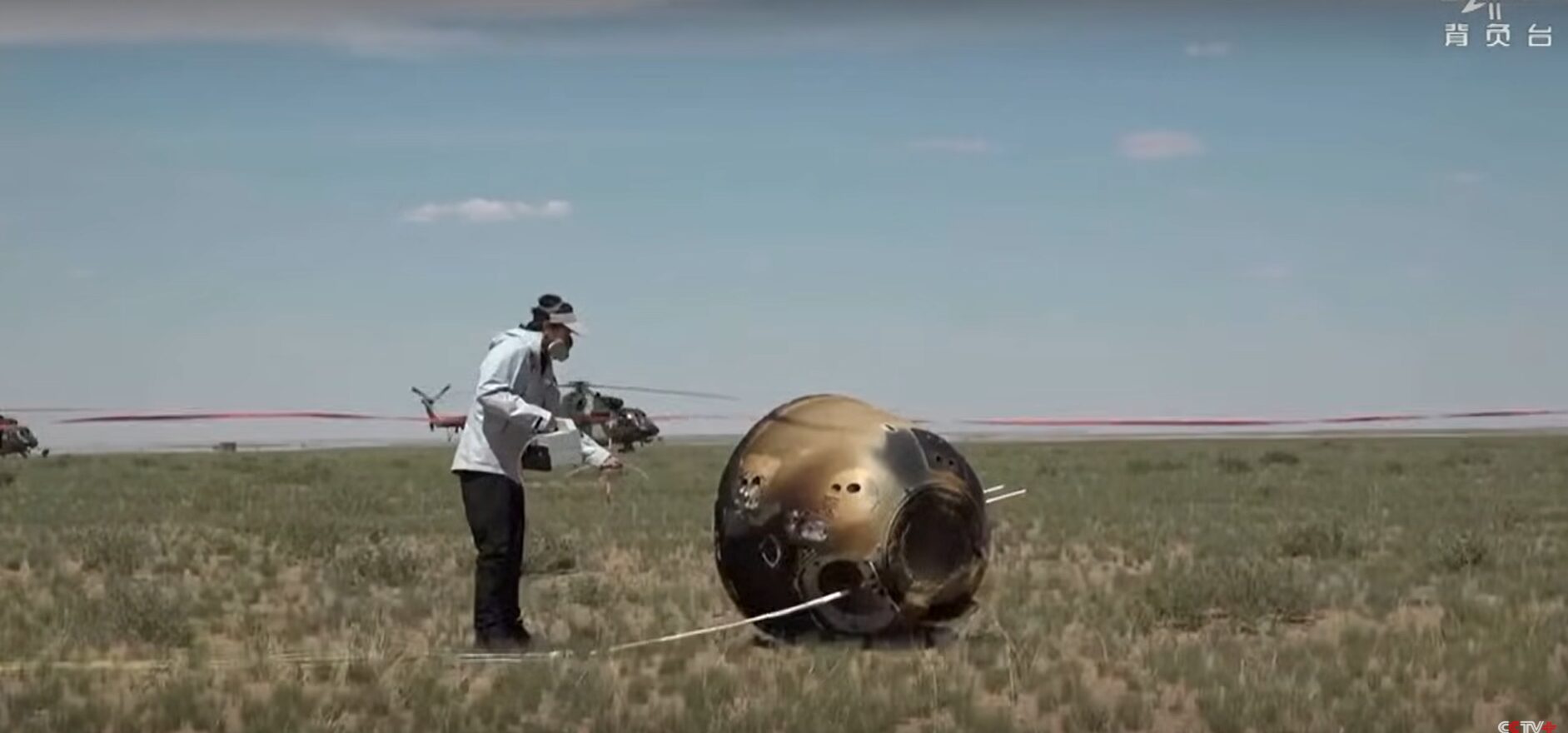
What actually is the "dark" side of the Moon?
The Moon doesn't orbit the Earth like the Earth orbits the Sun. Relative to the Sun, the Earth spins around its own axis every 24 hours, giving rise to day and night. But only one side of the Moon ever faces the Earth. The phases of the Moon depend on how much of the near side is exposed to sunlight.
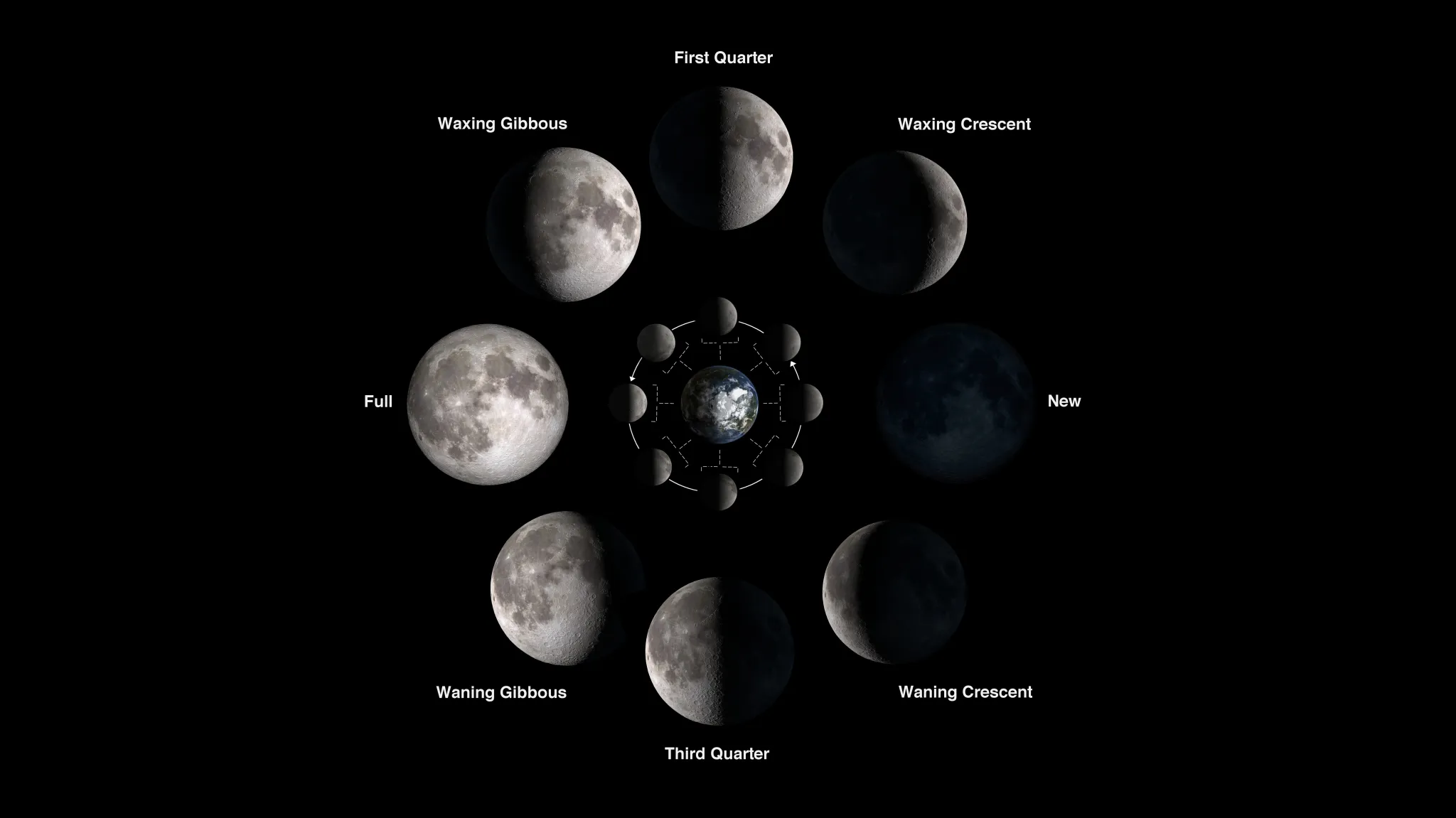
We never see the far side. This doesn't mean it's actually dark -- it gets about as much sunlight as the near side. But other processes create stark differences between the two sides.
Astronomers call orbits like the Moon's, where one side of an orbiting body always faces the center, "tidally locked." Tidal locking affects different parts of the locked object differently. For instance, since one side of the Moon is always closer to the Earth, it experiences a higher gravitational pull than the far side. This distortion stretches and chafes the mantle, or semi-molten middle layer. The frictional heat produced increases seismological and volcanic activity.
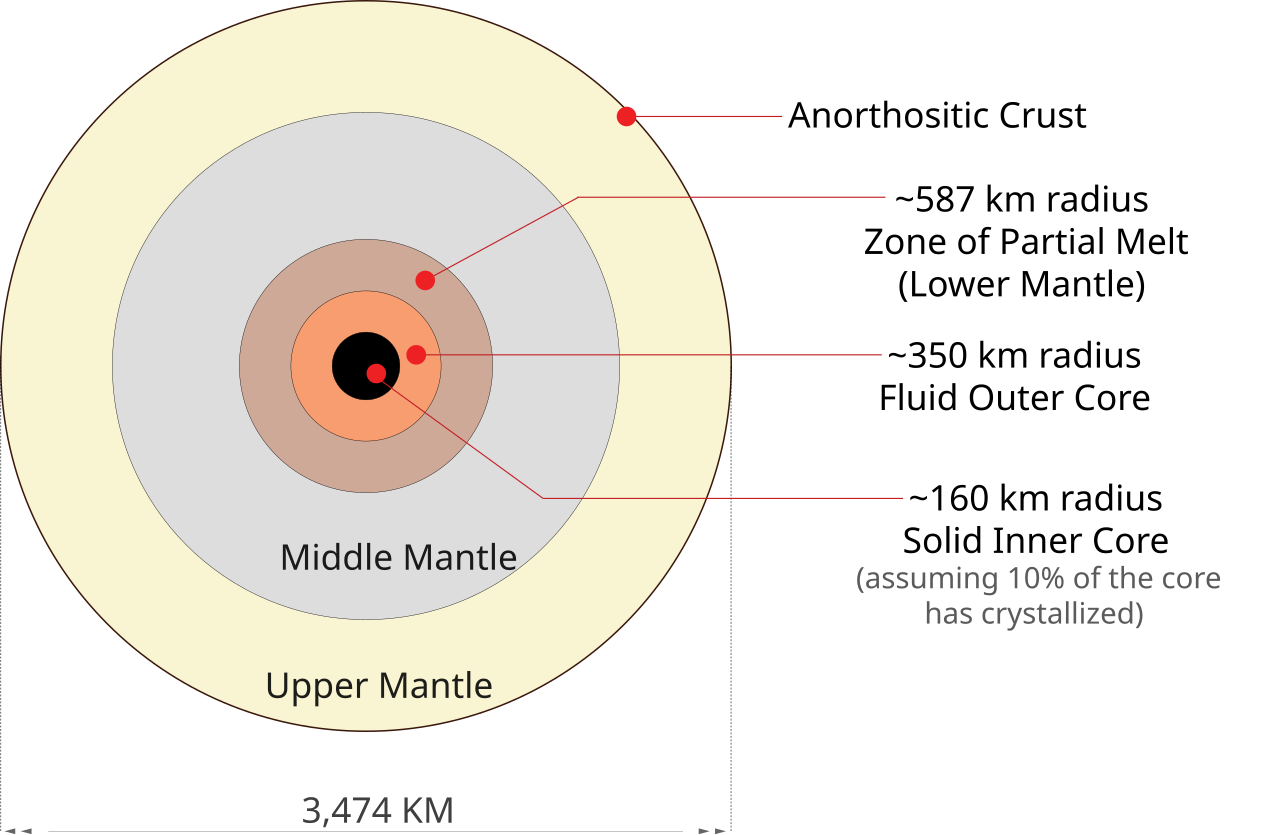
The tidal deformation of the Moon has caused the near side to be more volcanically active, with a thinner crust, and composed of different elements than the far side. The near side also received substantial radiation from the young, hot Earth during its formation, before both bodies cooled by hundreds of degrees. Because of this, the near side may have solidified much later than the far side.
How did the surface of the far side form?
The Moon is the best-studied extraterrestrial body in our universe, and planetary scientists know a lot about its far side. But even the best remote observations can't compare to physical data. When the Apollo missions retrieved rock samples from the near side, geochemical analysis cast into doubt the long-held model of crust formation via the solidification of a magma ocean. Rather, the wildly varying ages of certain rocks suggested a more chaotic process.
Exactly what that process was continues to be a matter for debate. In April, researchers at the University of Arizona found that most of the original magma ocean may have sunk below the surface early in the Moon's formation history. This magma then erupted on the near side in volcanic flows. But how old is the far side crust, and how did it form? The Chang'e 6 samples may reveal this history.
An ancient impact crater
The far side is interesting for another reason: the largest asteroid ever to hit the Moon slammed into it over four billion years ago. It left a massive impact crater called the South Pole-Aitken Basin. Despite this massive shock, volcanic activity was minimal. Unlike the volcanic, magma-scarred craters on the near side, the South Pole-Aitken basin preserves a near-perfect record of the initial impact.
Geological simulations suggest that because the near side of the Moon was hotter, asteroids sank deeper into the molten crust than on the solid far side, leaving less of a scar. That could be why the far side is littered with asteroid craters, even though both sides are equally susceptible to impacts. Since Chang'e 6 collected samples in the South Pole-Aitken Basin itself, analysis may confirm the sinking asteroid theory -- or hint at something else.
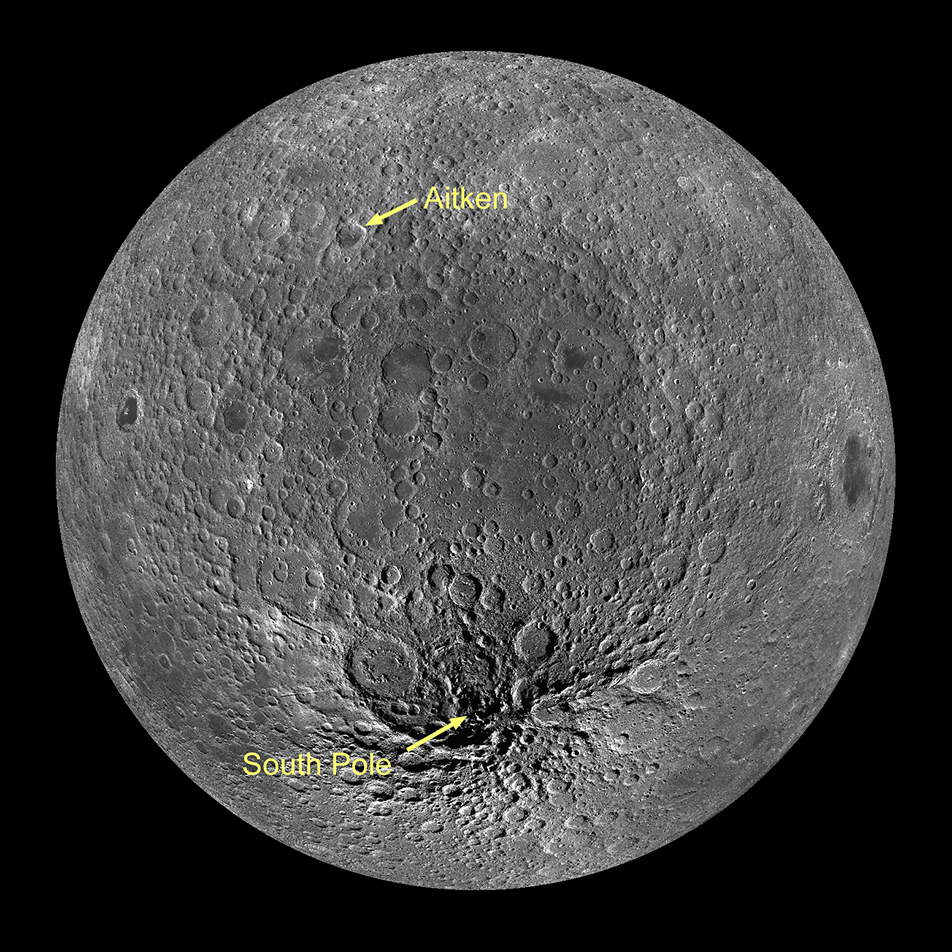
The Moon tells the Earth's history
The geology of the far side not only expands the story of the Moon's formation but also offers clues about the conditions in the early Solar System and the Earth of 4 to 4.5 billion years ago.
The Moon probably formed when a protoplanet called Theia collided with the young Earth at tremendous speeds. Although Theia sank and merged with the Earth's core, the impact shot debris from the surface of both Theia and the Earth into orbit. Over time, the debris coalesced into one body, the Moon, in the same way that the Earth formed from the material around the nascent Sun.

The highly active surface of the Earth and the effects of an oxygen-rich atmosphere have obscured the traces of its early history. Only a few massive craters remain to hint at asteroid impacts. The current crust is much younger than the Earth itself.
But we know from lunar observations that despite the scant geological record, asteroids constantly bombarded the young Earth, throwing debris into orbit and dredging up magma from deep in the mantle. Before the formation of an atmosphere, cosmic rays drenched the surface in ionizing radiation hundreds of times as intense as what we experience today. And the whole planet was so hot it could melt rock from tens of thousands of kilometers away.
Whatever Chang'e 6 reveals about the Moon, it will tell us something about our own home as well.
In 1745, gravity finally caught up to the inventor Johann Bessler. After a career creating mysterious wheels that defied its pull, he fell to his death from a windmill.
He was destitute, not long out of jail for heresy, and his wife had left him. His inventions had baffled the greatest minds of his generation, and now his death left the world with a question that appeared unsolvable. How had one man in the early decades of the 18th century made a wheel that never stopped spinning? Or had it all been a con?

Bessler arrived on a stage perfectly set for scientific deception. A vicious feud between leading mathematicians Isaac Newton and Gottfried Leibniz in the early 18th century had split the physics world into factions. The feud originated in a debate over who had invented calculus. It turned out later that both had come up with it independently. But at the time, it spiraled into every aspect of the field, from what kept the planets orbiting the Sun to a messy controversy over momentum and energy.
Amid all the chaos, scientists were apt to leap onto whatever bandwagon might give their side an edge.
"Factionalism meant that scientists spent less time attempting to replicate the empirical results of free-fall experiments and more time interpreting existing results in a way that was favorable to their preferred accounts," says Robert Ziegler, a Ph.D. candidate in Philosophy at the University of Virginia, whose research focuses on Leibniz.
If anyone was an expert at exploiting what scientists wanted to see, it was Johann Bessler.

A questionable backstory
According to a late 18th-century biography of dubious reliability, Bessler's rags-to-riches-to-rags story began in Zittau, where this peasant's son showed such aptitude that he obtained a secondary education. By his own account, he excelled at everything mathematical. Yet after leaving school, he became an itinerant jack-of-all-trades, dabbling in everything from watchmaking to medicine.
His skills did not win him stability. Starving, he found sporadic work as a soldier and even lived for some time in a monastery simply to eat. He claimed to have rescued an alchemist from drowning in a well and learned the secrets of elixirs.
At some point in his wanderings, Bessler decided his name was not sufficiently cryptic, and so he chose the letters in the alphabet symmetrically opposite to those in his name -- A was N, B was O, etc. He thus came up with the pseudonym Orffyre, which he then Latinized to Orffyreus. He used this as his professional name for the rest of his life.
When Bessler stopped in the town of Annaberg, the mayor, Christian Schuhmann, begged him to save the life of his ailing daughter. The mayor promised Bessler his daughter's hand in marriage as a reward. One of the first certain facts of Bessler's life is that he married Barbara Elisabeth Schuhmann in or around 1712. It introduced him to a comfortable, middle-class life.
The wheels that turned forever
Bessler used his newfound status to construct the first of his "perpetual motion" machines. He displayed this small wheel, three feet in diameter, at the city of Gera, in eastern Germany. It lifted pound-weights several feet into the air, seemingly powered by something internal to the wheel. Water wheels need water to turn; windmills use wind; modern motors require electricity -- but this wheel didn't seem to need anything. Still, it must not have impressed anyone much because he left for Leipzig shortly after. At Leipzig, he presented his second wheel, about double the size of the first and capable of lifting 40 lbs while maintaining a brisk spin.
What should one expect at a demonstration of Johann Bessler's wheels? The usual exhibition involved Bessler giving the wheel a short push, whereupon it slowly gathered speed and then carried on at a maximum speed until asked to lift weights. When performing work, its speed decreased at first but then remained steady, as though it could continue turning forever.
Crashes and bangs rang out from somewhere within the concealed inner workings. Observers reported sounds as though of weights falling inside. On several occasions, they watched Bessler place metal cylinders behind the canvas covering. But anyone curious about the mechanisms of this machine would have to be content with the outside view. Bessler demanded £10,000 for knowledge of his machine, a nod to the prize offered by the British government for the discovery of longitude.
Praise and criticism
At that point, no one offered to pay £10,000 for such a suspicious invention. The Second Law of Thermodynamics states that you can't get something for nothing. A wheel cannot turn without external input; weights cannot be lifted without a transfer of energy.
Although this formalism had yet to be developed, many prominent thinkers, including Leonardo da Vinci, had provided mathematical proofs against the idea that gravity alone could power a wheel to turn, much less lift weights without stopping. That would imply the wheel possessed an intrinsic source of self-renewing energy. Bessler claimed he harnessed gravity to turn the wheel, but proofs against "gravity mills" had existed for centuries.
Despite the prevailing consensus on perpetual motion, Bessler received an illustrious visitor at Leipzig -- Gottfried Leibniz gave the wheel his stamp of approval. He even wrote to the court of Tsar Peter the Great about Bessler's miraculous invention.
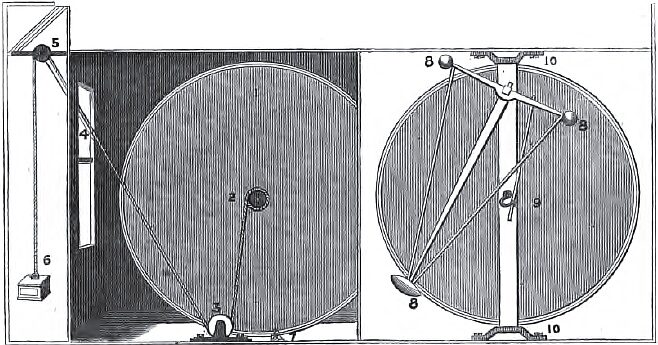
If anything, the attention from Leibniz only concentrated the criticism against Bessler. He set up his next wheel in Merseburg and invited a panel of local literati to perform a comprehensive review. The Merseburg wheel was 12 feet in diameter and capable of lifting up to 70 lbs. The account of its performance is the most comprehensive description we possess of the functioning of Bessler's wheel, including the speed of rotation and timing of loud noises from within.
The glory days
Whatever may be said of Johann Bessler's legitimacy, he was not in the game for money. It was not until Merseburg that he monetized his wheel by asking for donations to charity. Even then, he did not require viewers to buy tickets, despite the city's tax on his demonstrations. Years later, when someone actually offered him the £10,000 for his design, he pretended to be sick until they gave up.
In 1716, Prince Karl of Hesse-Kassel offered him patronage, so Bessler moved his household and built yet another wheel. He began promoting his invention in pamphlets. Finally, he faced his critics head-on when he enclosed his wheel in a windowless room and claimed it would still be running at the same speed a month later.
On Nov. 12, 1717, Prince Karl officially sealed the door. On Jan. 4, 1718, he and his attendants broke the seals. The wheel sat in the middle of the room, untroubled, revolving just as it had over a month before.

The Newtonian perspective
The majority of Bessler's supporters in the early years were Leibnizians. This was about to change. The first to arrive was Johann Fischer, who found himself grudgingly impressed.
"I [...] stopped the wheel with much difficulty...An attempt to stop it suddenly would raise a man from the ground," Fischer wrote to fellow Newtonian philosopher and engineer John Desaguiliers. "Having stopped it in this manner, it remained stationary; and (here, Sir, is the greatest proof of it being a Perpetual Motion) I restarted it very gently...I observed that the rapidity of the wheel augmented little by little...and then it regained its former speed."
Like all the others who had viewed the wheel, Fischer was at a loss to explain its motion. Shortly afterward, respected Dutch mathematician Willem 's Gravesande made his own trip to Kassel. (The 's prefix is a historical Flemish naming convention.)
In a letter to Isaac Newton, 's Gravesande wrote that he had inspected the axles upon which the wheel rested and was "firmly persuaded that nothing from without the wheel in the least contributes to its motion."
The wheel fascinated 's Gravesande. He could not explain it, and disliked Bessler himself deeply, but he would become his most ardent supporter.
Upon examining the axles without Bessler present, 's Gravesande certified in a report that no external mechanism supplied power. Bessler didn’t wait to find out the contents of the report. As soon as he learned that 's Gravesande had observed the wheel without him, he smashed it to bits. Next to the pieces, he wrote on the wall that it was ‘s Gravesande’s “impertinent curiosity” that had driven him to this.
'Cursed, damned, and lost'
By all accounts, Bessler was an unpleasant man. He was easily annoyed, prone to fits of rage, and disinclined to cooperate with others. If he was unpleasant as an associate, he must have been even worse as the man of the house. Perhaps this goes some way to explain why first his wife and then his maid, Anne Rosine Mauersbergerin, tried to convince the world that his wheel was a fraud.
In an official testimony in 1727, Mauersbergerin claimed she and others had turned the wheel via a crank from an adjacent room. Bessler, she said, had threatened to shoot her if she came clean.
To support her account, she provided an oath that Bessler had forced her to sign. It makes no mention of exactly what Mauersbergerin was supposed to conceal, but by signing it she swore that she would be "cursed, damned and lost before God and men, before temporal and eternal judgment, for the present time and for all eternity" if she ever discussed Bessler's affairs or spoke ill of him.

What goes up...
Some of the greatest physicists of the time had inspected Bessler's axles and come away certain that nothing in them drove the rotation of the wheel. Perhaps Mauersbergerin, uncertain of the true nature of the fraud, threw an easily understandable accusation at an abusive employer. Or perhaps Bessler had successfully disguised a mechanism in plain view.
If the wheel had been turned from an adjacent room, how was the motion so steady? How were weights of up to 70 lbs lifted? How had no one noticed the crank setup for the entire duration of the closed-room experiment? Was it the wheel itself that the crank turned or some mechanism within it that stored energy? Or was the nature of the fraud something else entirely?
The historical record is scarce, but it appears that many important scientists believed Mauersbergerin's testimony. They shuffled Bessler out of view and ceased supporting his work, doing their best to ignore their own roles in his career.
The exception was 's Gravesande, who stood up for Bessler in face of changing public opinion. Bessler, disgraced and disregarded, turned from perpetual motion to another topical issue in 18th-century Germany: religion. In the early 1830s, he founded his own Church of Orffyreus. The authorities at Kassel promptly threw him in jail for heresy.
By the time he was released, his wife had left him. He retreated to his estate, where he pitched new contraptions to no avail and took mundane engineering jobs to pay the bills. In 1745, he began constructing a novel windmill that could turn no matter which way the wind blew. On Nov. 12, 1745, he fell to his death.
The believers
Exactly how Bessler so convincingly faked perpetual motion remains a mystery. The internet abounds with forums and personal websites devoted to uncritically perusing Bessler's work. Even the author of the most well-researched book on Bessler believes in the truth of what he peddled. Those willing to dismiss the Second Law of Thermodynamics can find many potential designs for Bessler's wheels, all based on his assertion that he had harnessed gravity.

The disbelievers
But for once, the skeptics have mystique on their side. If Bessler did not discover gravity-based perpetual motion, whatever he did was an unmatched feat of deceptive engineering. It's possible he used clockwork, and the sound of falling weights was a distraction from the true mechanism of rotation. The weights certainly played into his audiences' expectations of gravity.
Then there's the account of Anne Rosine Mauersbergerin and the crank. The crank might have wound a clockwork mechanism to store and release energy, or it might not have existed at all. But all we can say with confidence is that Bessler's wheels depended on sleight-of-hand techniques coupled with an approximation of perpetual motion that, to this day, no one has recreated.
One skeptic devoted to analyzing Bessler's work is Donald Simanek, a professor emeritus of Physics at Lock Haven University in Pennsylvania. Simanek has spent years carefully profiling and debunking physics misconceptions and hoaxes. Yet even he doesn't know how to explain Bessler's con.
"He must have had some way of re-energizing [the wheel] every time he changed the weights," Simanek says. "But I don't think we'll ever know."

In 1953, two CalTech astrophysicists with a side passion for archaeology drove a
battered Jeep across the northern Arizona desert to the top of White Mesa, a historic Pueblo settlement now located in the Navajo Nation. White Mesa sits like a slab of Australia that someone dropped by accident into the American Southwest. Tourists rarely climb the plateau itself, which was last inhabited around the 11th century. Instead, they make the less hazardous pilgrimage to White Mesa Arch, a teacup-handle jut of rock on the side of the mesa that makes for spectacular photo shoots.
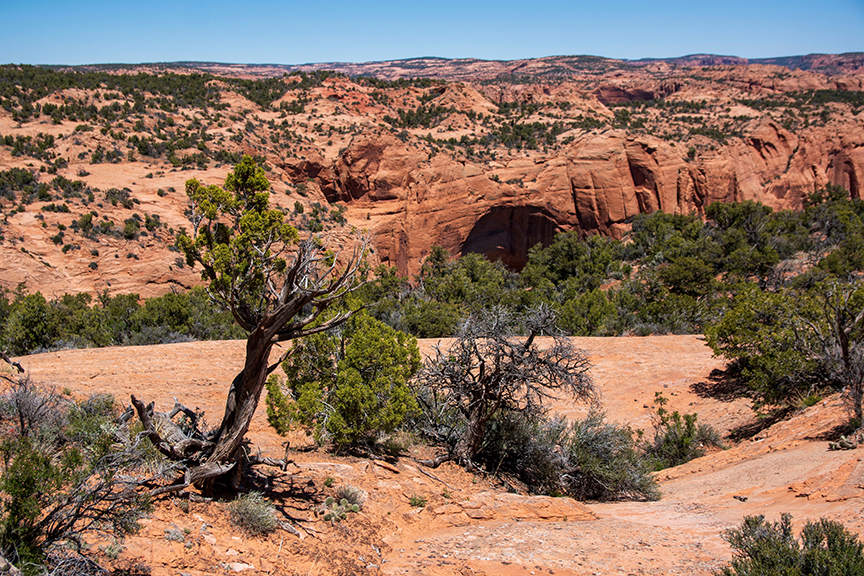
But after pushing their exhausted vehicle up the flaky terrain to the top of the plateau, Bill Miller and Helmut Abt discovered an un-excavated trove of late medieval Pueblo artifacts. Over three weeks of trudging from dig site to Jeep and back again, the two found hundreds of pictographs, petroglyphs, and clay fragments. Most were of archaeological interest, but with little to add to the existing body of knowledge on the late medieval Pueblo.
Mystery object next to a crescent moon
Save one. Miller and Abt, who had not expected their profession to come calling, stared in wonder. Painted on the rock at the back of a deep cave, the pictograph depicted a circle abutting a crescent. The crescent, agreed the two astronomers, clearly represented the new moon. The object next to it must have been something very large or bright in the sky. But what was it?

Fascinated, he and Abt set out again one year later, this time with a grant from the
Museum of Northern Arizona and a guide from the Navajo Nation. He and Abt found a second example of astronomical rock art in Binne Etteni Canyon about 16km north of White Mesa. The photo Miller took shows another large circle next to a crescent, each carved into the stone itself.
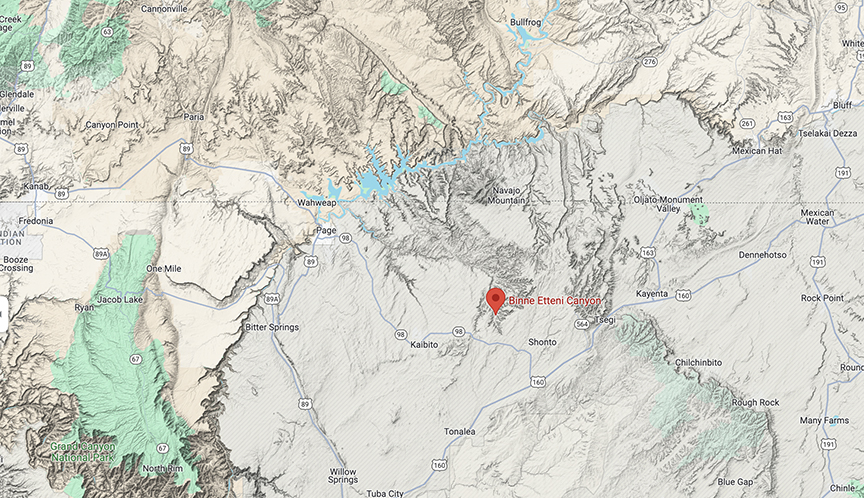
What had the medieval Pueblo seen in the sky that moved them to paint and carve images of it in the stones? Miller thought he knew: a supernova. When massive stars run out of fuel, their outer layers collapse under the force of their own gravity and rebound off the hard iron core, creating a sudden explosion of matter and light visible from galaxies away.
The supernova of 1054
The late Medieval period saw a striking concentration of nearby supernovas, but Miller had one candidate in particular. The supernova of 1054— known as SN 1054— was so bright that Chinese records describe it as being visible during the day for three weeks. Its remains became the Crab Nebula, an orange-green nest of matter clawing into empty space, and one of the most popular objects for amateur astronomy observations.
It’s easy to understand why Miller’s hypothesis was a powerful one. There’s an emotional appeal in the thought that 11th-century artists successfully communicated through the millennia that they witnessed the creation of a nebula we still marvel at today. His theory gained traction in the ensuing decades, as researchers identified dozens of similar astronomical petroglyphs and pictographs across the Southwest, in sites from California to Texas and Utah to Mexico.
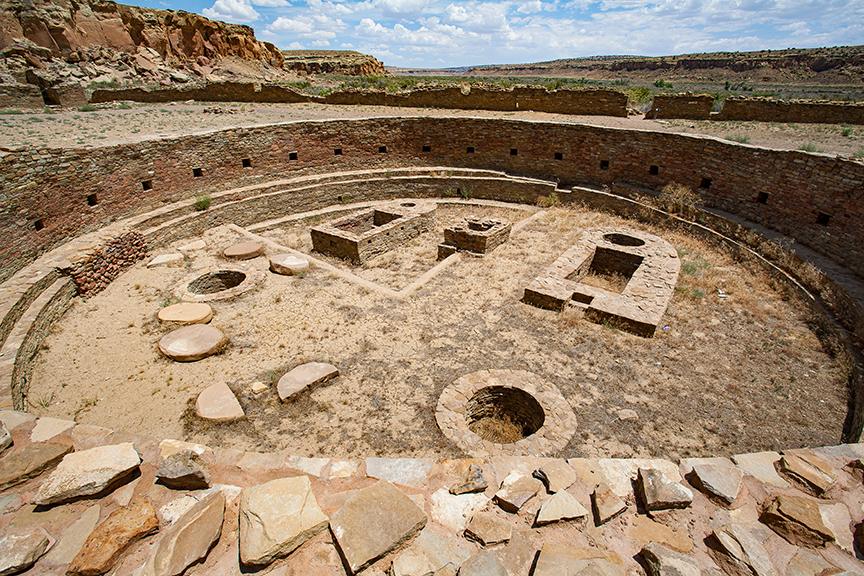
The most famous -– a pictograph at Chaco Canyon in New Mexico –- shows a hand, the moon, and a circular object bursting with rays. Today the supernova theory is widespread, enduring on placards at sites, on official tourism websites, and in college astronomy classes.
But do the so-called supernova renditions really depict SN 1054?
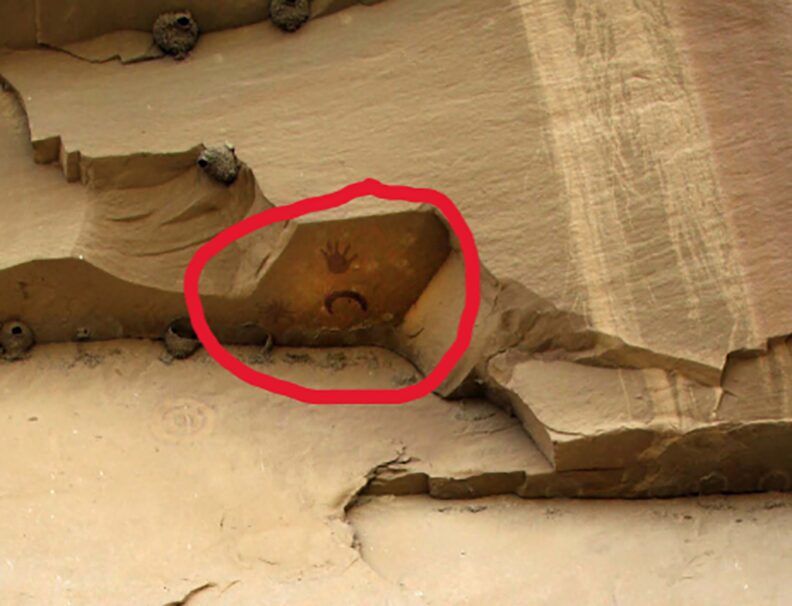
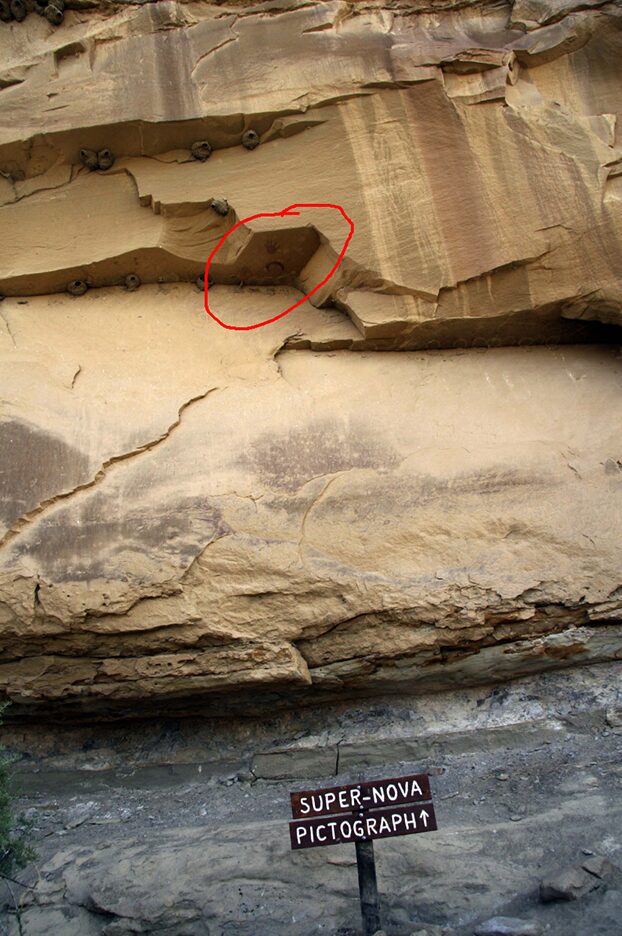
The supernova theory criticized
Even as Japanese and Abbasid records of SN 1054 came to light in the late 20th century, scholars in both astronomy and archaeology began doubting the idea that these pieces of rock art all represented SN 1054.
By the 2010s, just about every supernova rock art candidate had been considered and dismissed, some multiple times, for many different reasons. The supernova would not have been visible from the location of Miller’s original White Mesa pictograph, for instance. Also, his photograph of the Binne Etteni petroglyph was cropped to exclude two circles that didn’t fit with the supernova explanation. Carbon dating at many other sites doesn’t align with the year of the explosion.
These rational rebuttals leave a substantial hole in American archaeoastronomy. Though some scholars of the Pueblo have argued that the Chaco Canyon pictograph is more likely to be Venus or a sun shrine than SN 1054, most astronomical rock art pieces-– if stripped of their supernova status -– don’t enjoy alternative theories that might help us meaningfully recast them in ways that speak to contemporary audiences. It can seem that disbelieving the supernova theory means letting go of a throughline to humans who lived a thousand years ago.
But just because modern viewers don’t know exactly what a piece of astronomical rock art represents doesn’t mean it loses its relevance for the skies above us today. Whether the pictograph at Chaco Canyon is SN 1054 or Venus or a Sun shrine, it depicts something that is still part of our world, as do all the other illustrations. These petroglyphs show that the world around us was, to people a thousand years ago, worth carving into stone.